The document discusses binary search trees (BST) as a crucial data structure for dynamic sets, covering their properties, basic operations, and methods for insertion, deletion, and traversal. It explains how to perform various operations such as searching for minimum and maximum values, determining successors and predecessors, and using both recursive and iterative approaches for tree searches. Additionally, the document addresses sorting using BSTs and compares their performance to quicksort.
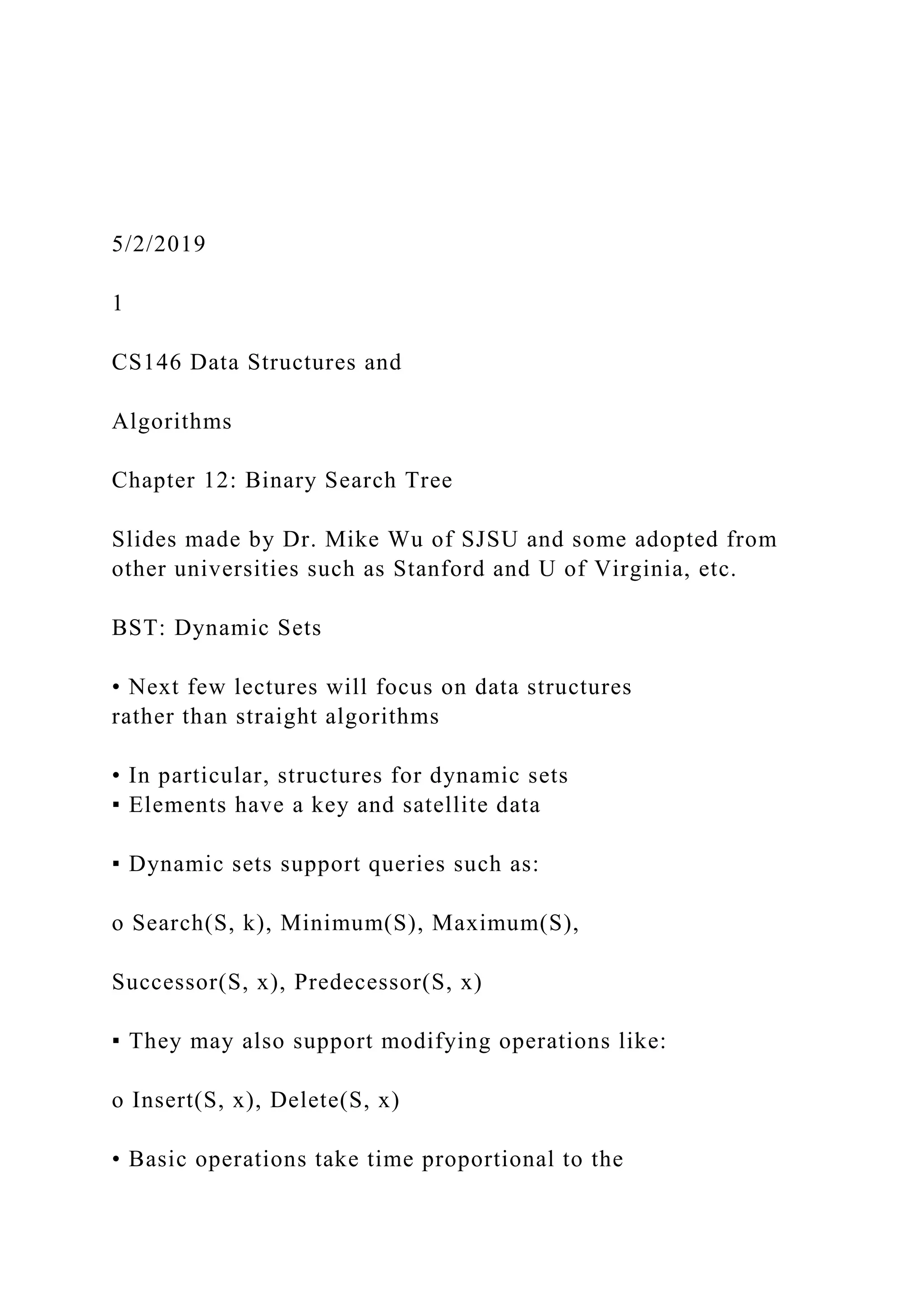






![L12.11
How to finding Min & Max
Tree-Minimum(x) Tree-Maximum(x)
2. x = x.left 2. x = x.right
3. return x 3. return x
Q: How long do they take?
-search-tree property guarantees that:
» The minimum is located at the left-most node.
» The maximum is located at the right-most node.
L12.12
5/2/2019
4
Successor and Predecessor
• Successor of node x is the node y such that key[y] is the
smallest key greater than key[x].
• The successor of the largest key is NIL.
• Search consists of two cases.](https://image.slidesharecdn.com/5220191cs146datastructuresandalgorithmsc-221201210134-446698d9/75/5220191CS146-Data-Structures-and-AlgorithmsC-docx-8-2048.jpg)









![Exercise: Sorting Using BSTs
BSTSort (A)
to n
do Tree-Insert(A[i])
Inorder-Tree-Walk(root)
▪ What are the worst case and best case running
times?
▪ In practice, how would this compare to other
sorting algorithms?
L12.21
Sorting With Binary Search Trees
• Informal code for sorting array A of length n:
BSTSort(A)
for i=1 to n
TreeInsert(A[i]);
InorderTreeWalk(root);
• What will be the running time in the
▪ Worst case?
▪ Average case? (hint: remind you of anything?)](https://image.slidesharecdn.com/5220191cs146datastructuresandalgorithmsc-221201210134-446698d9/75/5220191CS146-Data-Structures-and-AlgorithmsC-docx-18-2048.jpg)
![L12.22
Sorting With BSTs
• Average case analysis
▪ It’s a form of quicksort!
for i=1 to n
TreeInsert(A[i]);
InorderTreeWalk(root);
3 1 8 2 6 7 5
5 7
1 2 8 6 7 5
2 6 7 5
3
1 8
2 6
5 7
L12.23
Sorting with BSTs
• Same partitions are done as with quicksort, but
in a different order](https://image.slidesharecdn.com/5220191cs146datastructuresandalgorithmsc-221201210134-446698d9/75/5220191CS146-Data-Structures-and-AlgorithmsC-docx-19-2048.jpg)




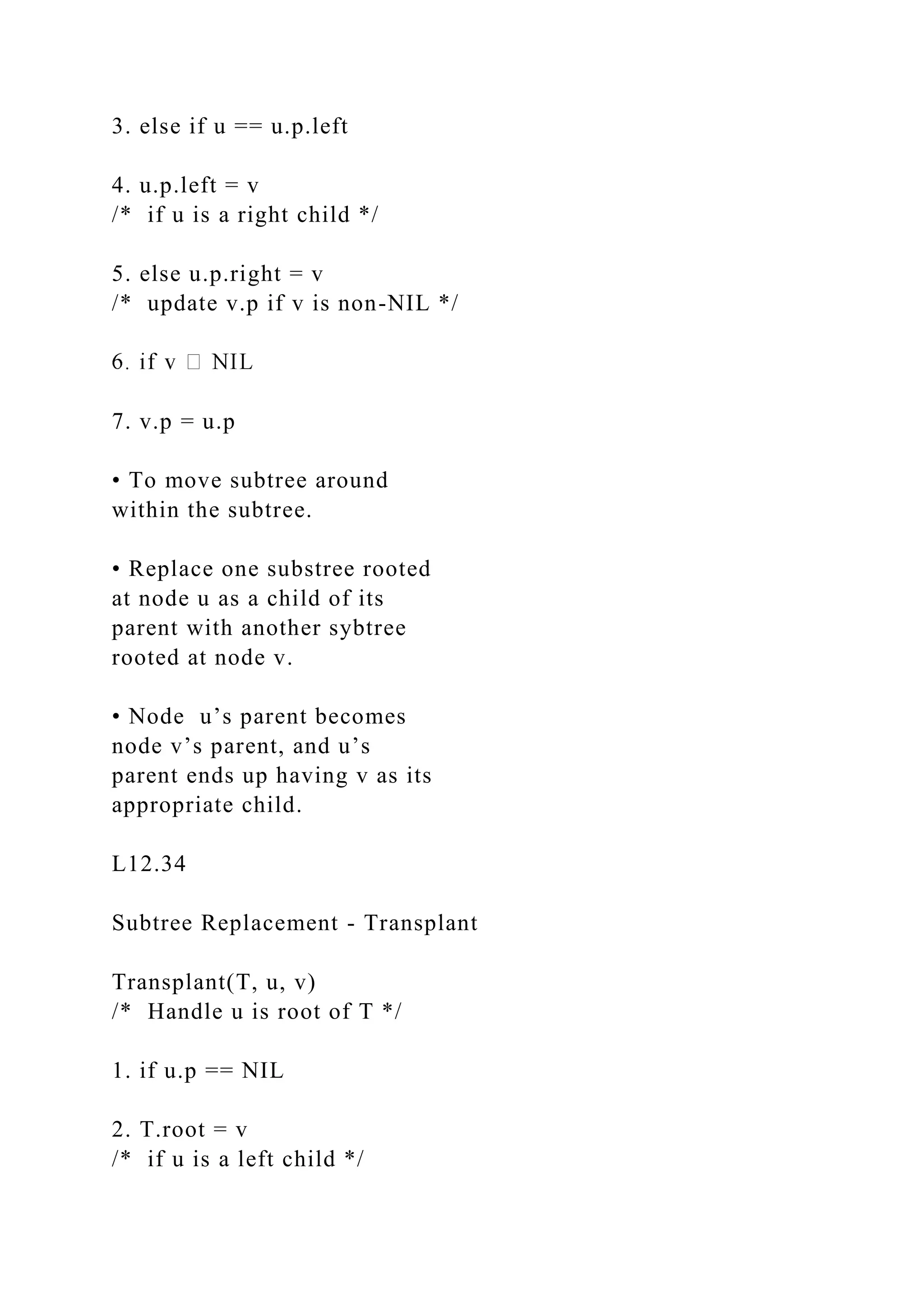


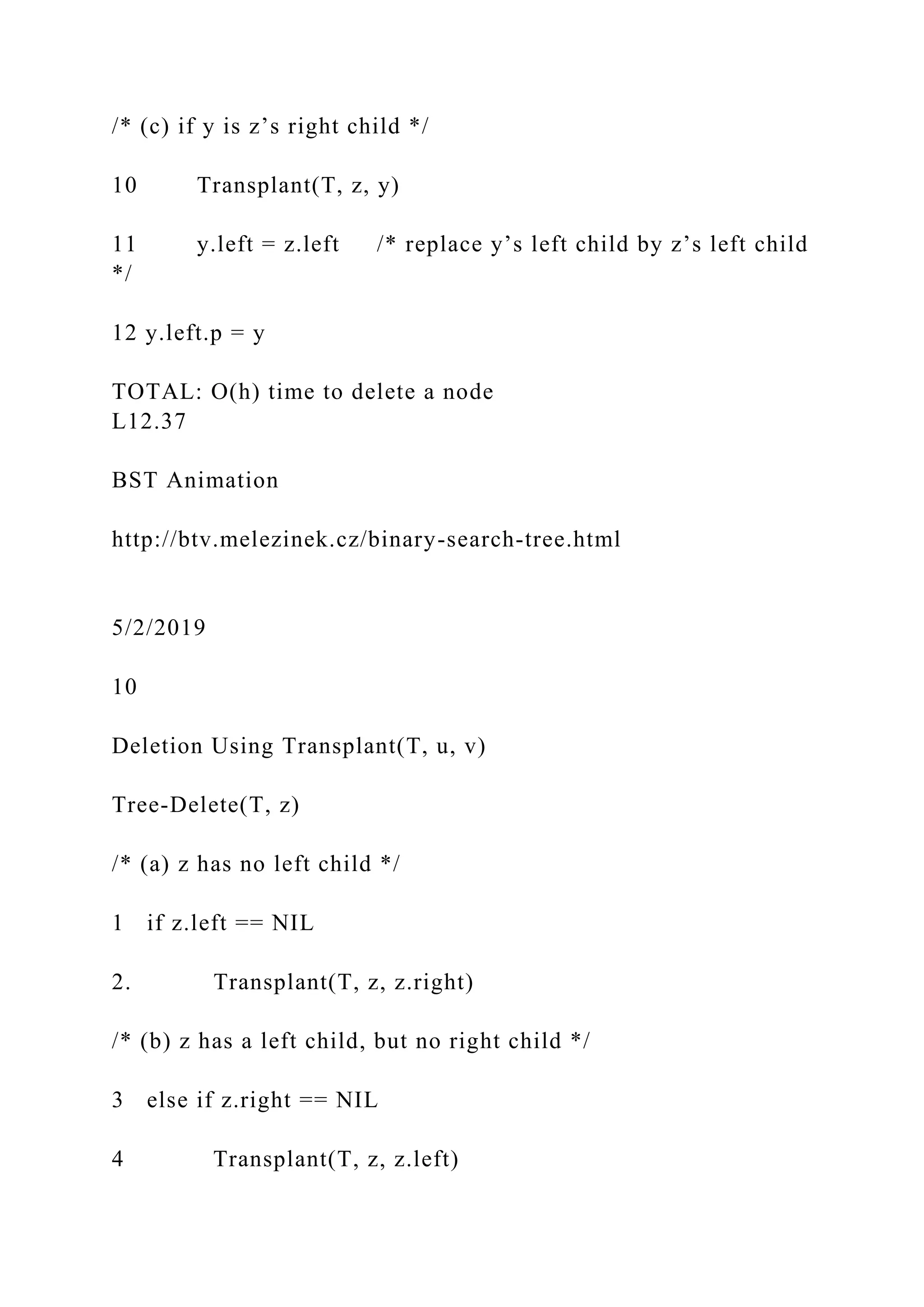



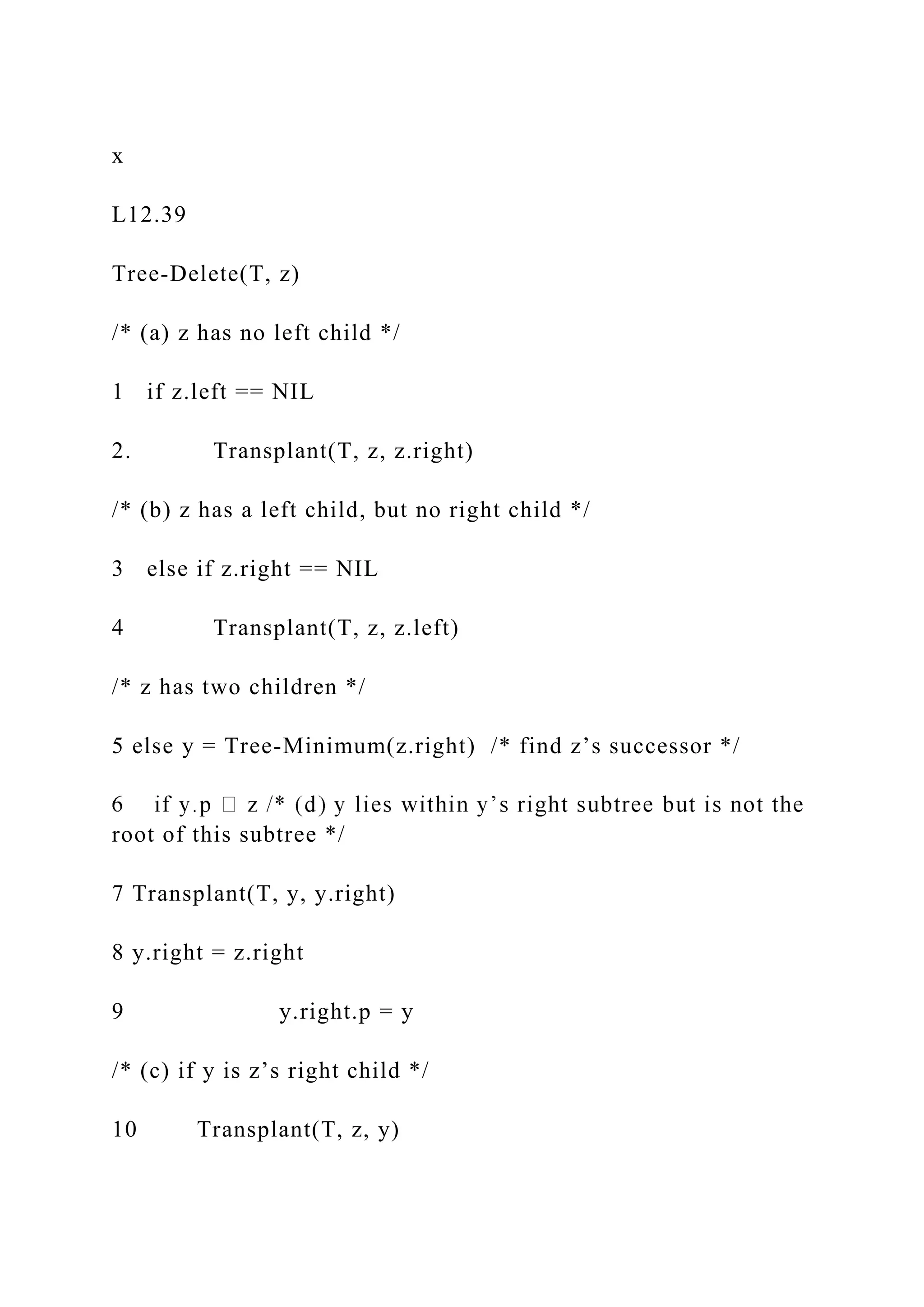

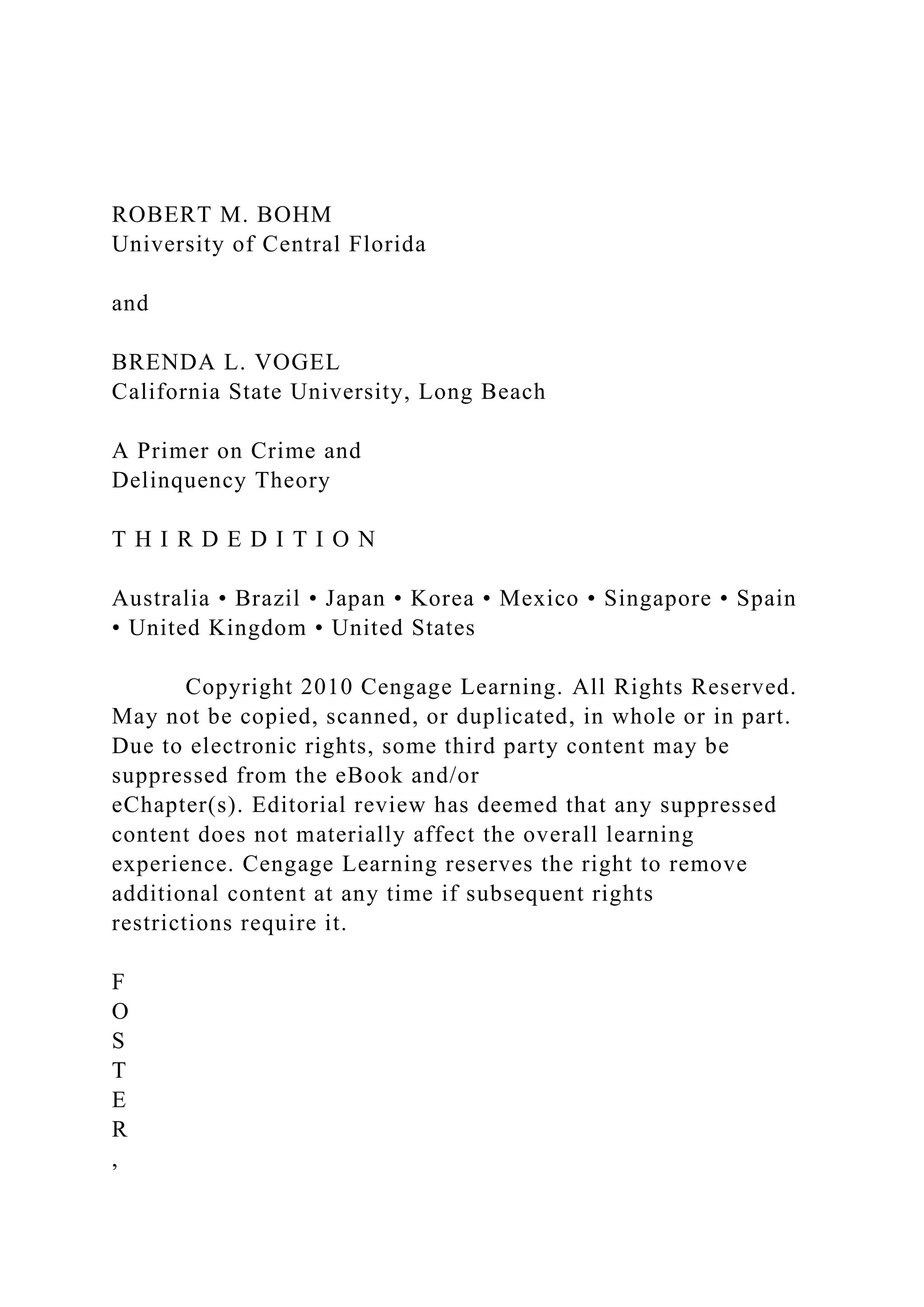

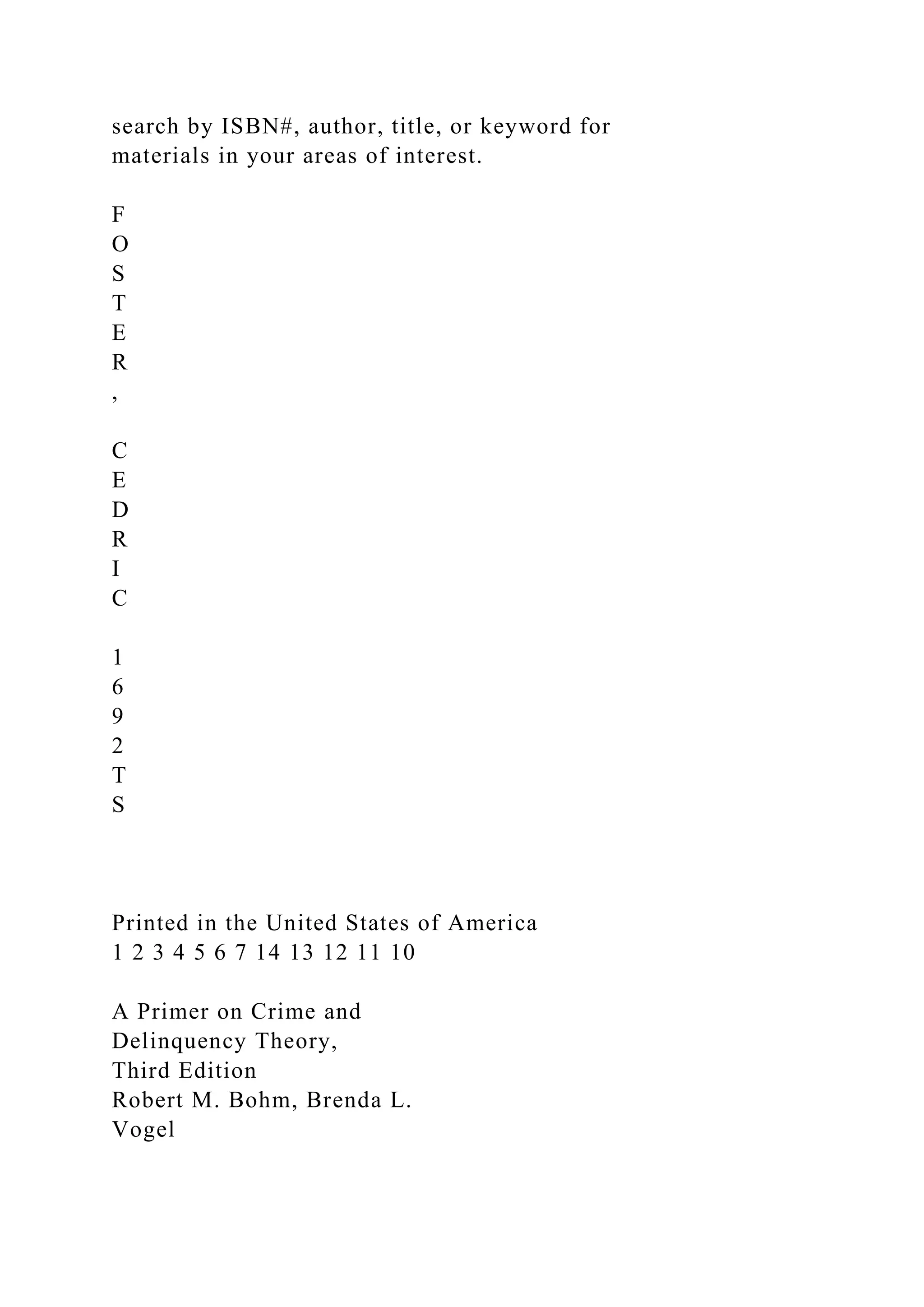

![ALL RIGHTS RESERVED. No part of this work covered by the
copyright herein may be reproduced, transmitted, stored or used
in
any form or by any means graphic, electronic, or mechanical,
including but not limited to photocopying, recording, scanning,
digitizing, taping, Web distribution, information networks, or
information storage and retrieval systems, except as permitted
under Section 107 or 108 of the 1976 United States Copyright
Act,
without the prior written permission of the publisher.
For product information and
technology assistance, contact us at Cengage Learning
Customer & Sales Support, 1-800-354-9706
For permission to use material from this text or product,
submit all requests online at cengage.com/permissions
Further permissions questions can be emailed to
[email protected]
Library of Congress Control Number: 2010926703
ISBN-13: 978-0-495-80750-6
ISBN-10: 0-495-80750-8
Wadsworth
20 Davis Drive
Belmont, CA 94002-3098
USA
Cengage Learning is a leading provider of customized learning
solutions with office locations around the globe, including
Singapore, the United Kingdom, Australia, Mexico, Brazil, and
Japan. Locate your local office at www.cengage.com/global](https://image.slidesharecdn.com/5220191cs146datastructuresandalgorithmsc-221201210134-446698d9/75/5220191CS146-Data-Structures-and-AlgorithmsC-docx-37-2048.jpg)

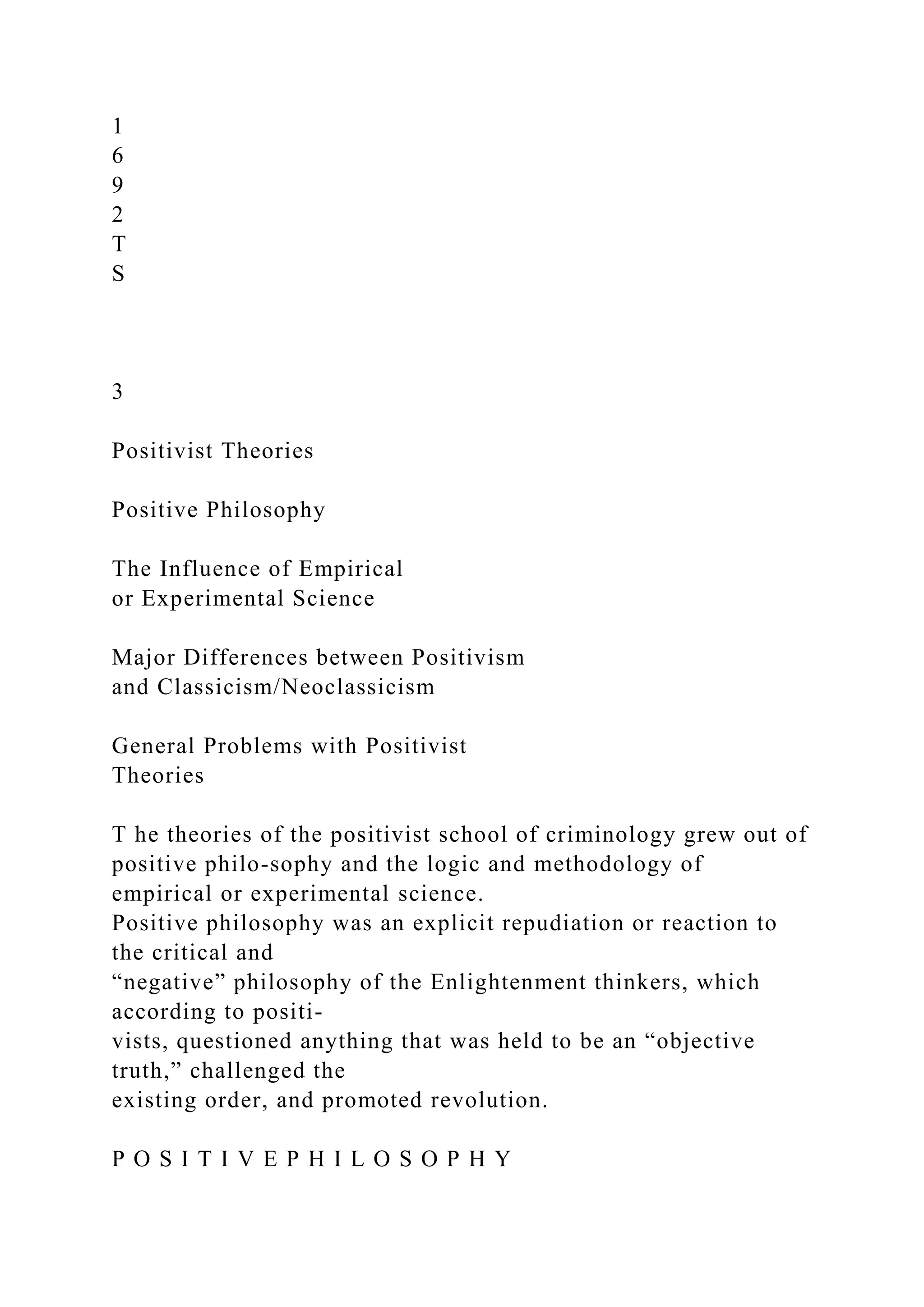


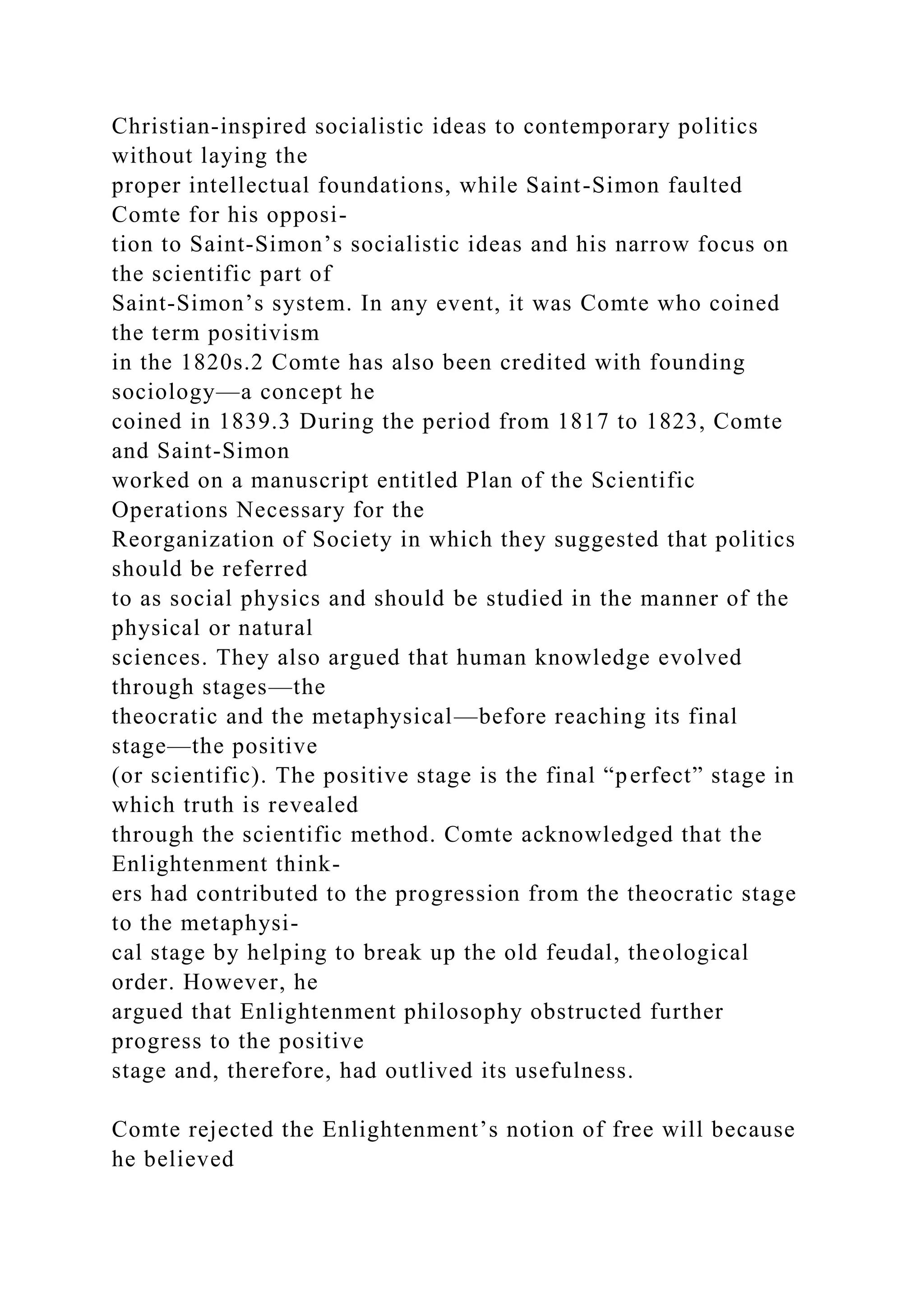
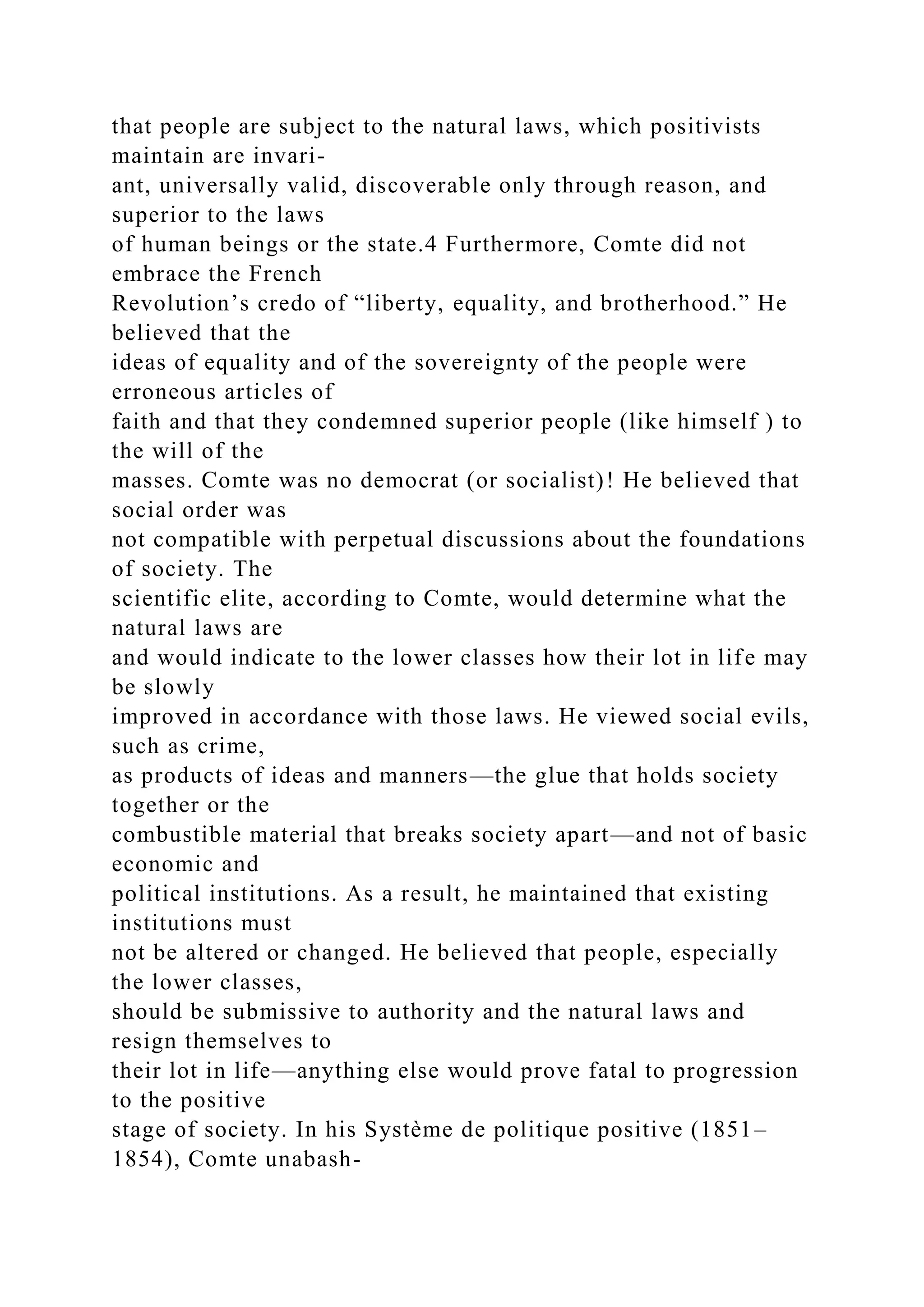
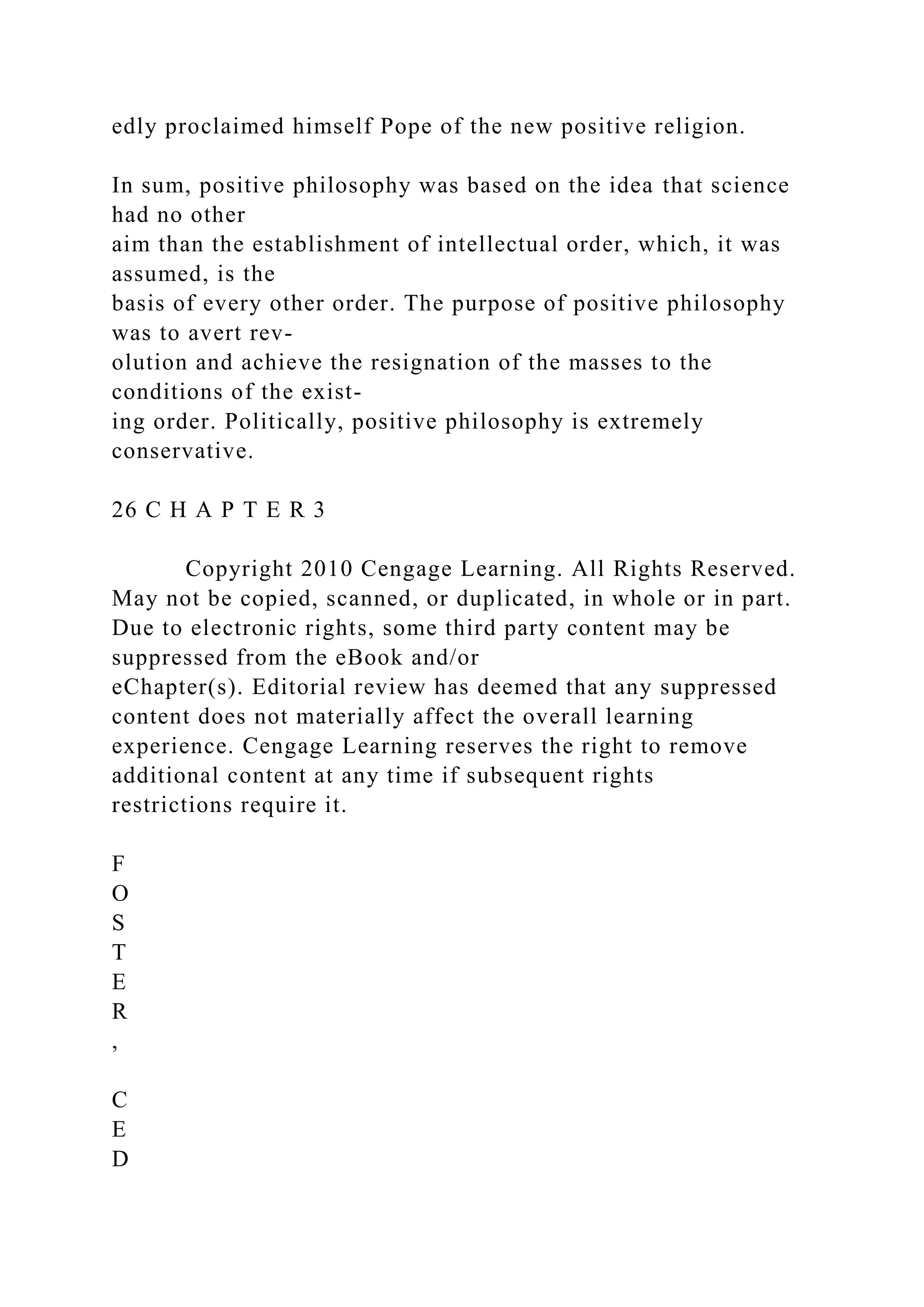
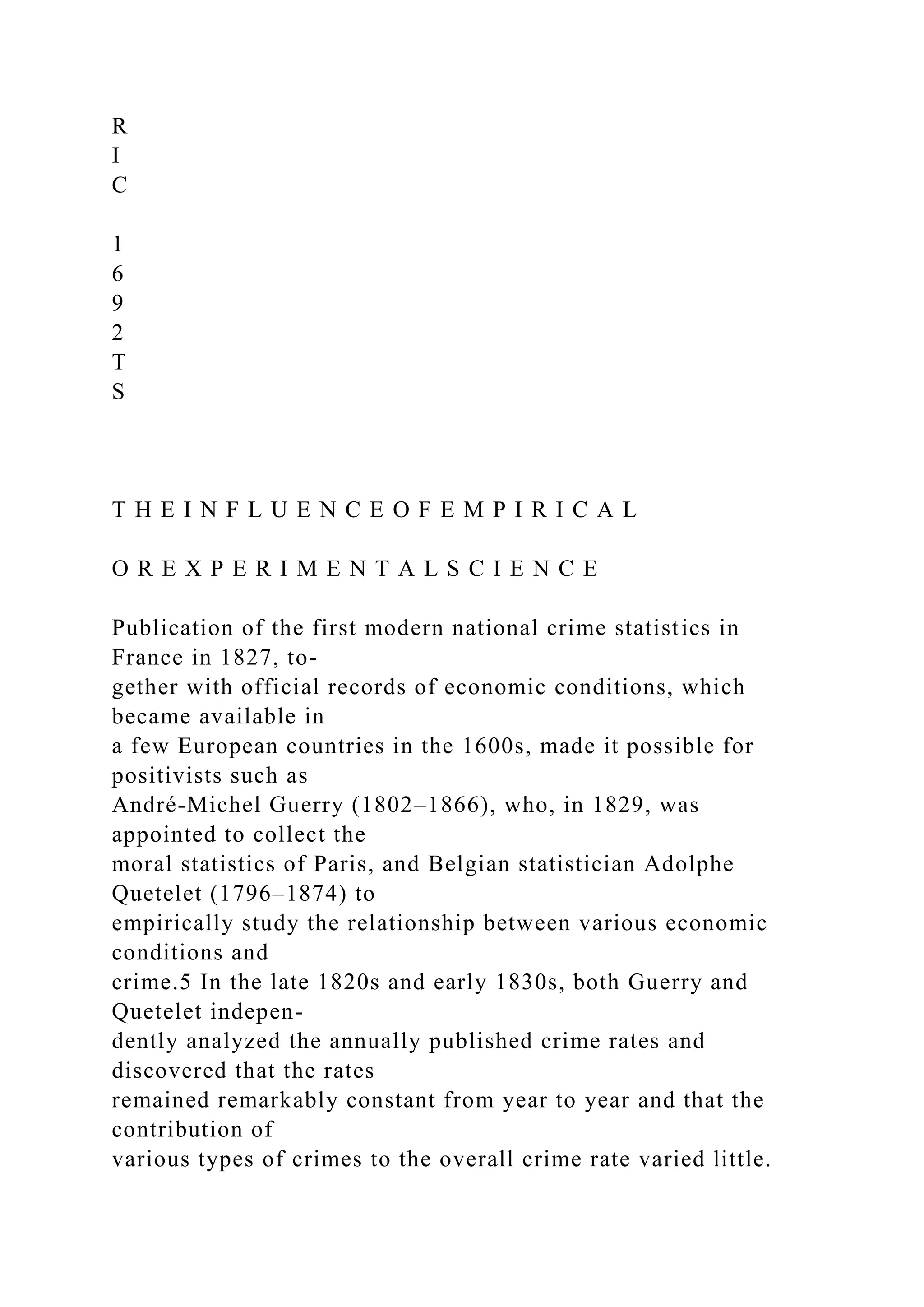
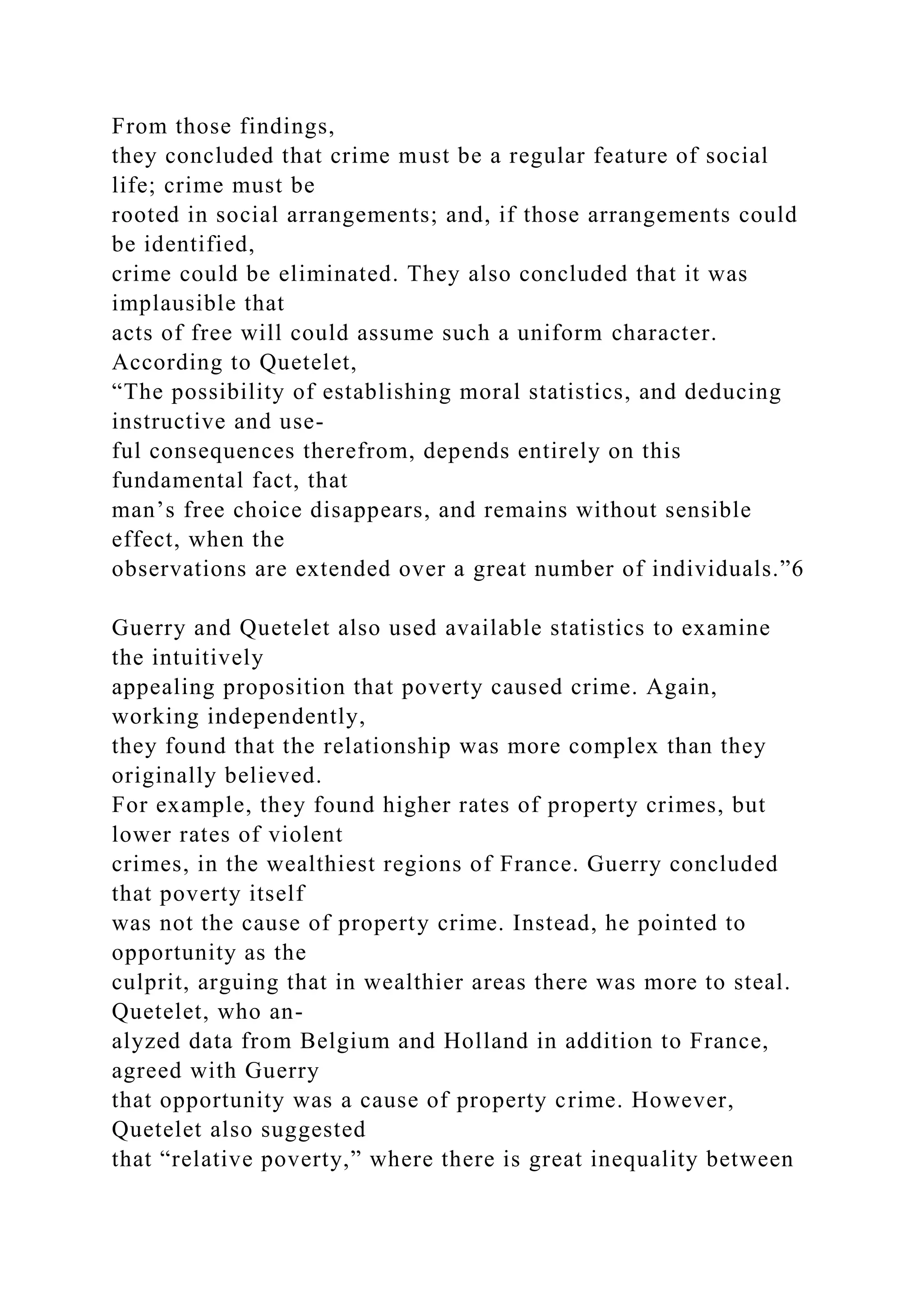
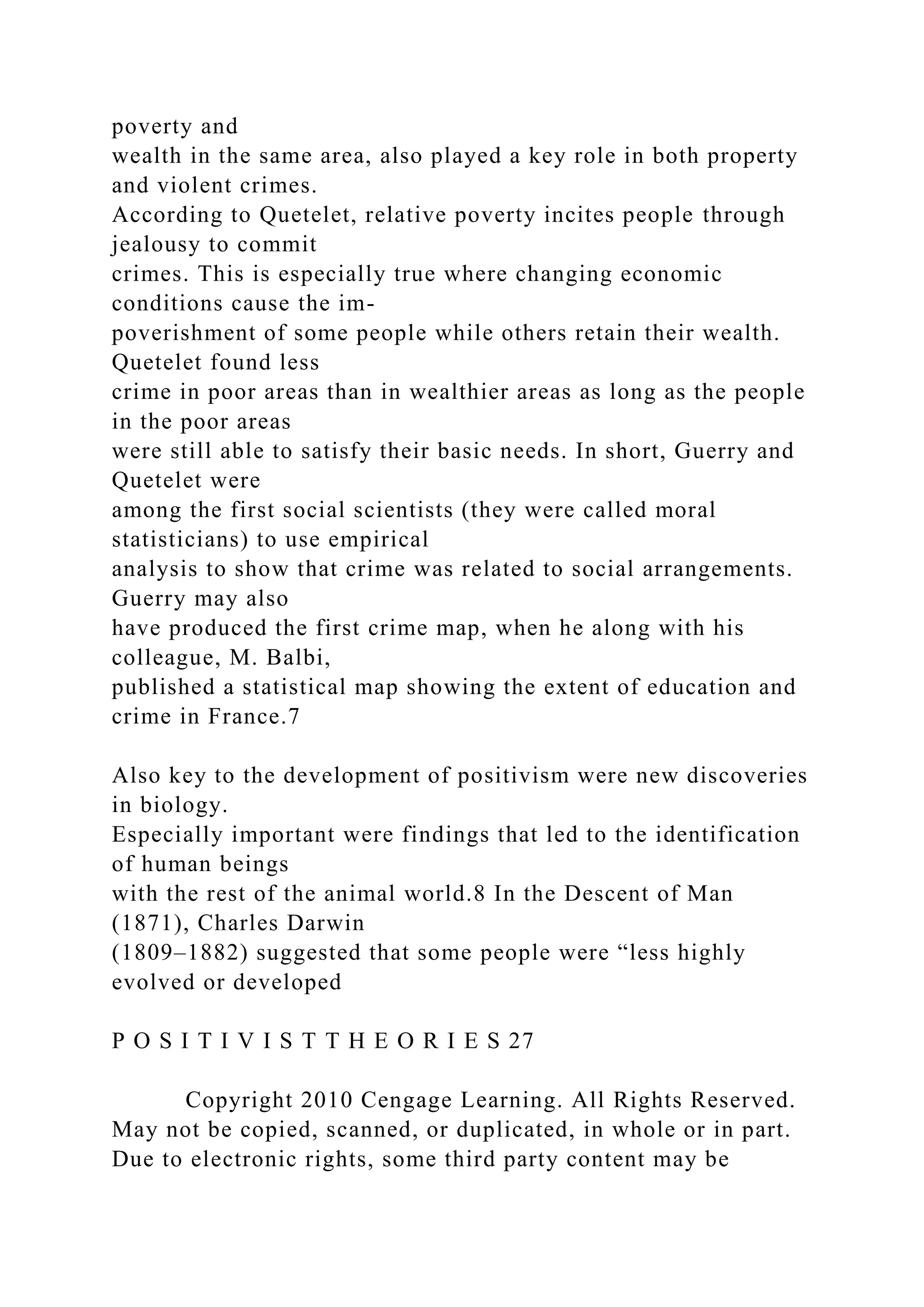

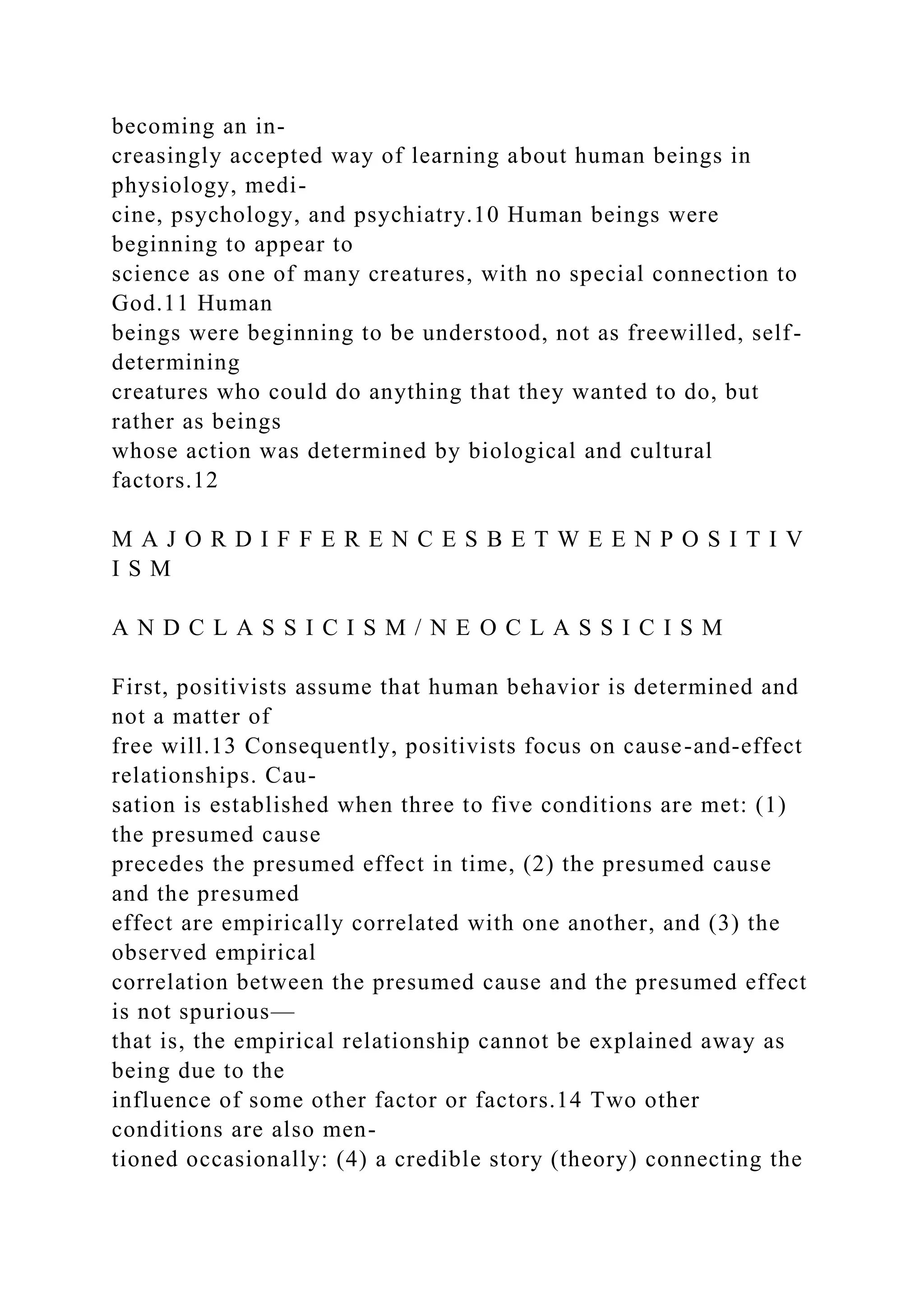
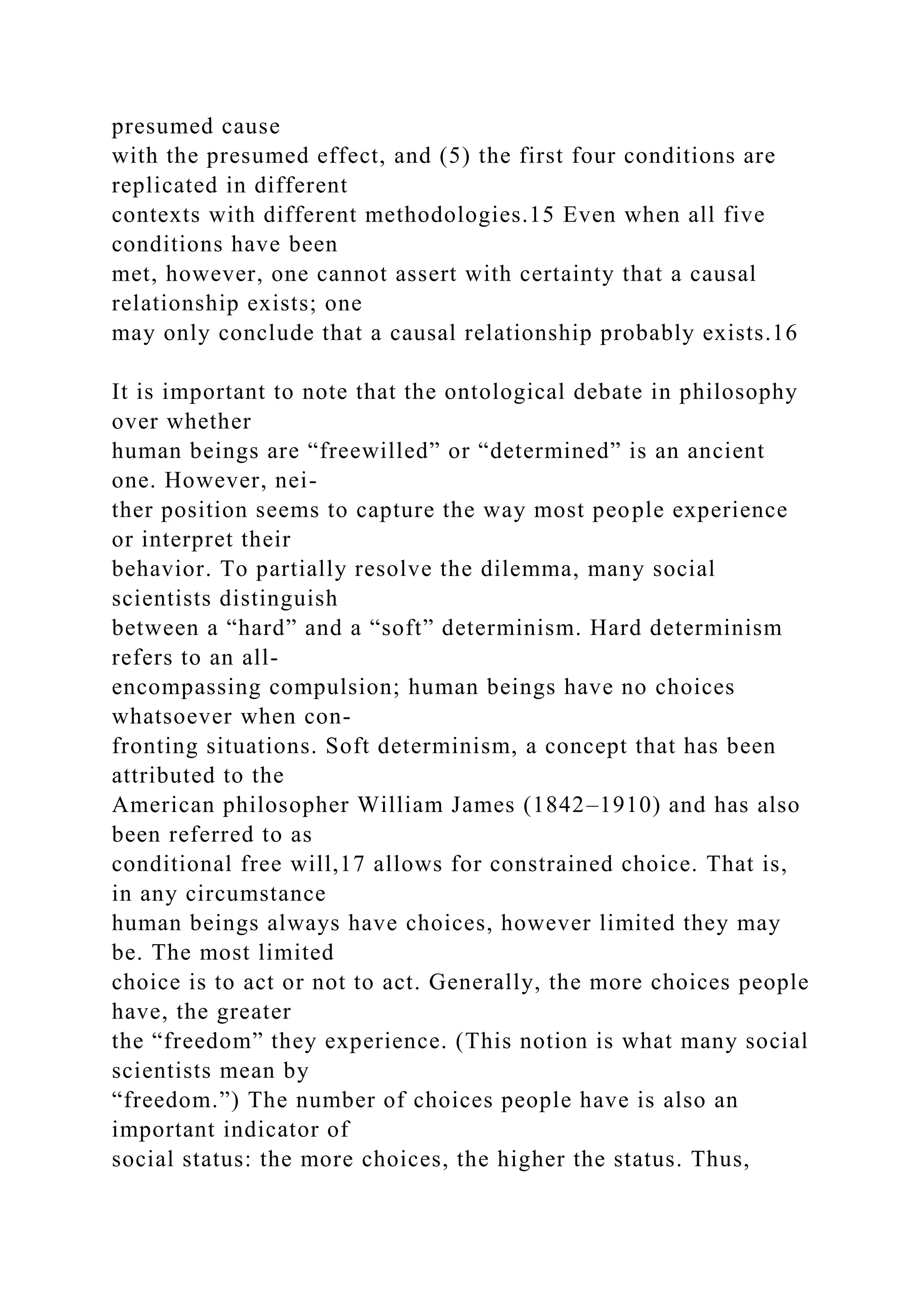
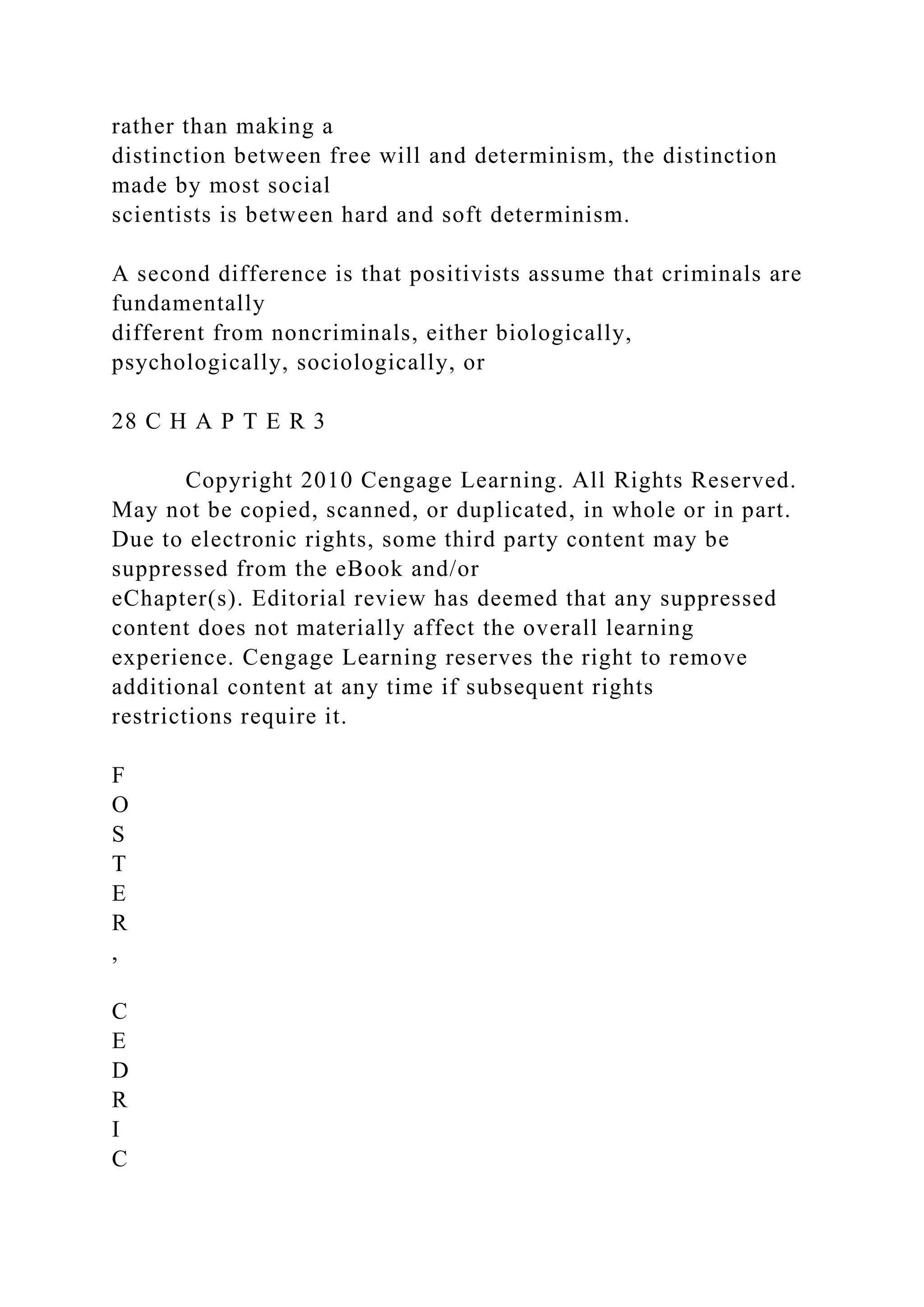
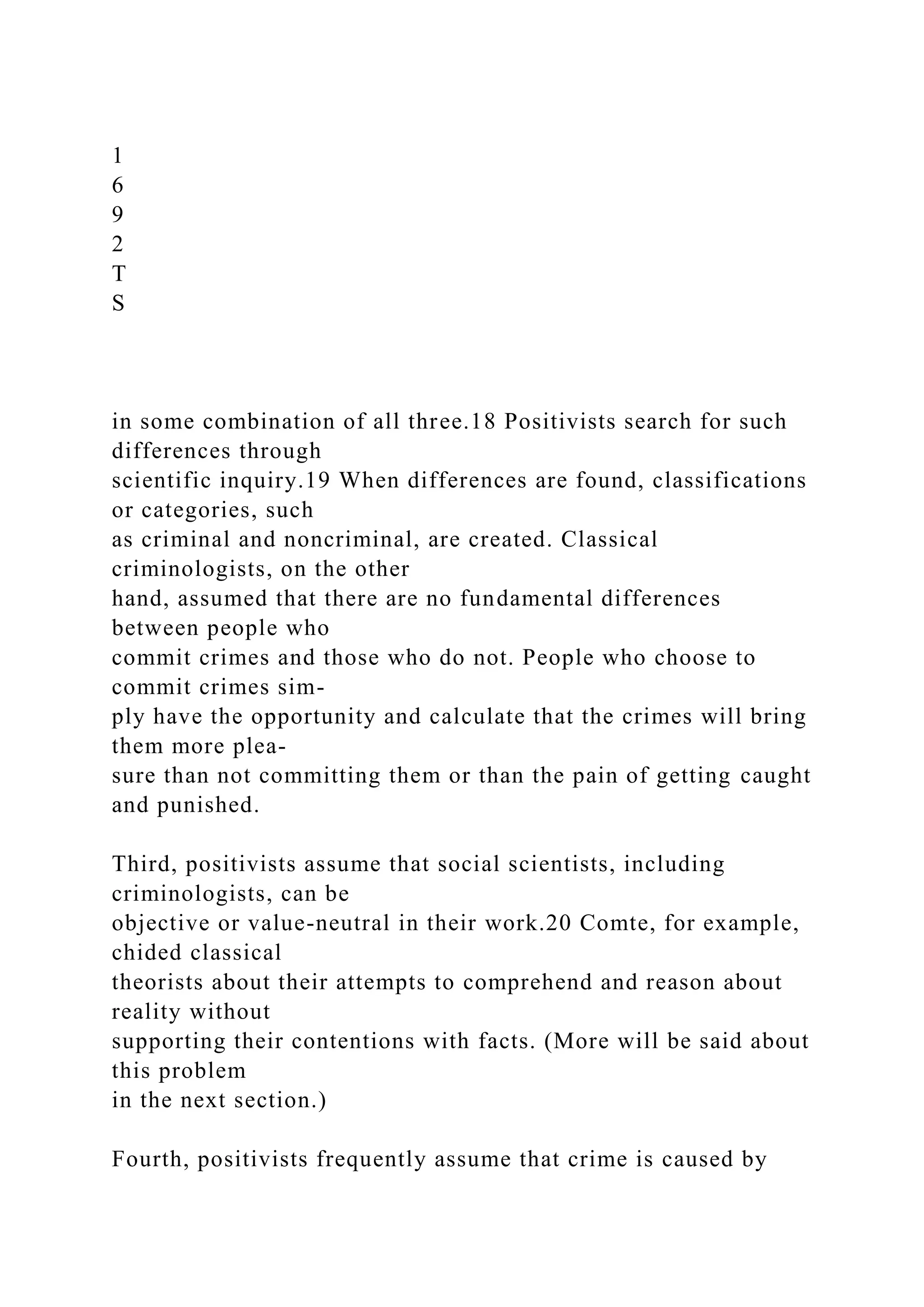


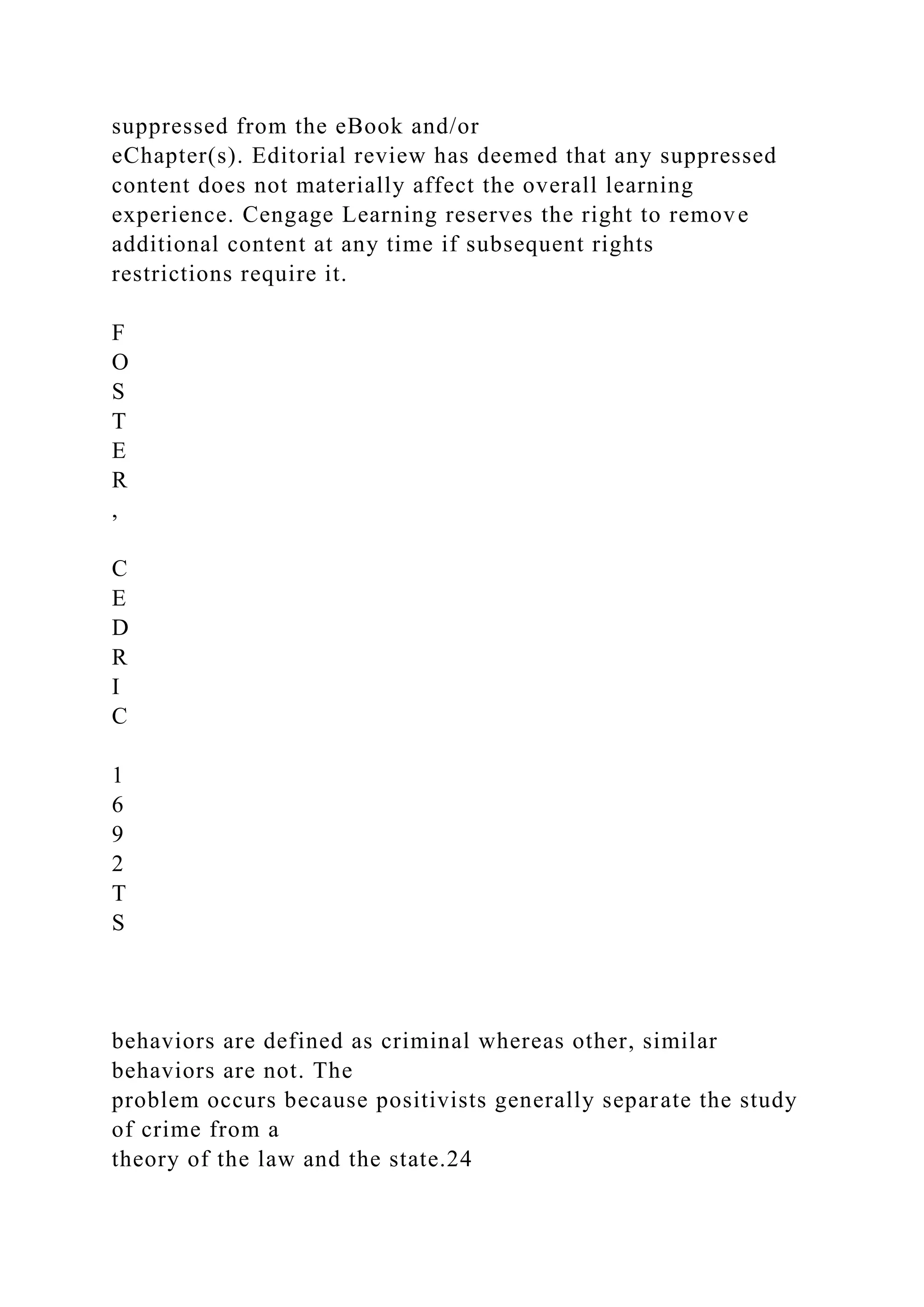


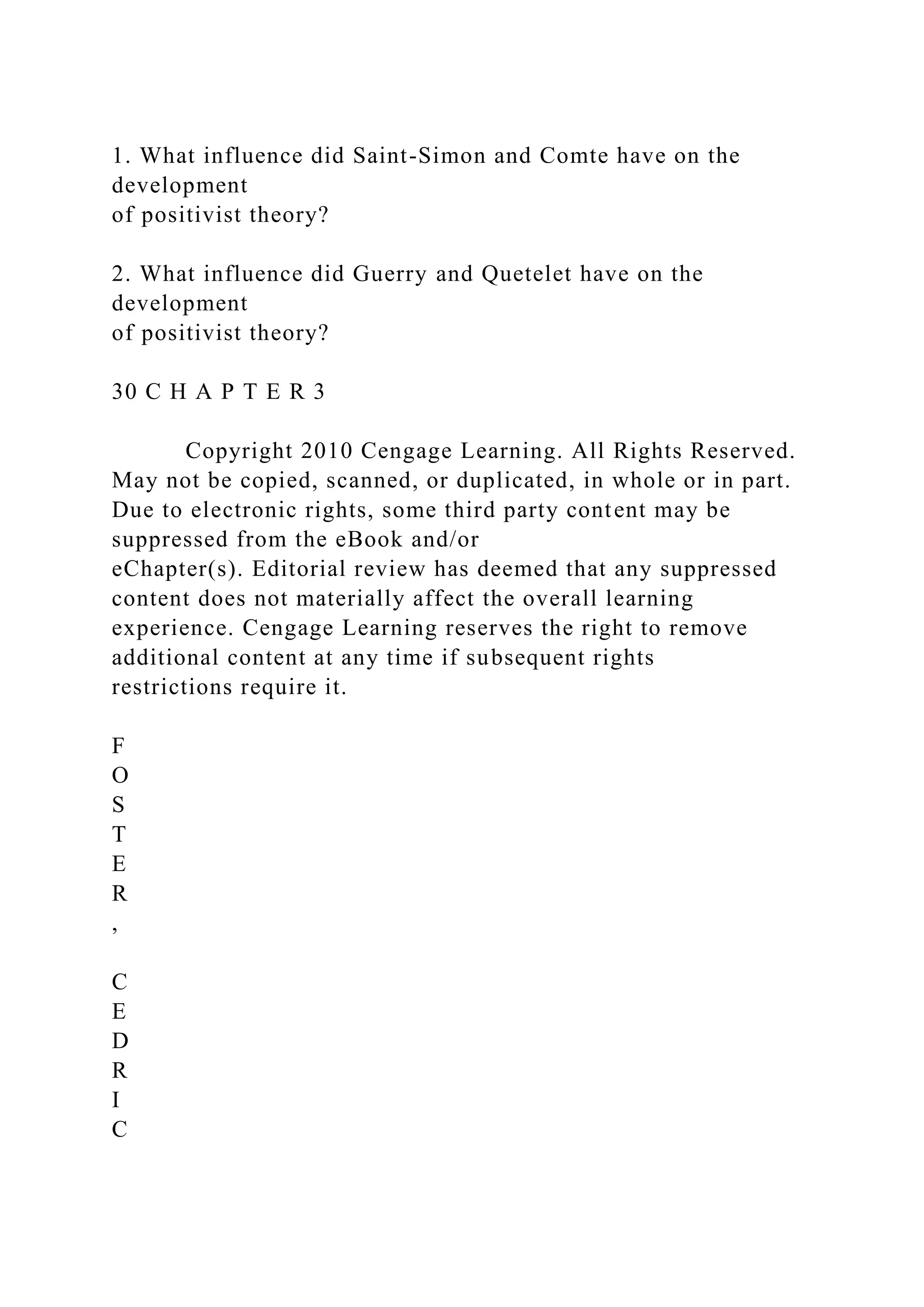
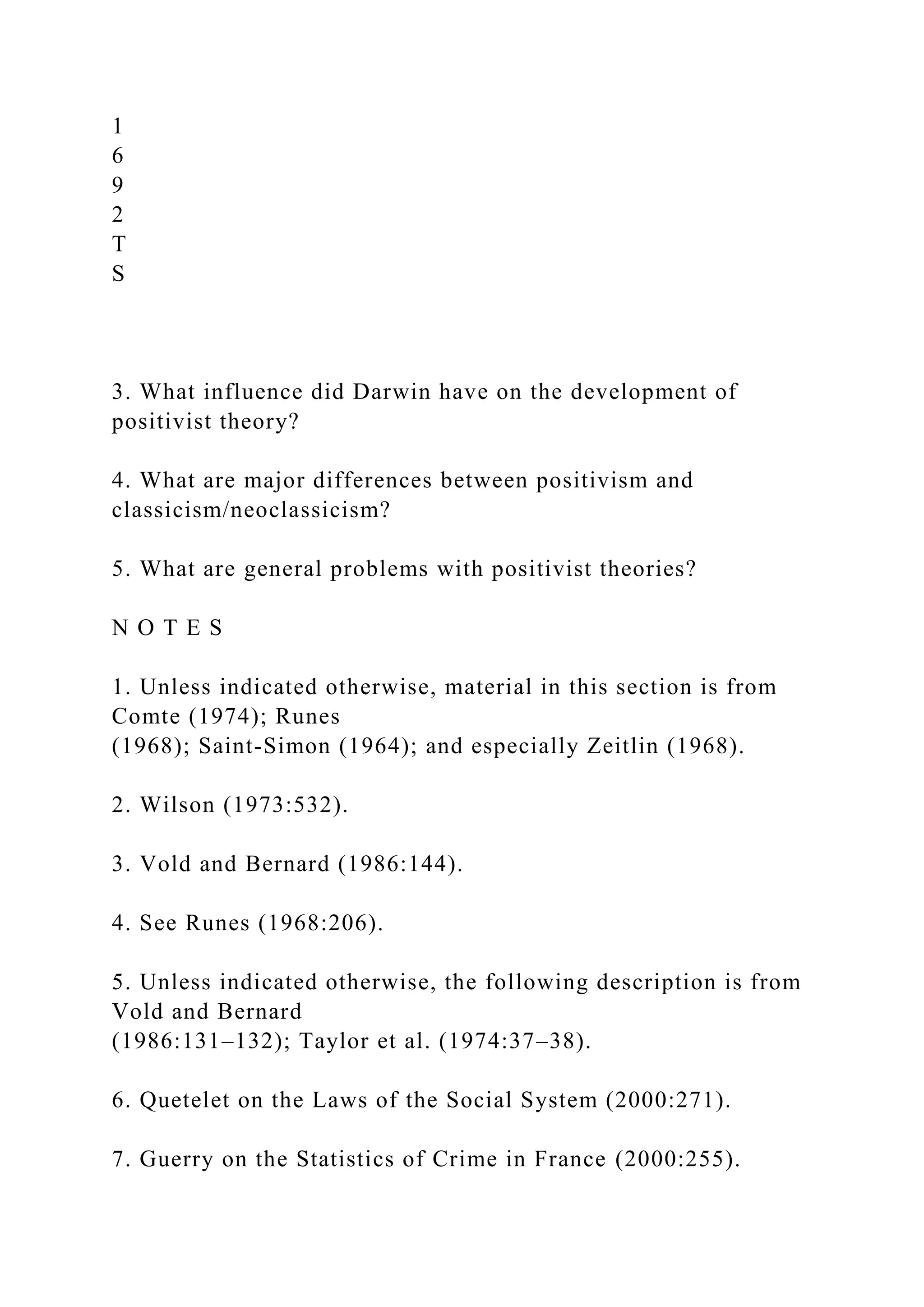
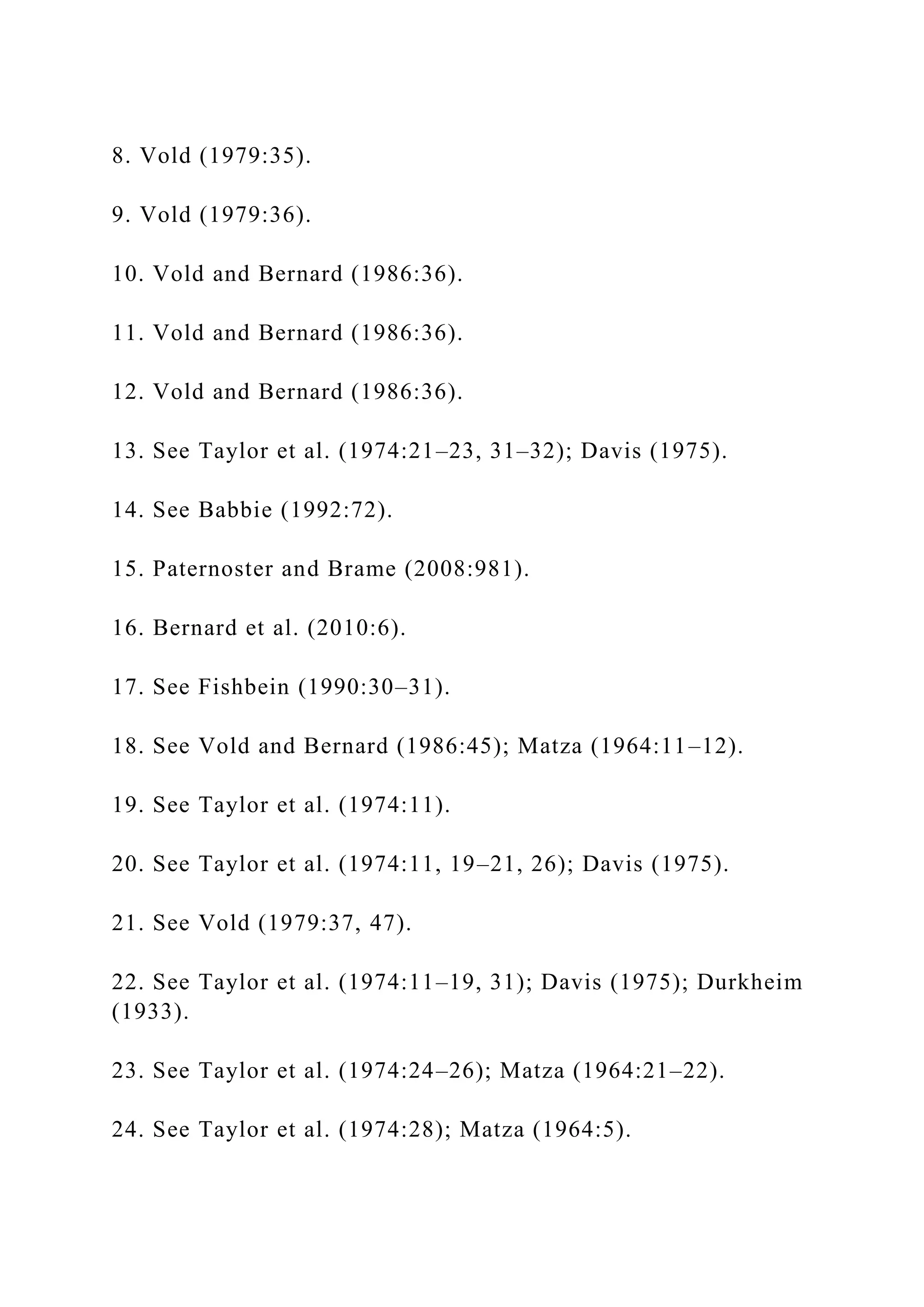
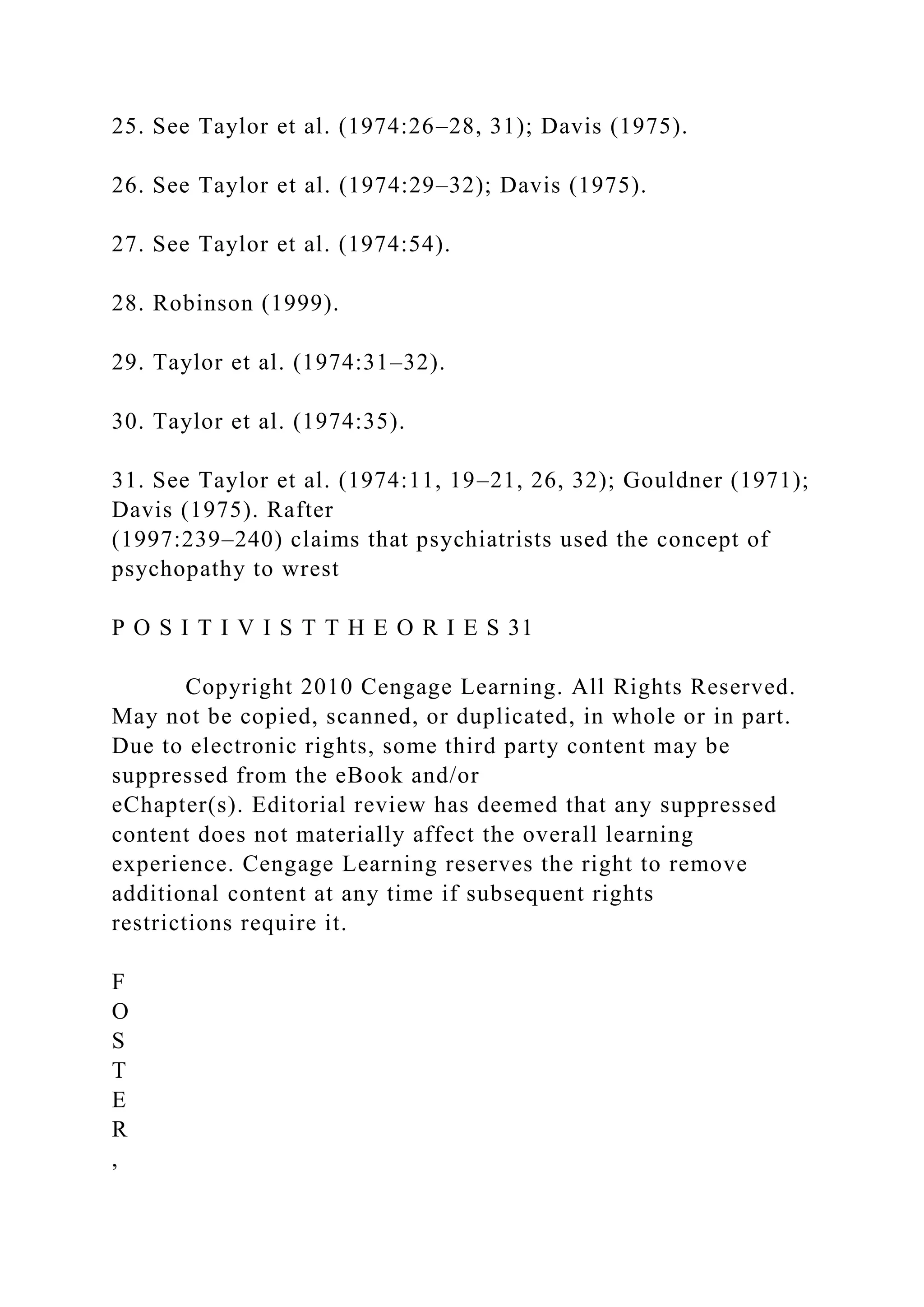
![C
E
D
R
I
C
1
6
9
2
T
S
control of criminology from psychologists who then dominated
the field and with
whom psychiatrists were in competition. Laub and Sampson
(1991:1404) attribute
the heated debates about criminological theory between Edwin
Sutherland and
Shelden and Eleanor Glueck to “their respective methodological
and disciplinary
biases.” Daly and Chesney-Lind (1988:500) maintain that “a
major feminist project
today is to expose the distortions and assumptions of
androcentric science [which
reveals] that an ideology of objectivity can serve to mask men’s
gender loyalties as
well as loyalties to other class or racial groups.” Cullen,
Gendreau, Jarjoura, and
Wright (1997:387) argue that Herrnstein and Murray’s showing
that IQ is a pow-
erful predictor of crime in their controversial book The Bell](https://image.slidesharecdn.com/5220191cs146datastructuresandalgorithmsc-221201210134-446698d9/75/5220191CS146-Data-Structures-and-AlgorithmsC-docx-62-2048.jpg)
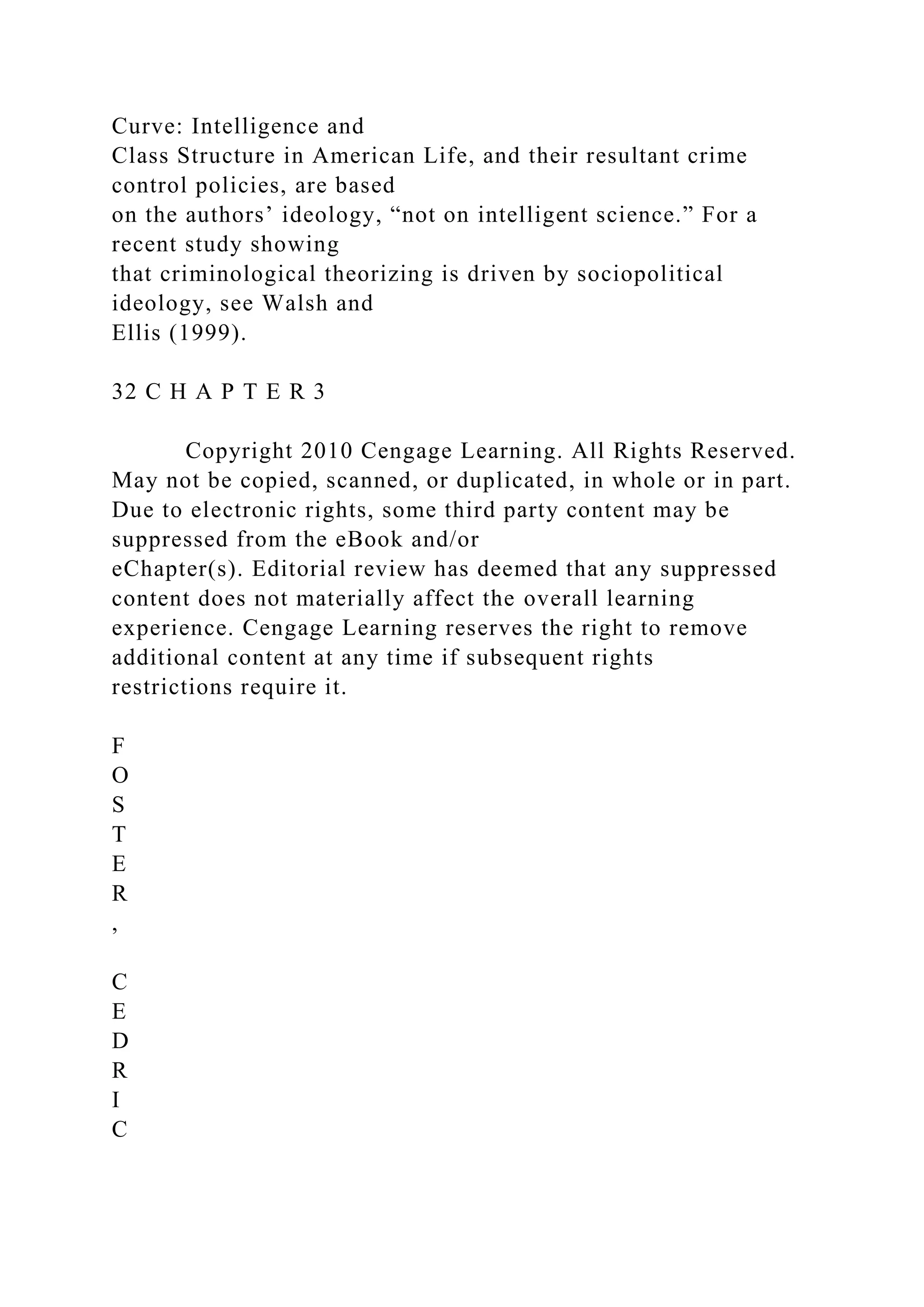
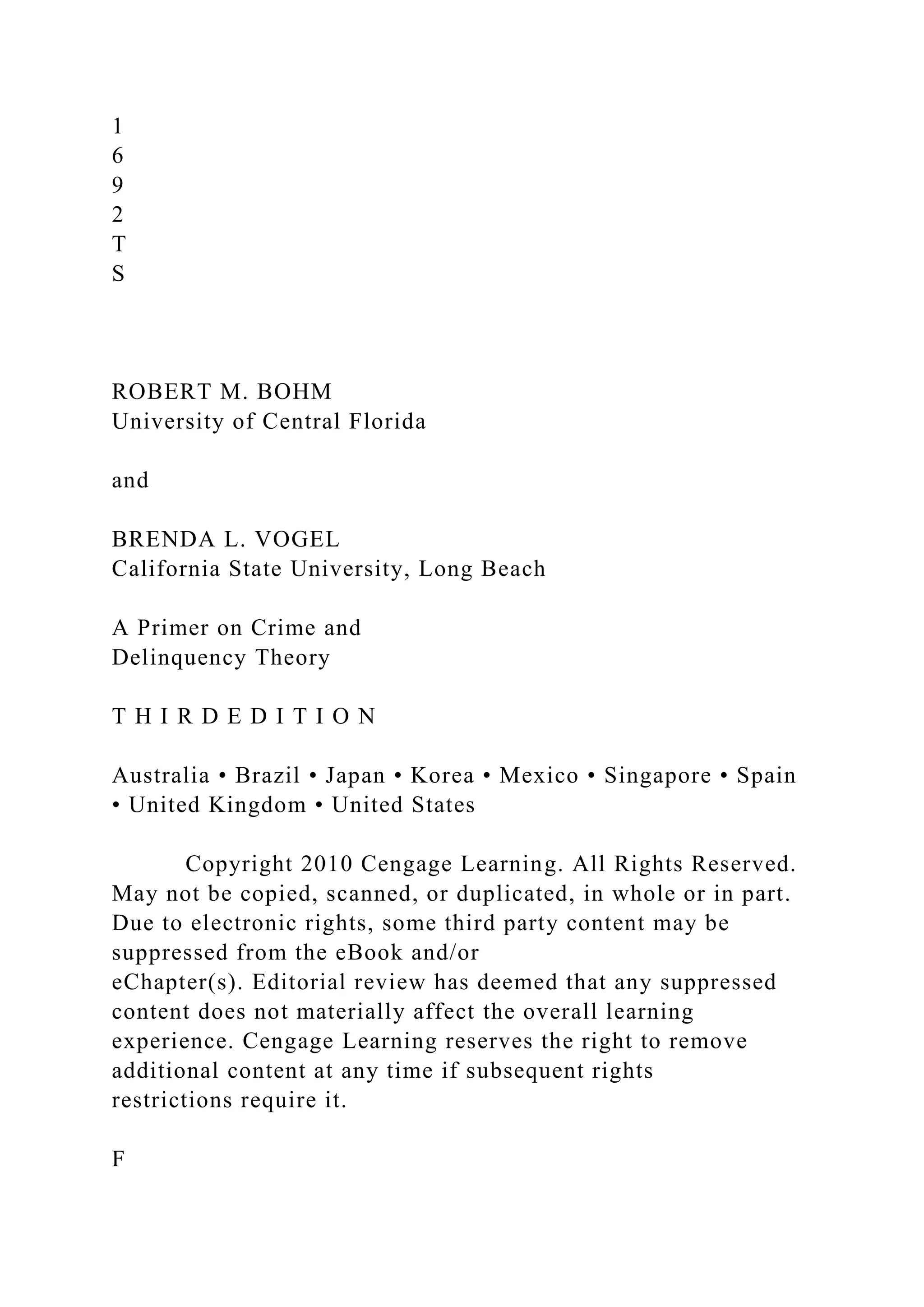
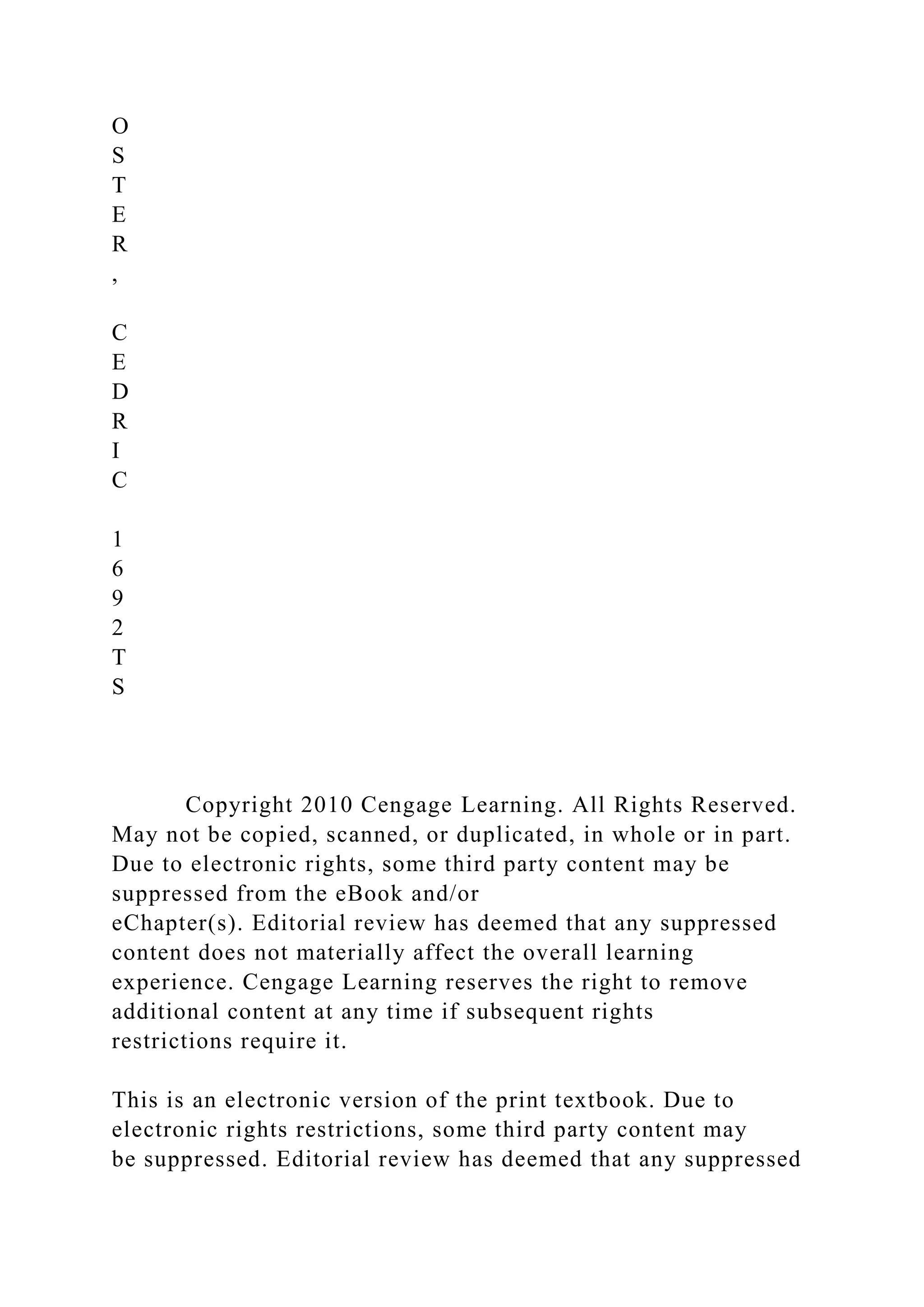

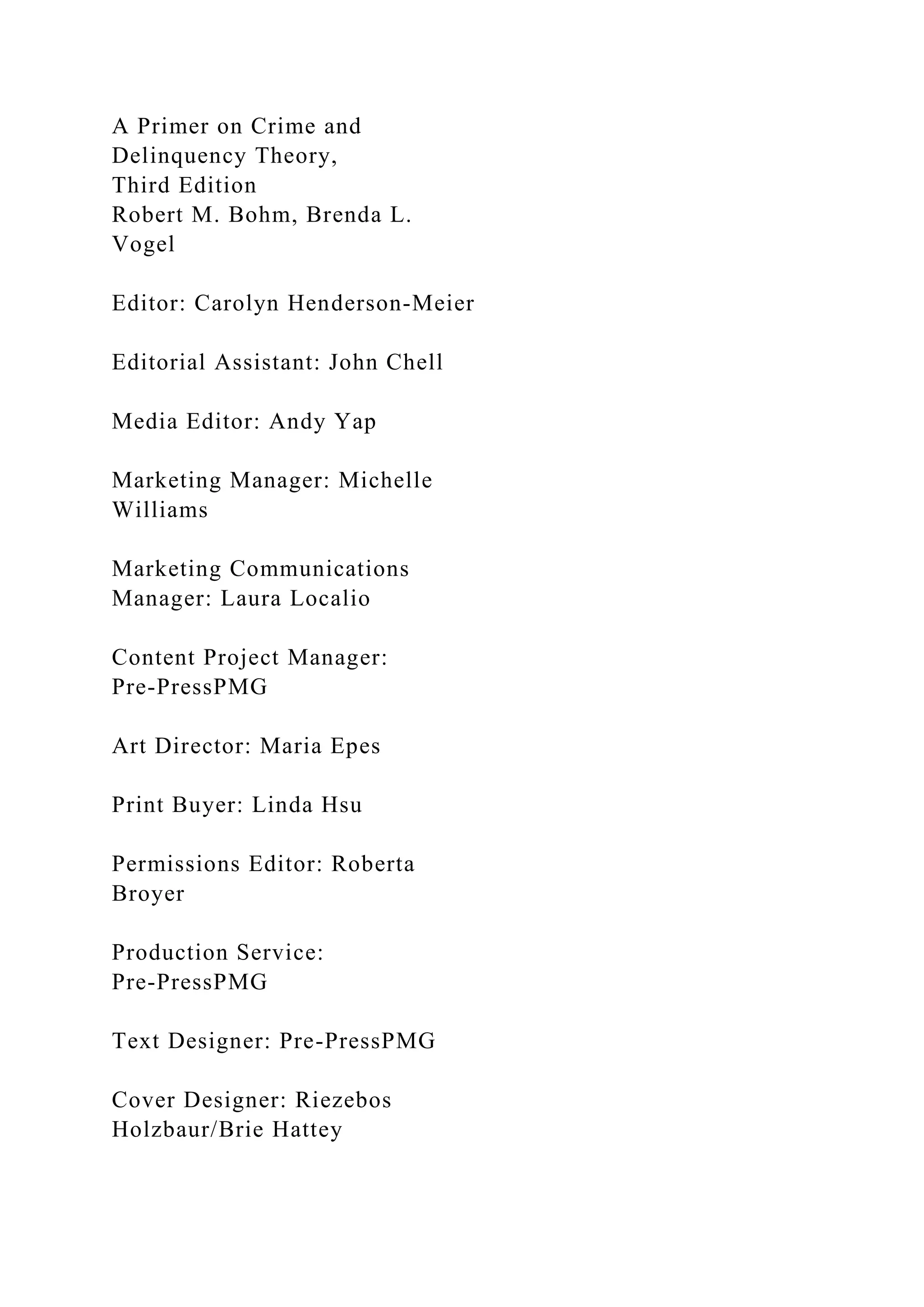
![Cover Image: Corbis Yellow
Compositor: Pre-PressPMG
© 2011, 2001, 1997 Wadsworth, Cengage Learning
ALL RIGHTS RESERVED. No part of this work covered by the
copyright herein may be reproduced, transmitted, stored or used
in
any form or by any means graphic, electronic, or mechanical,
including but not limited to photocopying, recording, scanning,
digitizing, taping, Web distribution, information networks, or
information storage and retrieval systems, except as permitted
under Section 107 or 108 of the 1976 United States Copyright
Act,
without the prior written permission of the publisher.
For product information and
technology assistance, contact us at Cengage Learning
Customer & Sales Support, 1-800-354-9706
For permission to use material from this text or product,
submit all requests online at cengage.com/permissions
Further permissions questions can be emailed to
[email protected]
Library of Congress Control Number: 2010926703
ISBN-13: 978-0-495-80750-6
ISBN-10: 0-495-80750-8
Wadsworth
20 Davis Drive
Belmont, CA 94002-3098](https://image.slidesharecdn.com/5220191cs146datastructuresandalgorithmsc-221201210134-446698d9/75/5220191CS146-Data-Structures-and-AlgorithmsC-docx-68-2048.jpg)

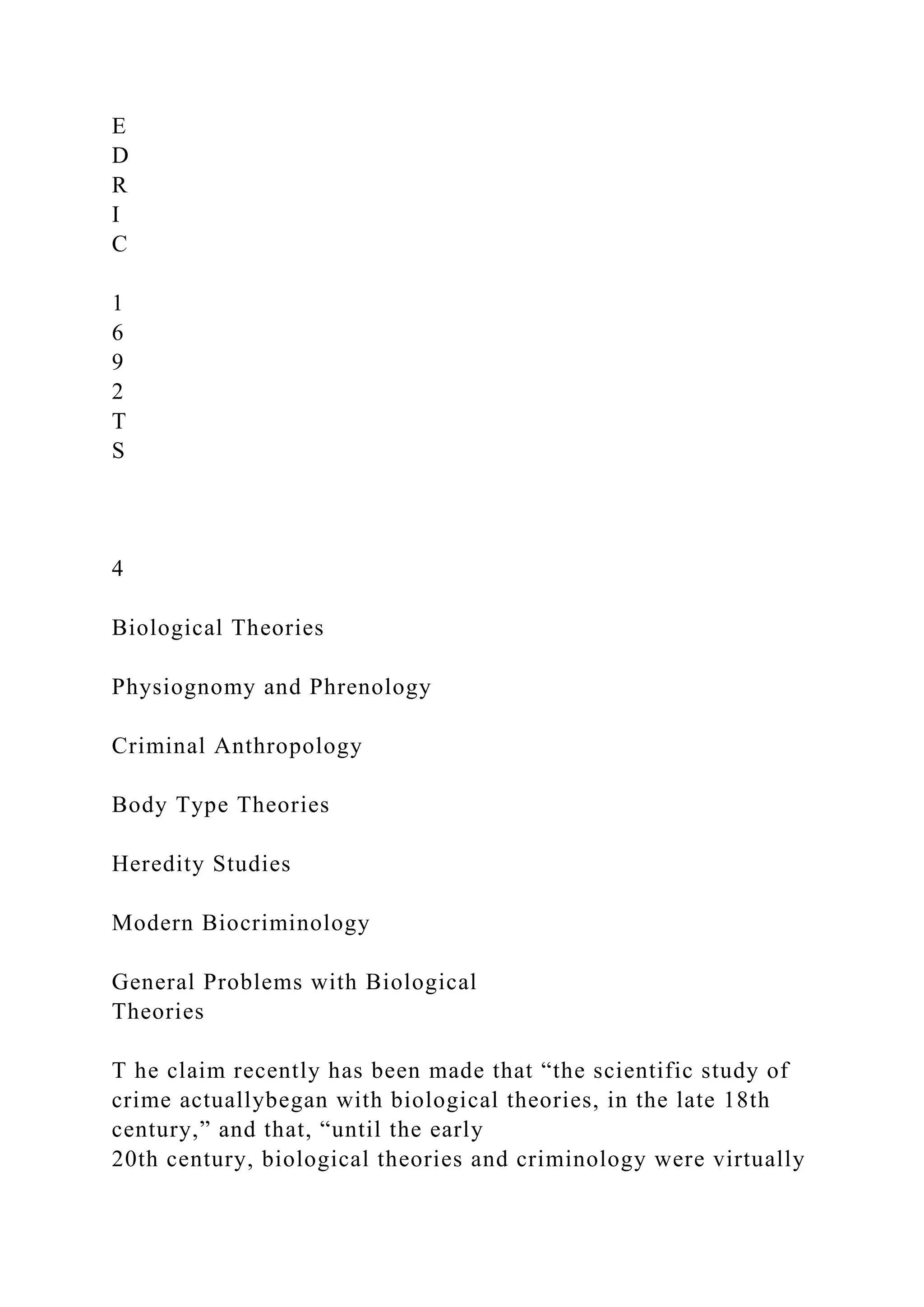
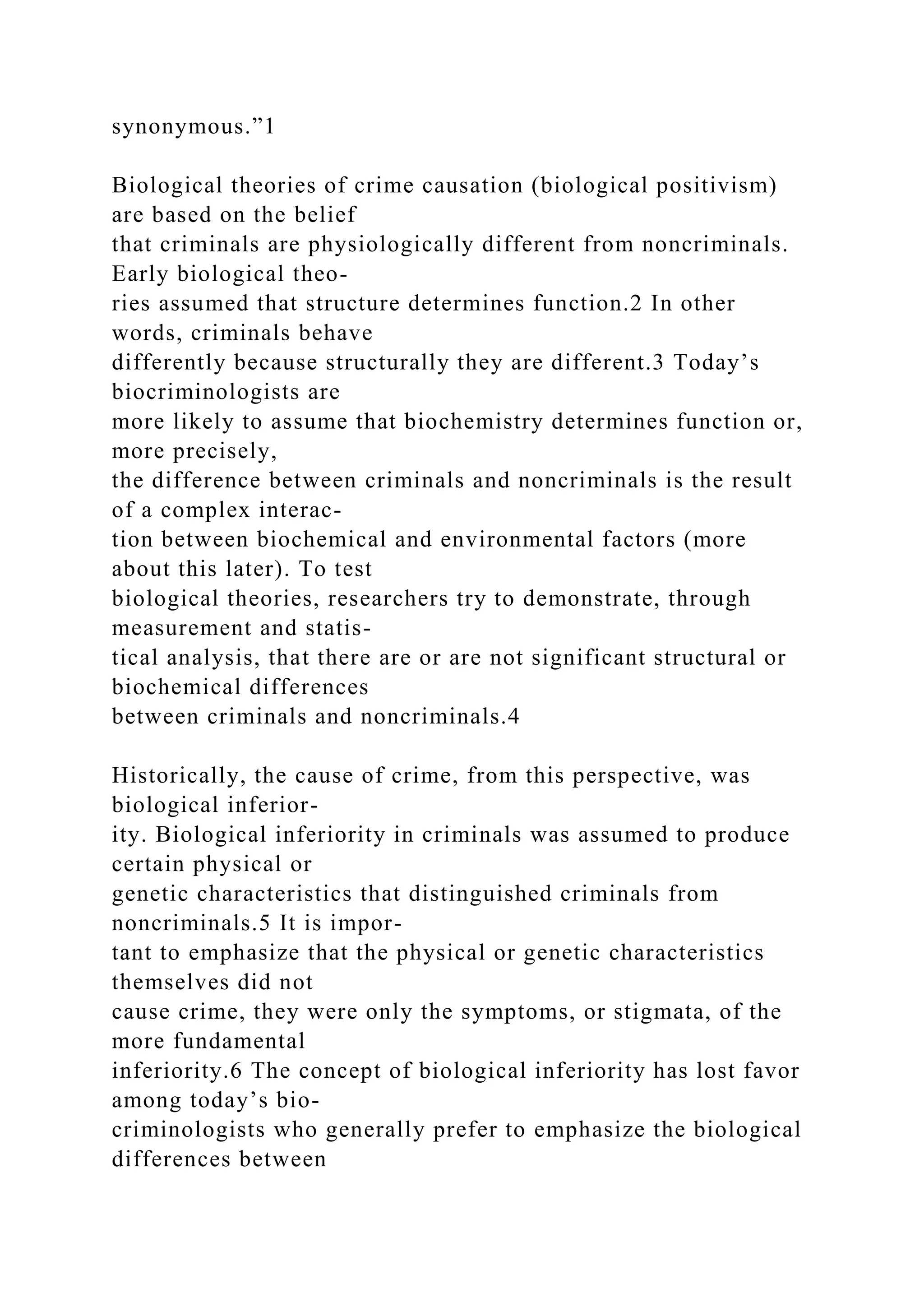

![criminals and noncriminals without adding the value judgment.
In any event,
several different methodologies have been employed to detect
physical differences
between criminals and noncriminals. They are physiognomy,
phrenology, criminal
anthropology, study of body types, heredity studies (including
family trees, statistical
comparisons, twin studies, and adoption studies) and, in the last
twenty years or so,
studies based on new scientific technologies that allow, for
example, the examina-
tion of brain function and structure.
P H Y S I O G N O M Y A N D P H R E N O L O G Y
Physiognomy is the judging of character or disposition from
facial and other
physical features. The Greek philosopher Aristotle is credited
with writing the
first systematic physiognomic treatise.7 In his discussion of
noses, for example,
Aristotle wrote:
[T]hose with thick bulbous ends belong to persons who are
insensitive,
swinish, and prone to acts of theft, fraud, and intemperance;
sharp-
tipped noses belong to the irascible, those easily provoked and
liable
to assaultive behavior and ruffianism; rounded, large obtuse
noses are
characteristic of the magnanimous; slender, eagle-like hooked
noses
belong to the noble; round-tipped noses to the hedonistic; noses](https://image.slidesharecdn.com/5220191cs146datastructuresandalgorithmsc-221201210134-446698d9/75/5220191CS146-Data-Structures-and-AlgorithmsC-docx-73-2048.jpg)
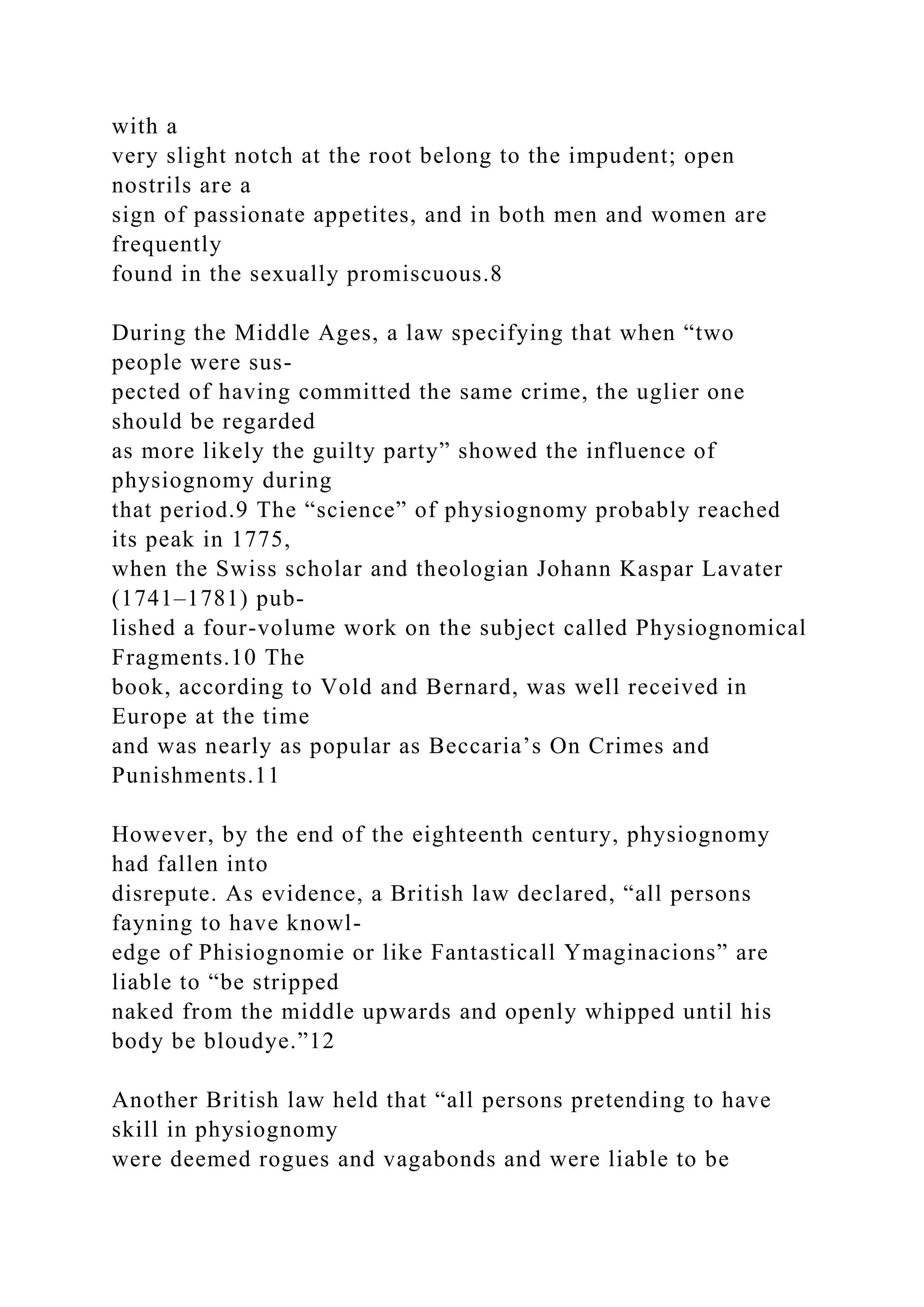
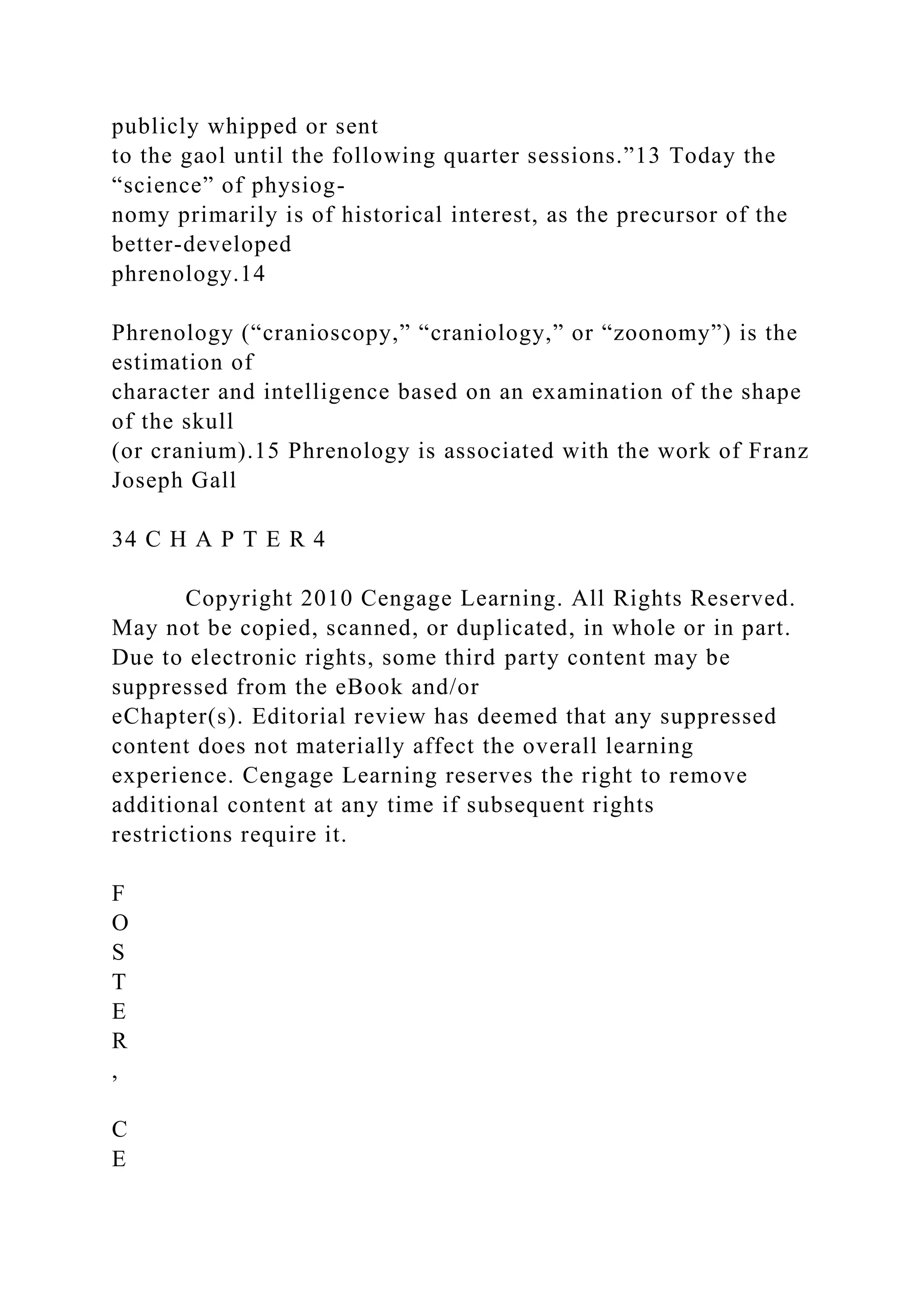



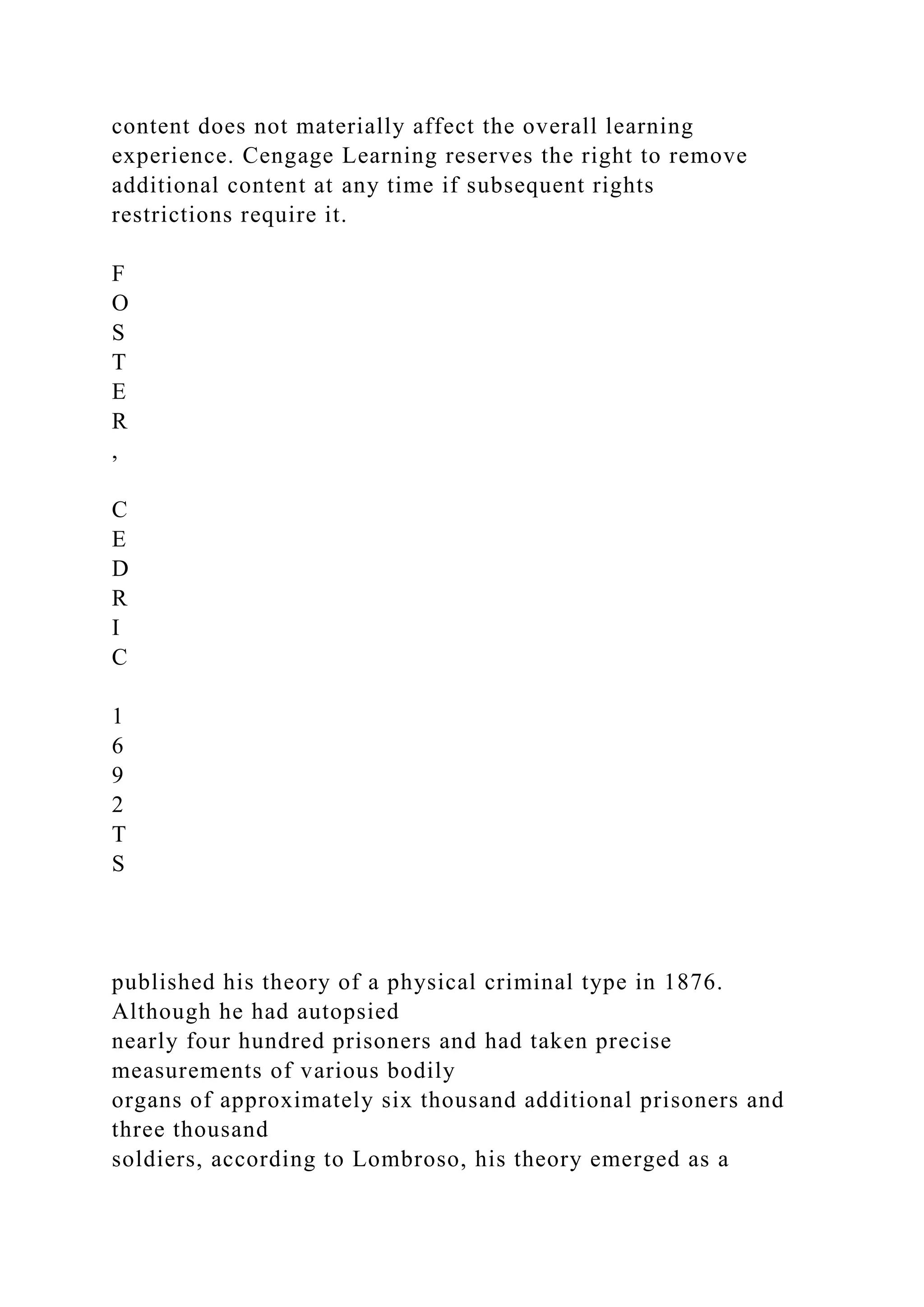
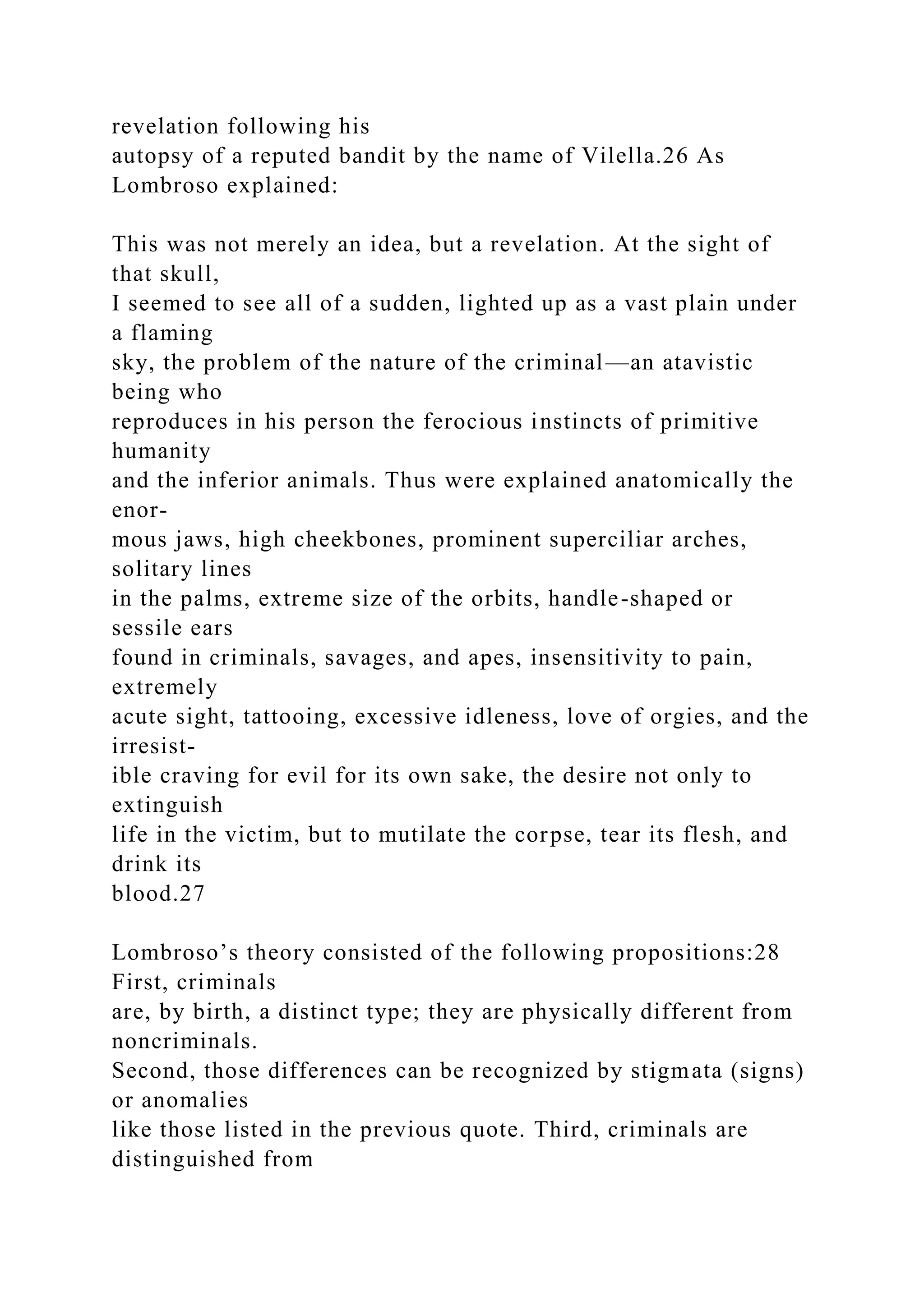
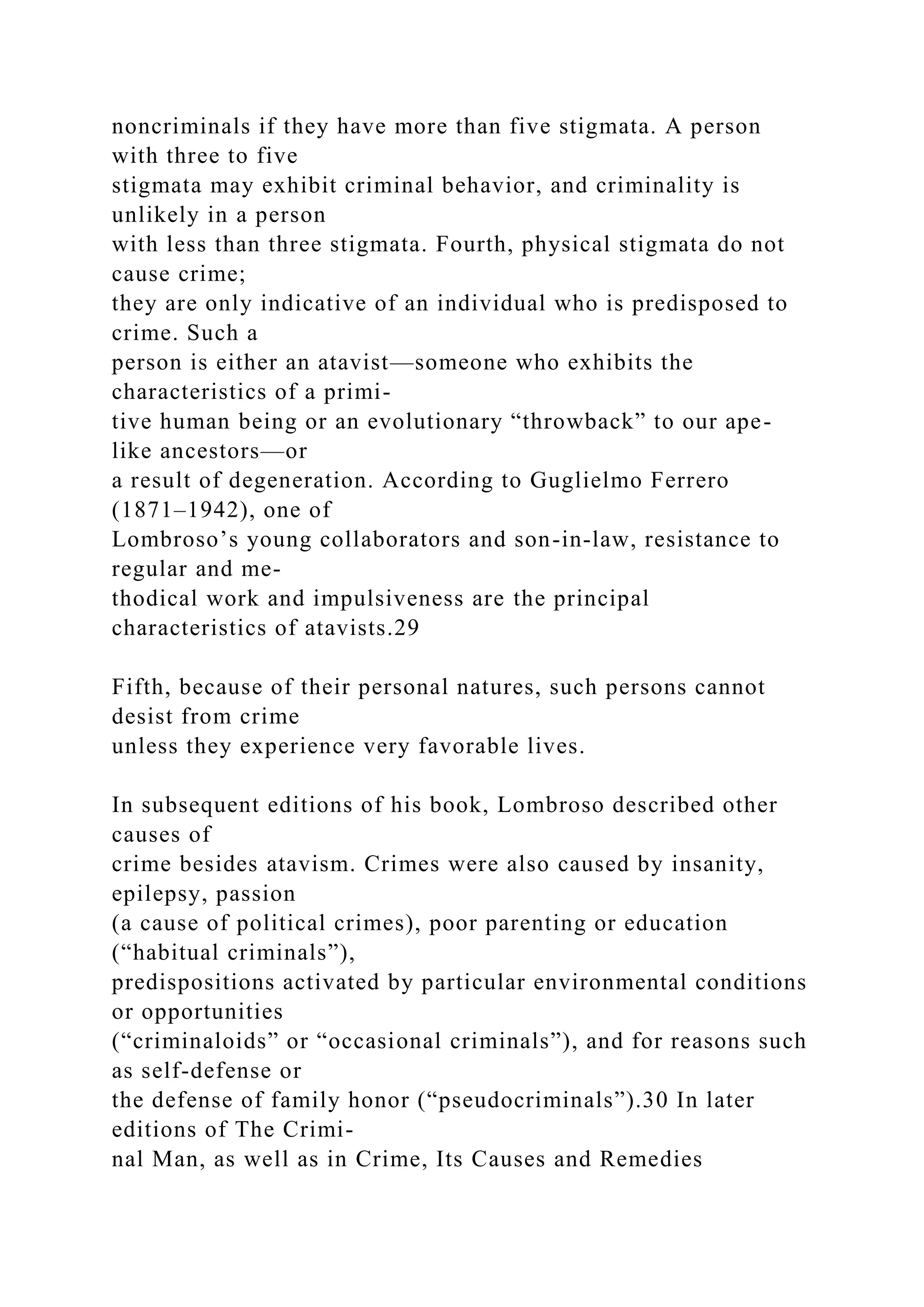
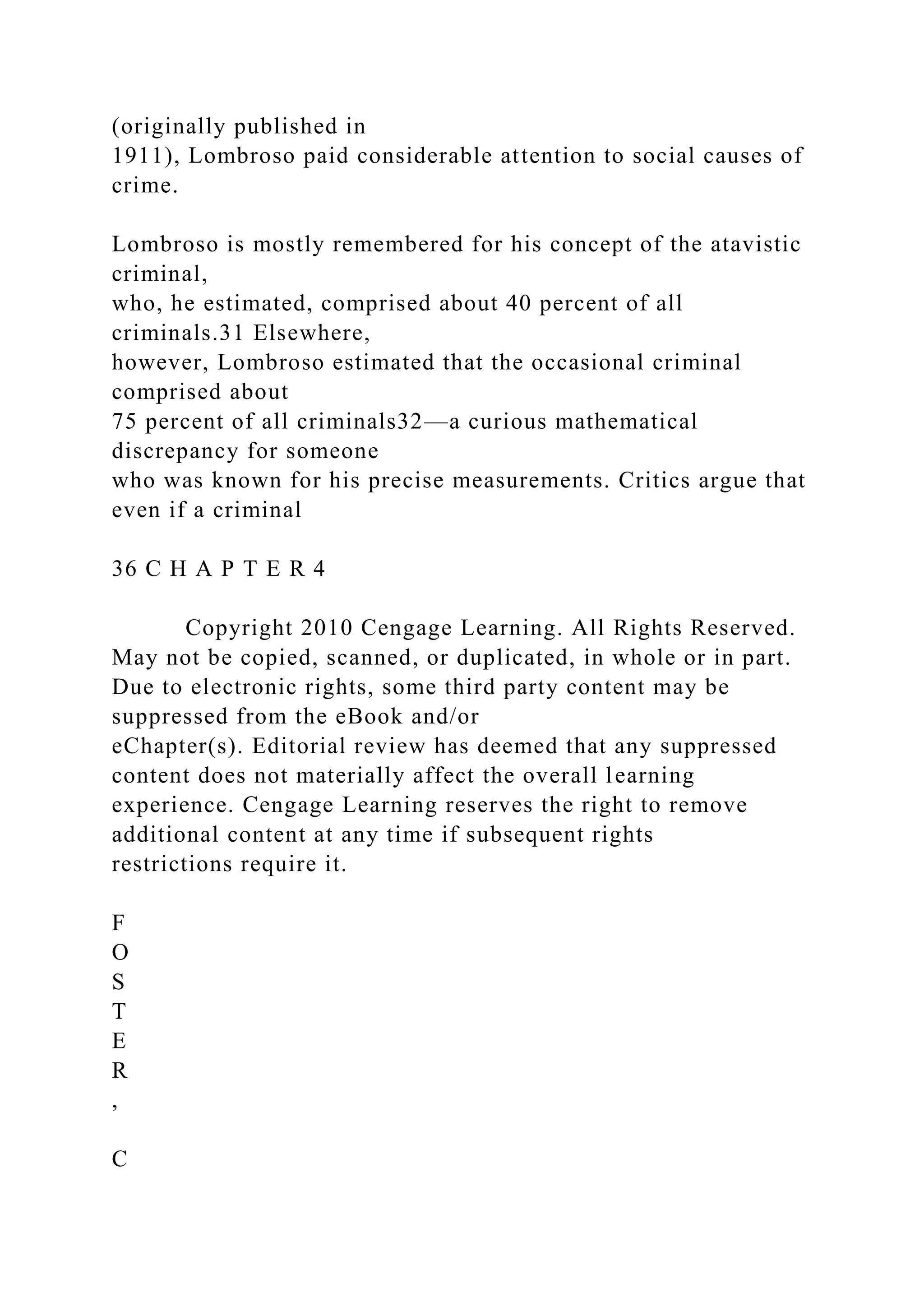
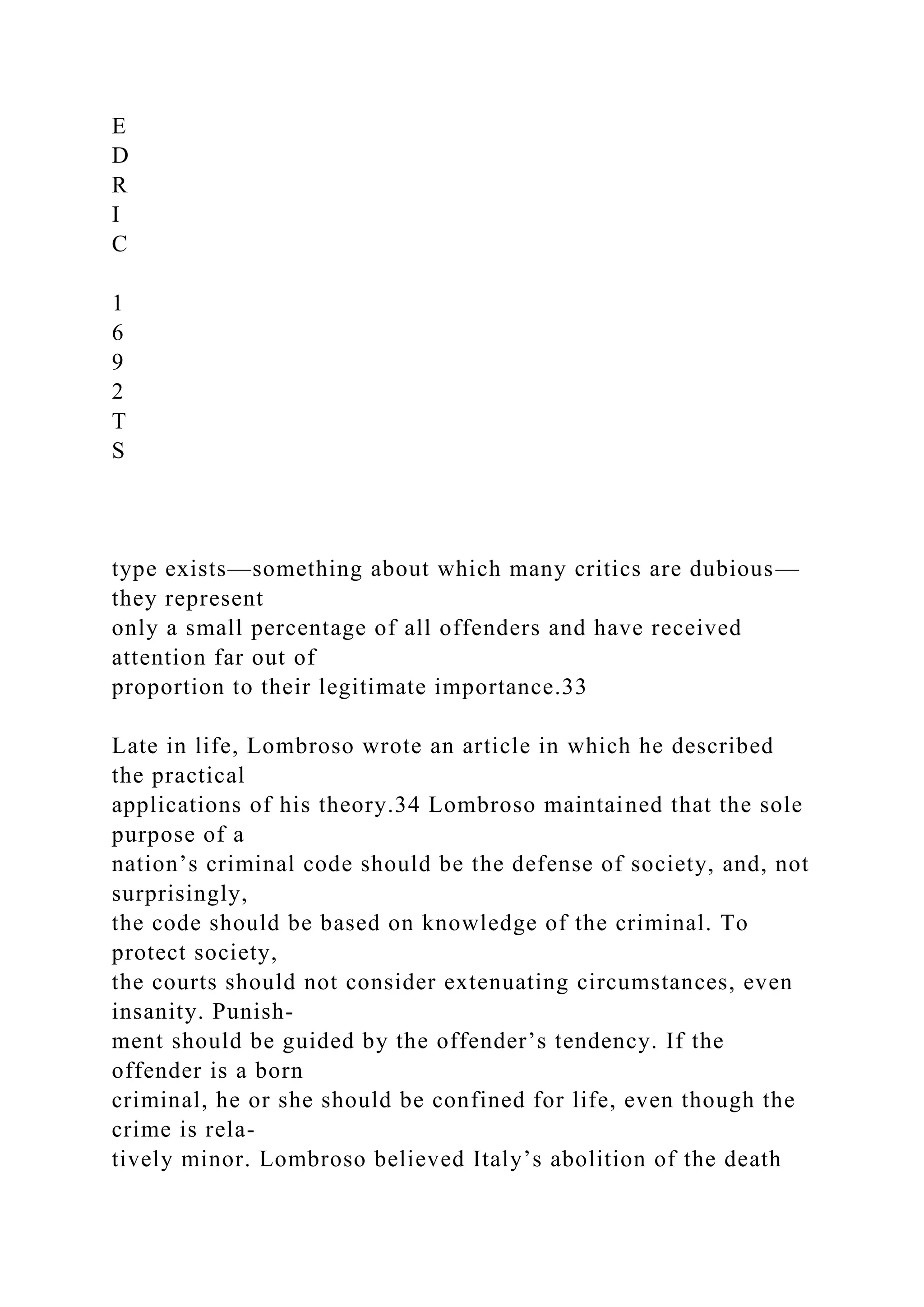
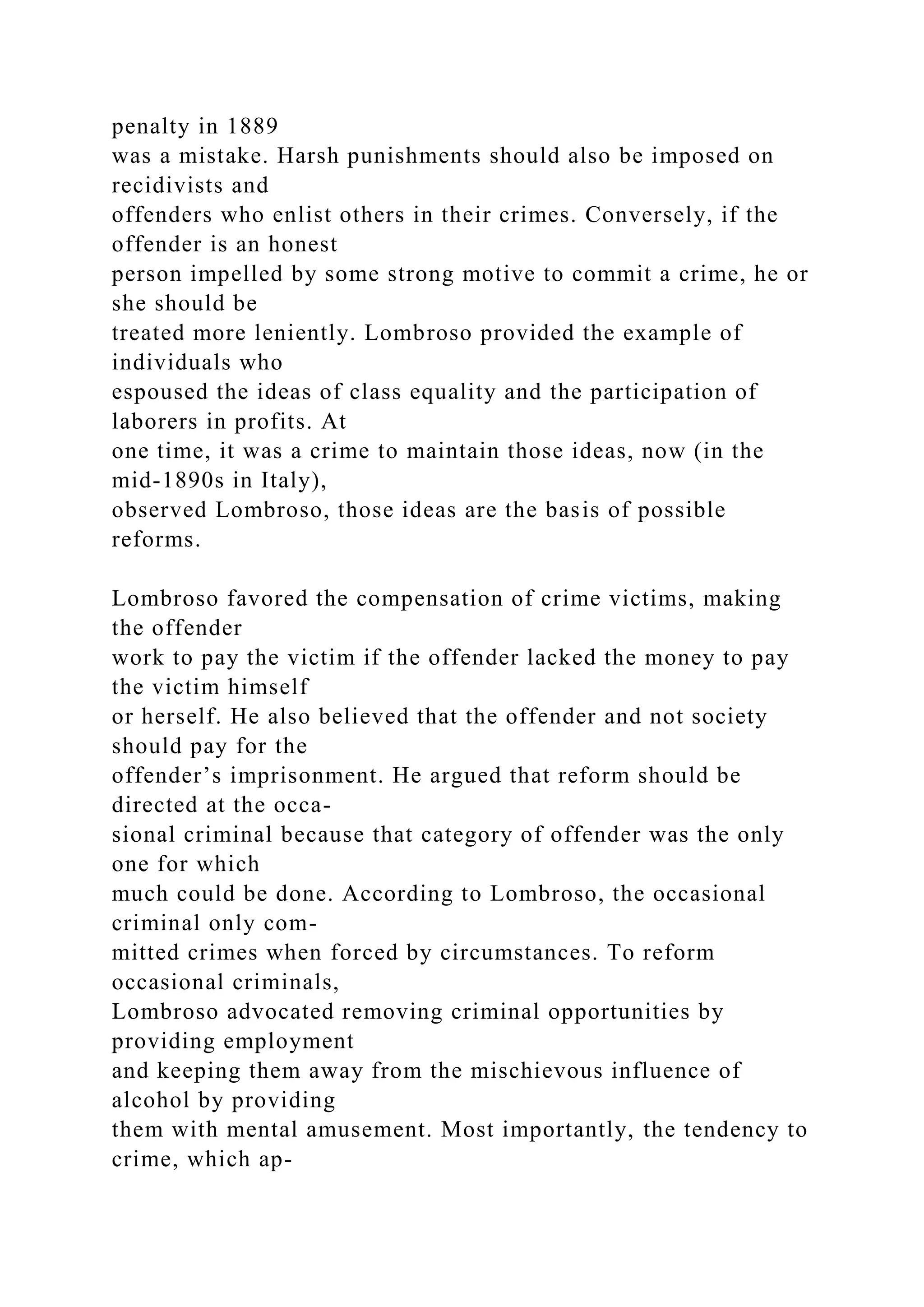
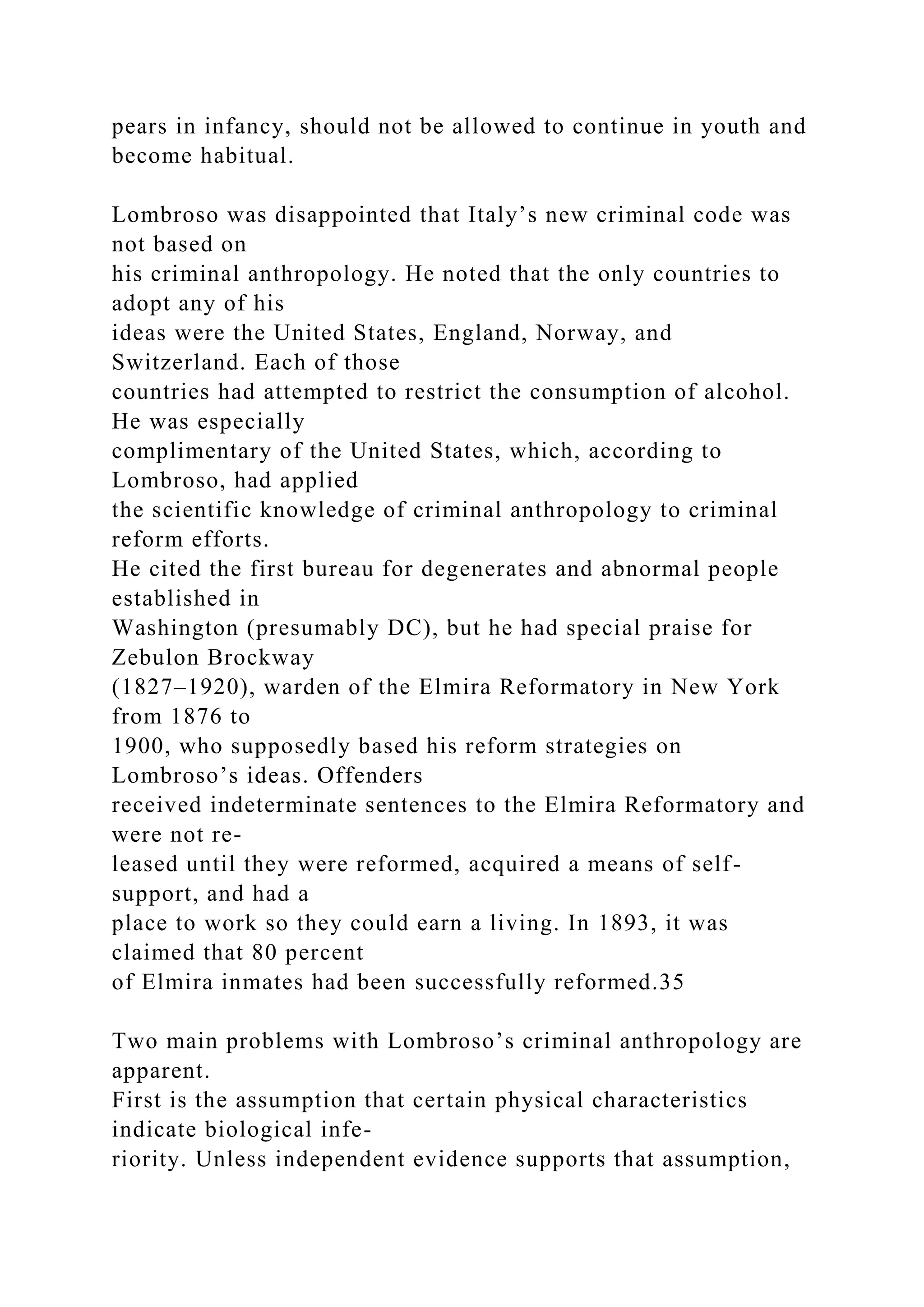
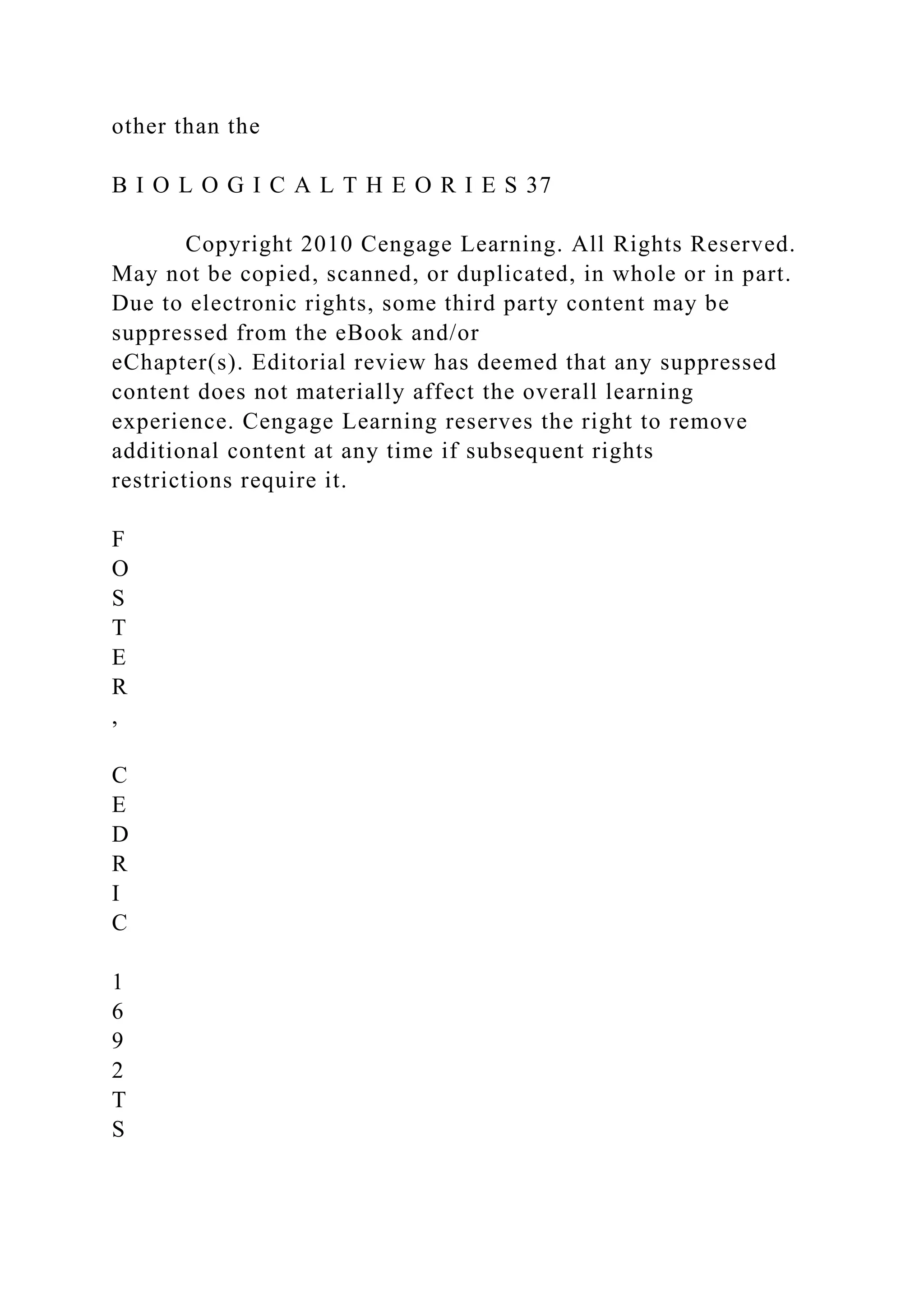
![association of the physical characteristics with criminality, then
the result is circular
reasoning.36 In other words, crime is caused by biological
inferiority, which is itself
indicated by the physical characteristics associated with
criminality.
A second problem is the assumption that apes and other lower
animals are
savage and criminal. As Harvard paleontologist, evolutionary
biologist, and histo-
rian of science Stephen Gould (1941–2002) remarked, “If some
men look like apes,
but apes be kind, then the argument fails.”37 In an effort to
make the dubious
connection, Lombroso had to engage in a tortured
anthropomorphism. As Gould
related:
He [Lombroso] cites, for example, an ant driven by rage to kill
and
dismember an aphid; an adulterous stork who, with her lover,
murdered
her husband; a criminal association of beavers who ganged up to
murder
a solitary compatriot; a male ant, without access to female
reproductives,
who violated a (female) worker with atrophied sexual organs,
causing
her great pain and death; he even refers to the insect eating of
certain
plants as an “equivalent of crime.”38
Despite those problems, Lombroso’s theory was popular in the](https://image.slidesharecdn.com/5220191cs146datastructuresandalgorithmsc-221201210134-446698d9/75/5220191CS146-Data-Structures-and-AlgorithmsC-docx-87-2048.jpg)
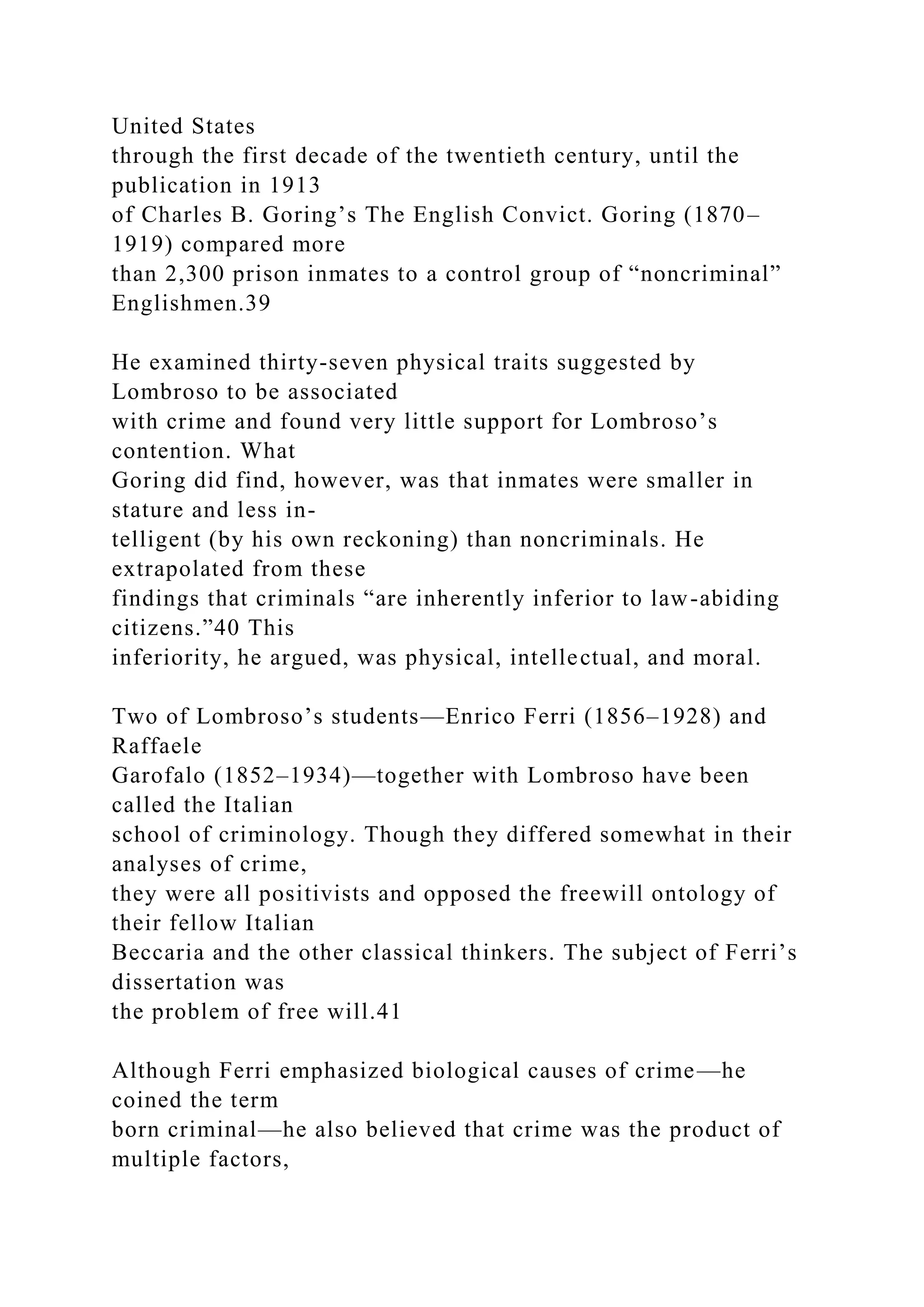
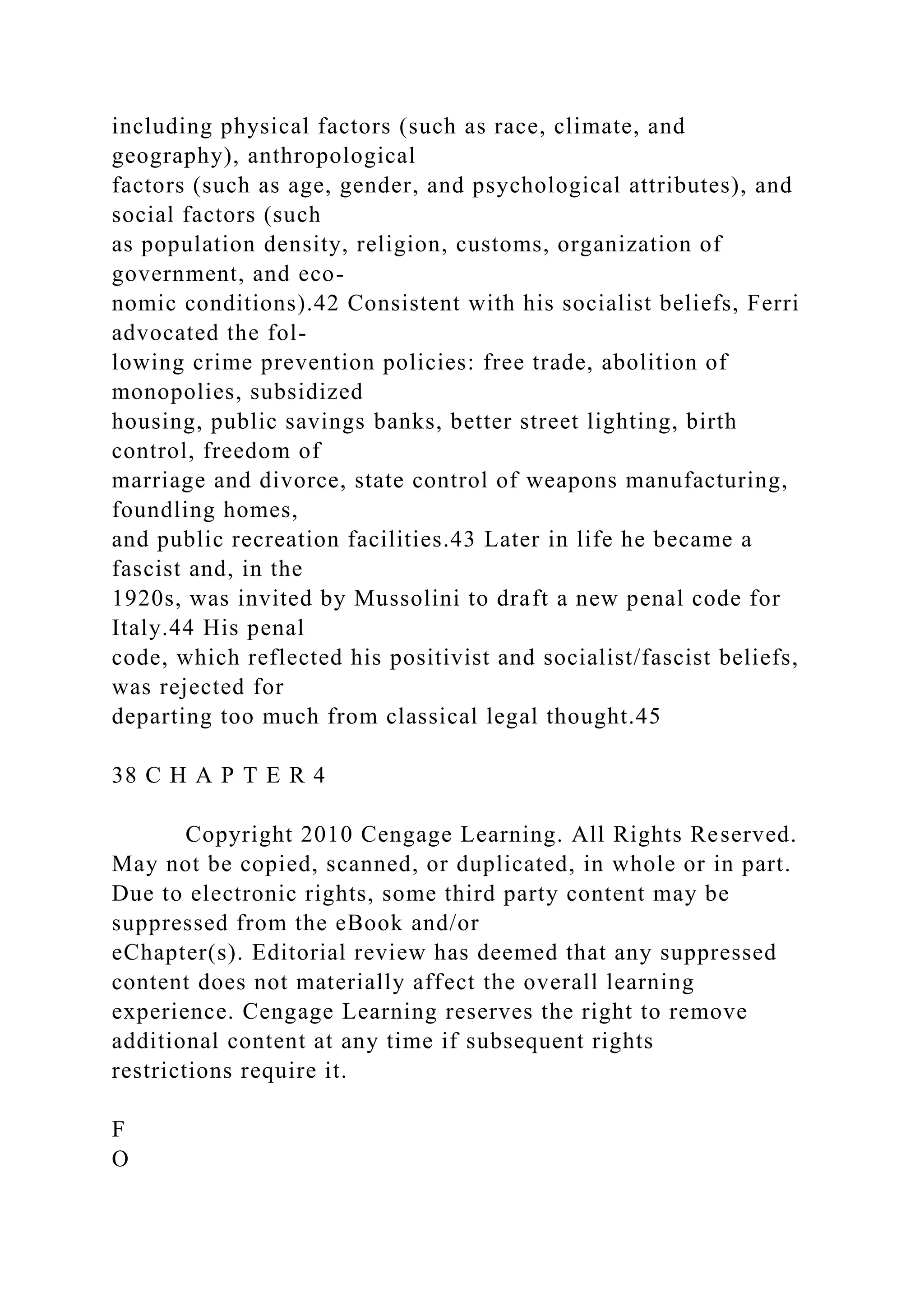

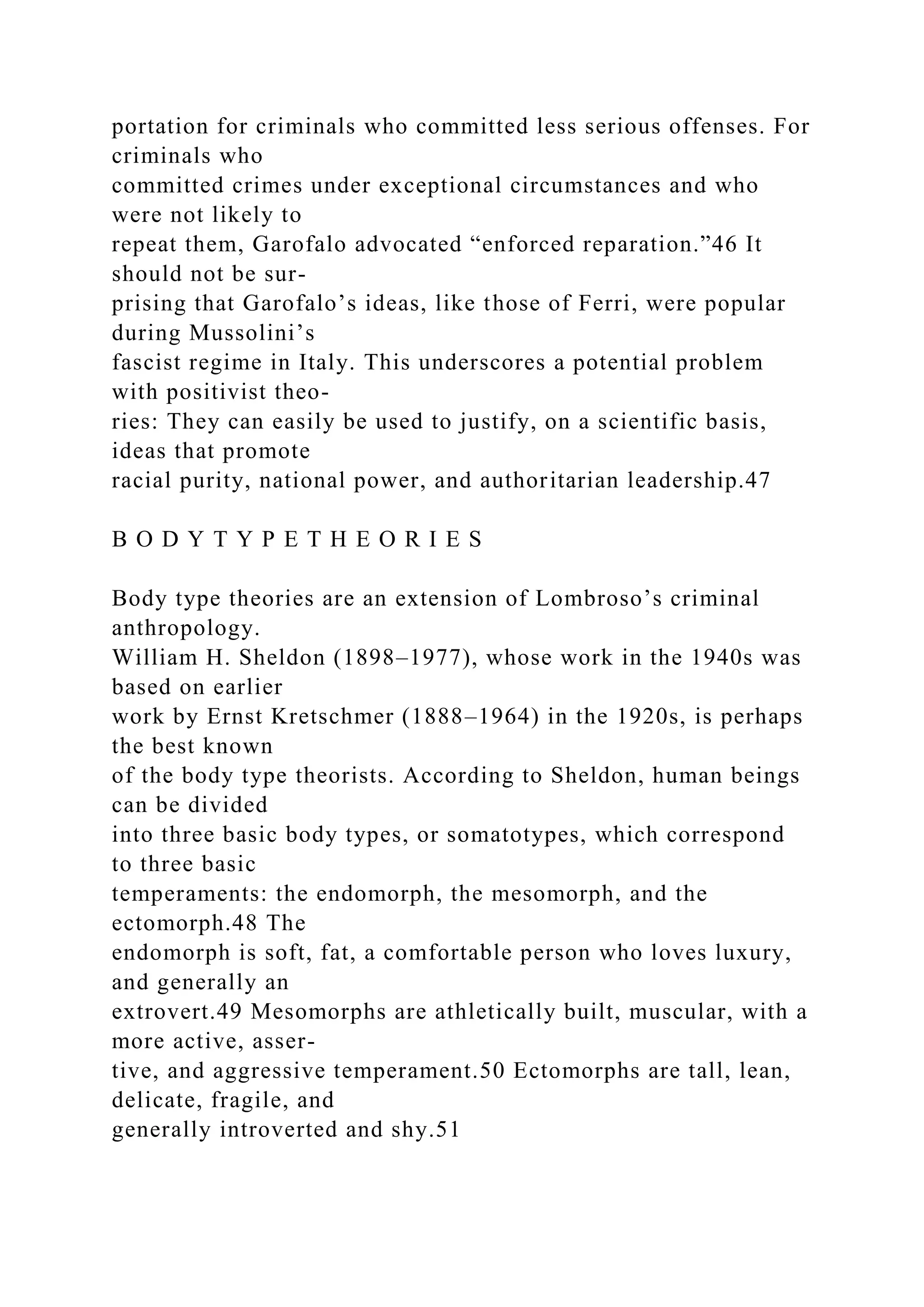
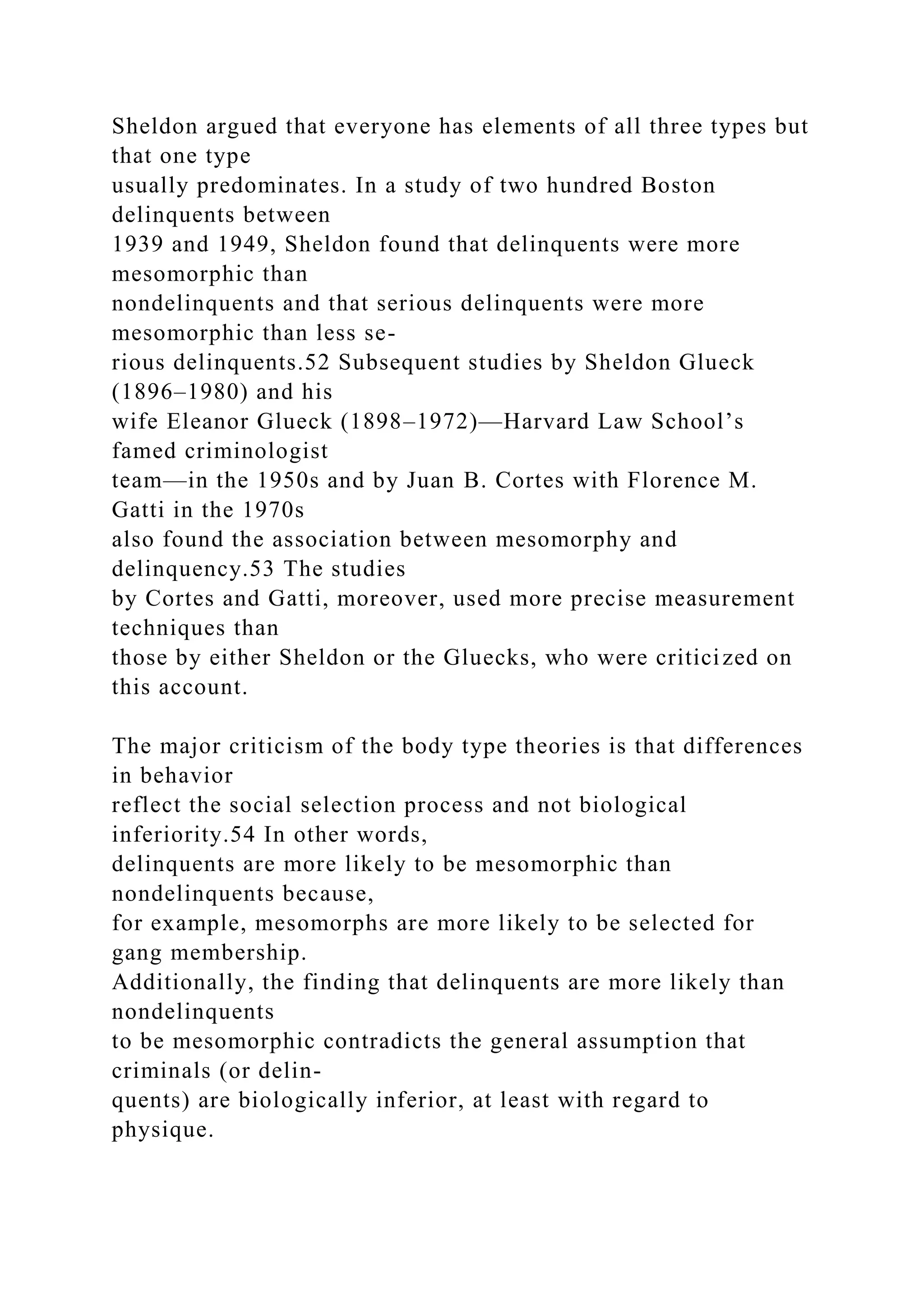
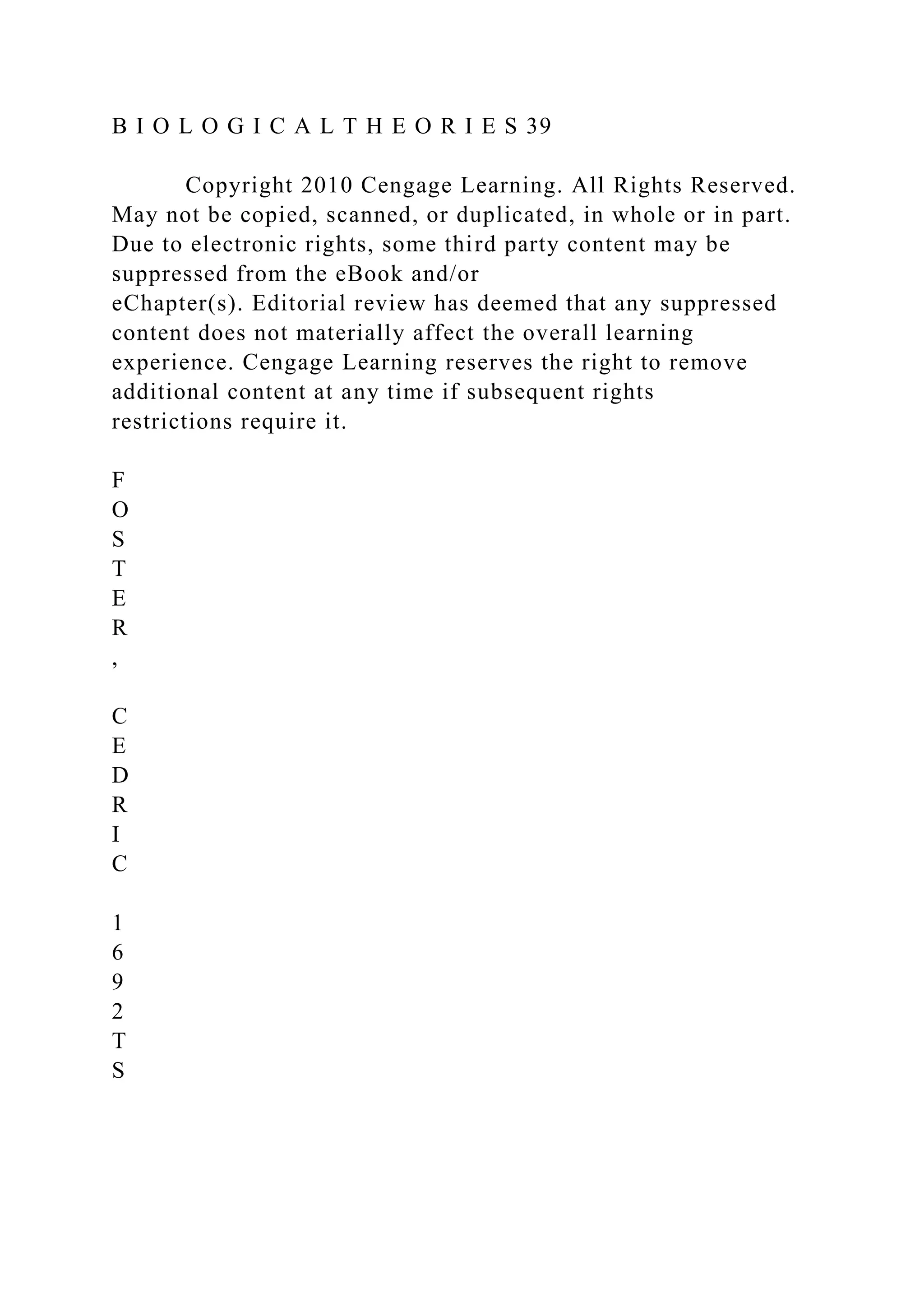
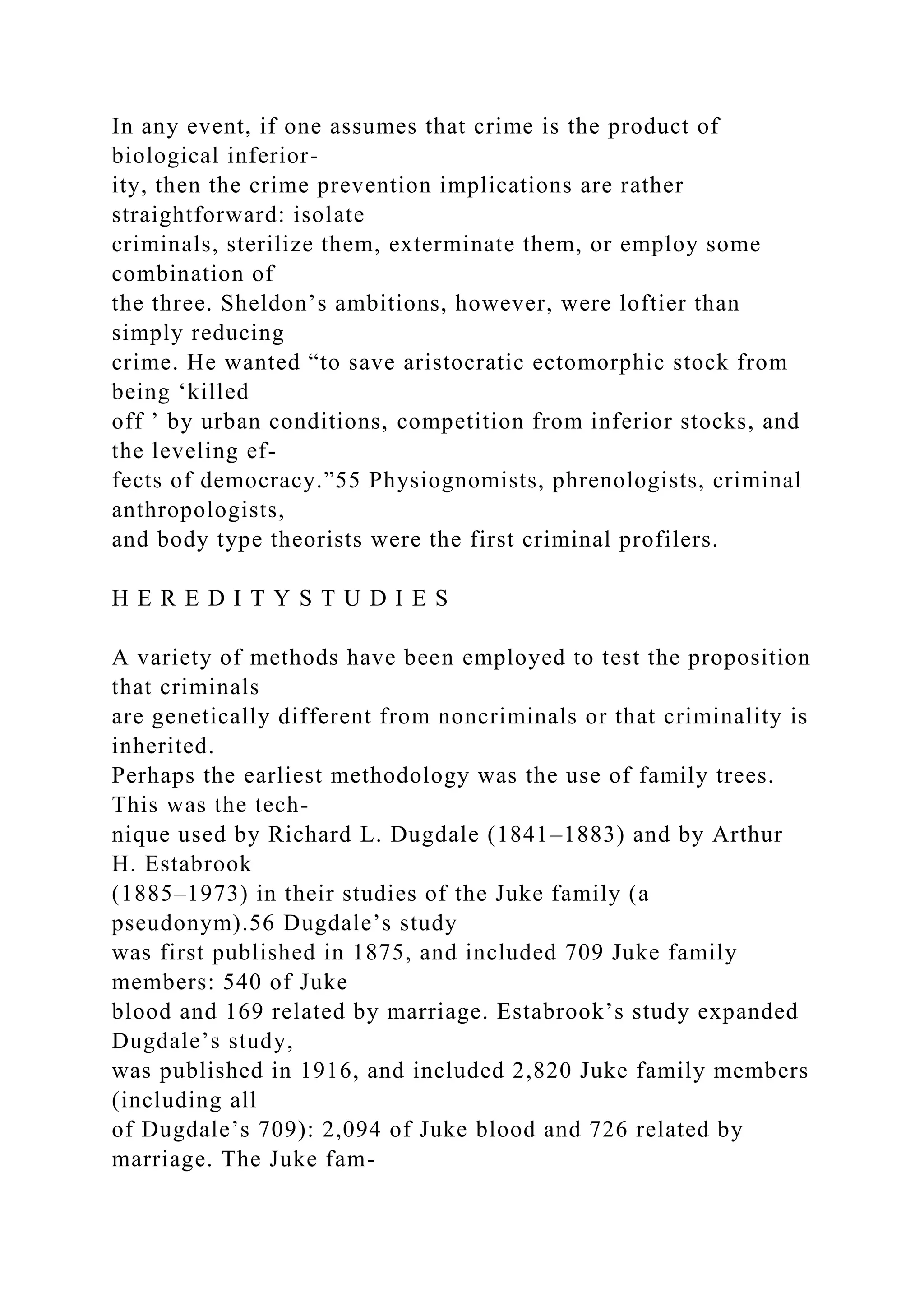
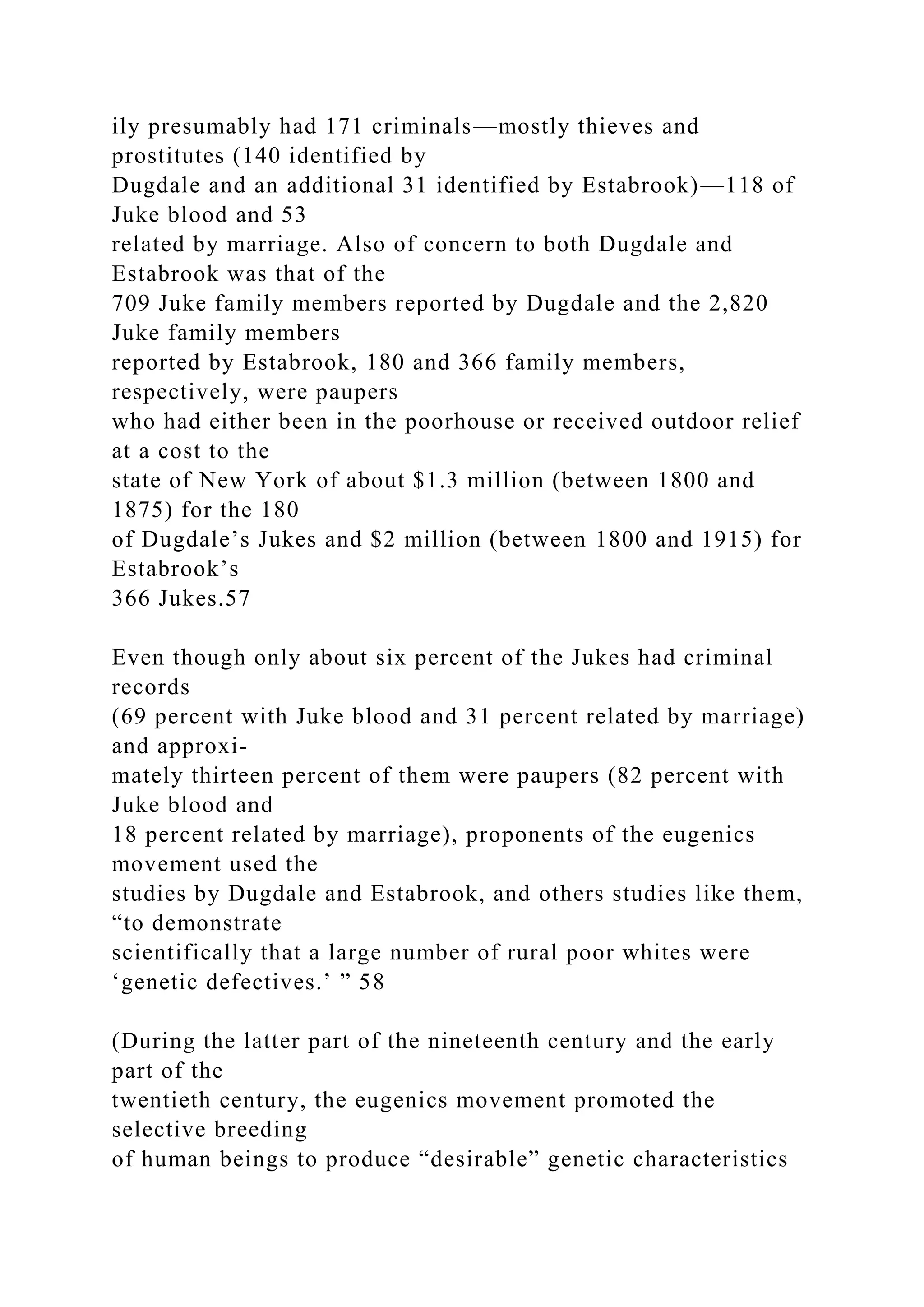
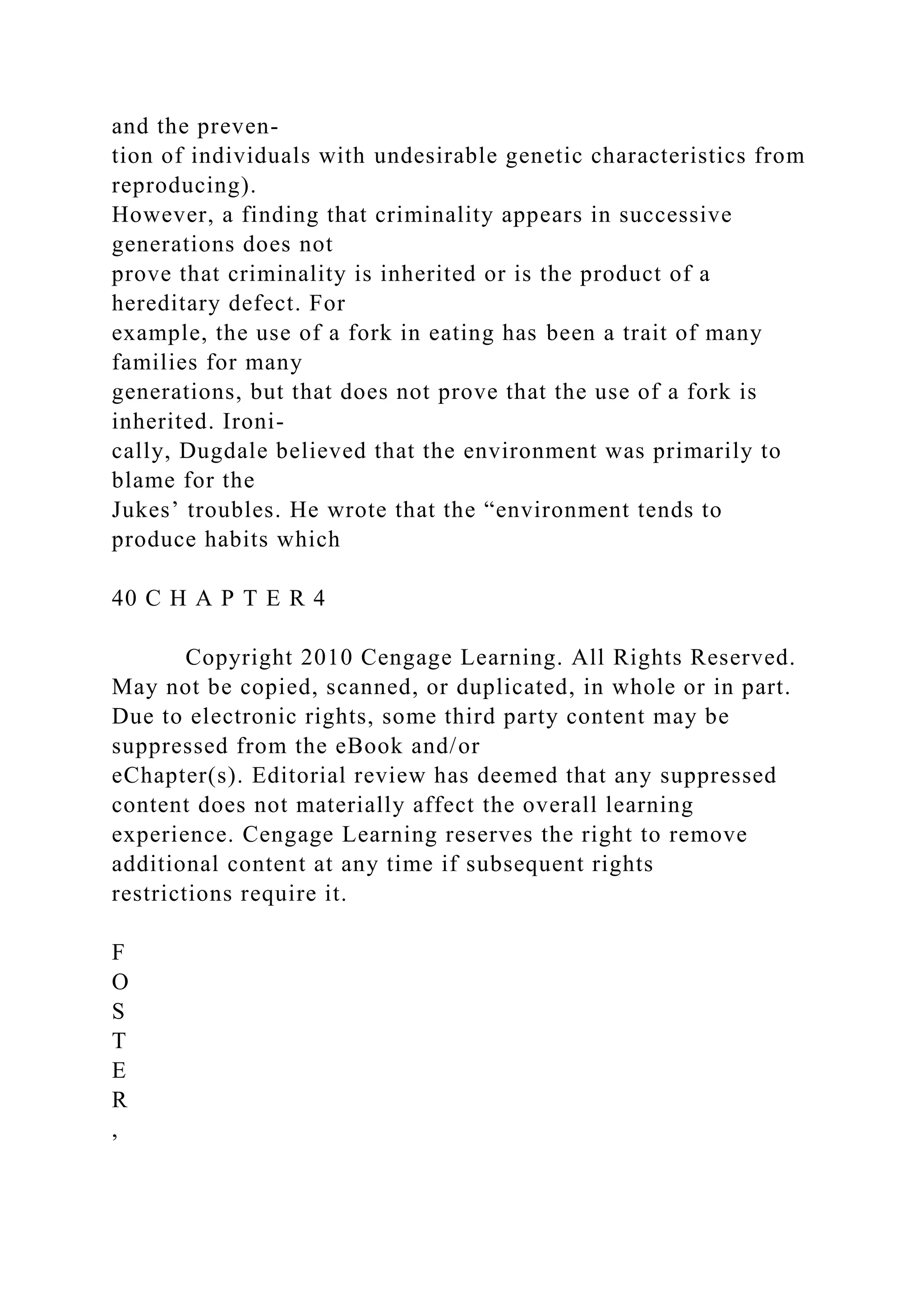

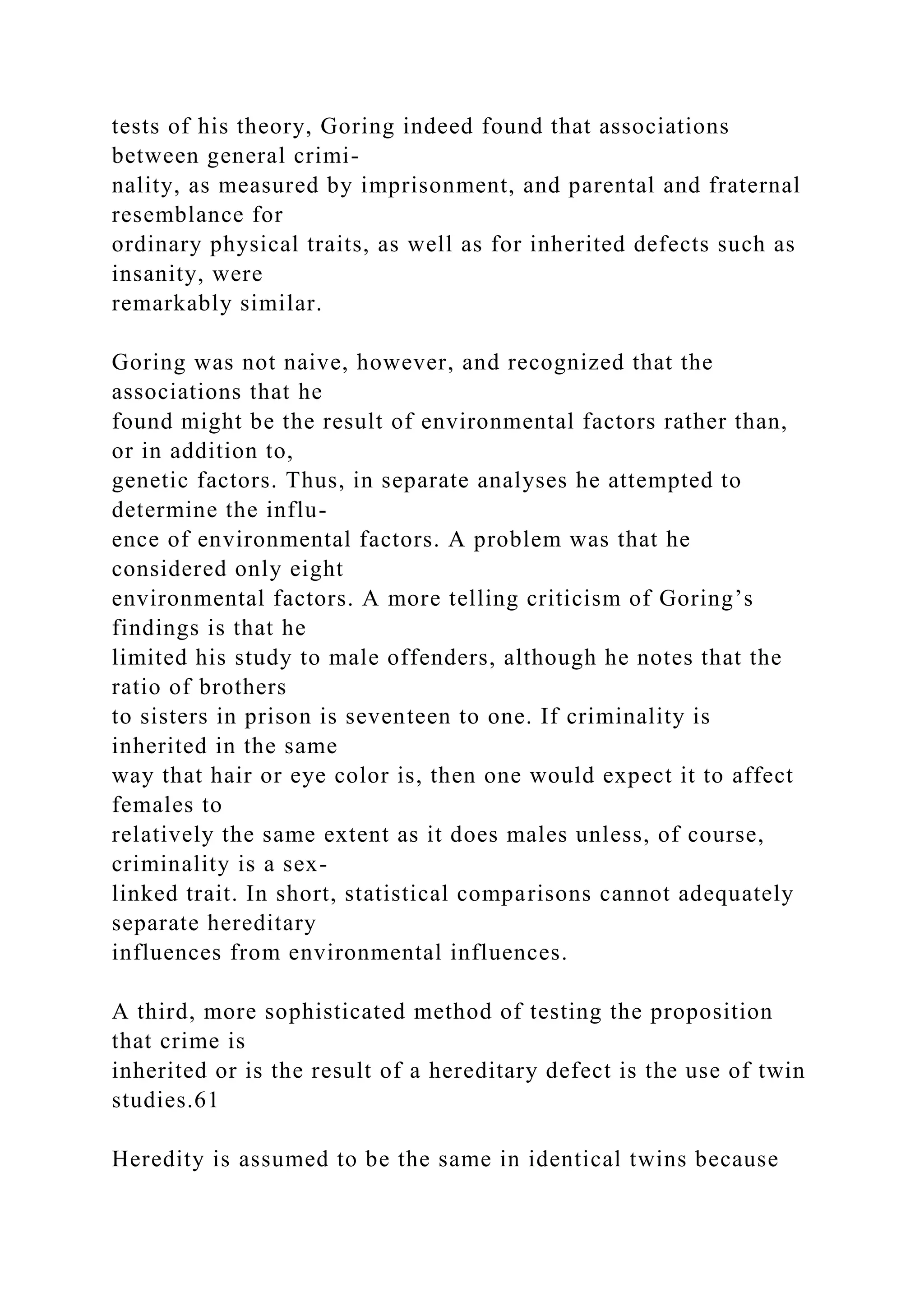
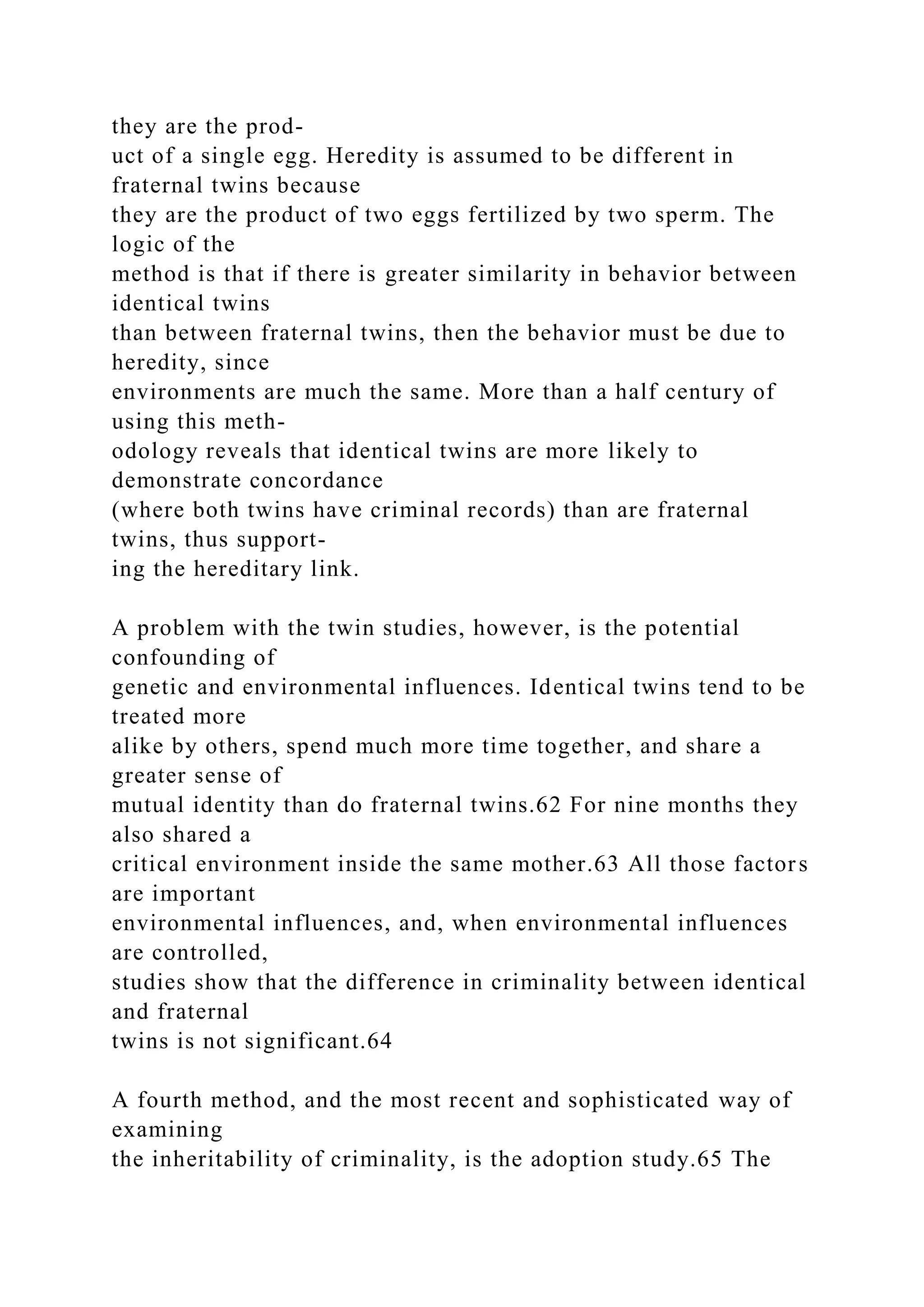
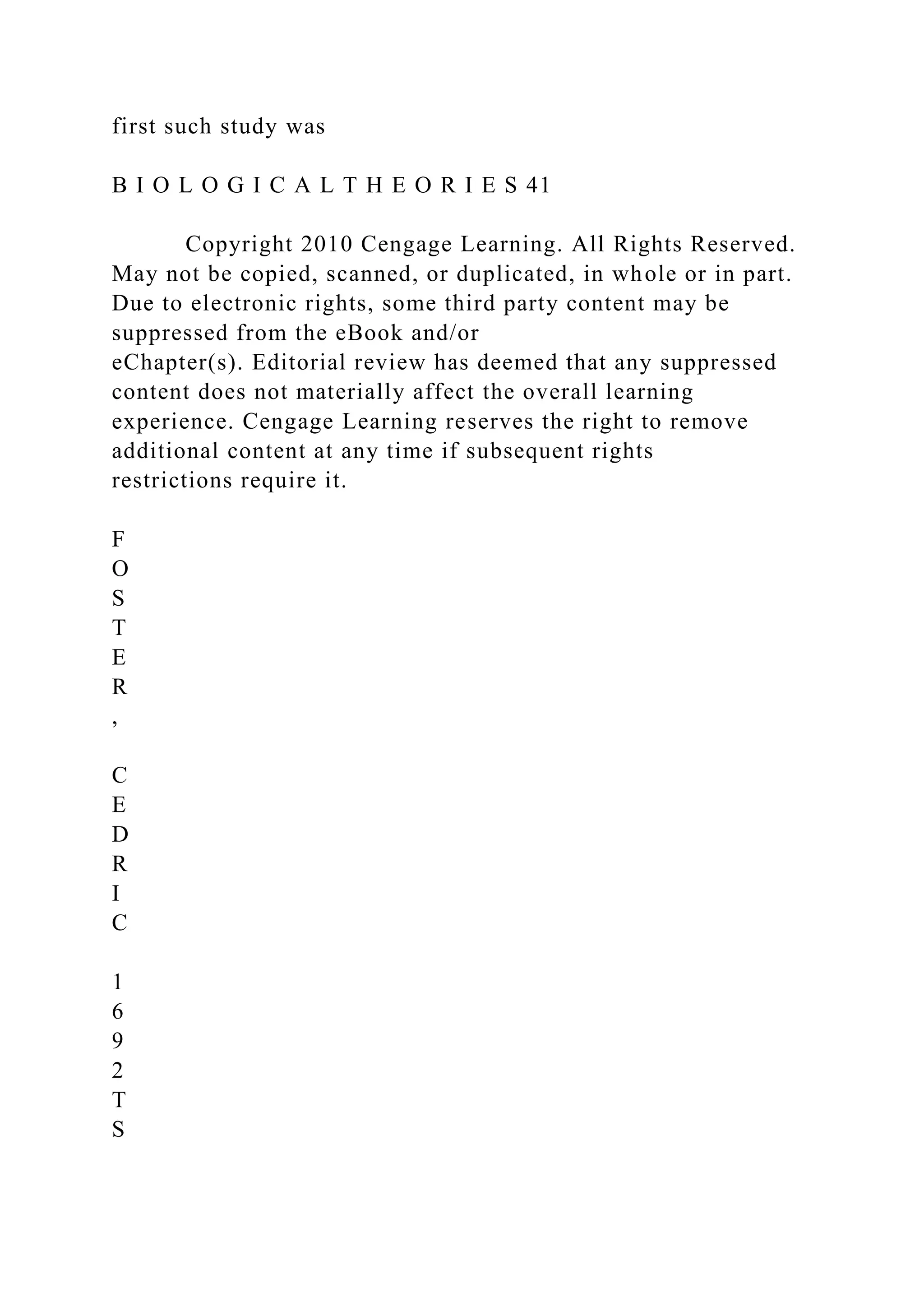
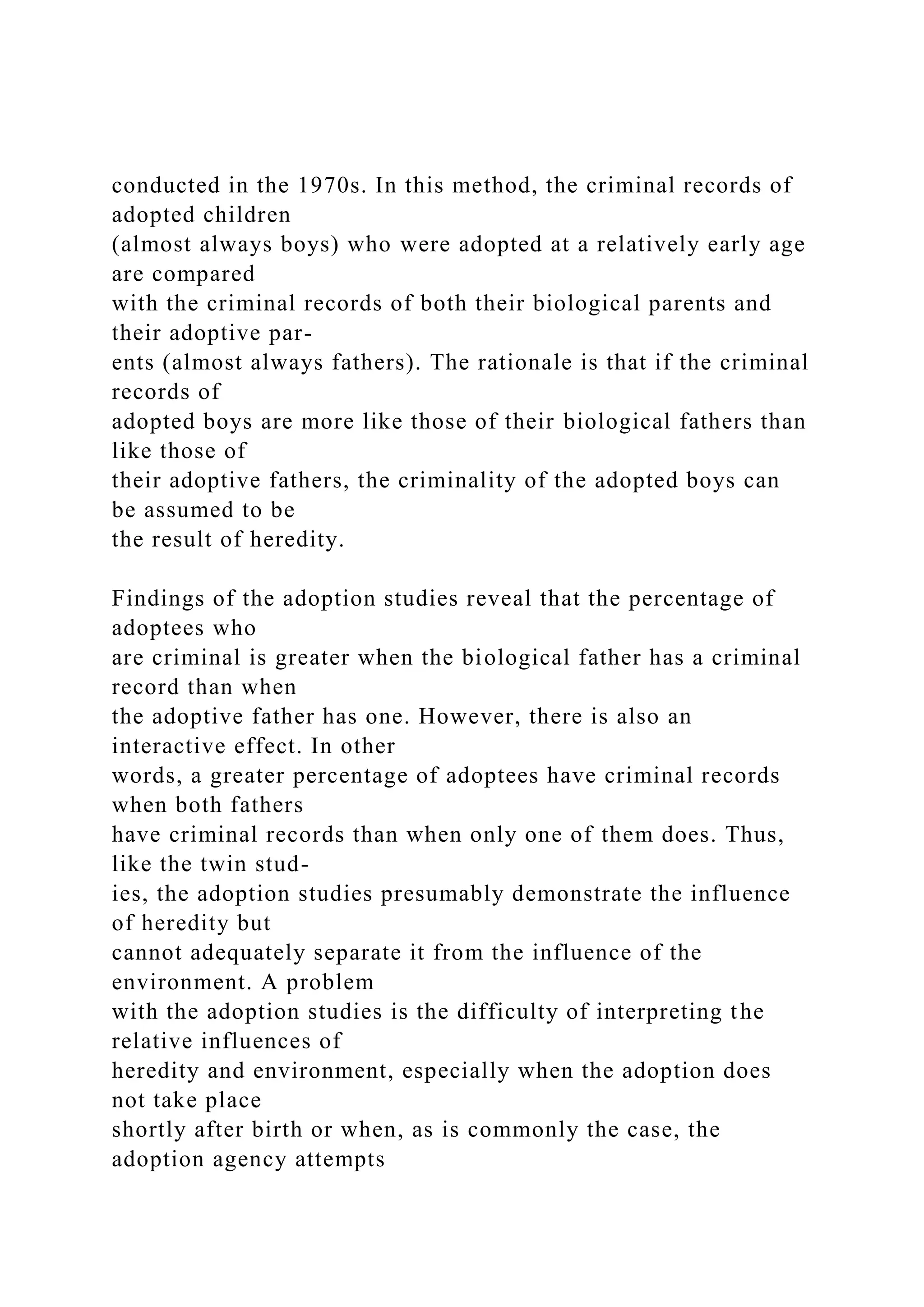
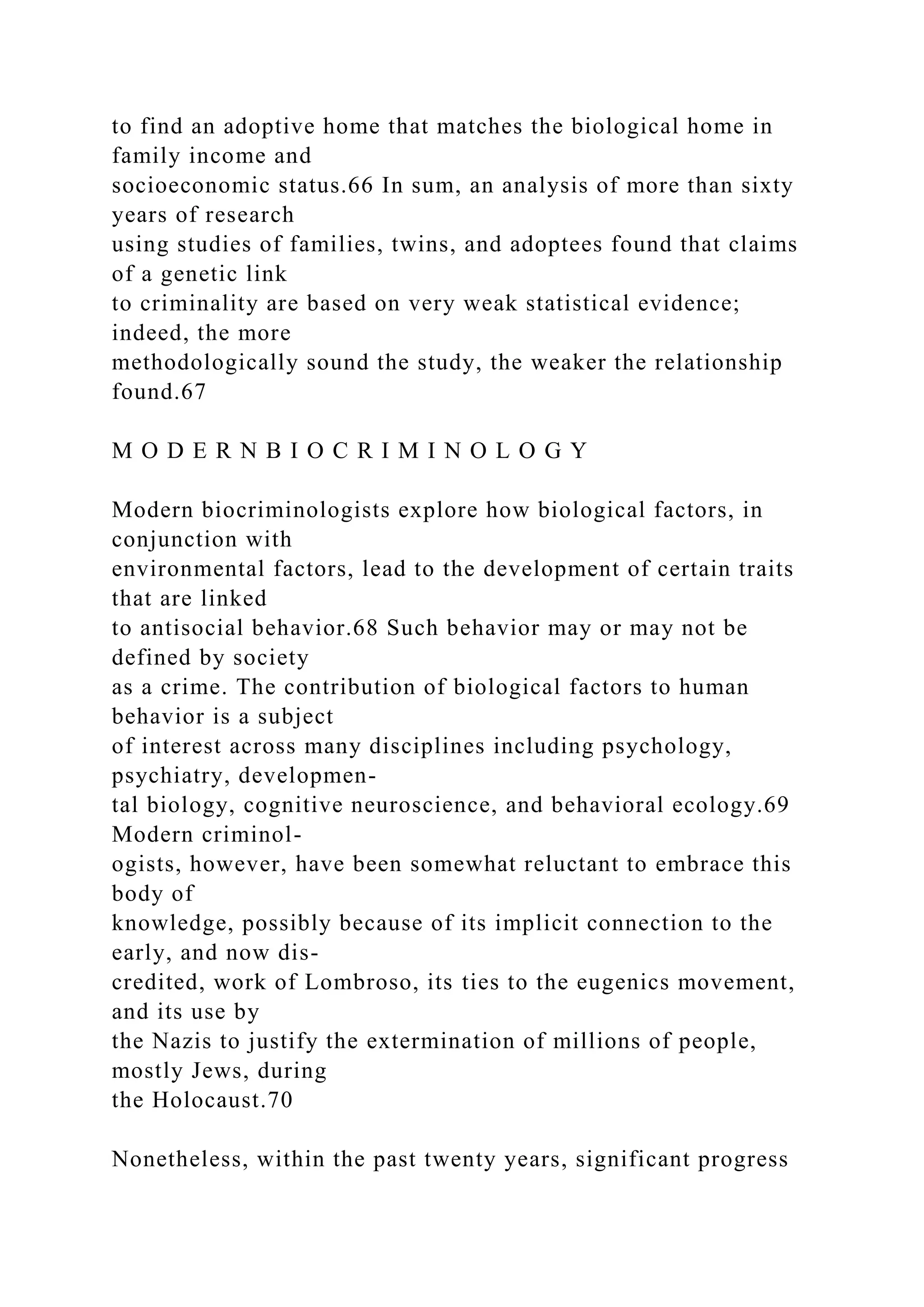
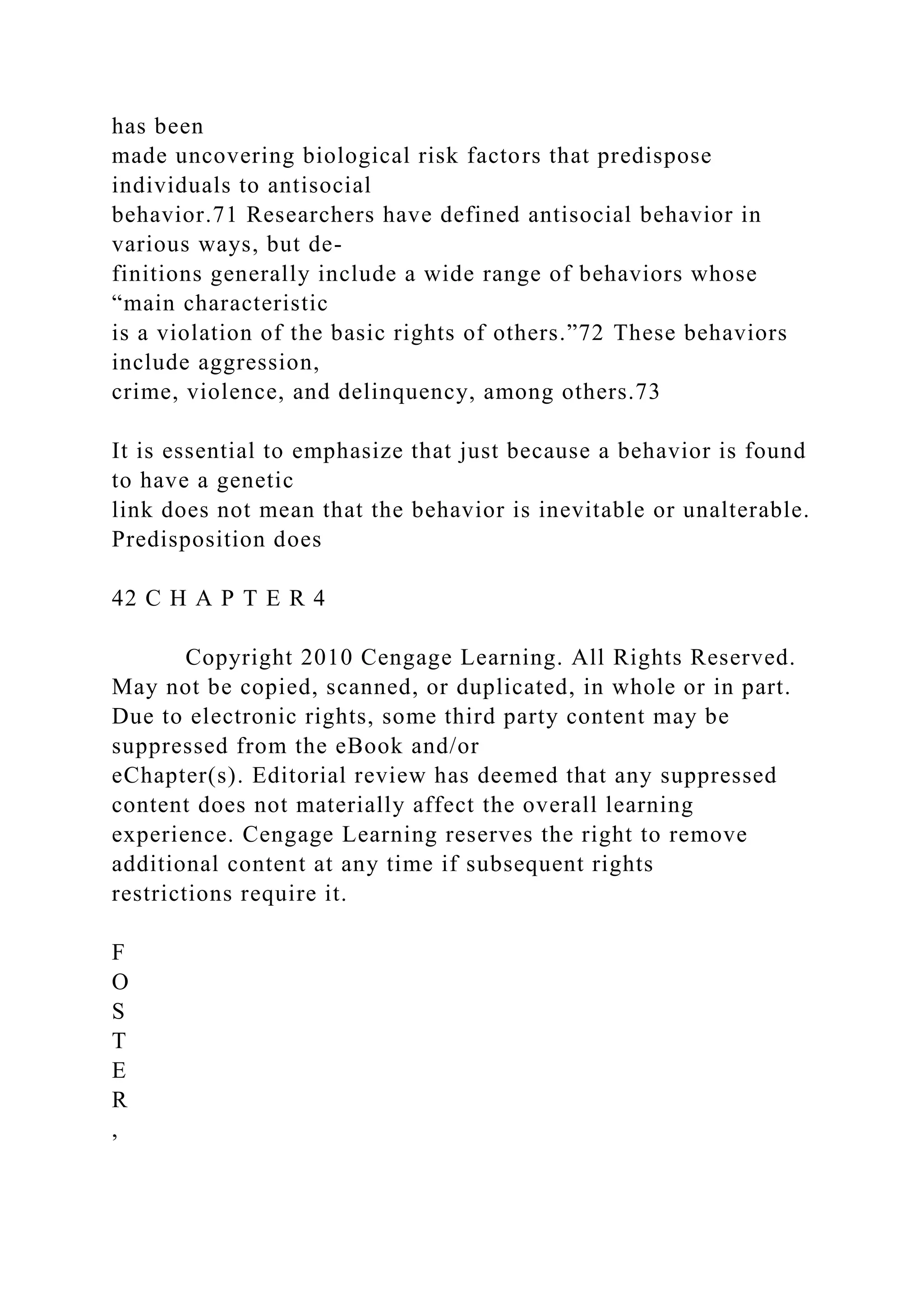
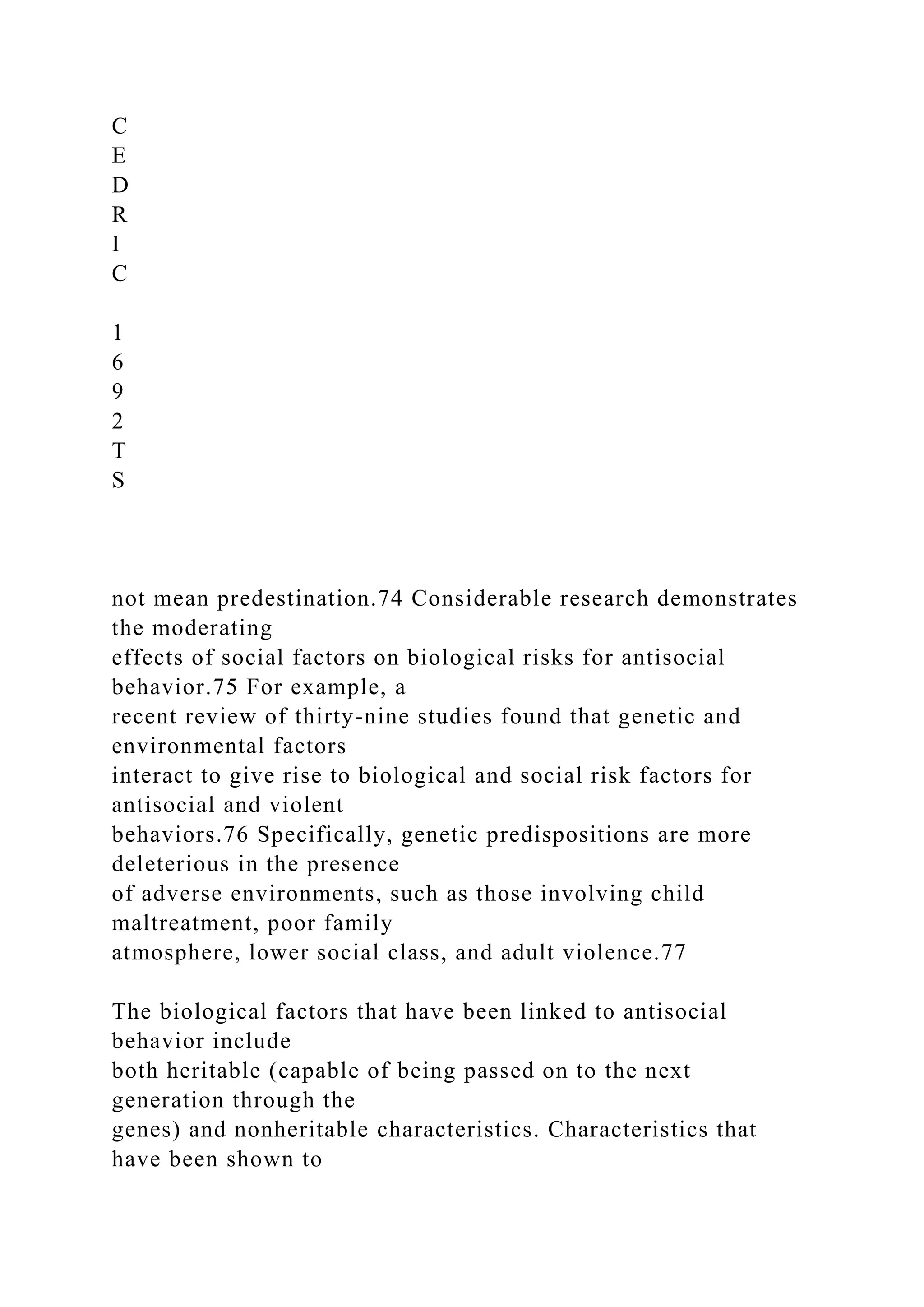
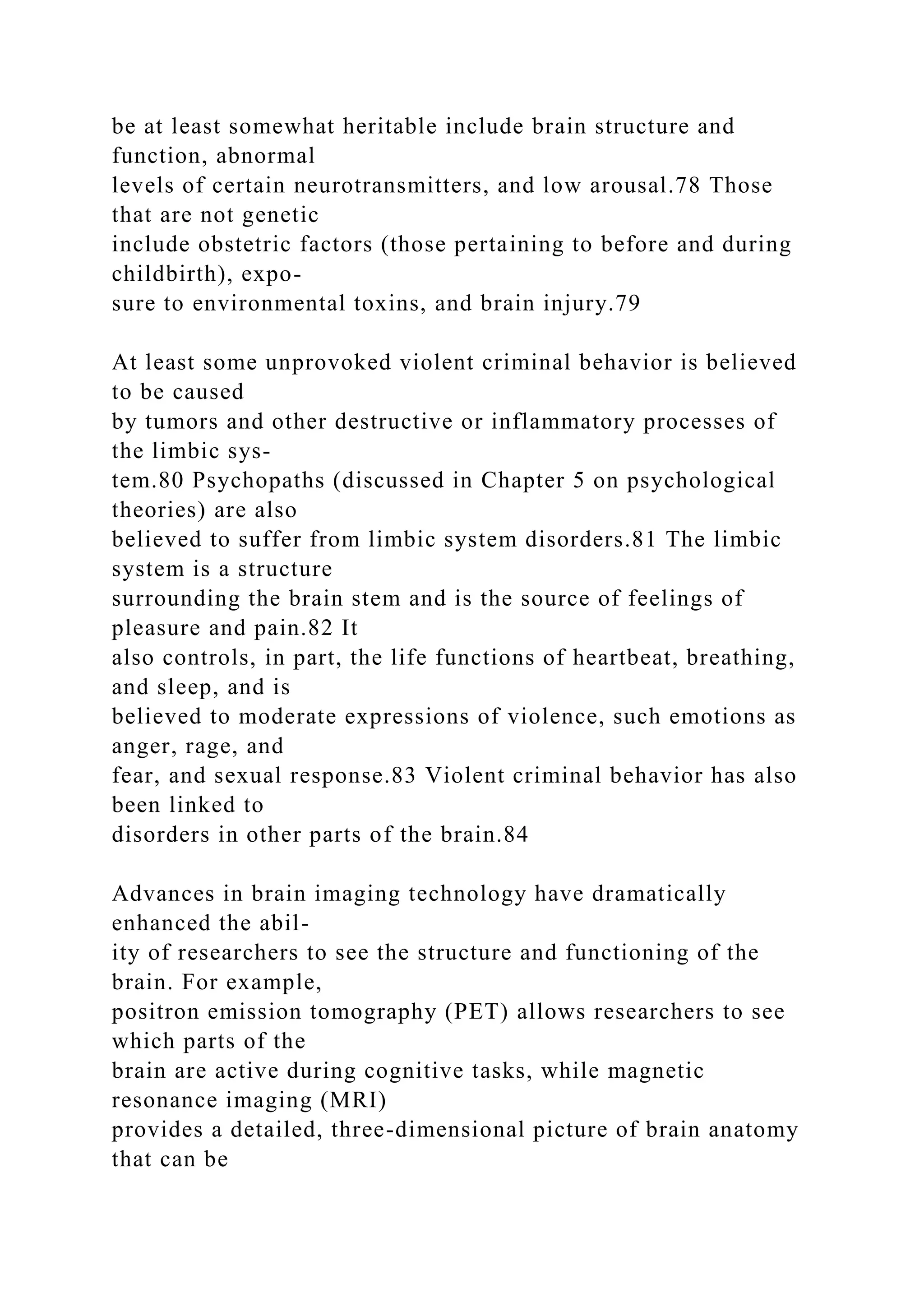

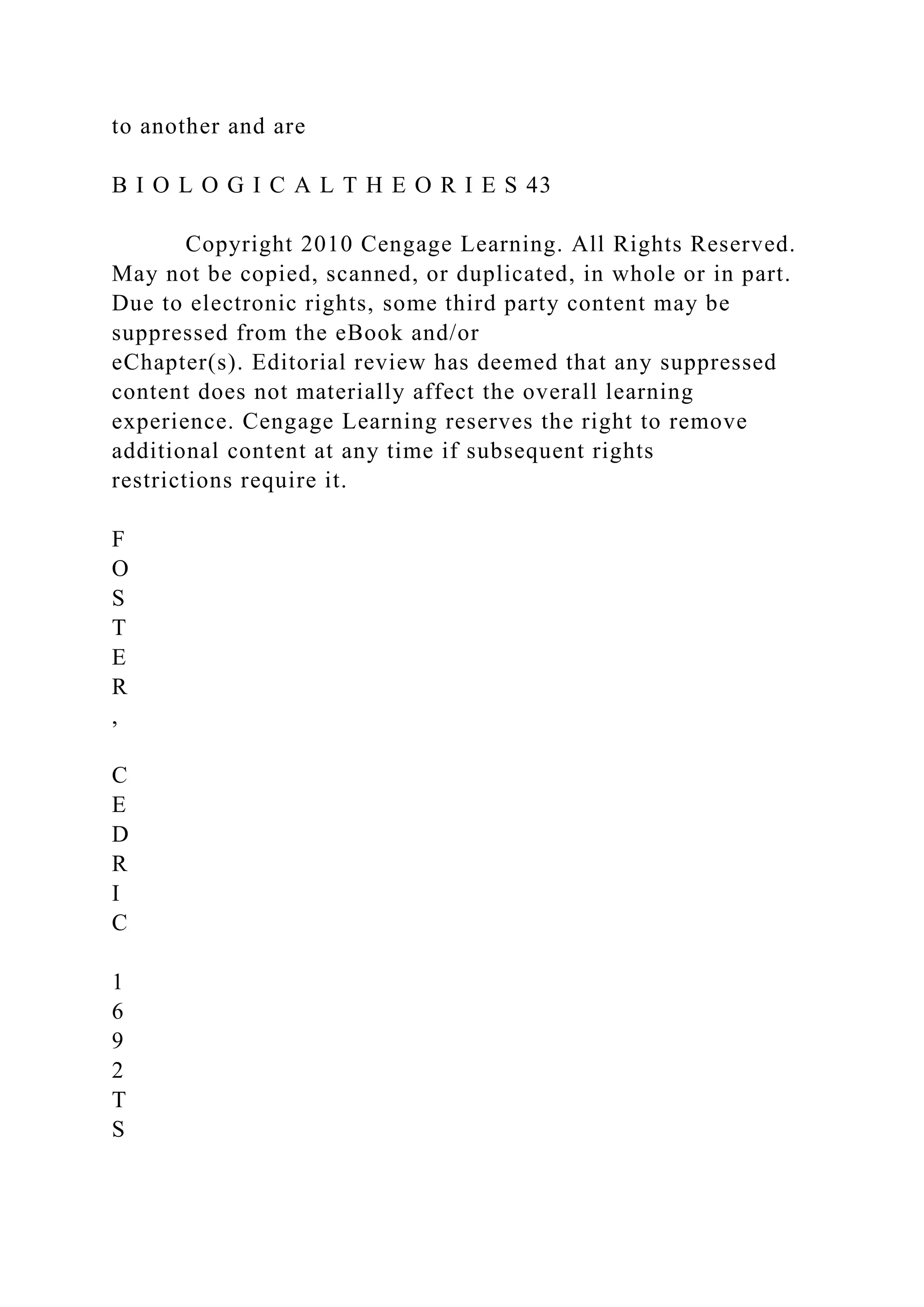
![“crucial for most of the brain’s functions, including mood,
behavior, [and]
emotion.”91 In particular, serotonin, norepinephrine, and
dopamine all have been
implicated in antisocial and impulsive behaviors. Serotonin is
widely held to be a
“braking system” for impulsive drives.92 Abnormally low levels
of serotonin have
been linked to antisocial behaviors involving impulsivity,
including substance
abuse, suicidal impulses, and completed suicides.93 On the
other hand, high levels
of dopamine have been associated with violence, aggression,
gambling, and
substance abuse.94 Apparently, cocaine increases the level of
dopamine, which
activates the limbic system to produce pleasure.95 Finally,
elevated levels of norepi-
nephrine also have been correlated with aggressive behavior.96
While level and
activity of neurotransmitters is considered a heritable
characteristic, neurotransmit-
ters are highly sensitive to environmental manipulations.97
Sociocultural factors
such as socioeconomic status, stress, and nutrition have been
found to influence
the relationship between neurotransmitters and behavior.98
The relationship between low arousal and antisocial and
criminal behaviors
has been found to be “the strongest psychophysiological
finding” in modern bio-
criminological research.99 Psychophysiology refers to how a
psychological state or](https://image.slidesharecdn.com/5220191cs146datastructuresandalgorithmsc-221201210134-446698d9/75/5220191CS146-Data-Structures-and-AlgorithmsC-docx-108-2048.jpg)
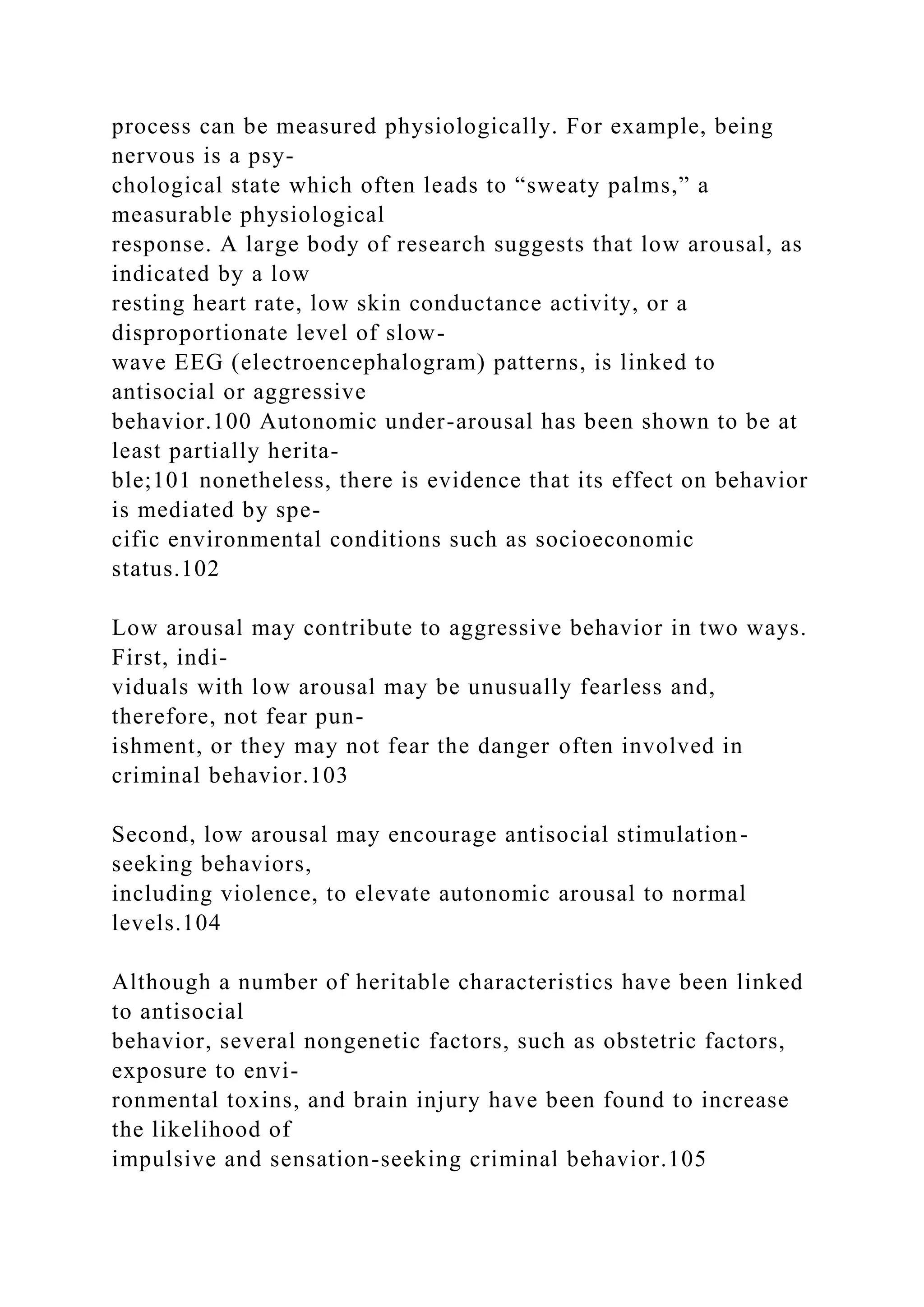
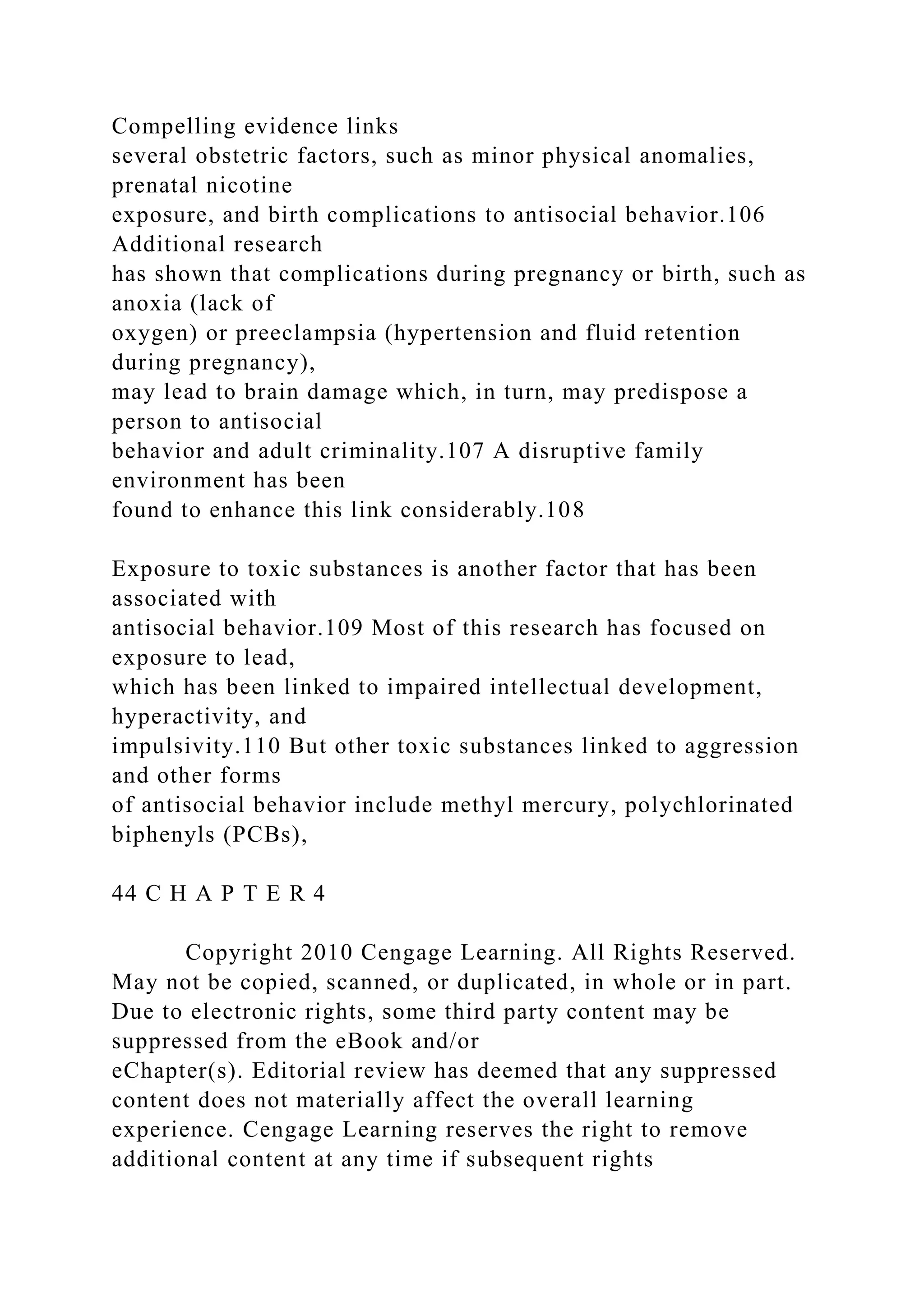
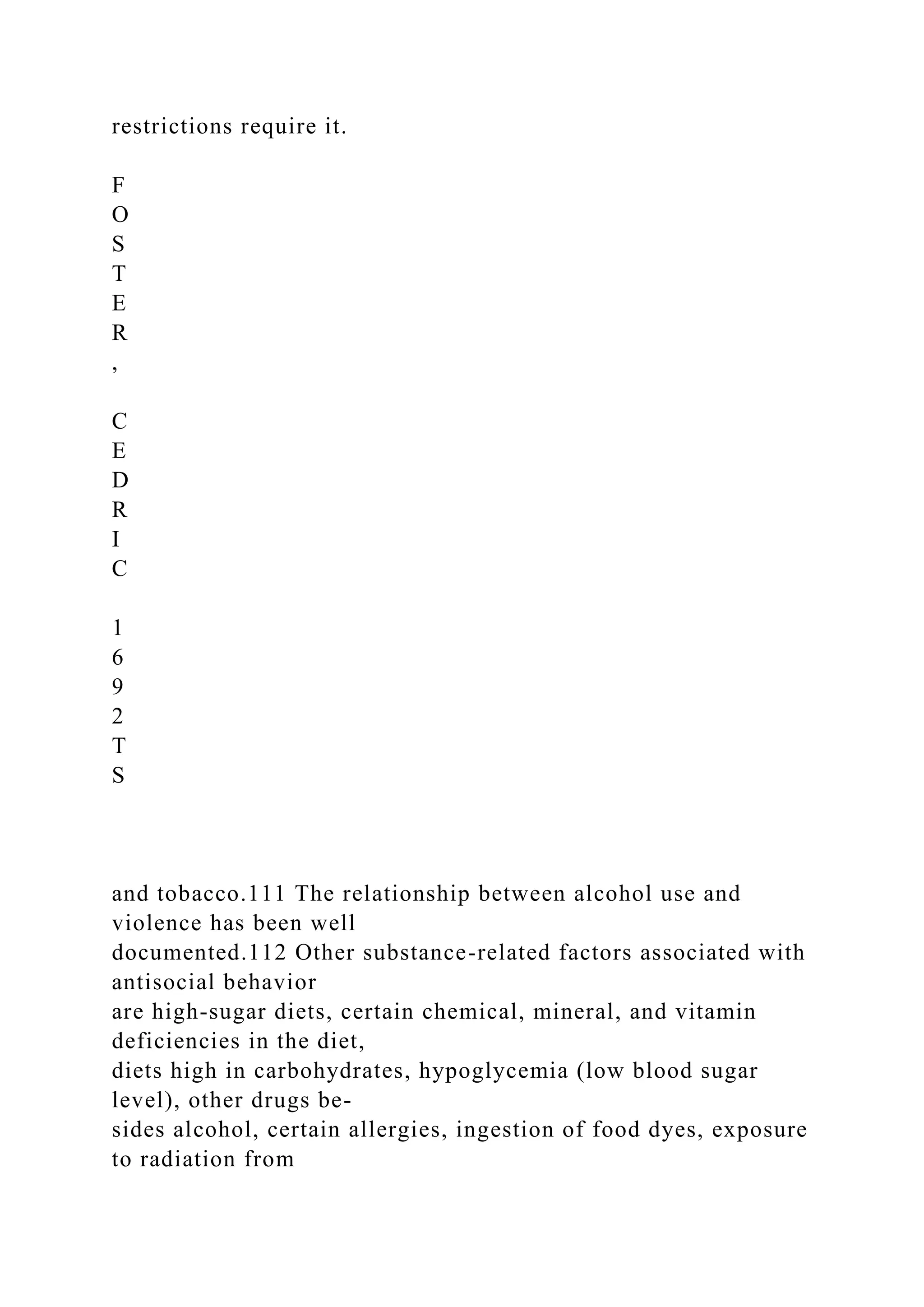
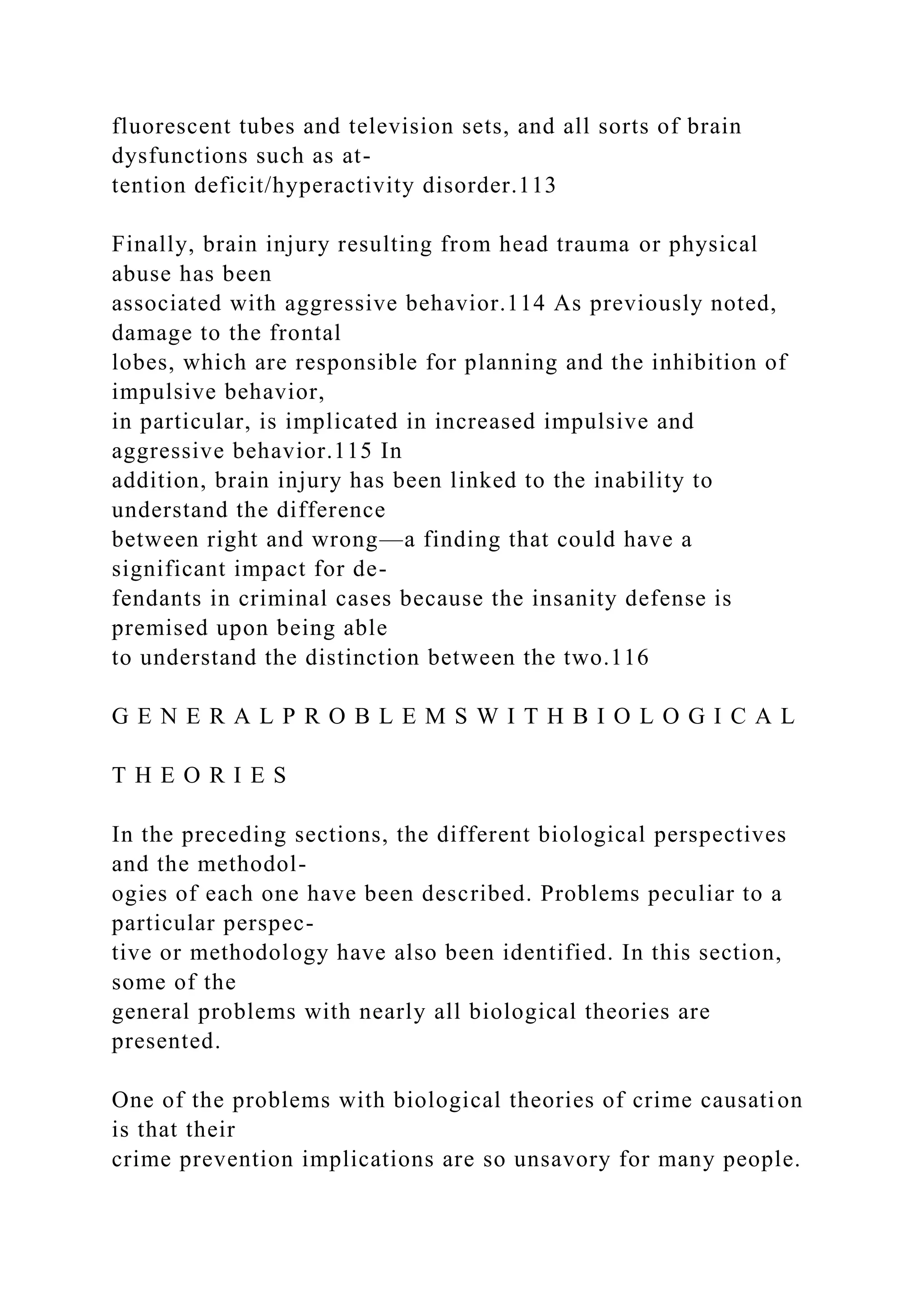
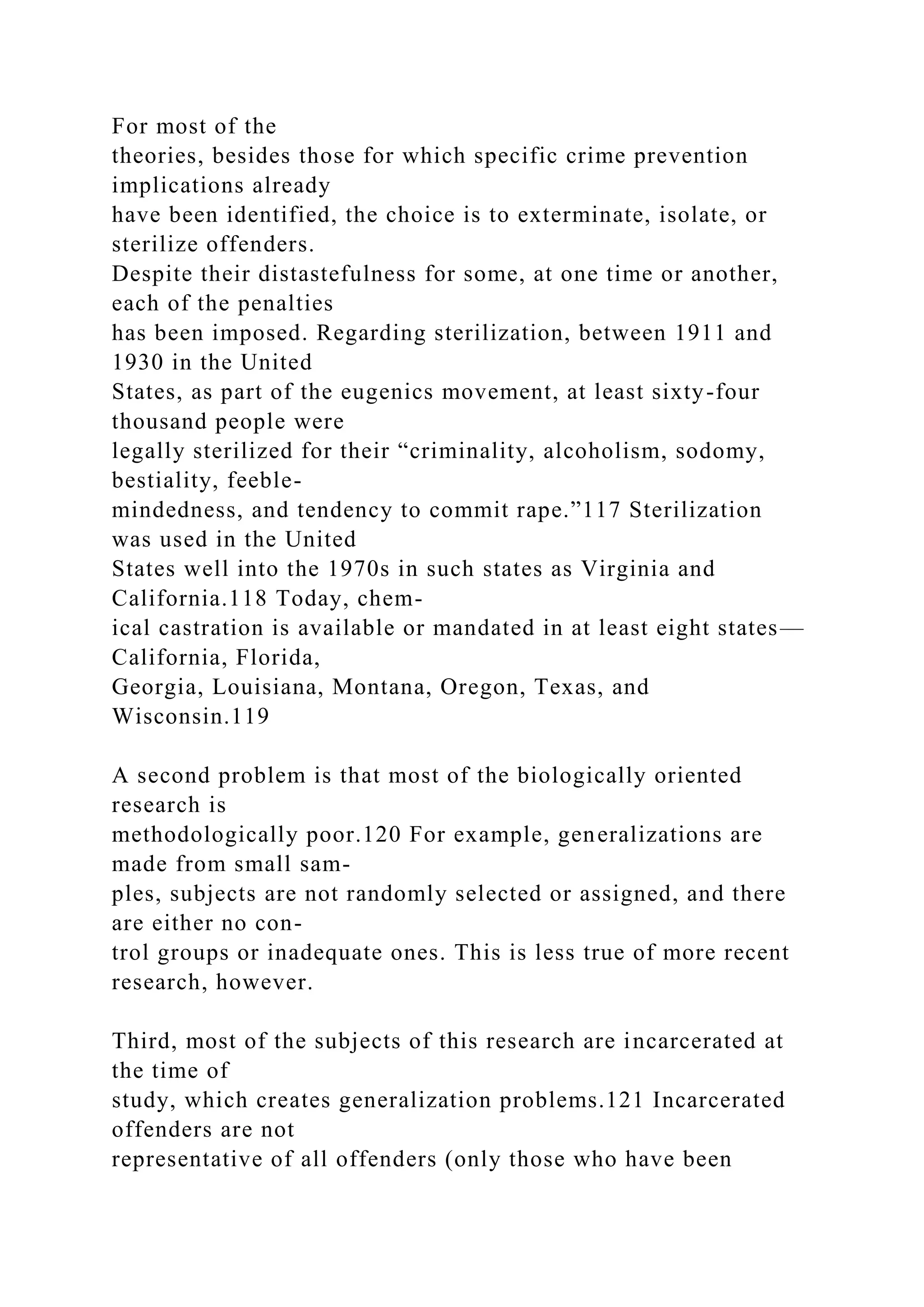
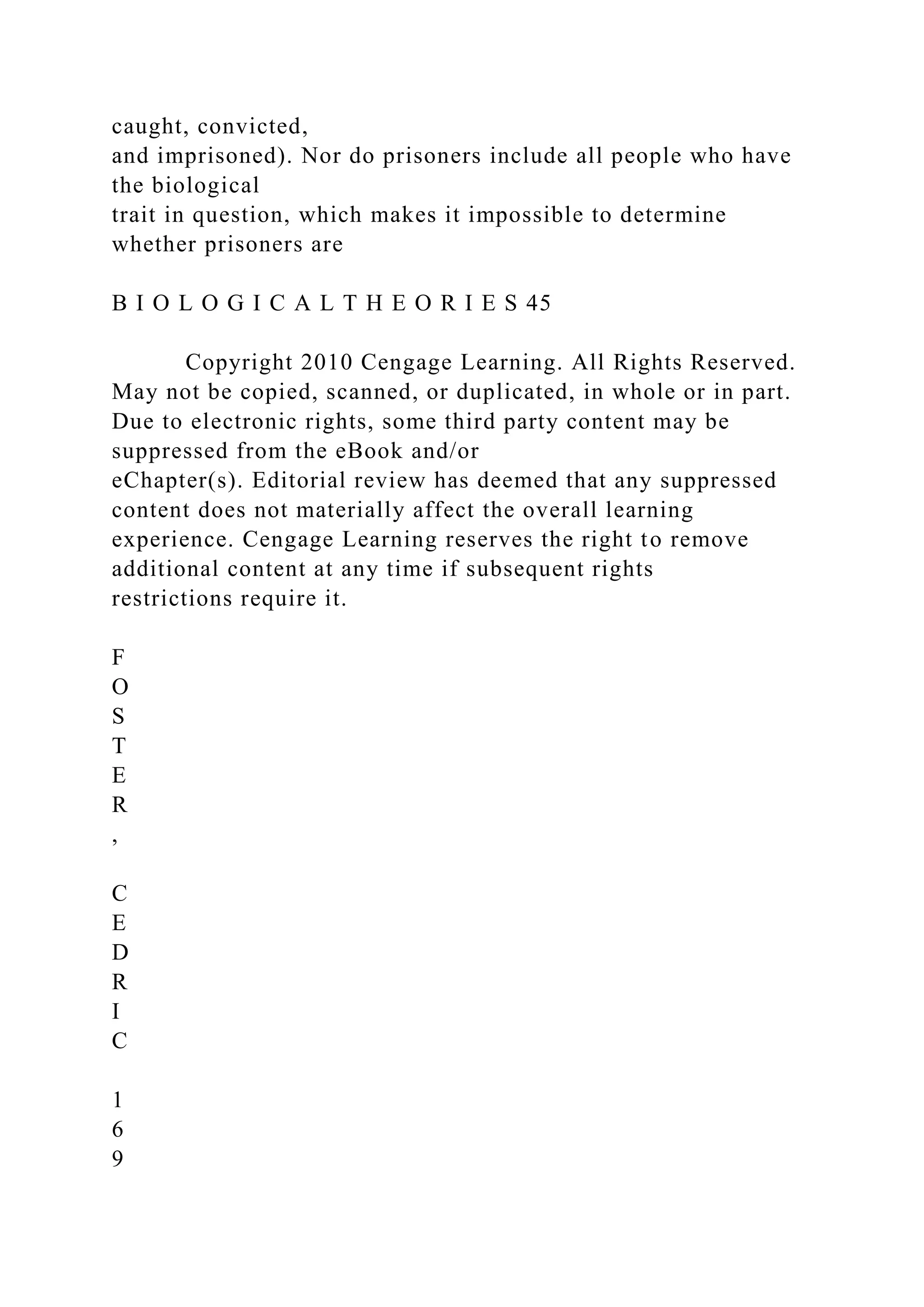
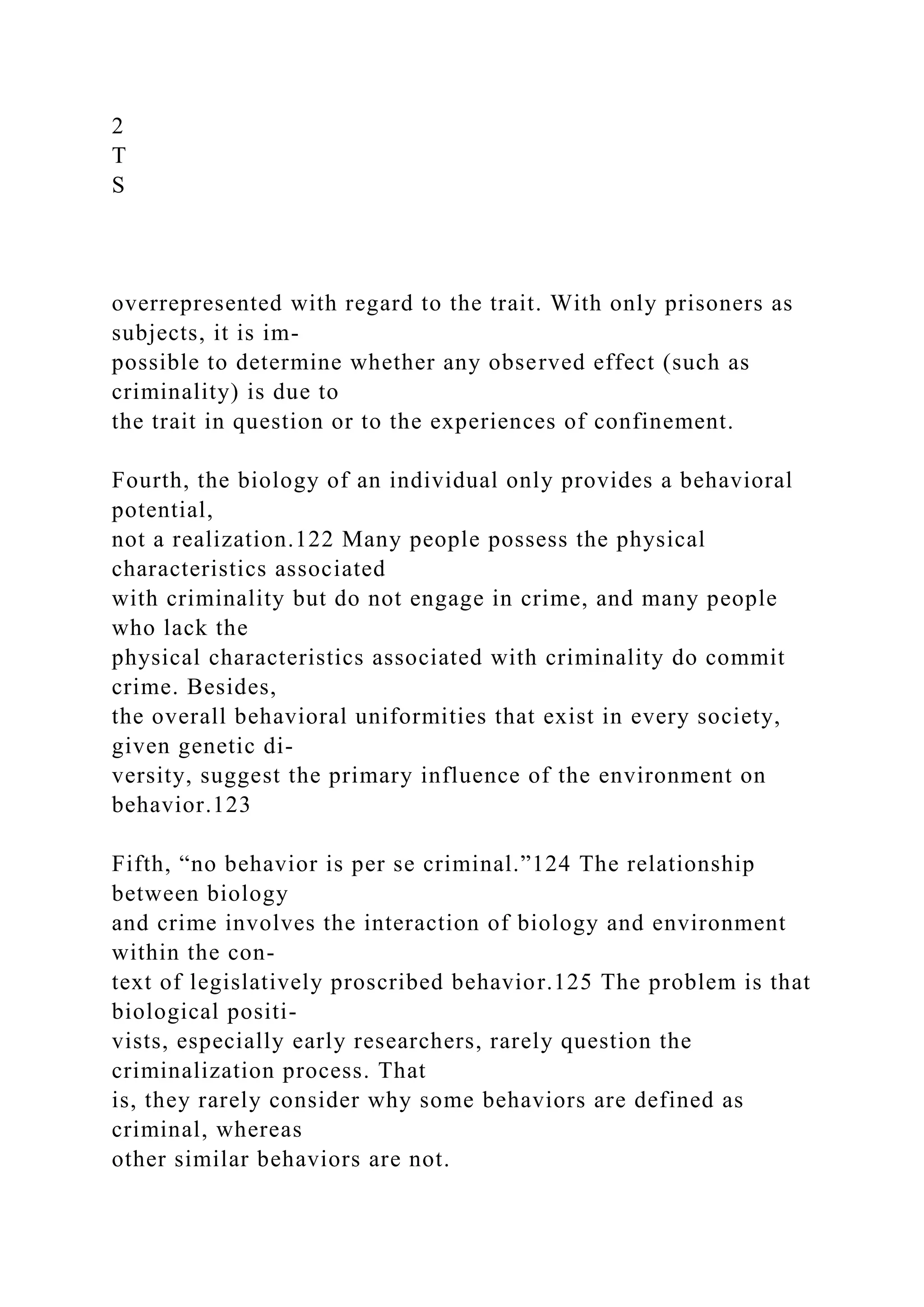
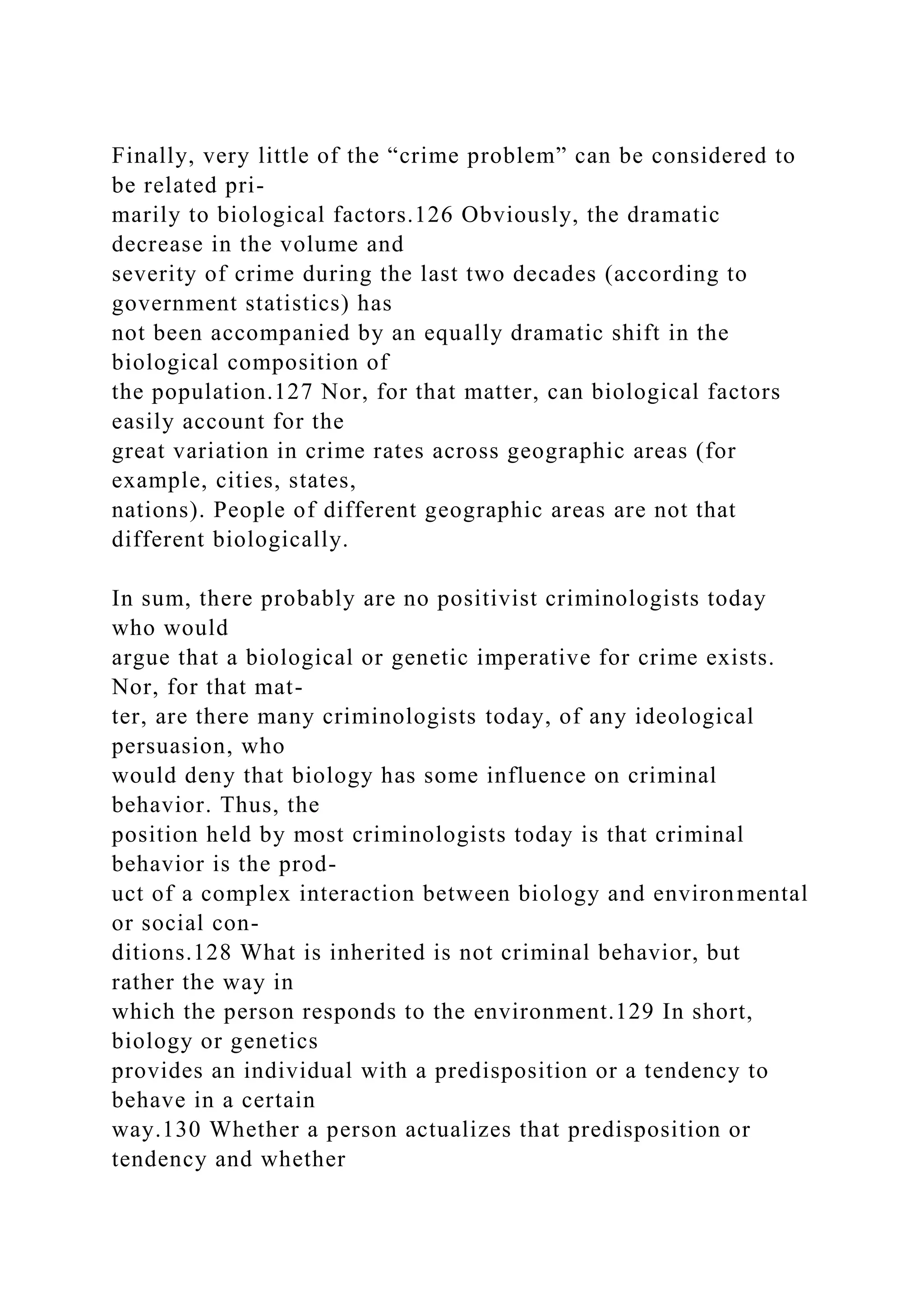

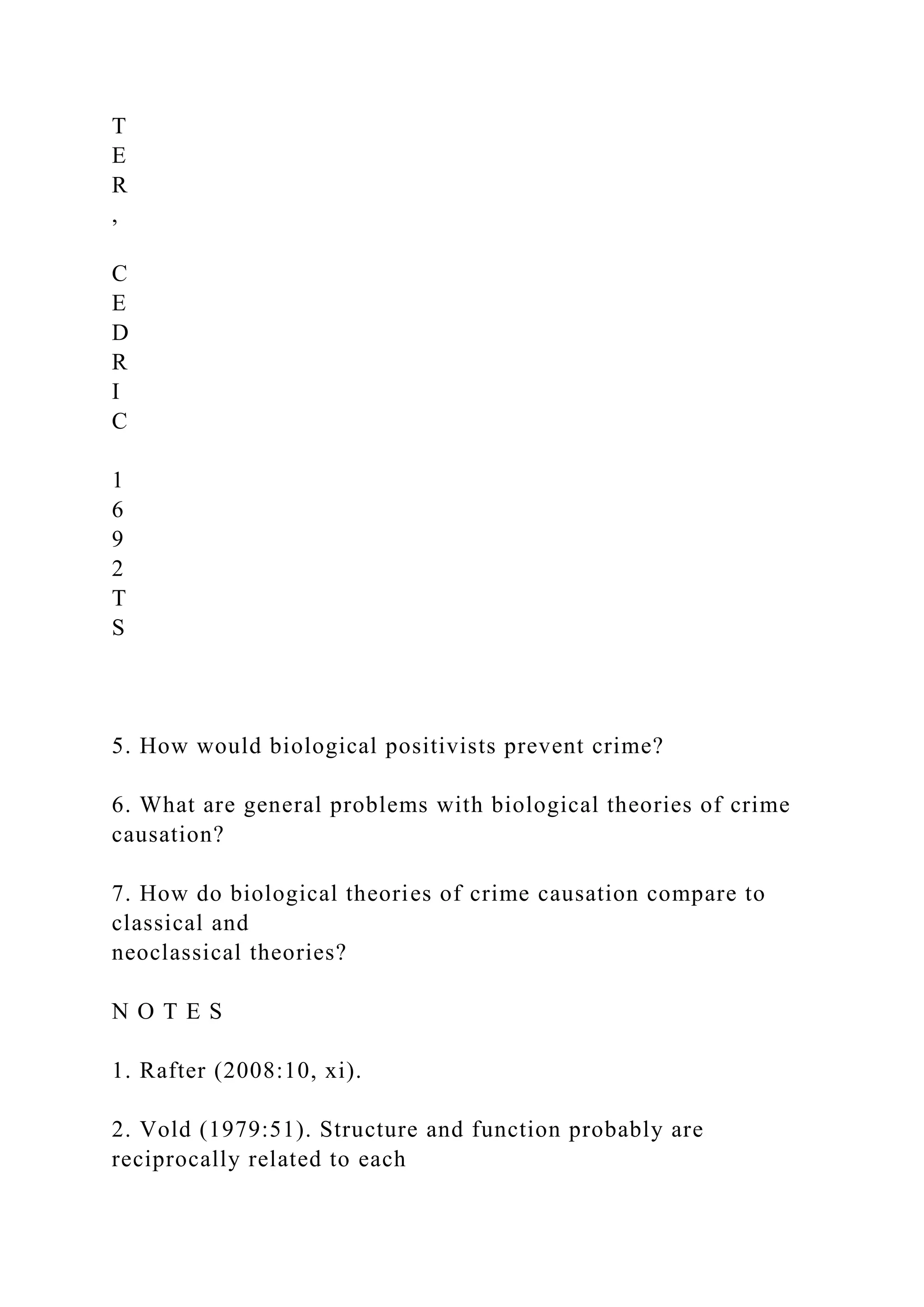

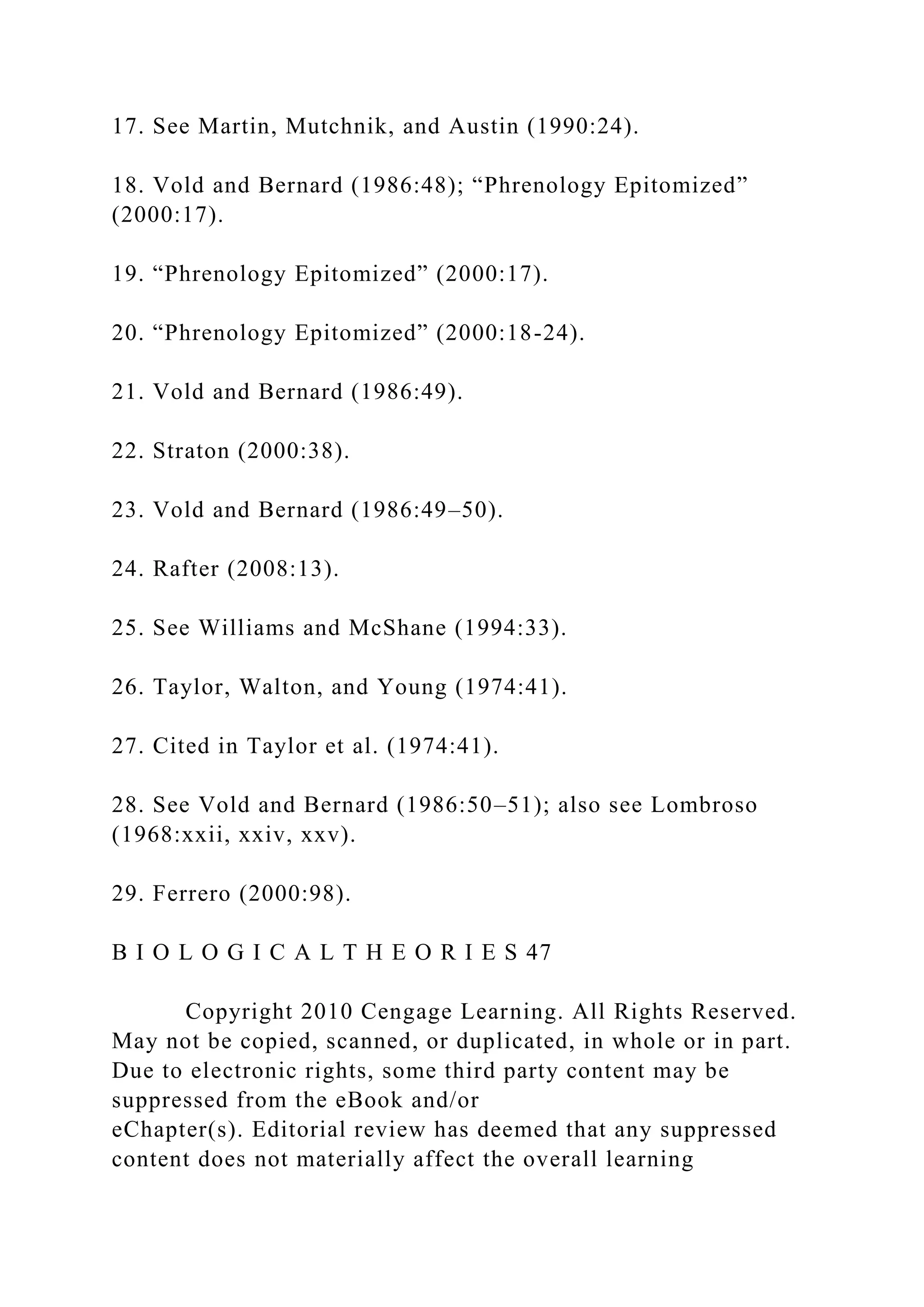
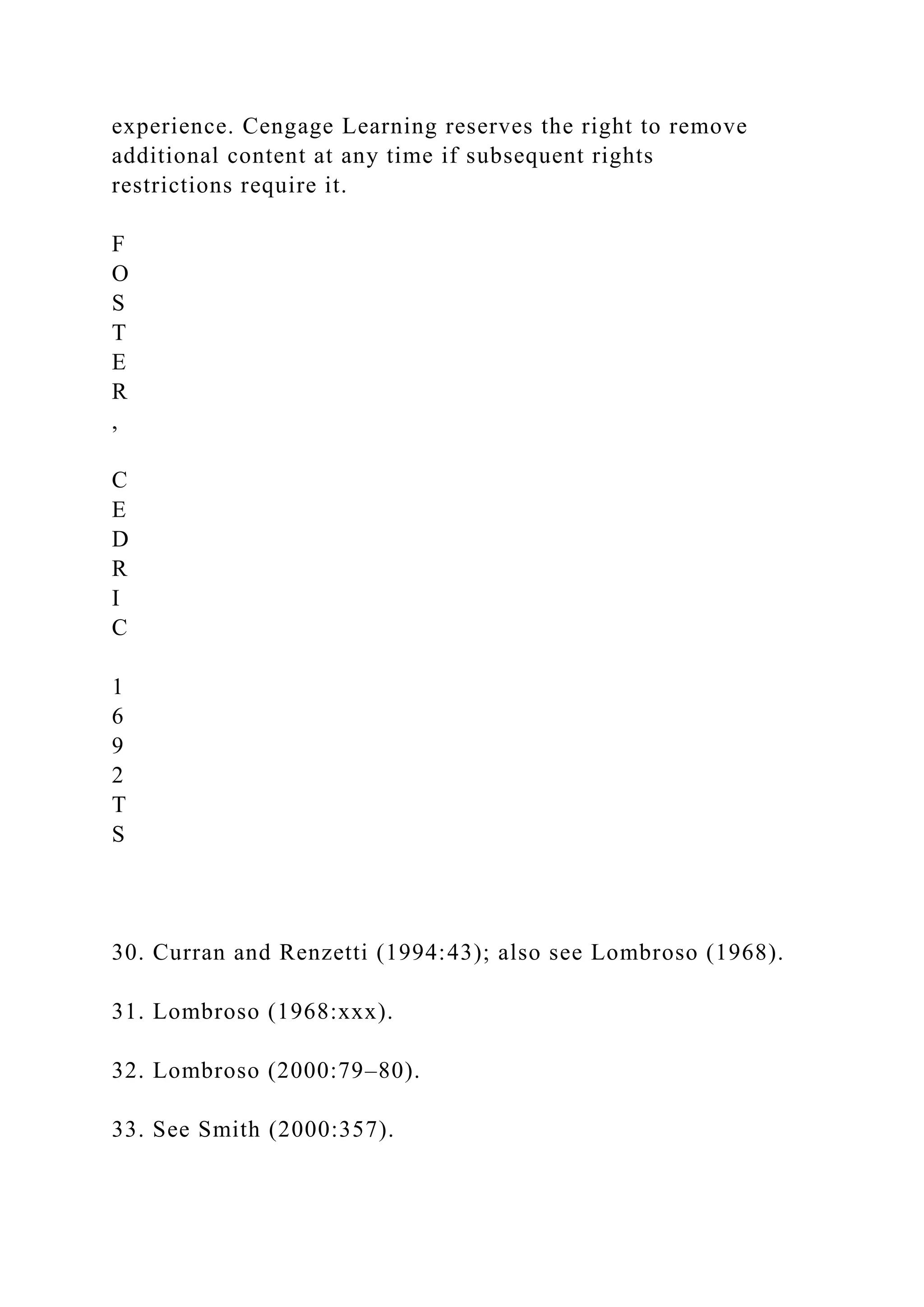
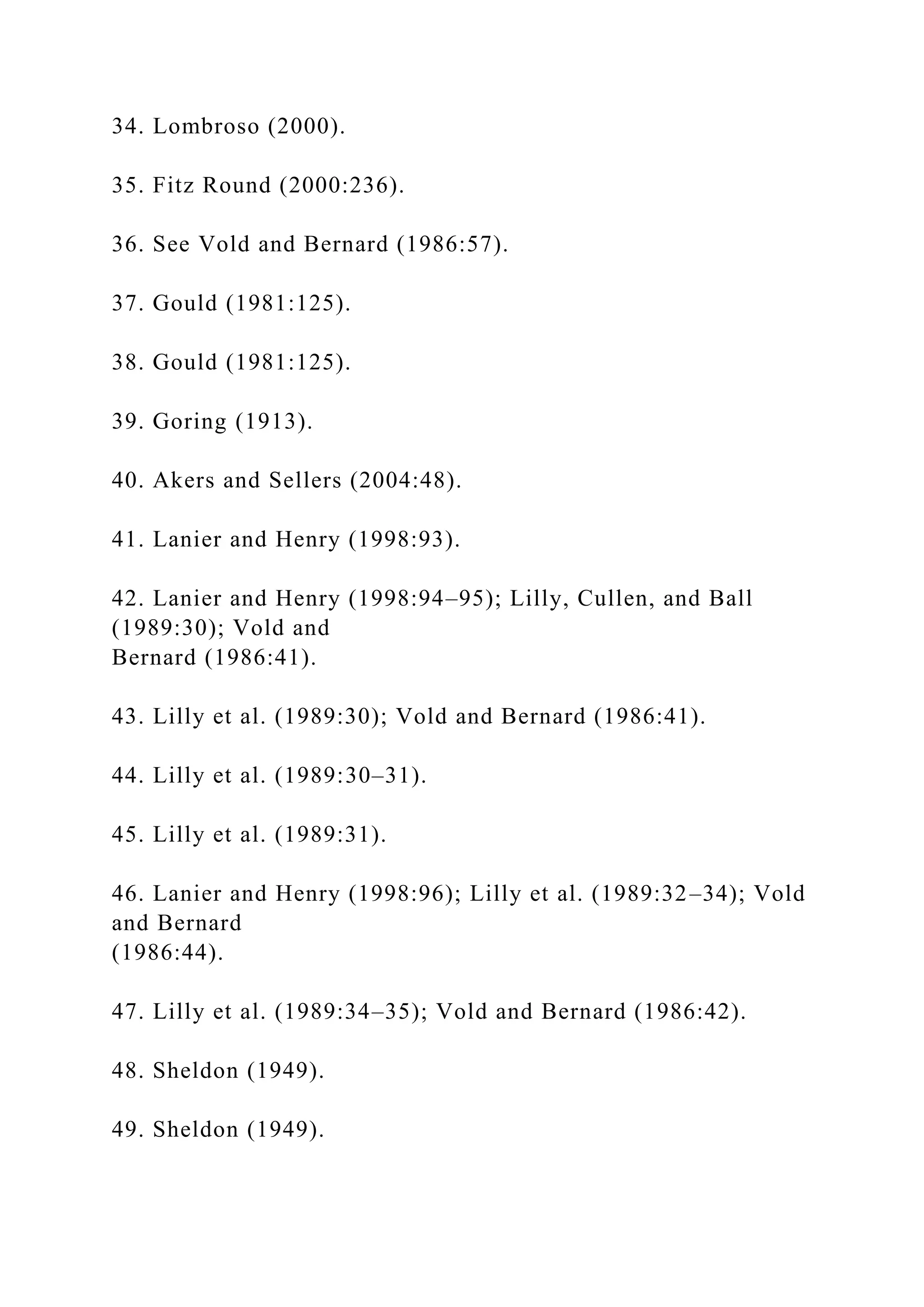

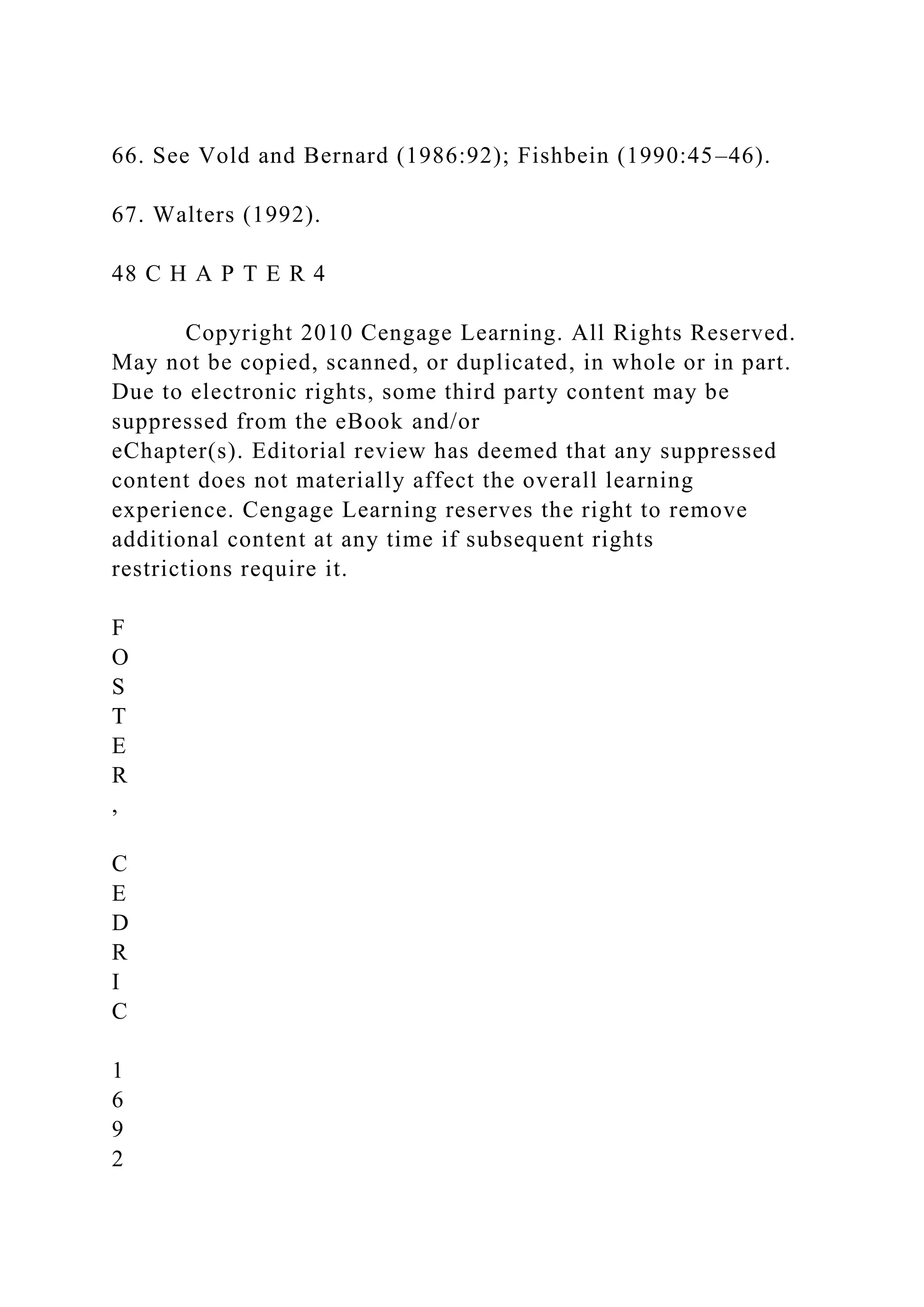

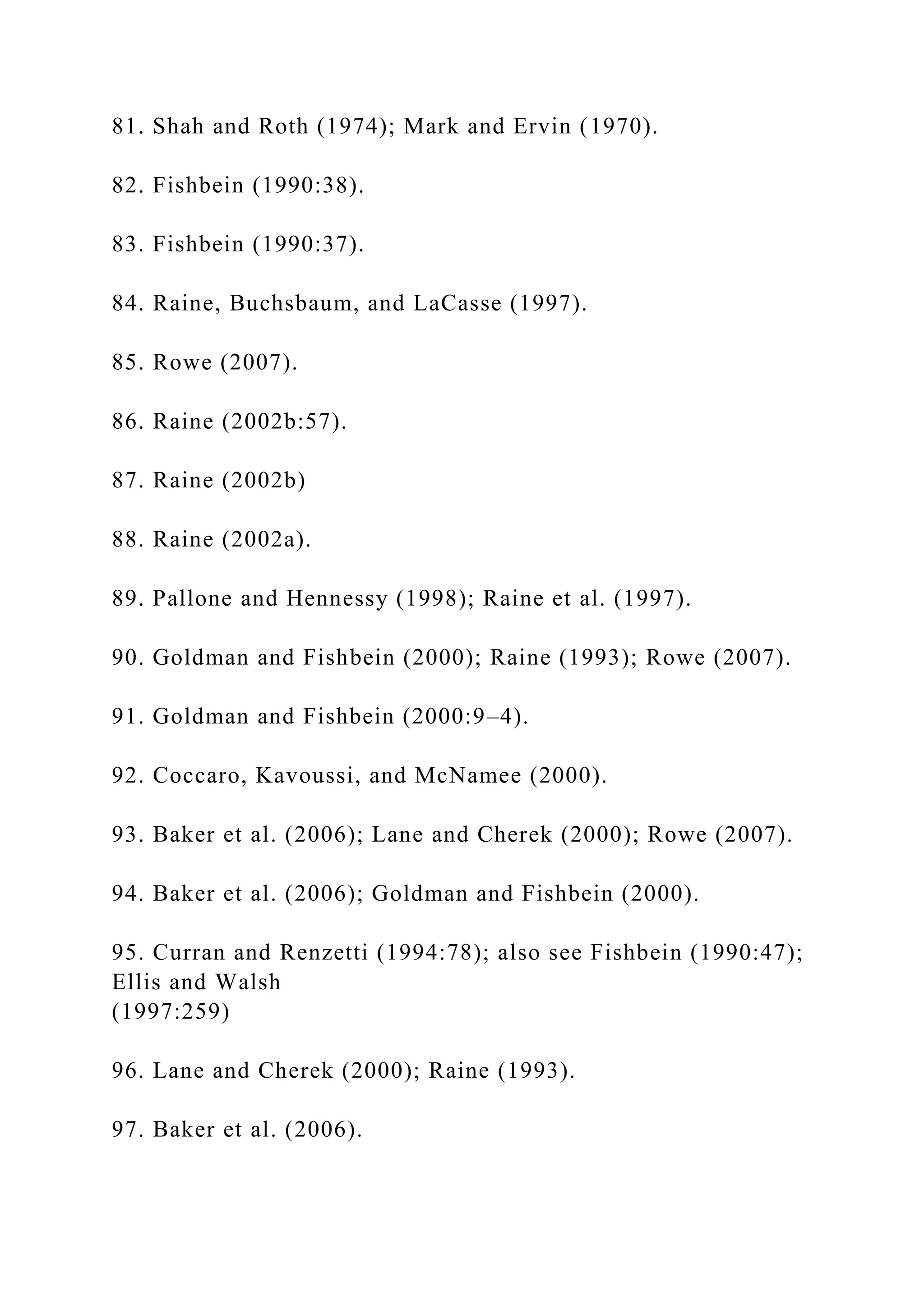
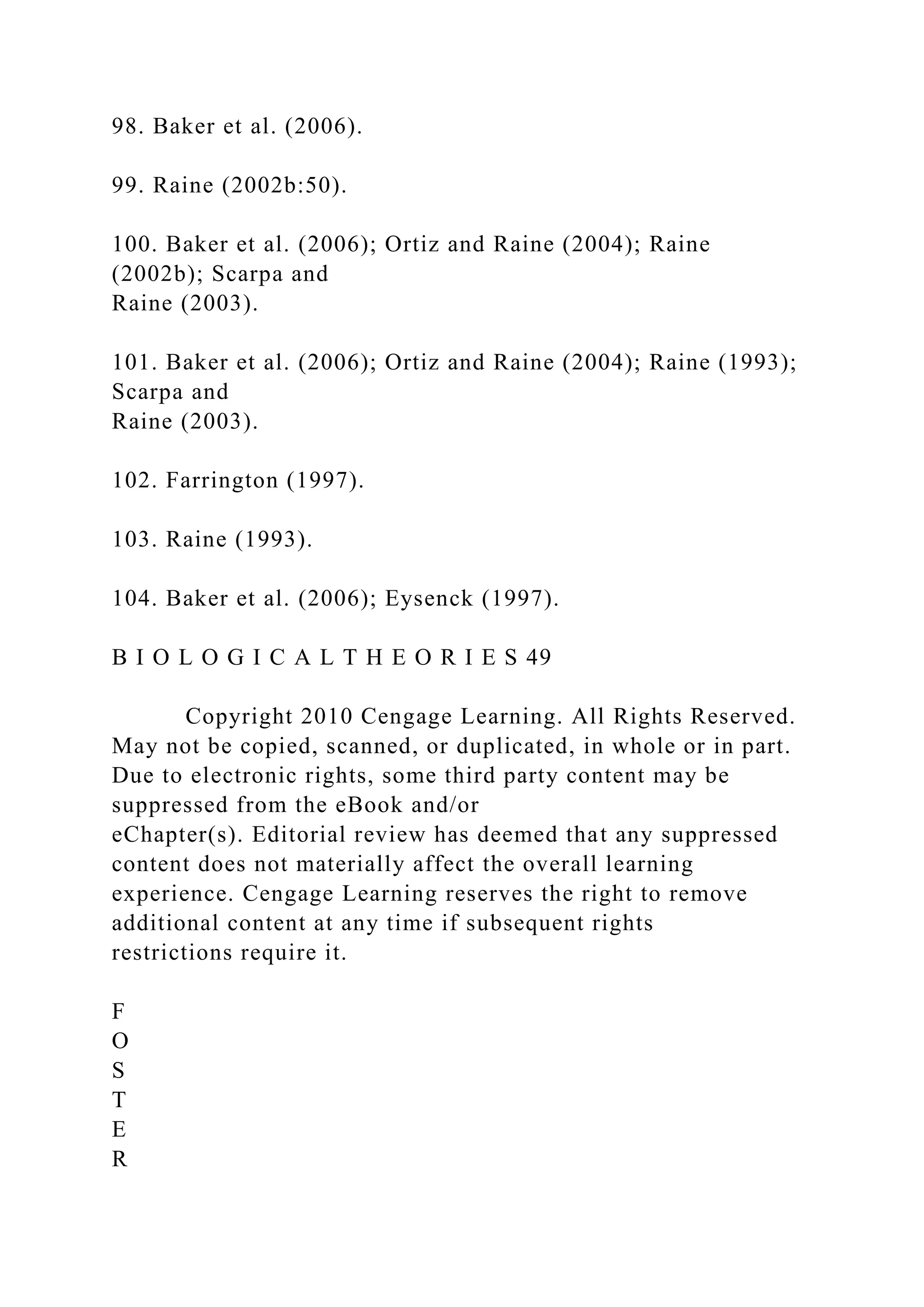
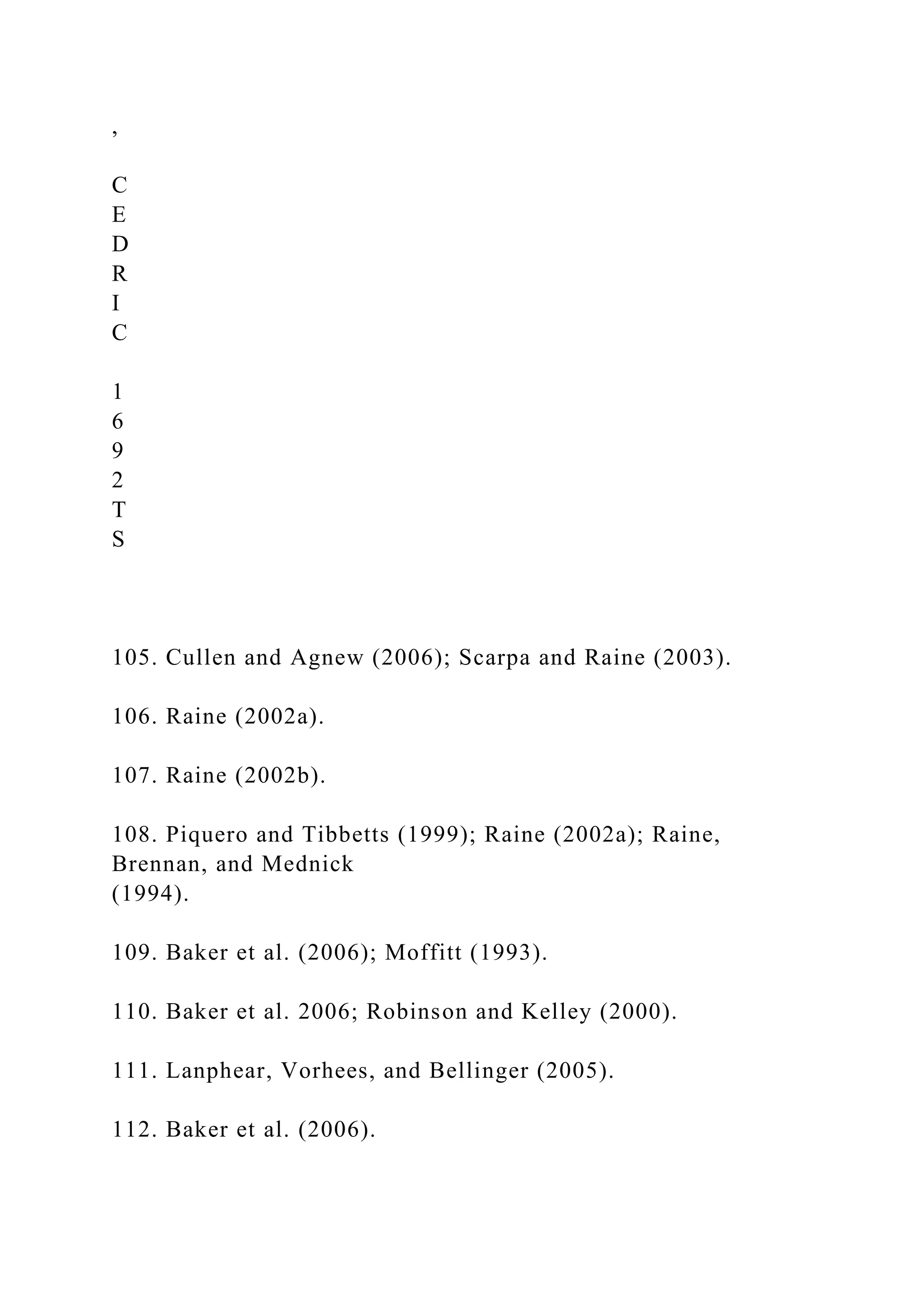

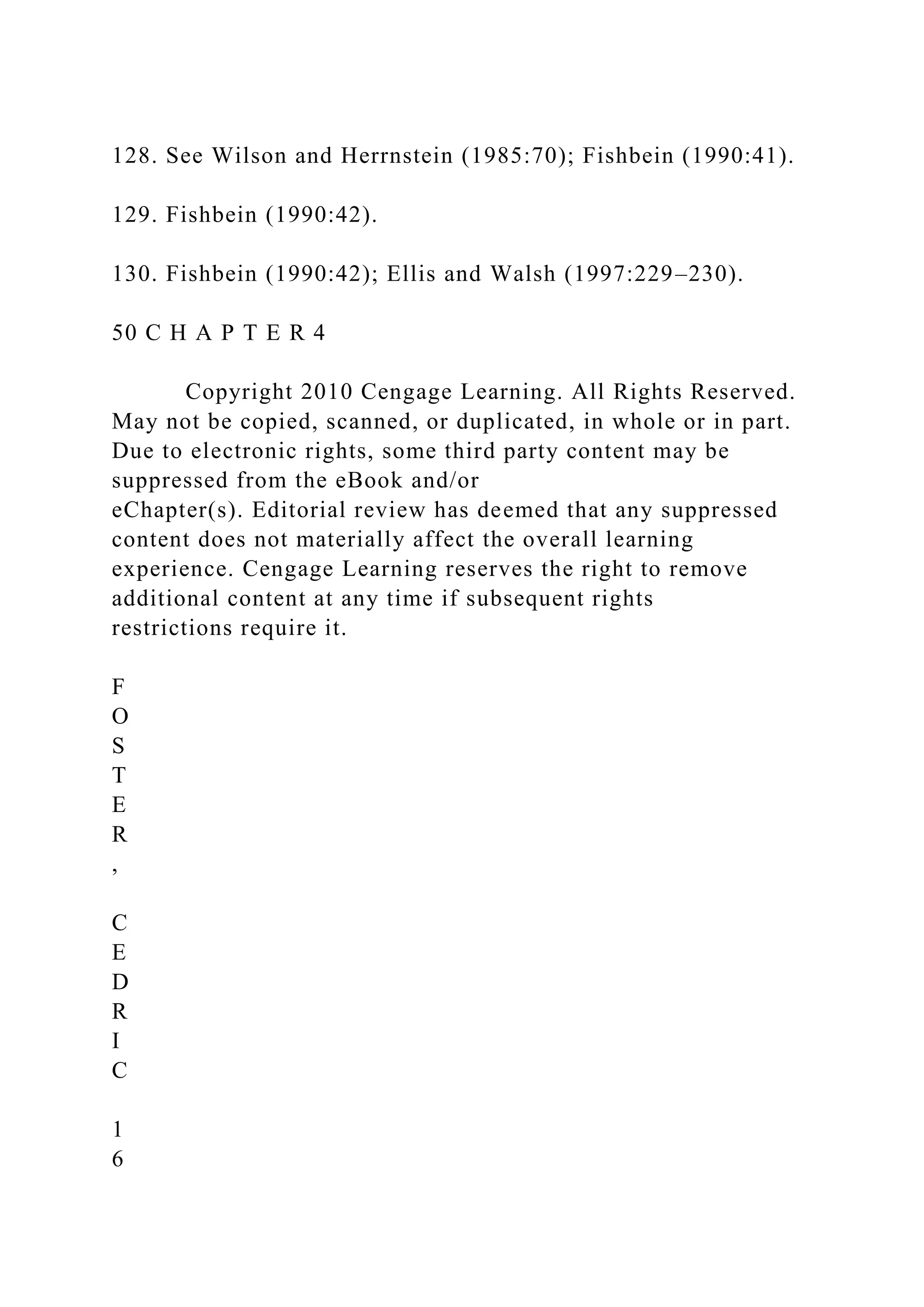

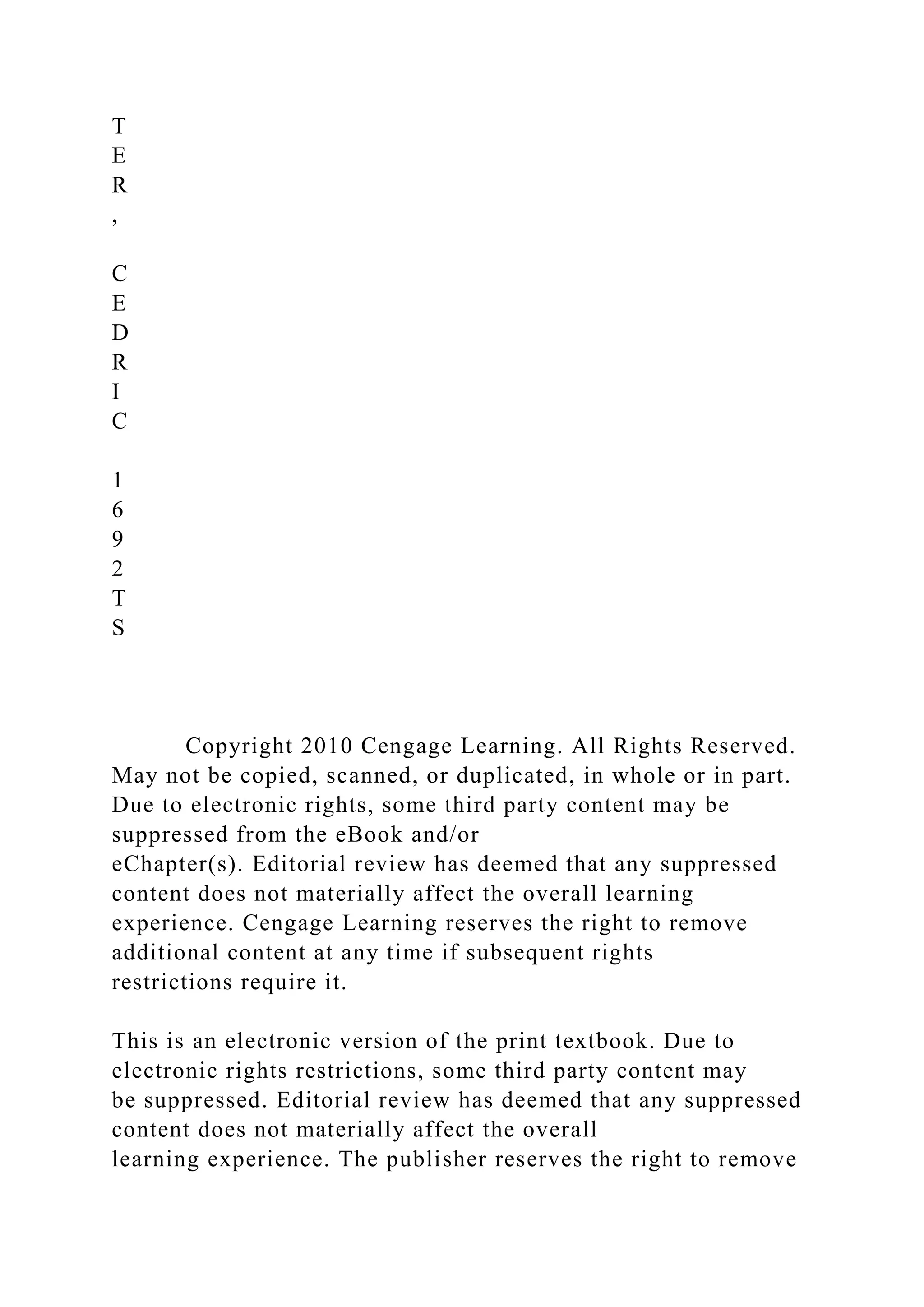

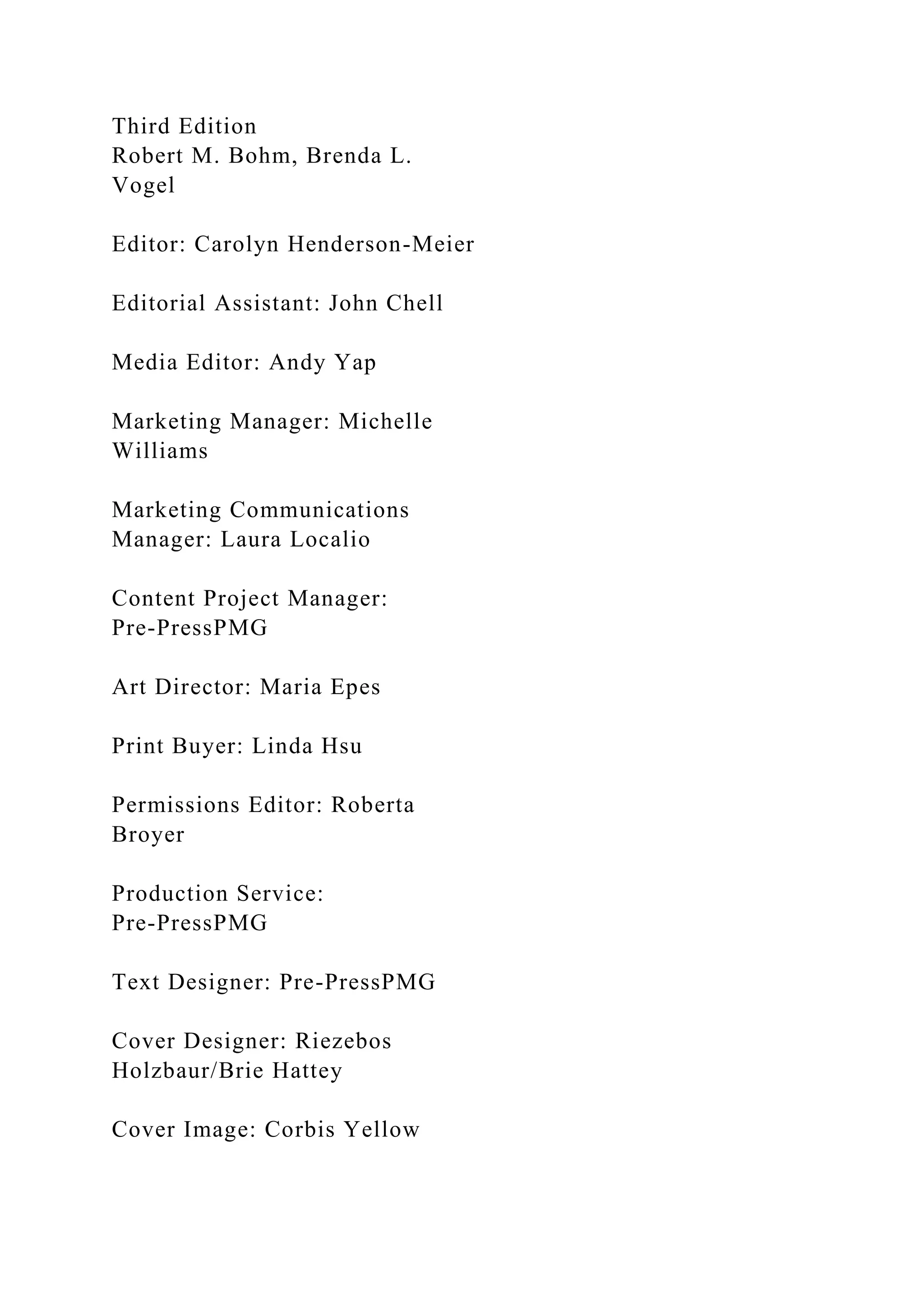
![Compositor: Pre-PressPMG
© 2011, 2001, 1997 Wadsworth, Cengage Learning
ALL RIGHTS RESERVED. No part of this work covered by the
copyright herein may be reproduced, transmitted, stored or used
in
any form or by any means graphic, electronic, or mechanical,
including but not limited to photocopying, recording, scanning,
digitizing, taping, Web distribution, information networks, or
information storage and retrieval systems, except as permitted
under Section 107 or 108 of the 1976 United States Copyright
Act,
without the prior written permission of the publisher.
For product information and
technology assistance, contact us at Cengage Learning
Customer & Sales Support, 1-800-354-9706
For permission to use material from this text or product,
submit all requests online at cengage.com/permissions
Further permissions questions can be emailed to
[email protected]
Library of Congress Control Number: 2010926703
ISBN-13: 978-0-495-80750-6
ISBN-10: 0-495-80750-8
Wadsworth
20 Davis Drive
Belmont, CA 94002-3098
USA](https://image.slidesharecdn.com/5220191cs146datastructuresandalgorithmsc-221201210134-446698d9/75/5220191CS146-Data-Structures-and-AlgorithmsC-docx-135-2048.jpg)

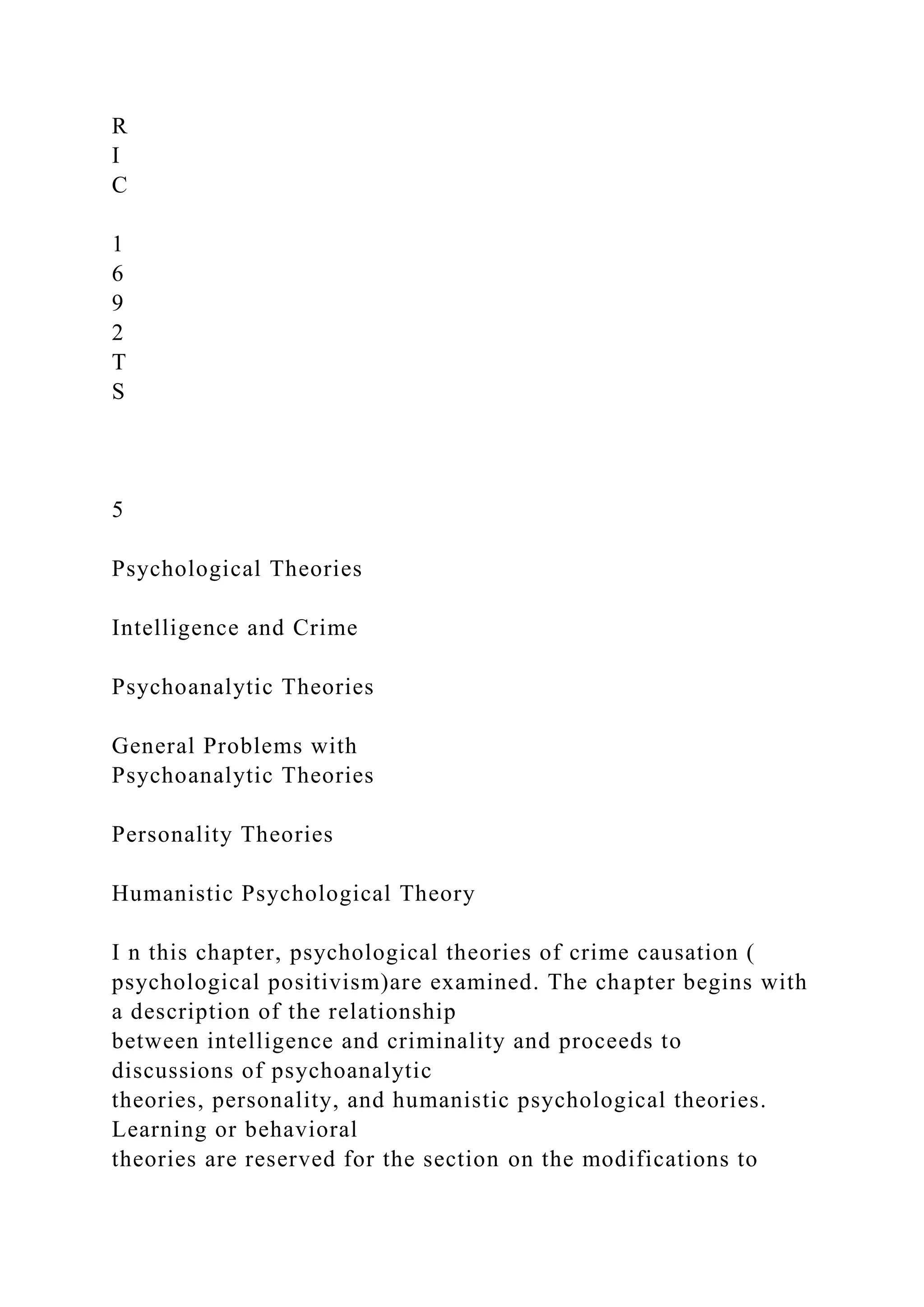
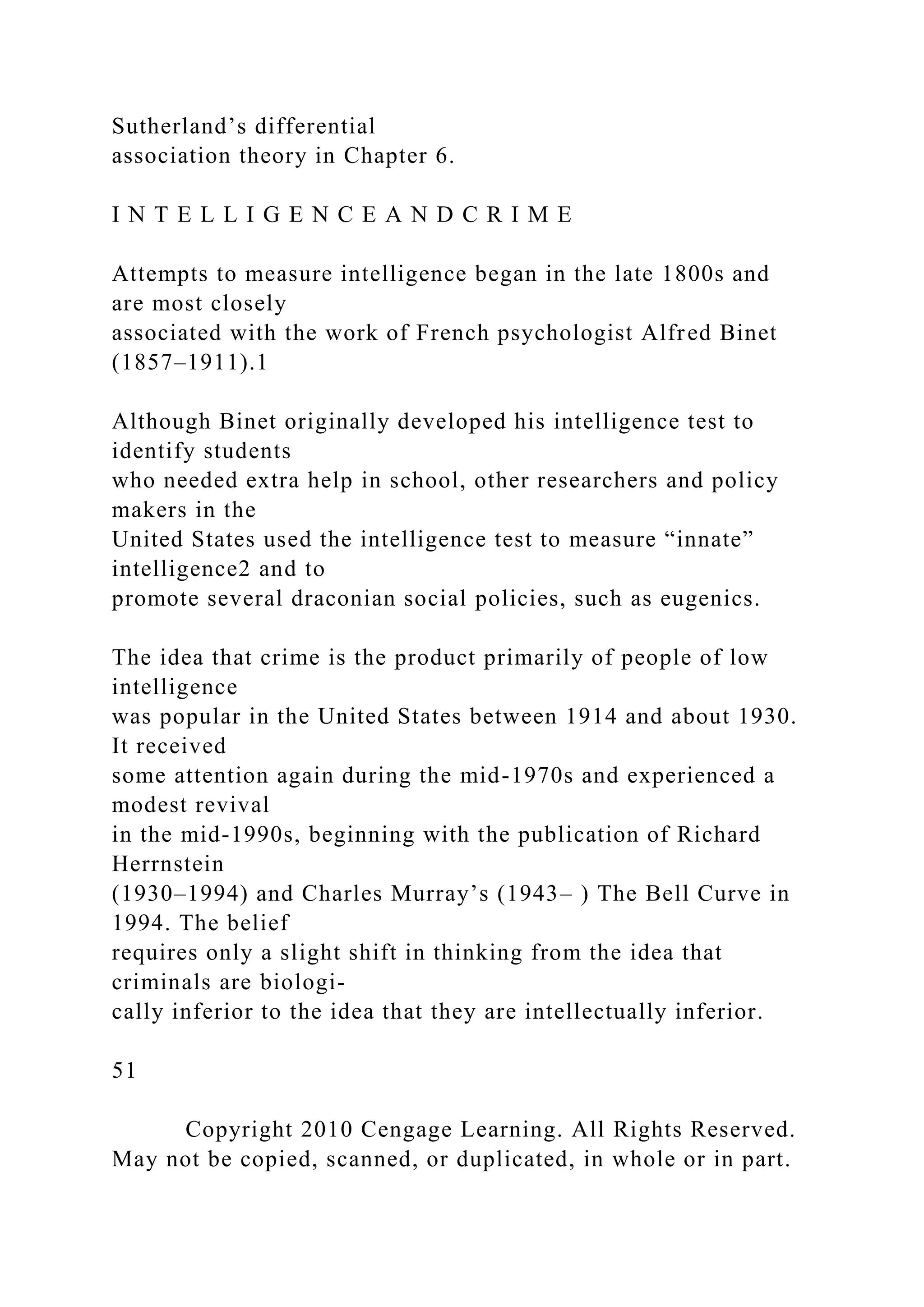
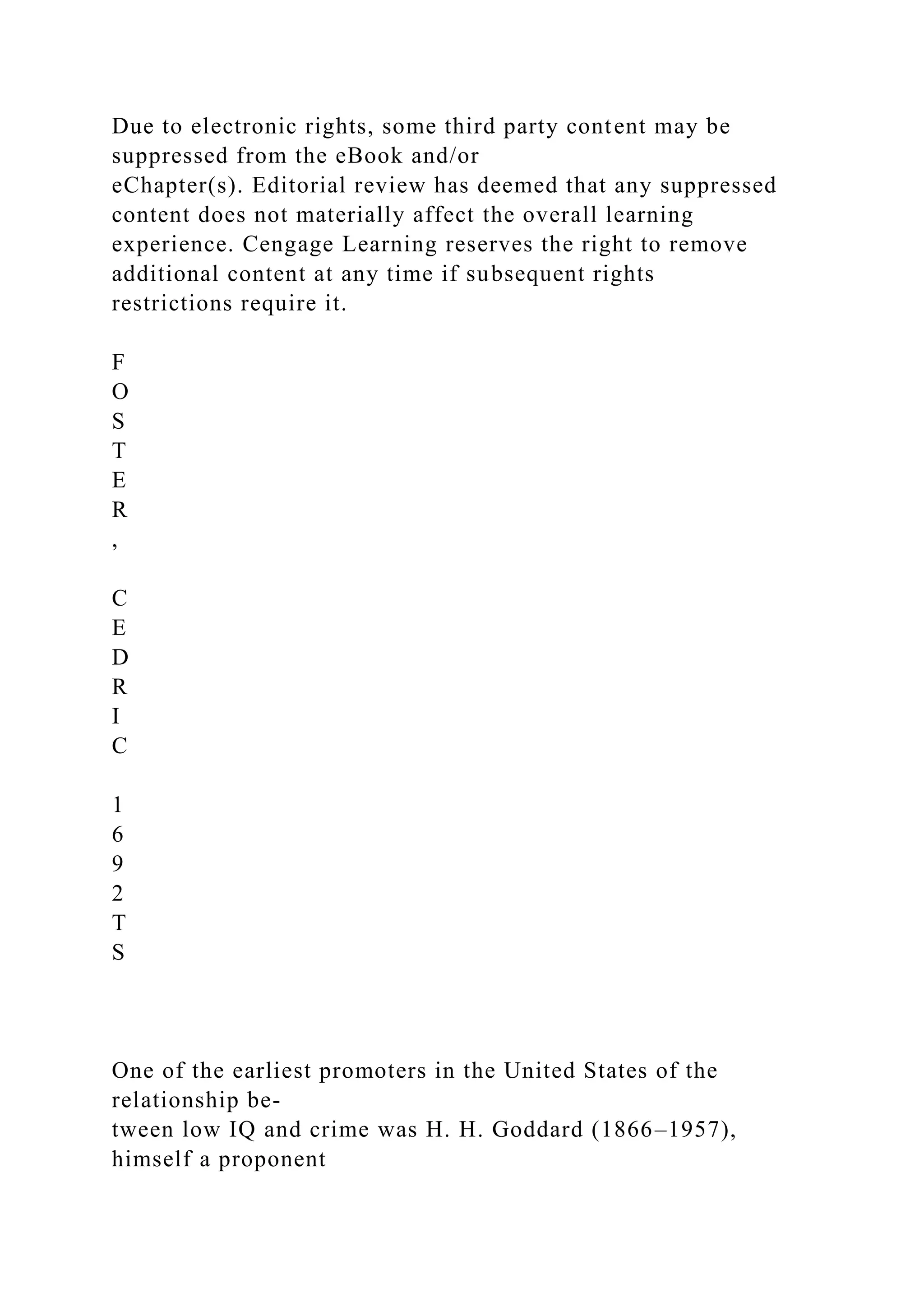

![that criminals are feebleminded.5
A problem arose when the Army Psychological Corps adopted
Goddard’s
standard as a criterion for fitness for military service. When
intelligence tests
were administered to draftees for World War I, it was
discovered using
Goddard’s criterion that about one-third of them were
feebleminded.6 Whether
that was an accurate indicator of the intelligence level of the
population at the
time (as represented by the draft army) must remain the object
of conjecture.
However, as a practical matter, the army was not about to
eliminate nearly
one-third of draftees because of low-level intelligence.
Consequently, Goddard
changed his conclusions. In 1927, he wrote:
The war led to the measurement of intelligence of the drafted
army
with the result that such an enormous proportion was found to
have an
intelligence of 12 years and less that to call them all feeble
minded was
an absurdity of the highest degree.… We have already said that
we
thought 12 was the limit, but we now know that most of the
twelve,
and even of the ten [IQ = 63] and nine [IQ = 56], are not
defective.7
In 1931, E. H. Sutherland reviewed approximately 350 studies
on the relation-
ship between intelligence and delinquency and criminality.8 The](https://image.slidesharecdn.com/5220191cs146datastructuresandalgorithmsc-221201210134-446698d9/75/5220191CS146-Data-Structures-and-AlgorithmsC-docx-141-2048.jpg)
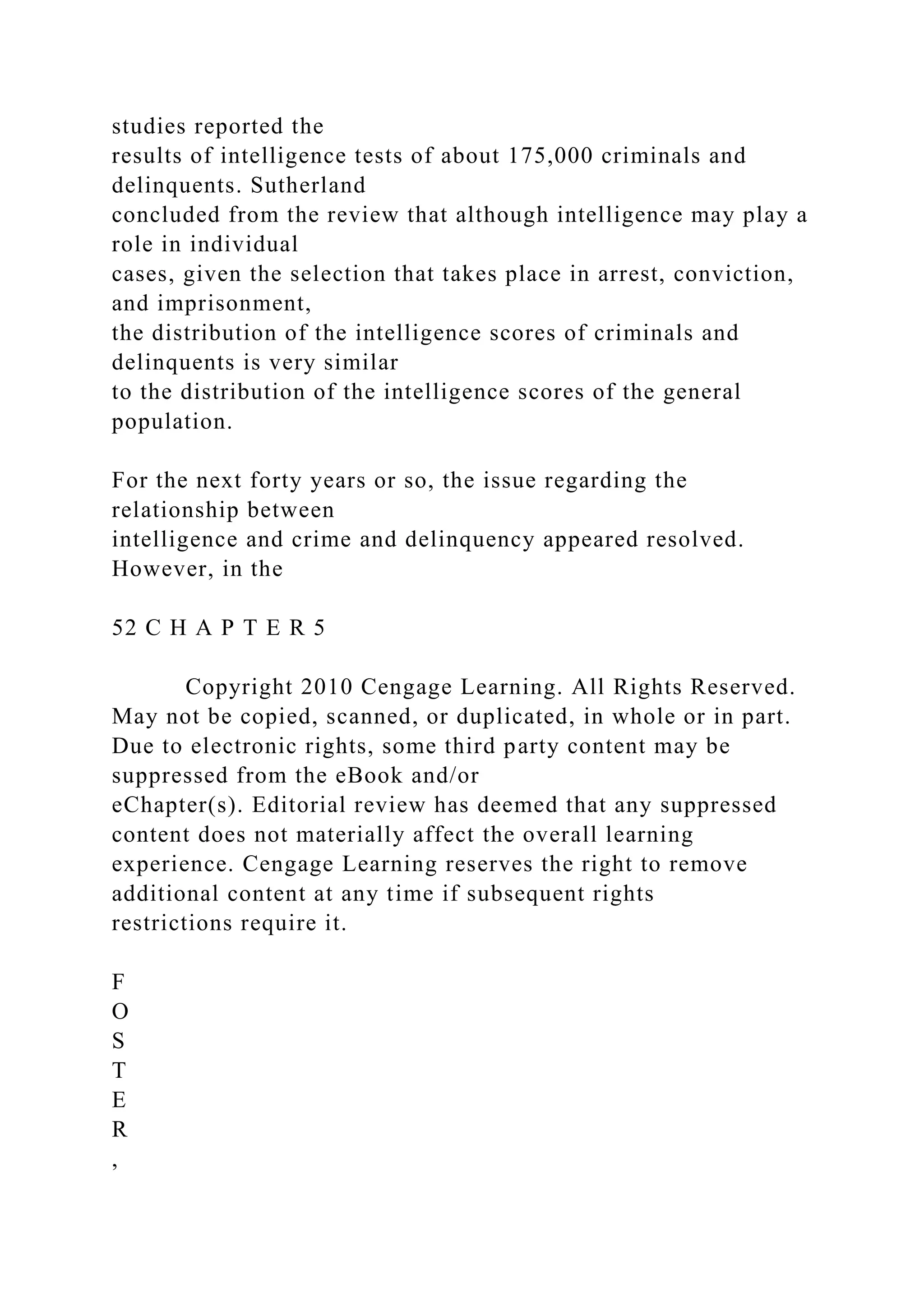
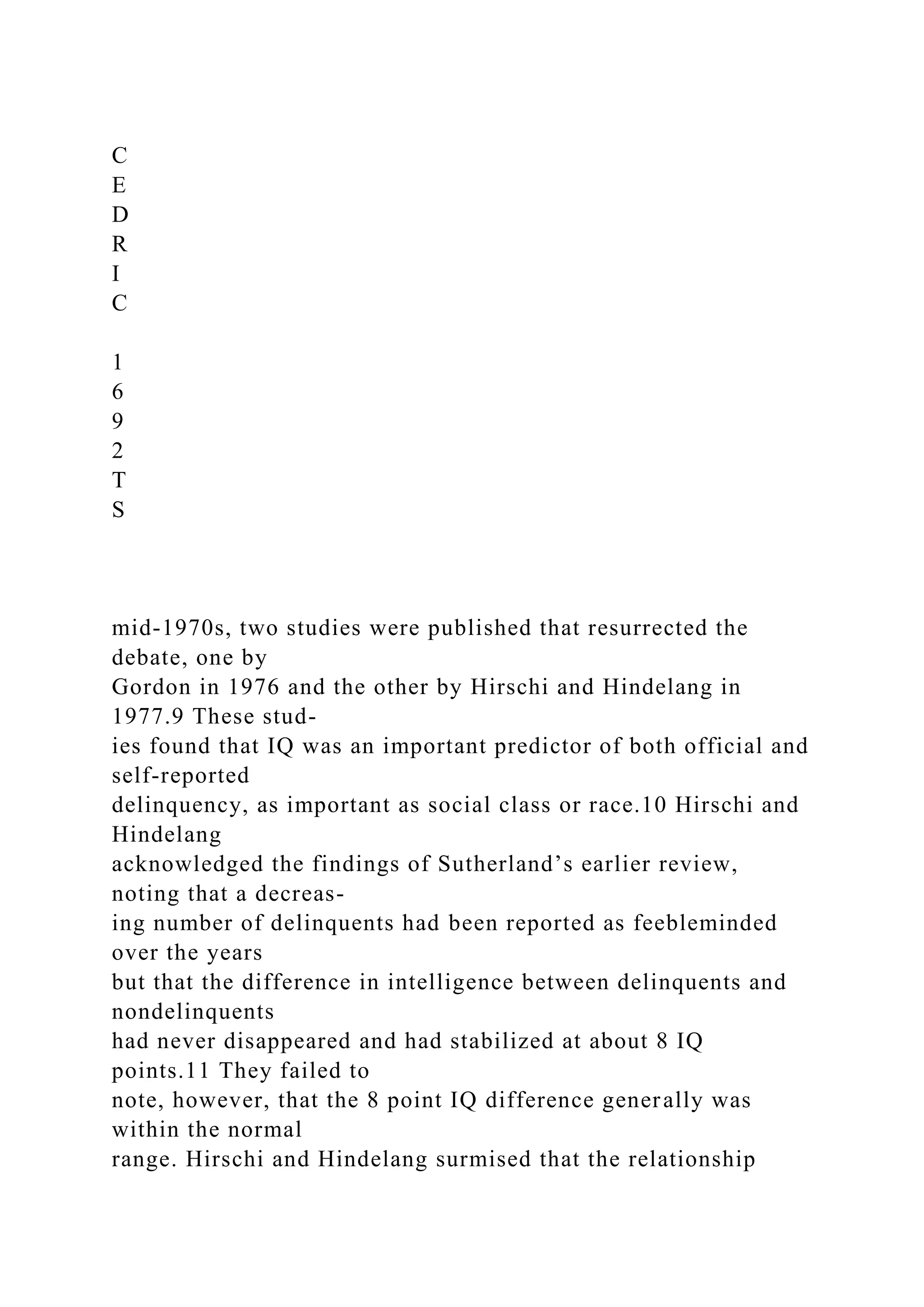
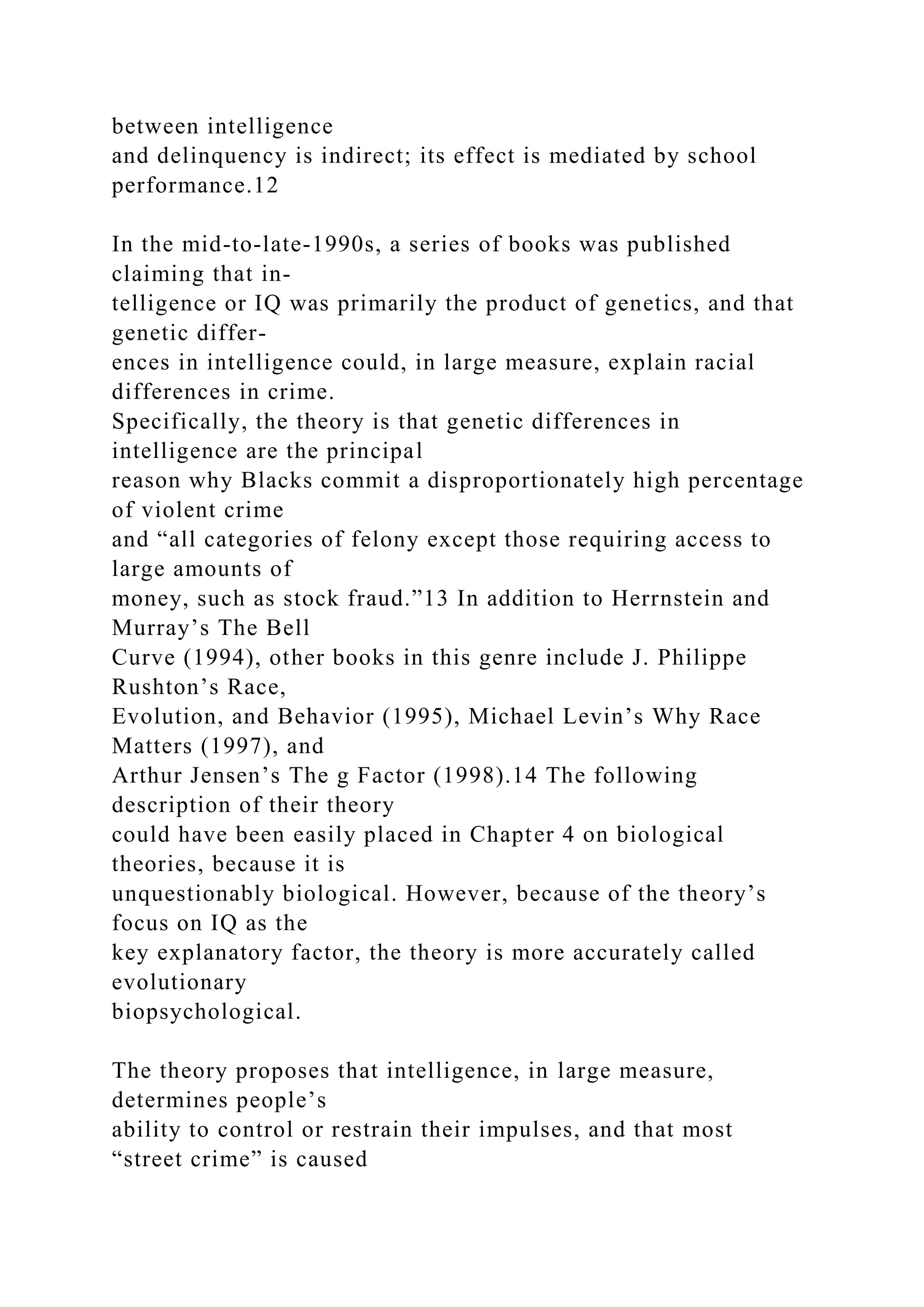
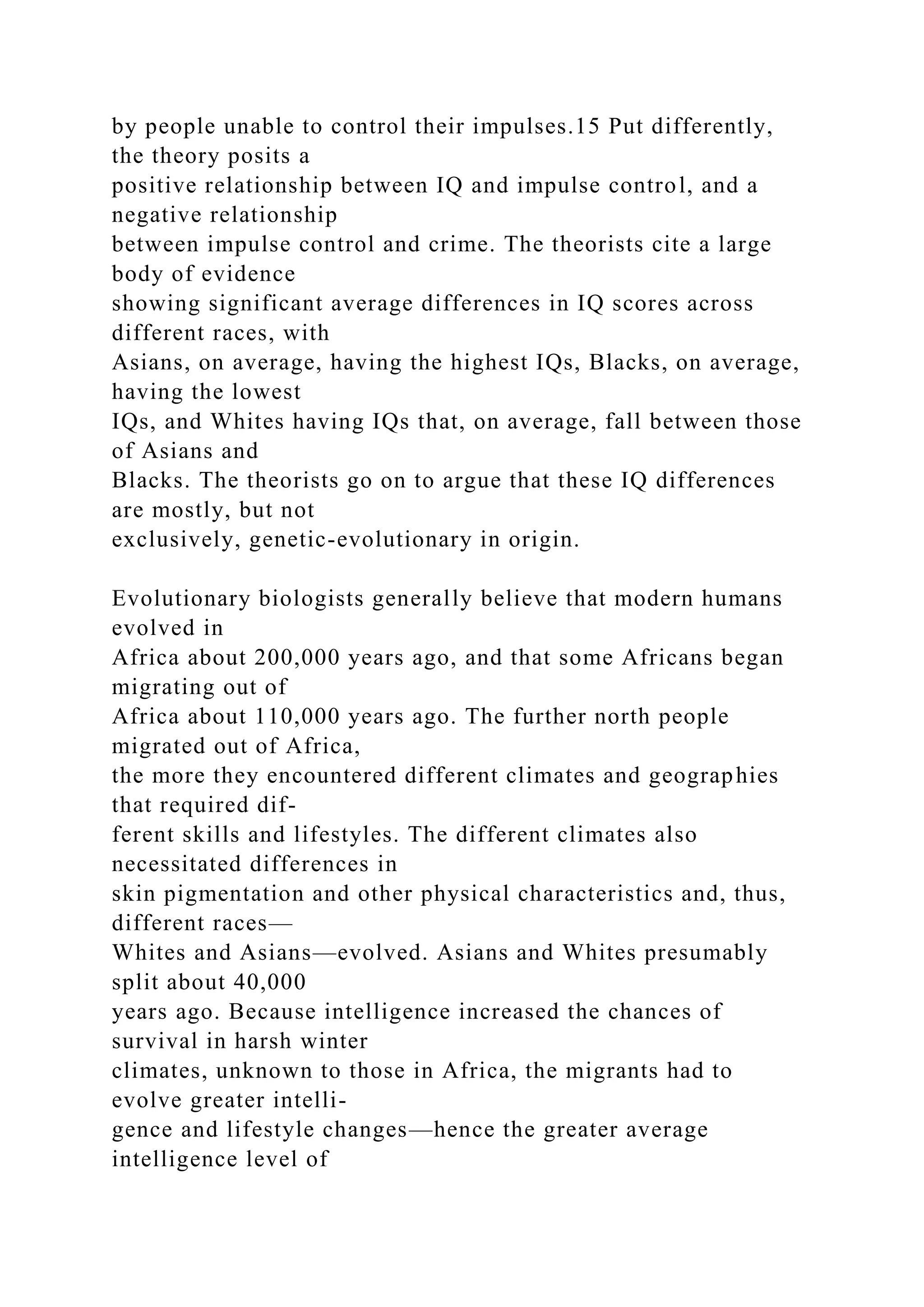
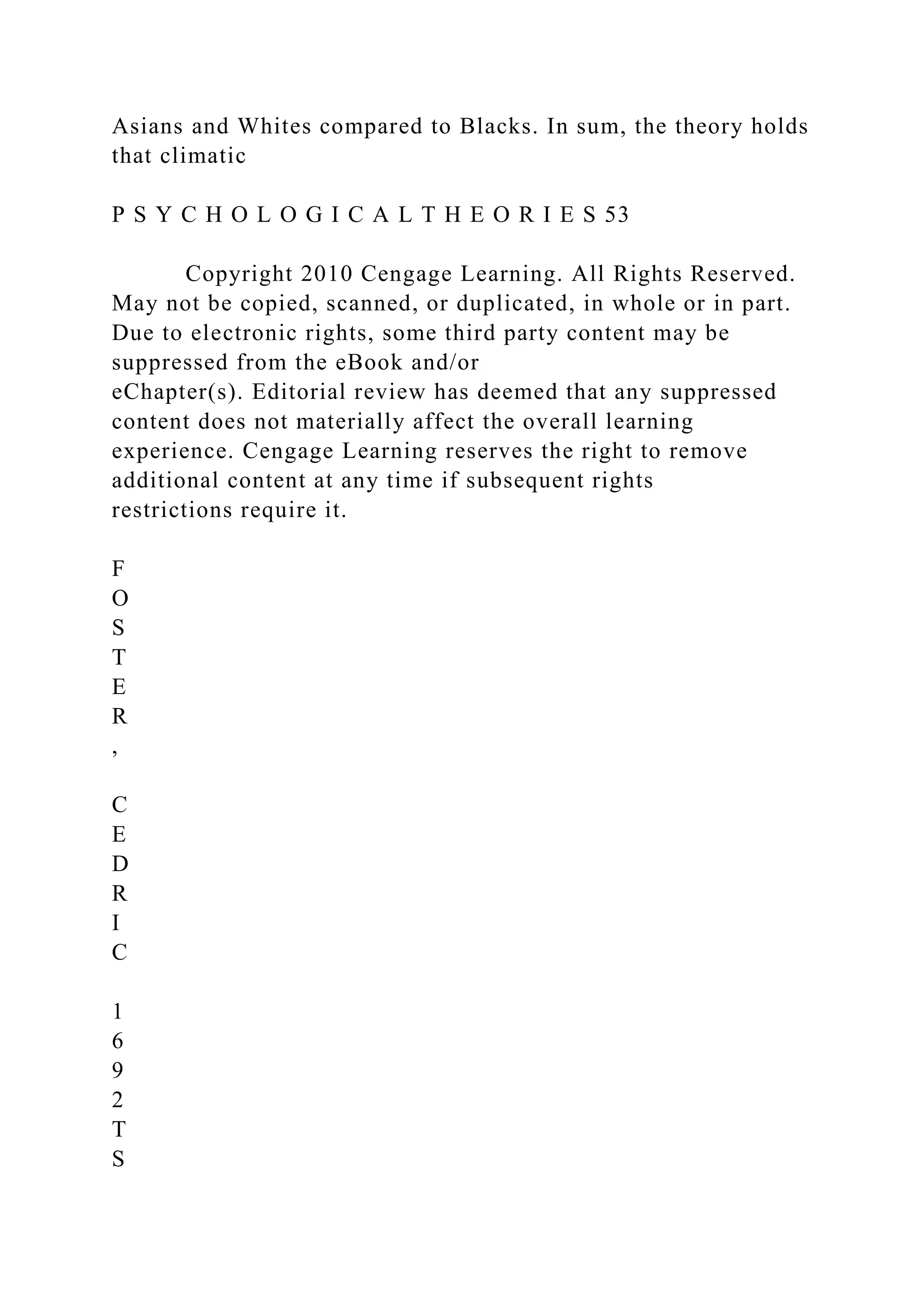




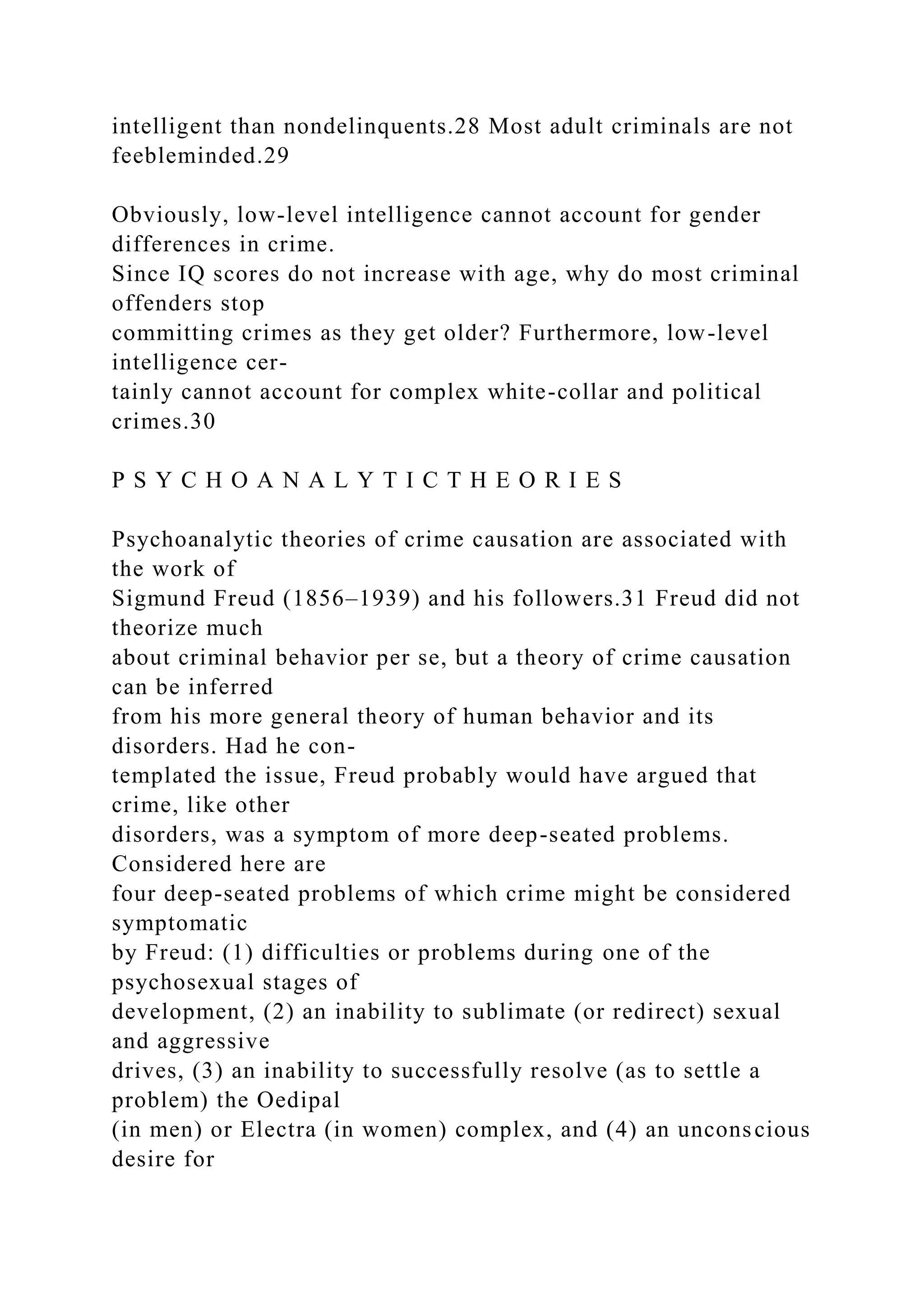
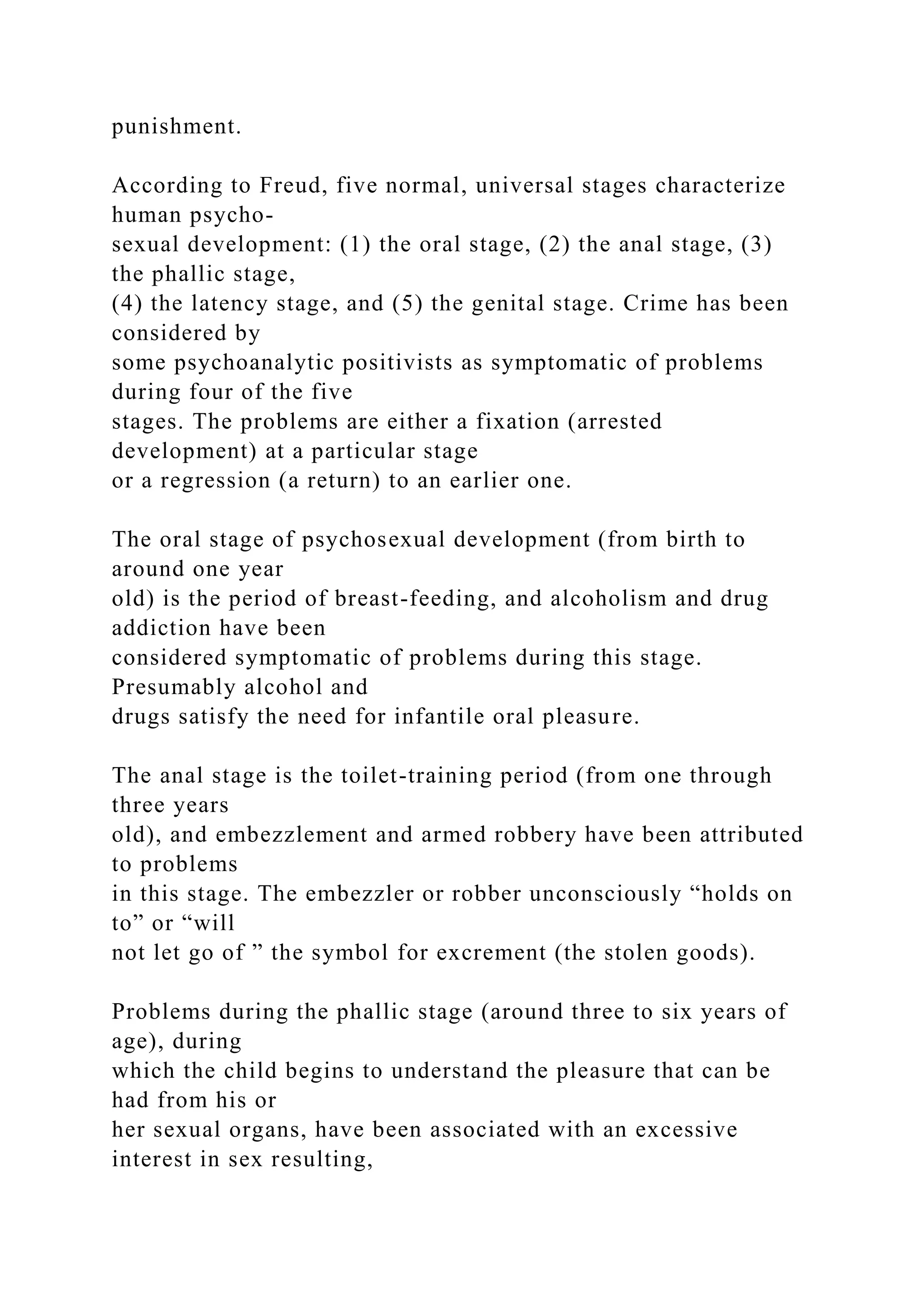
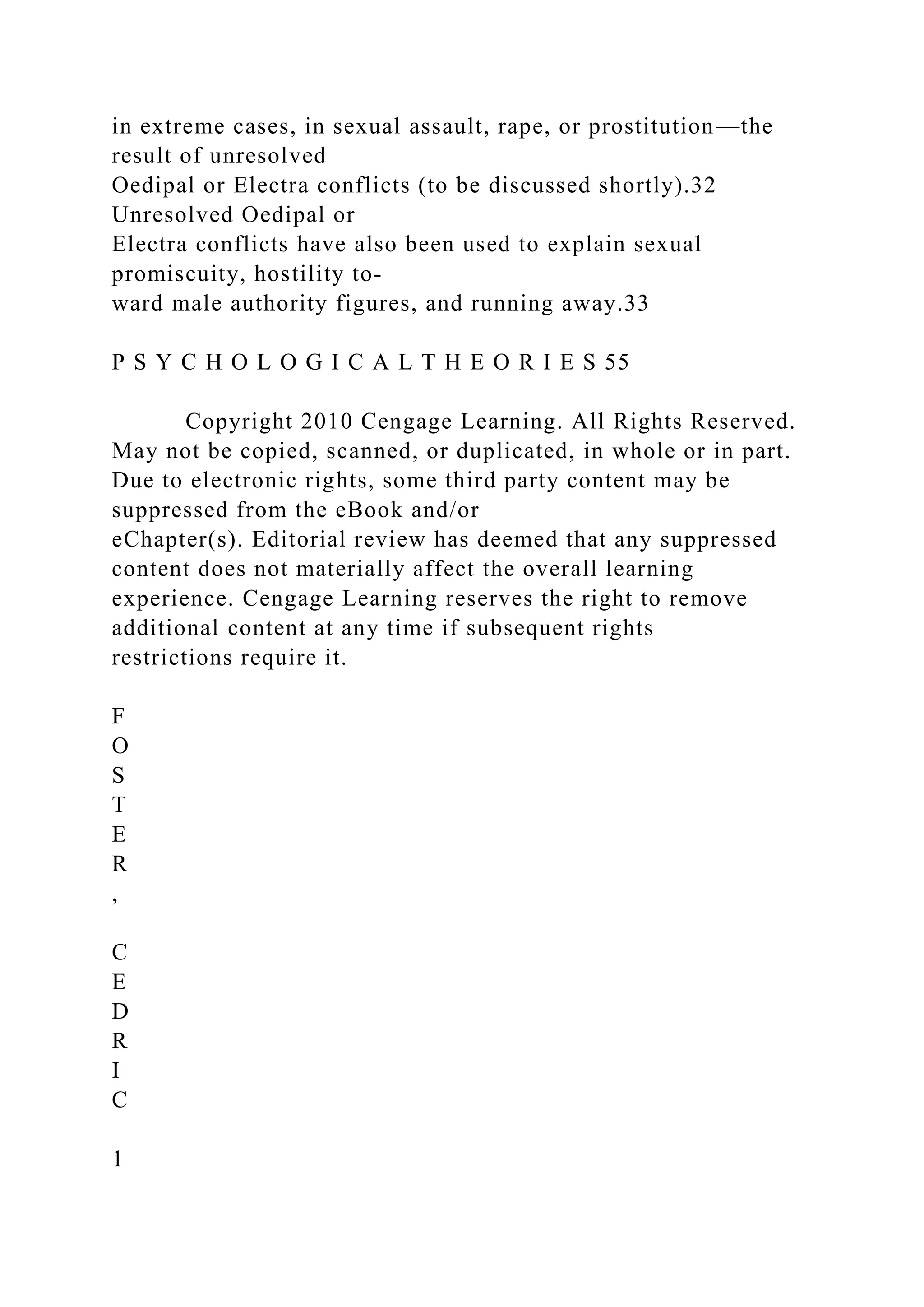
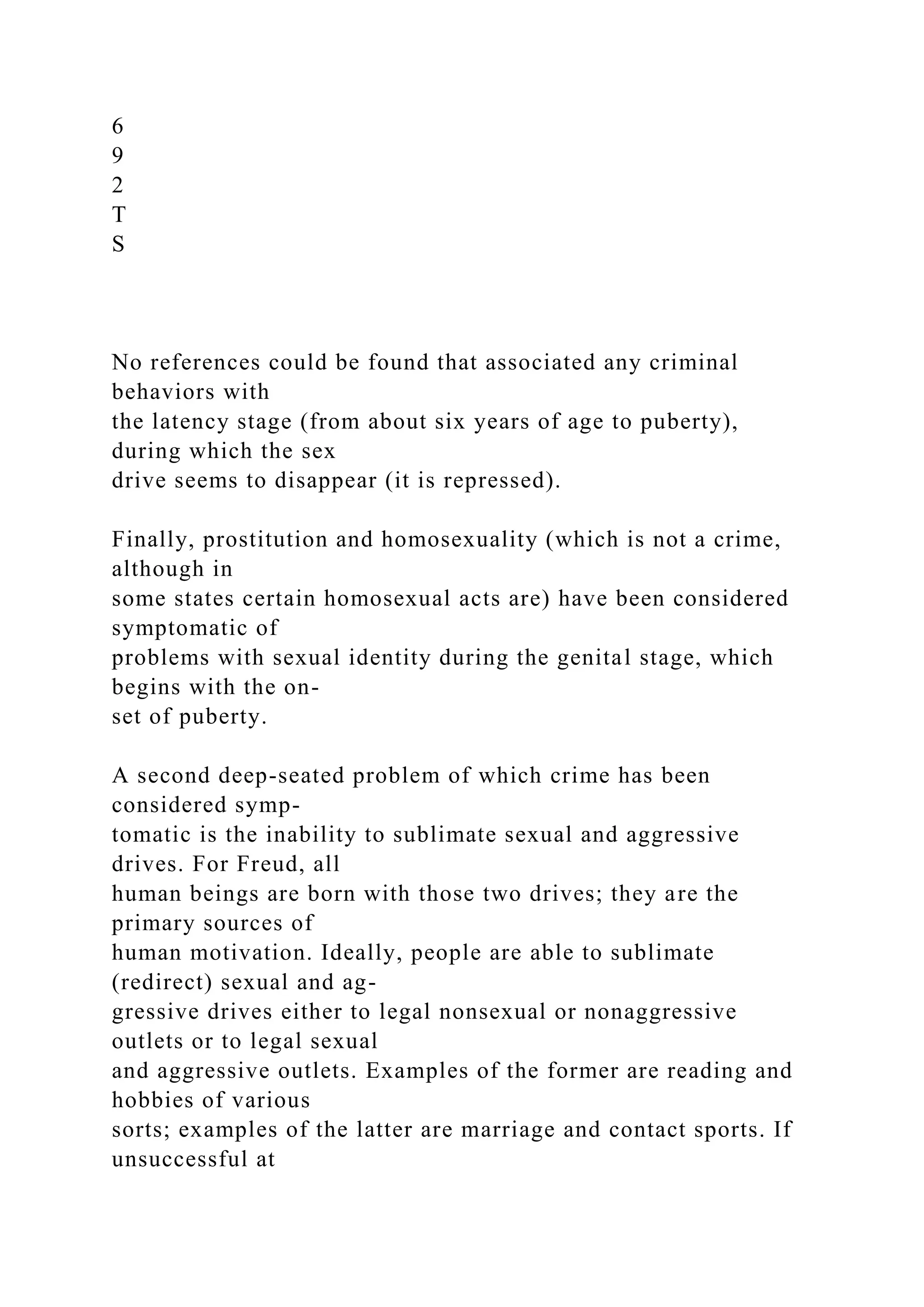

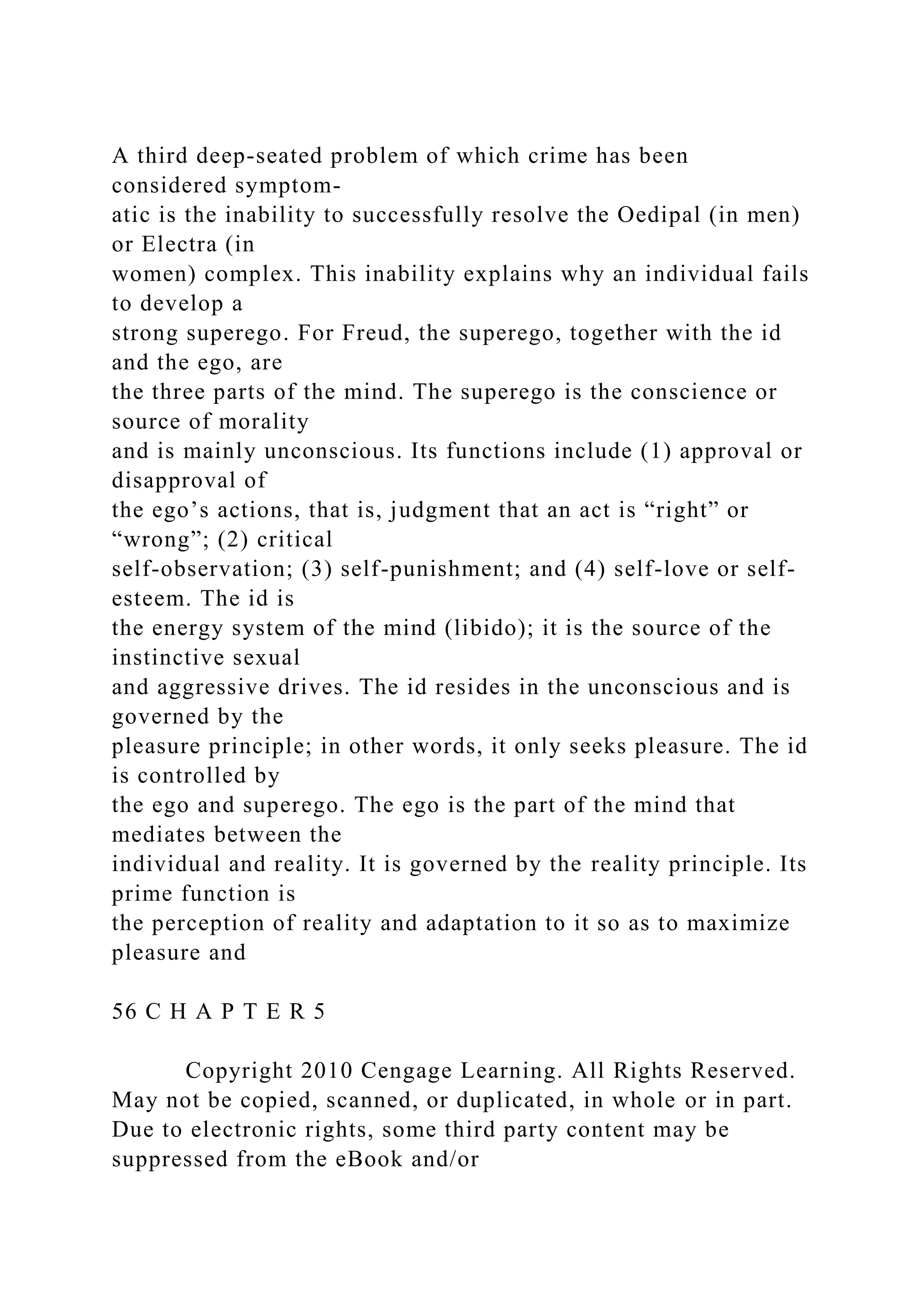

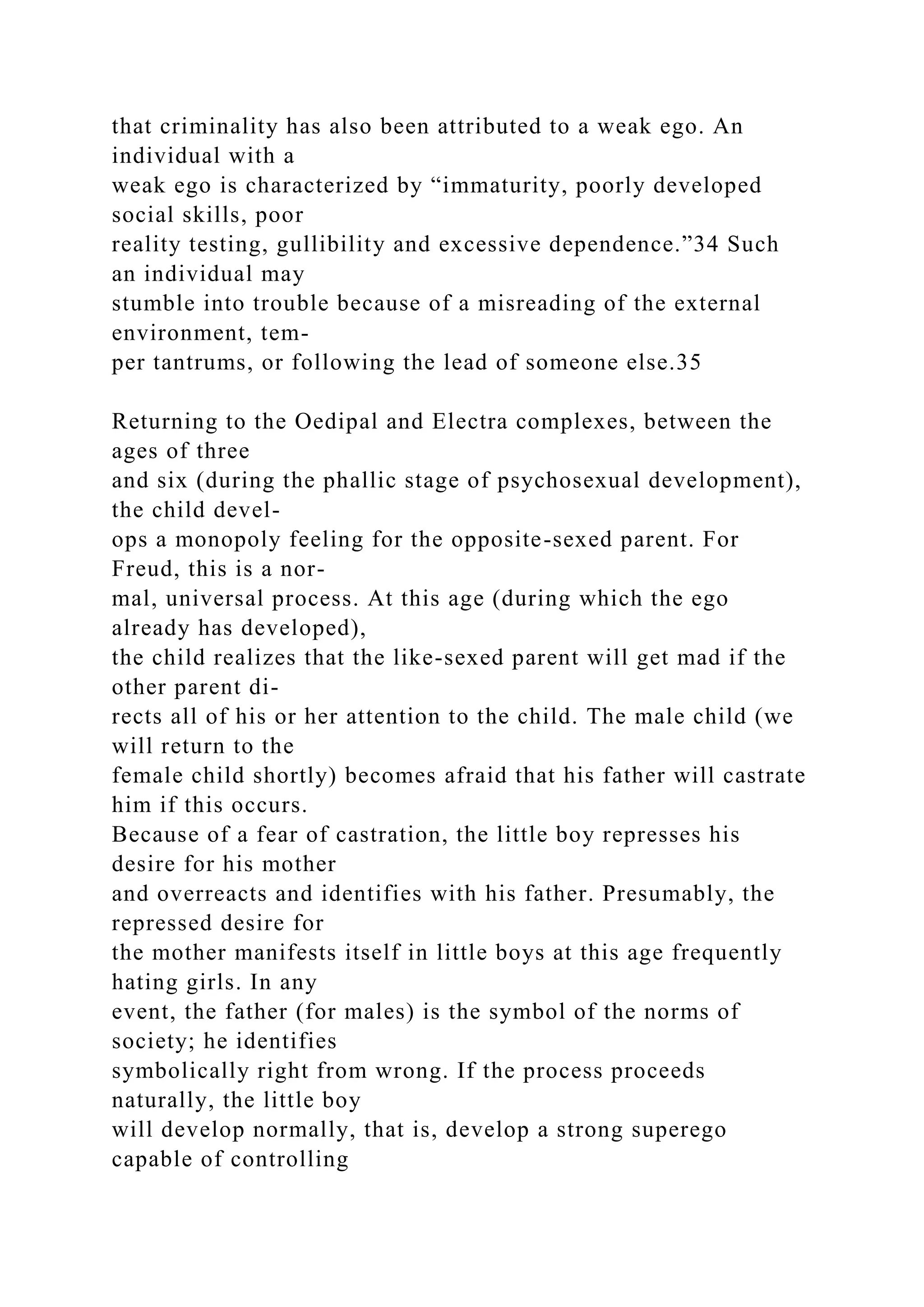
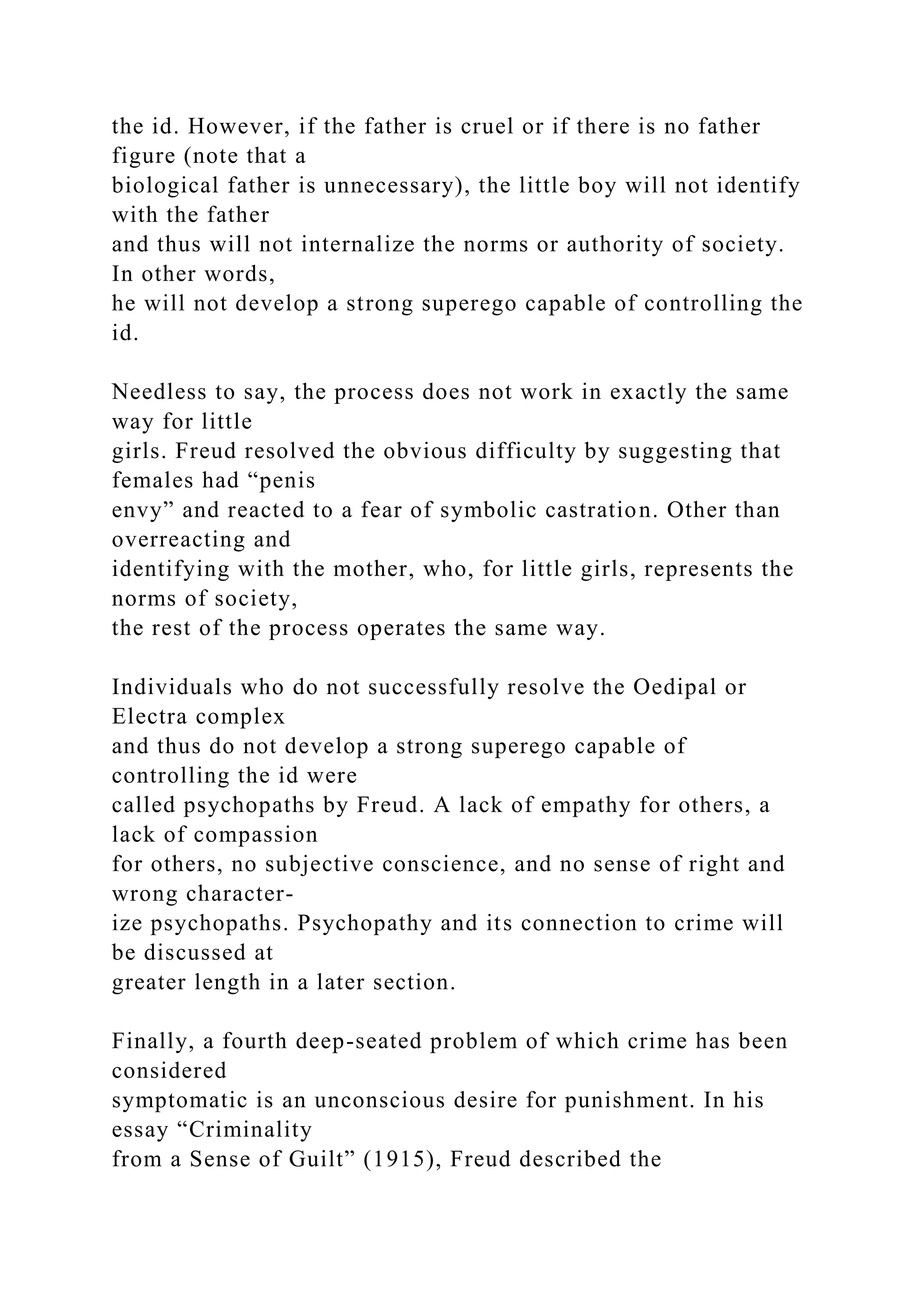
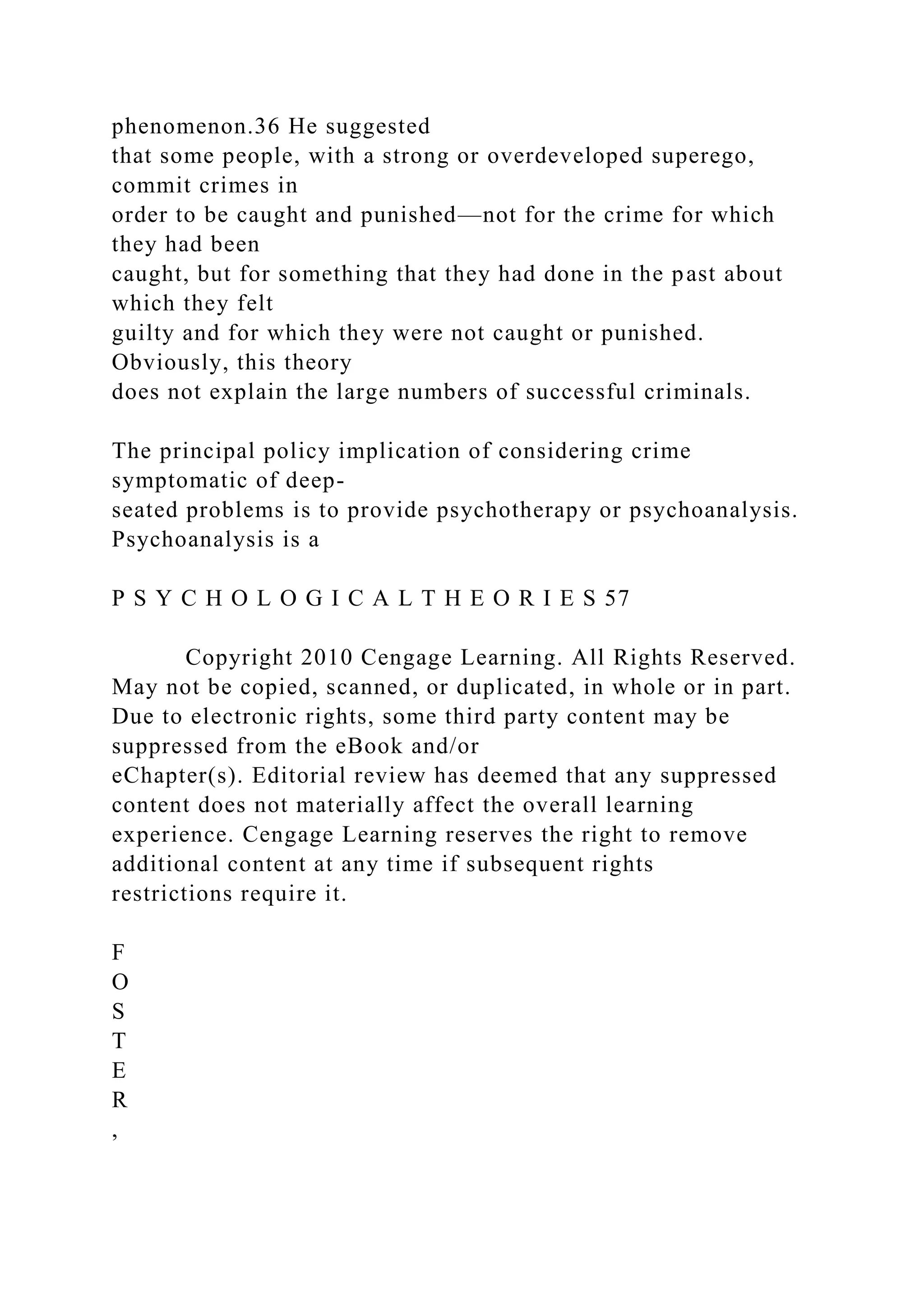
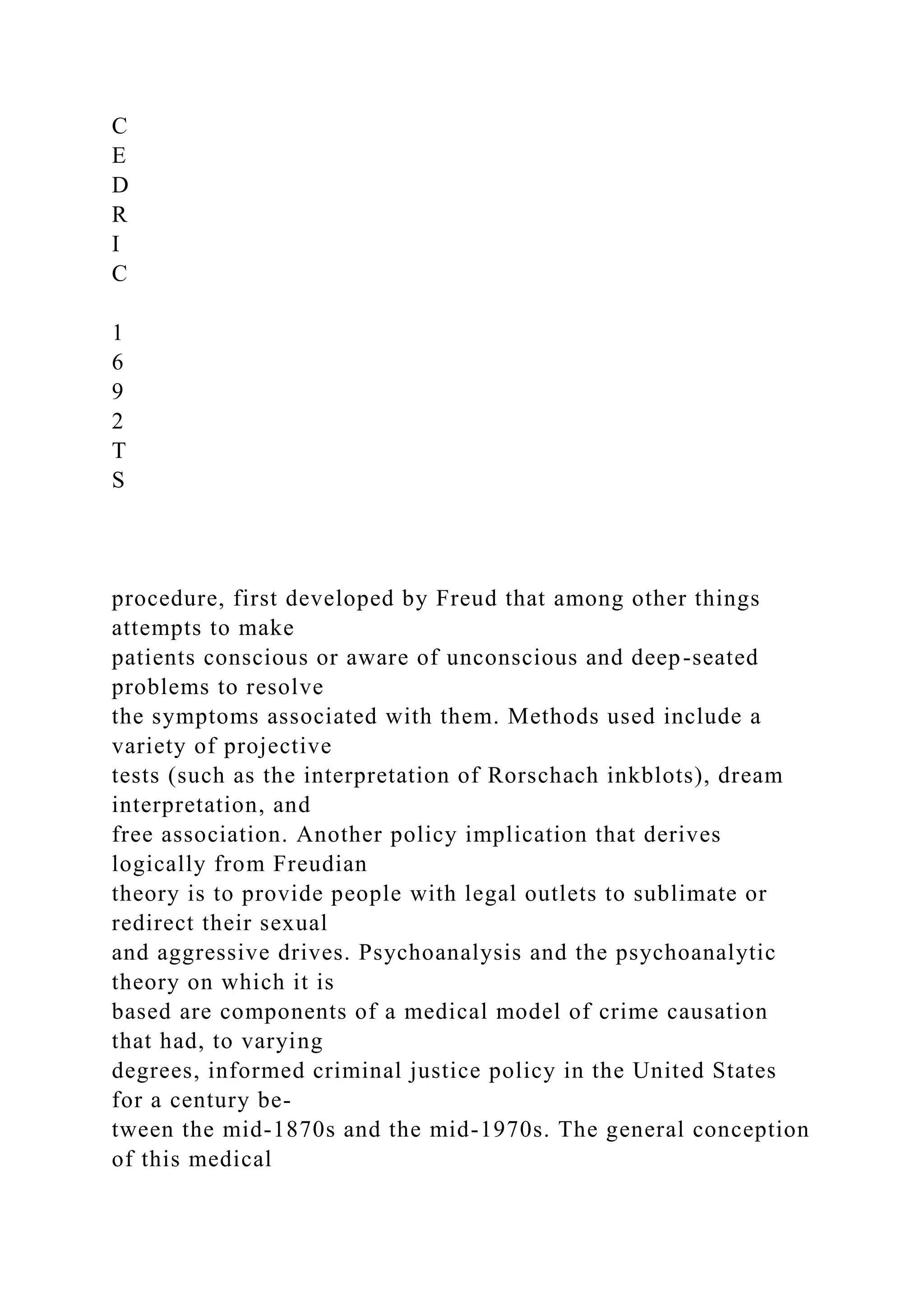
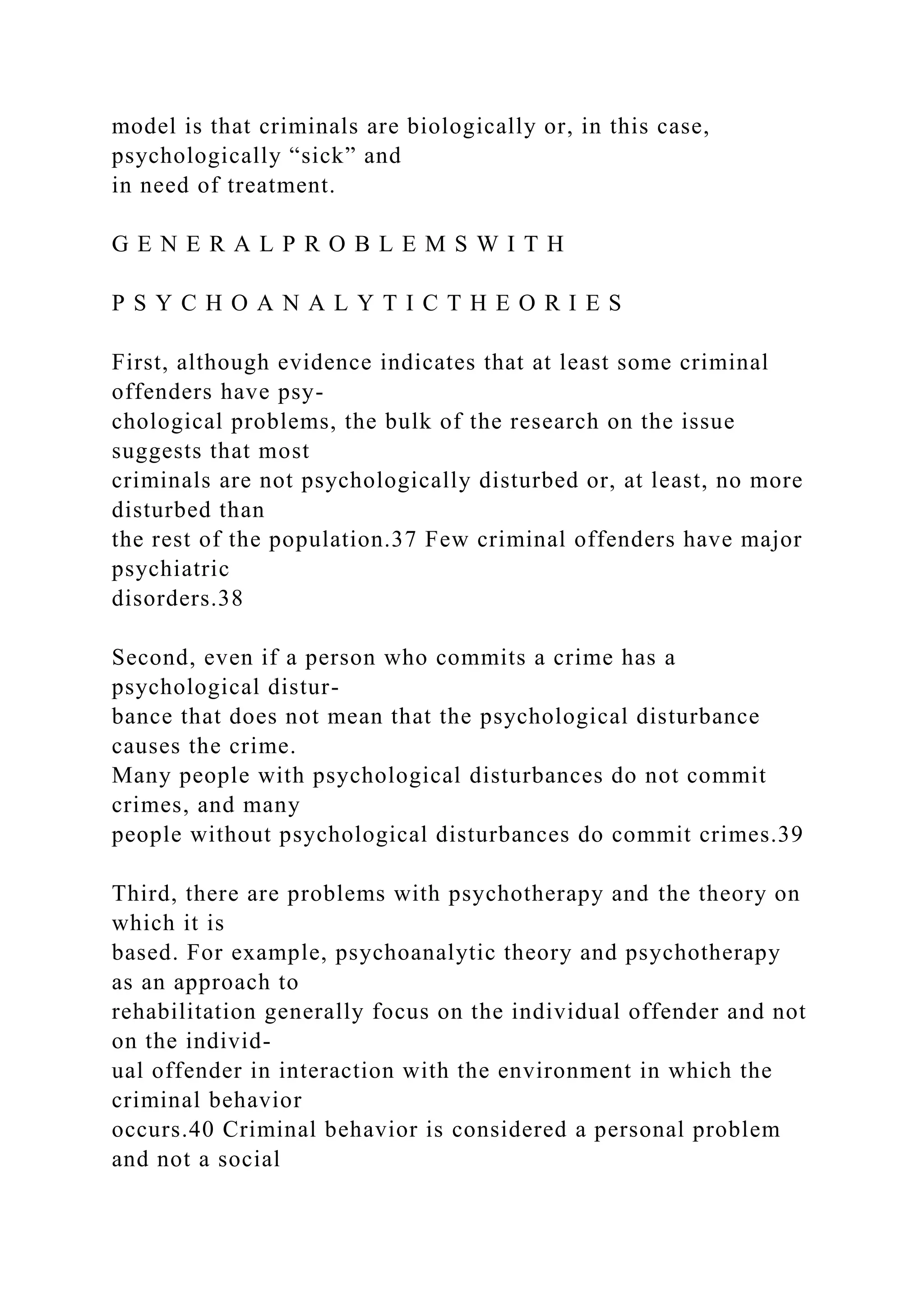
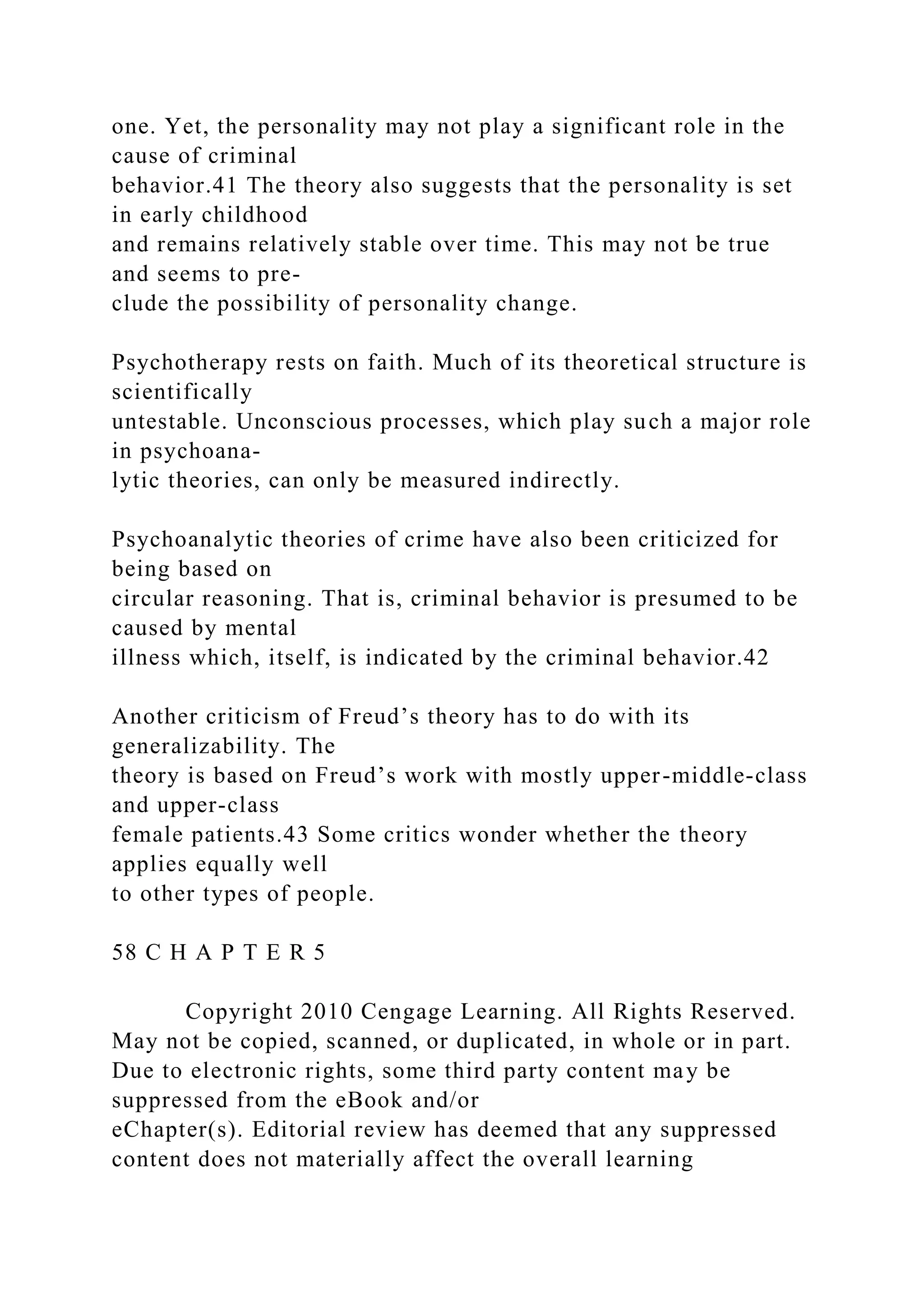
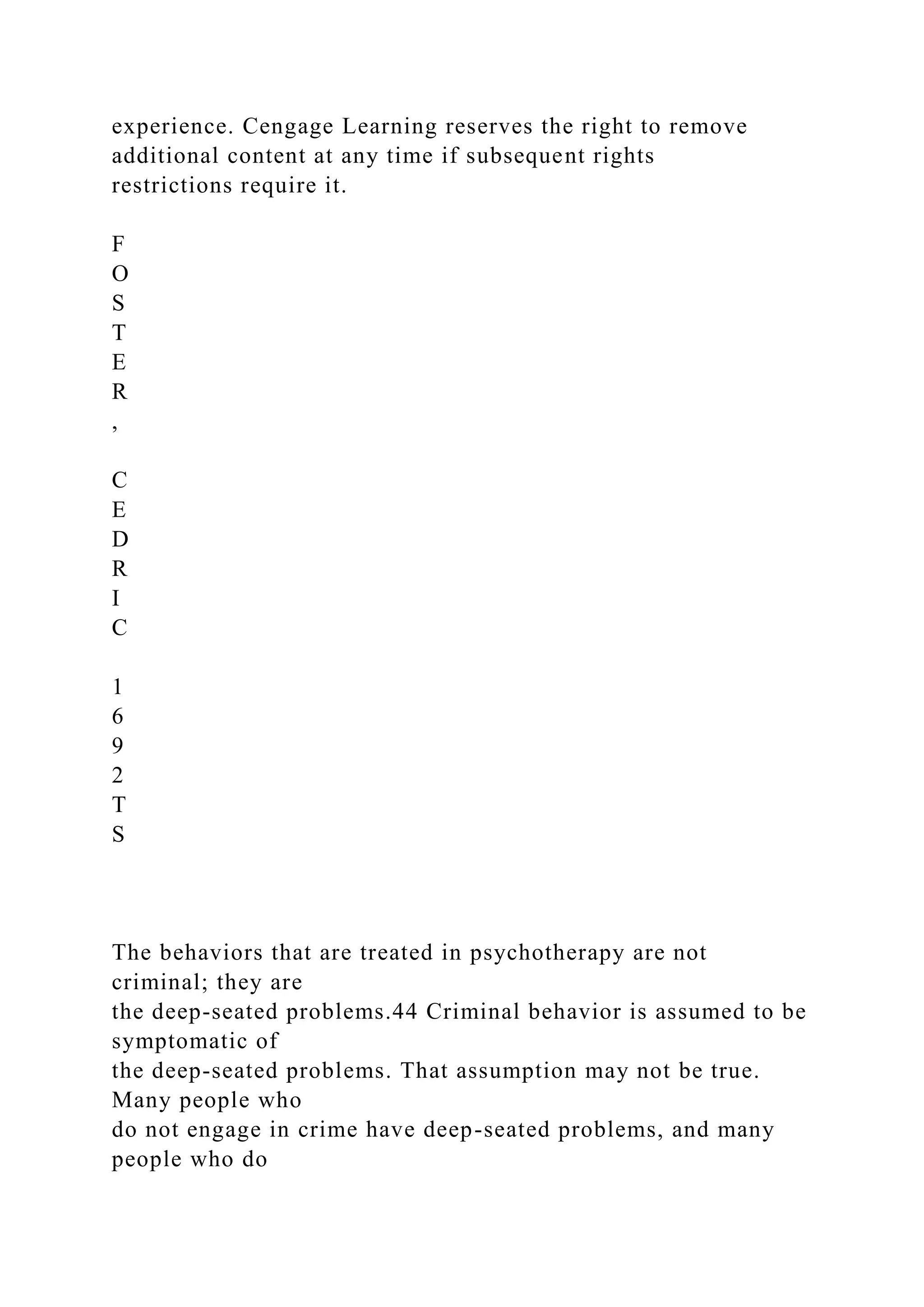
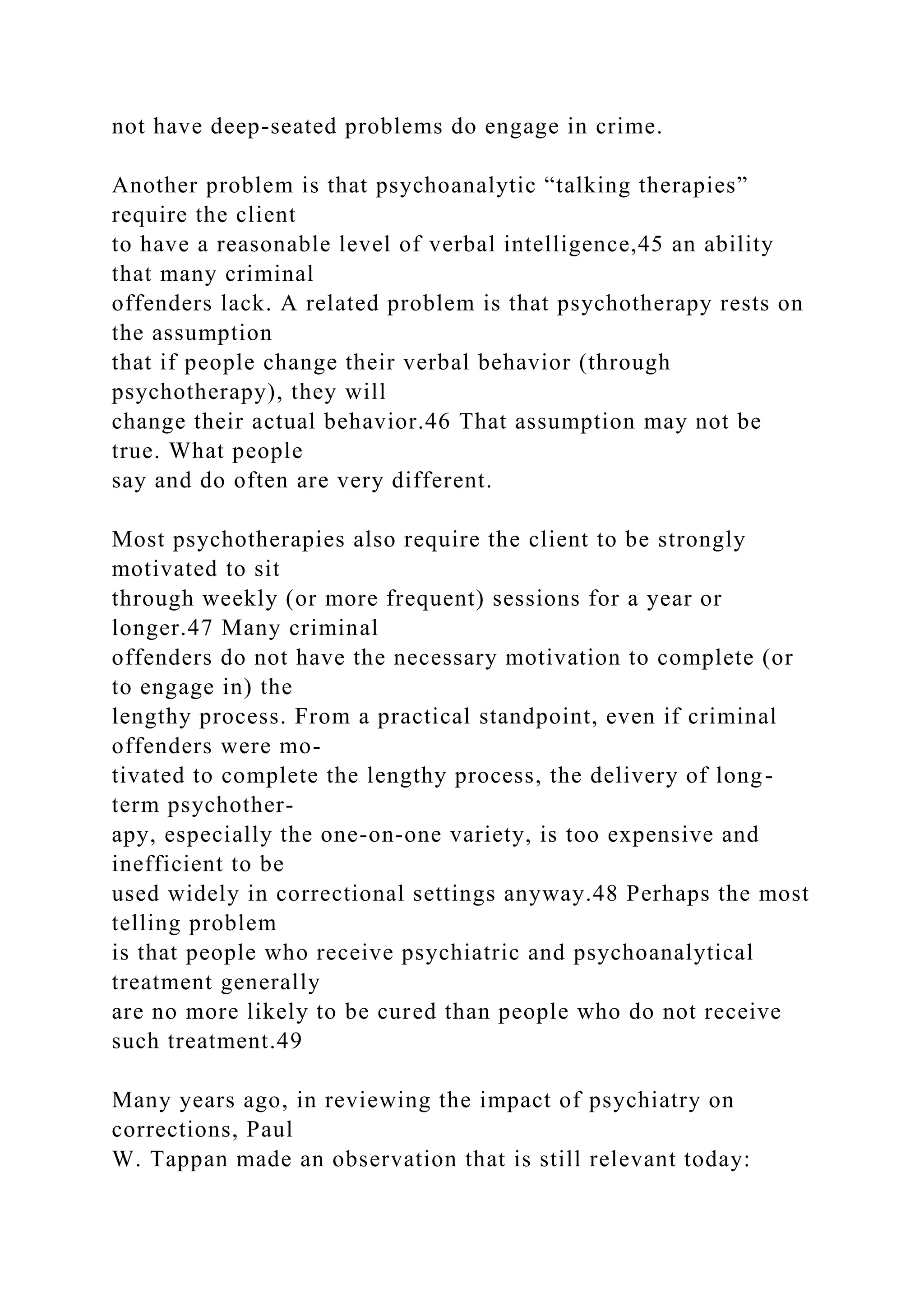

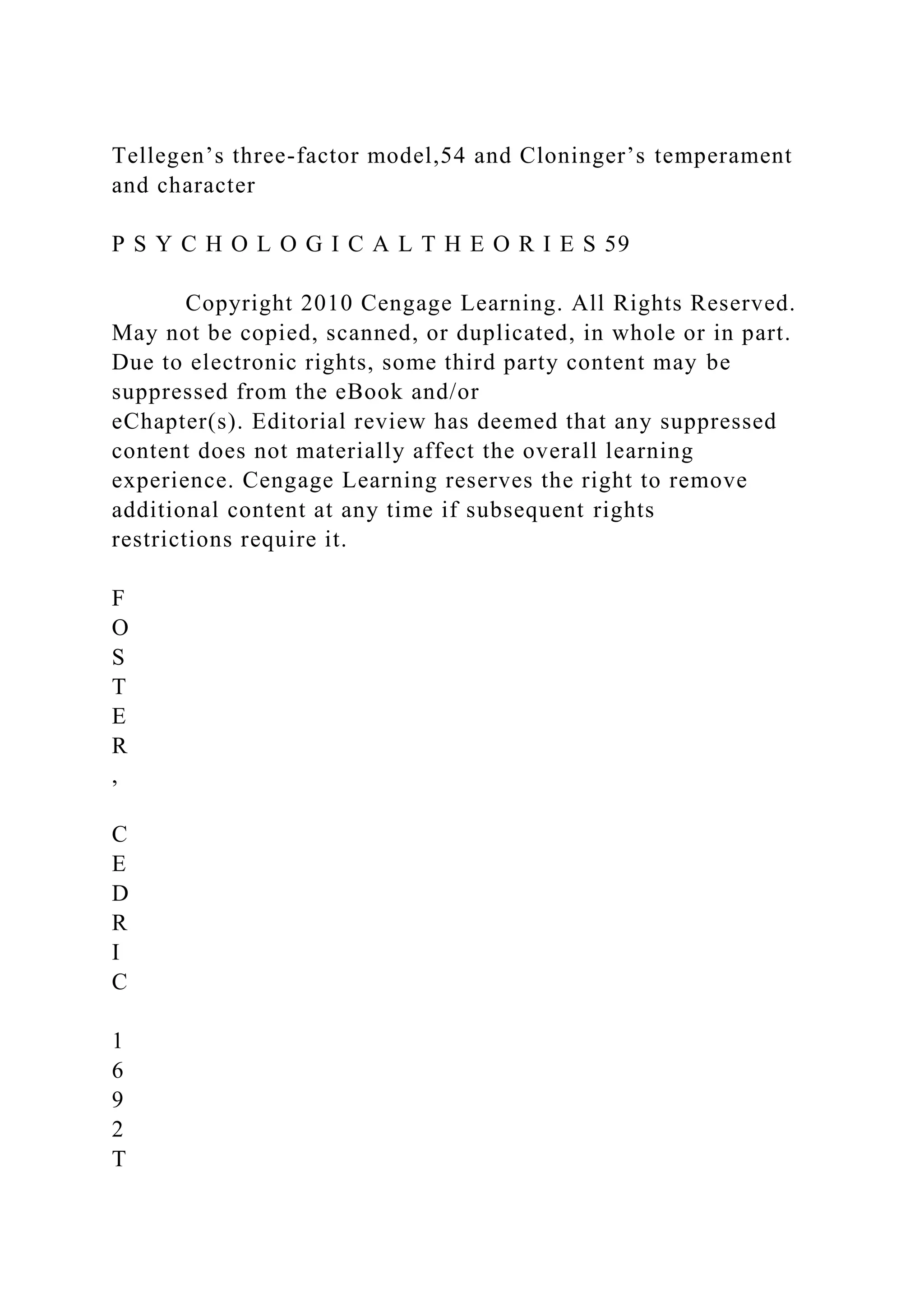
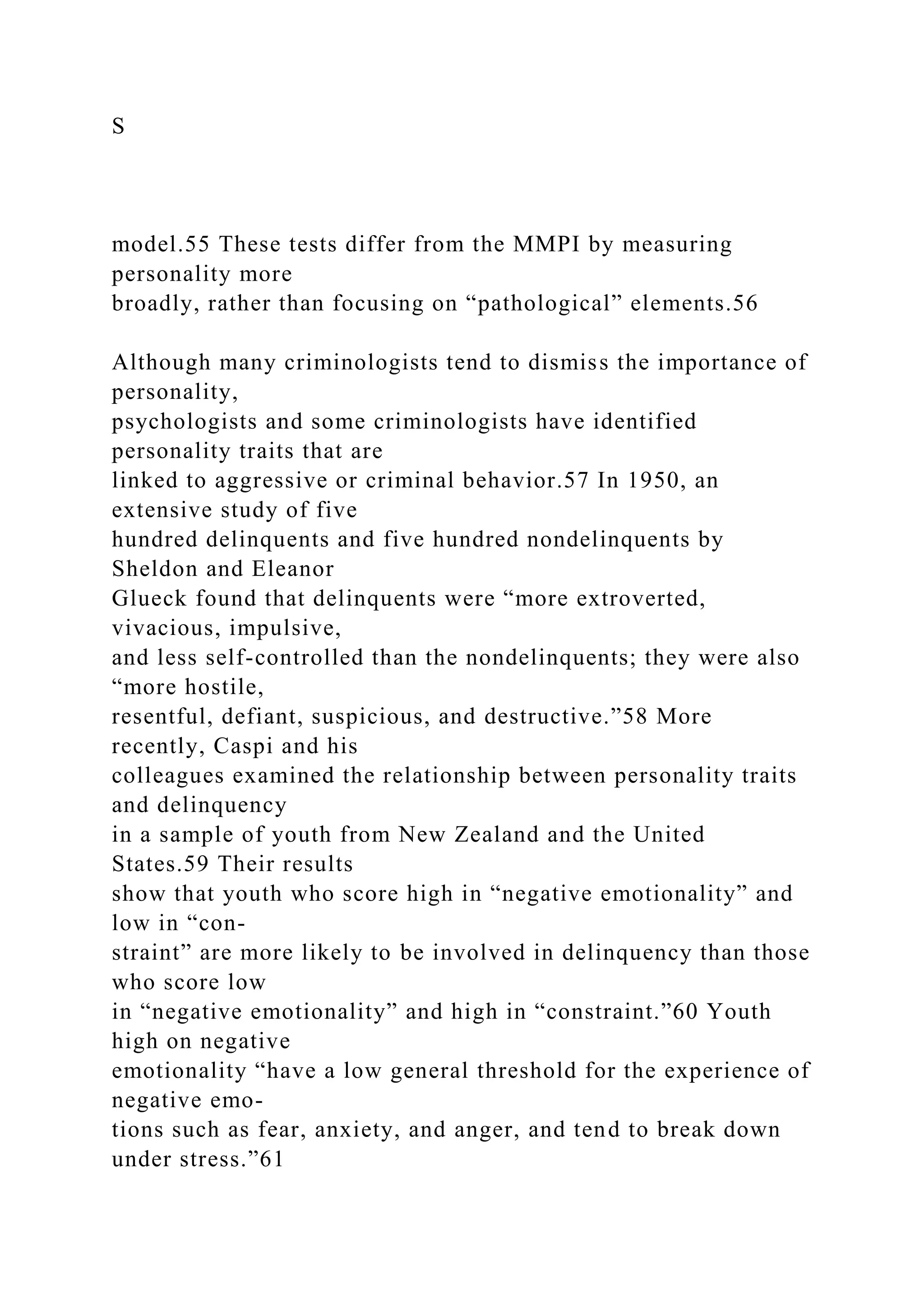
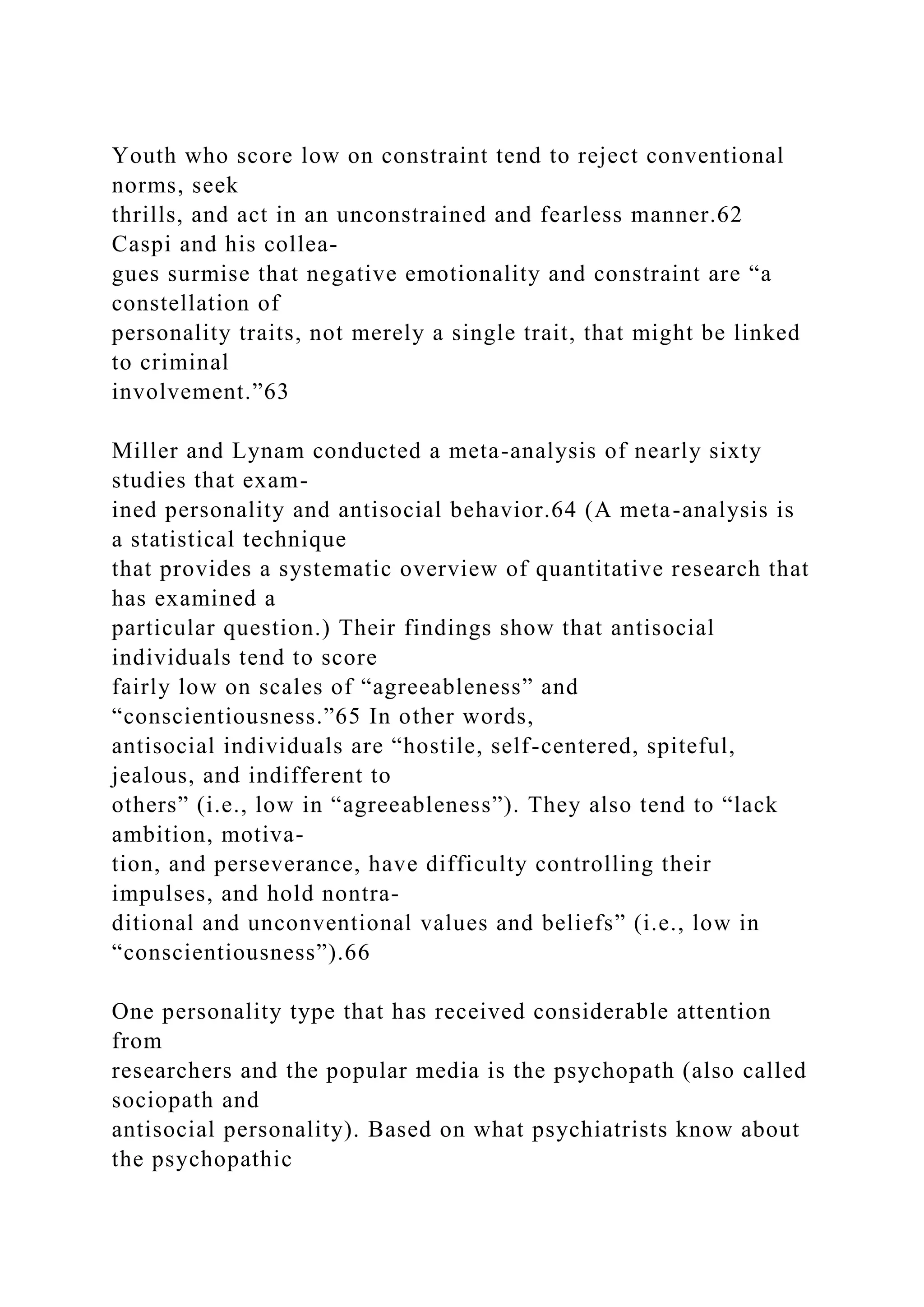
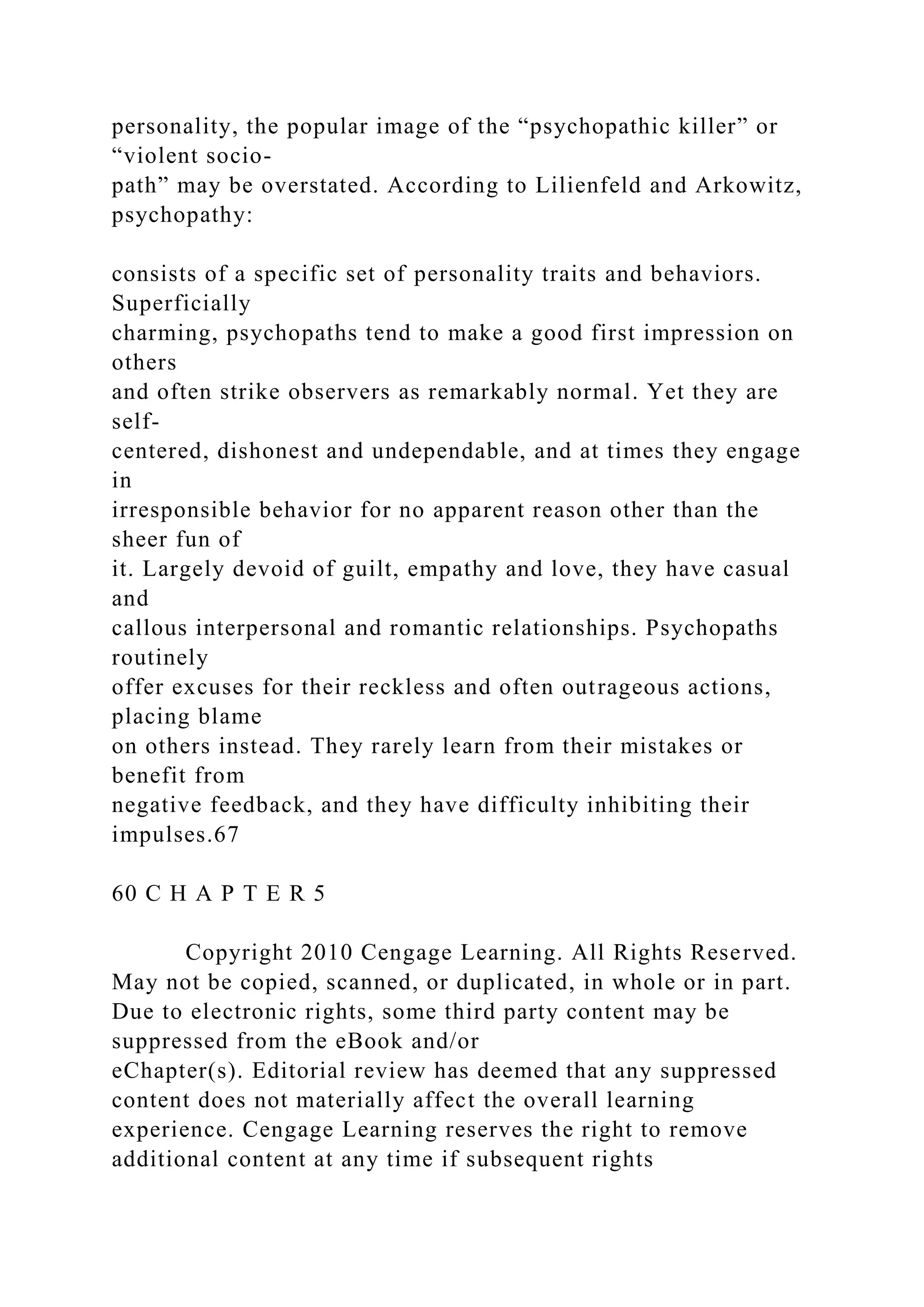
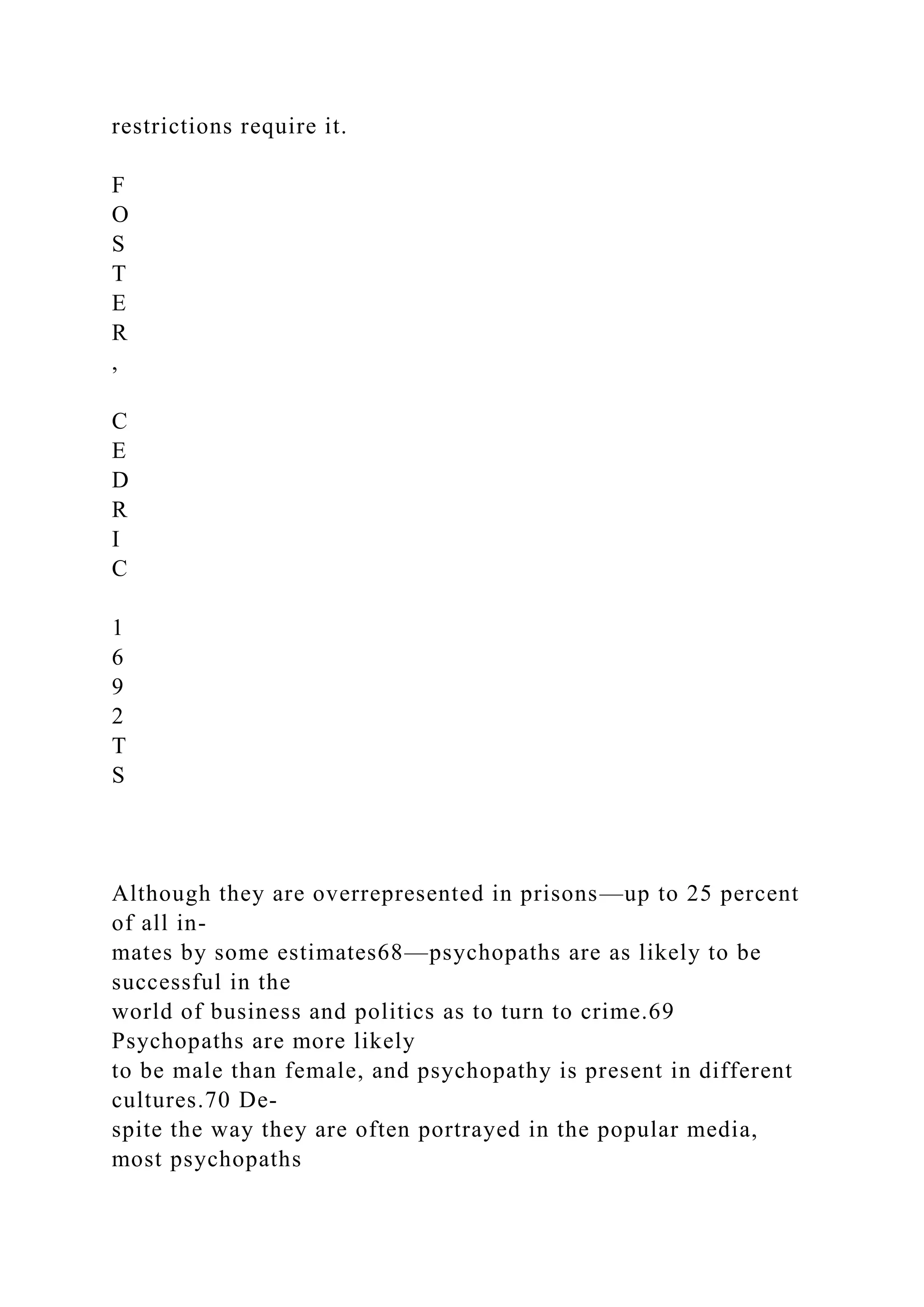
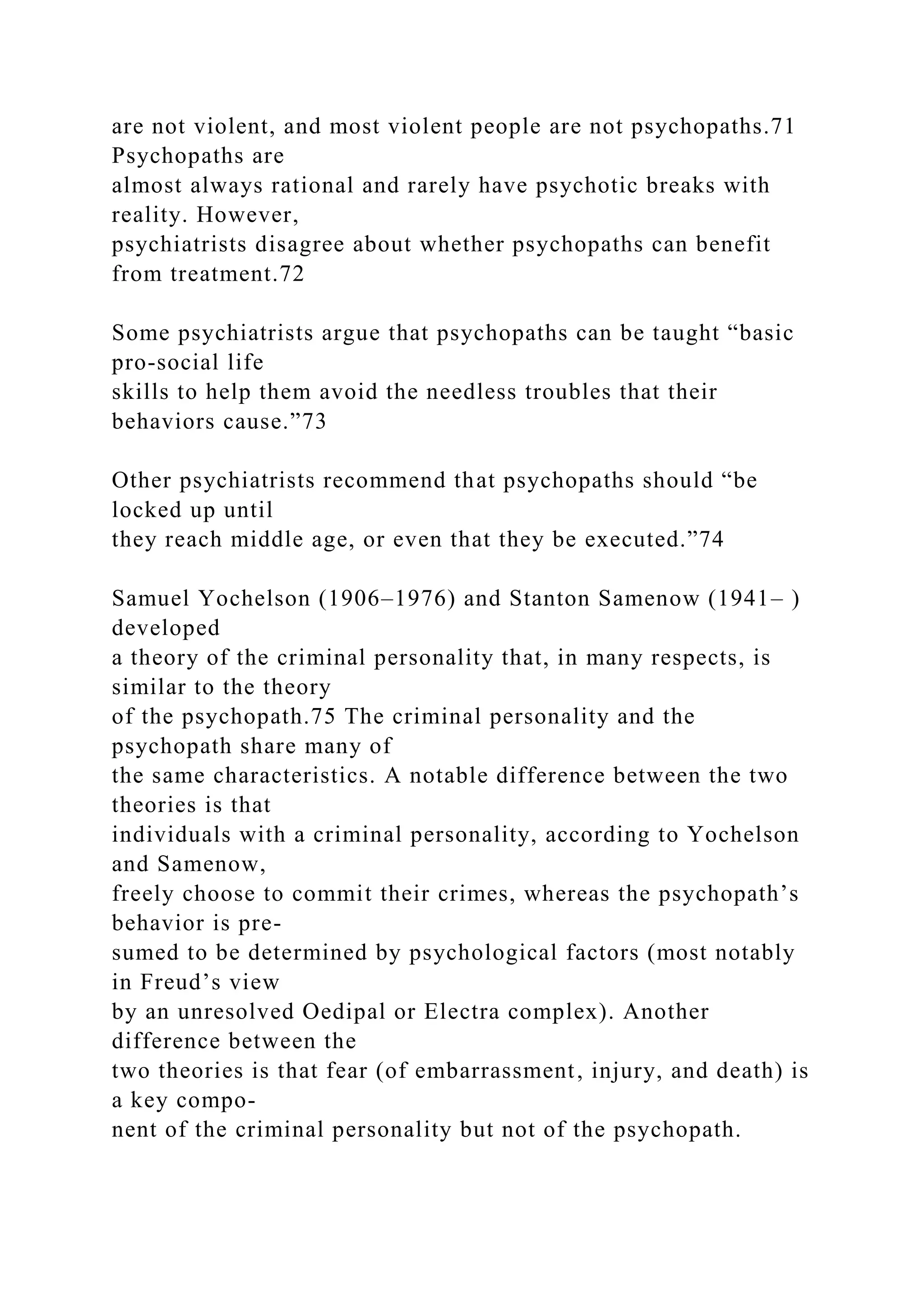
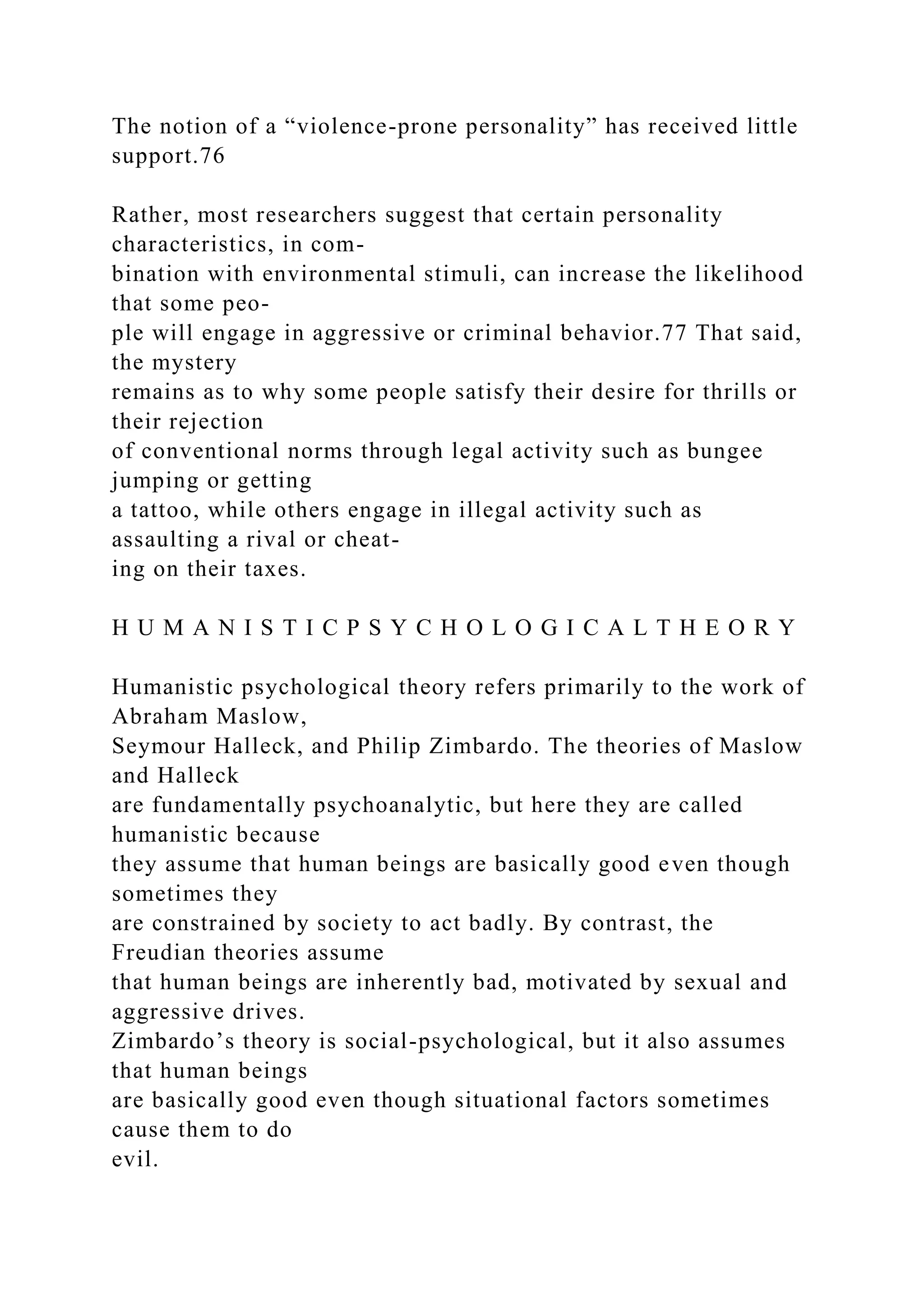
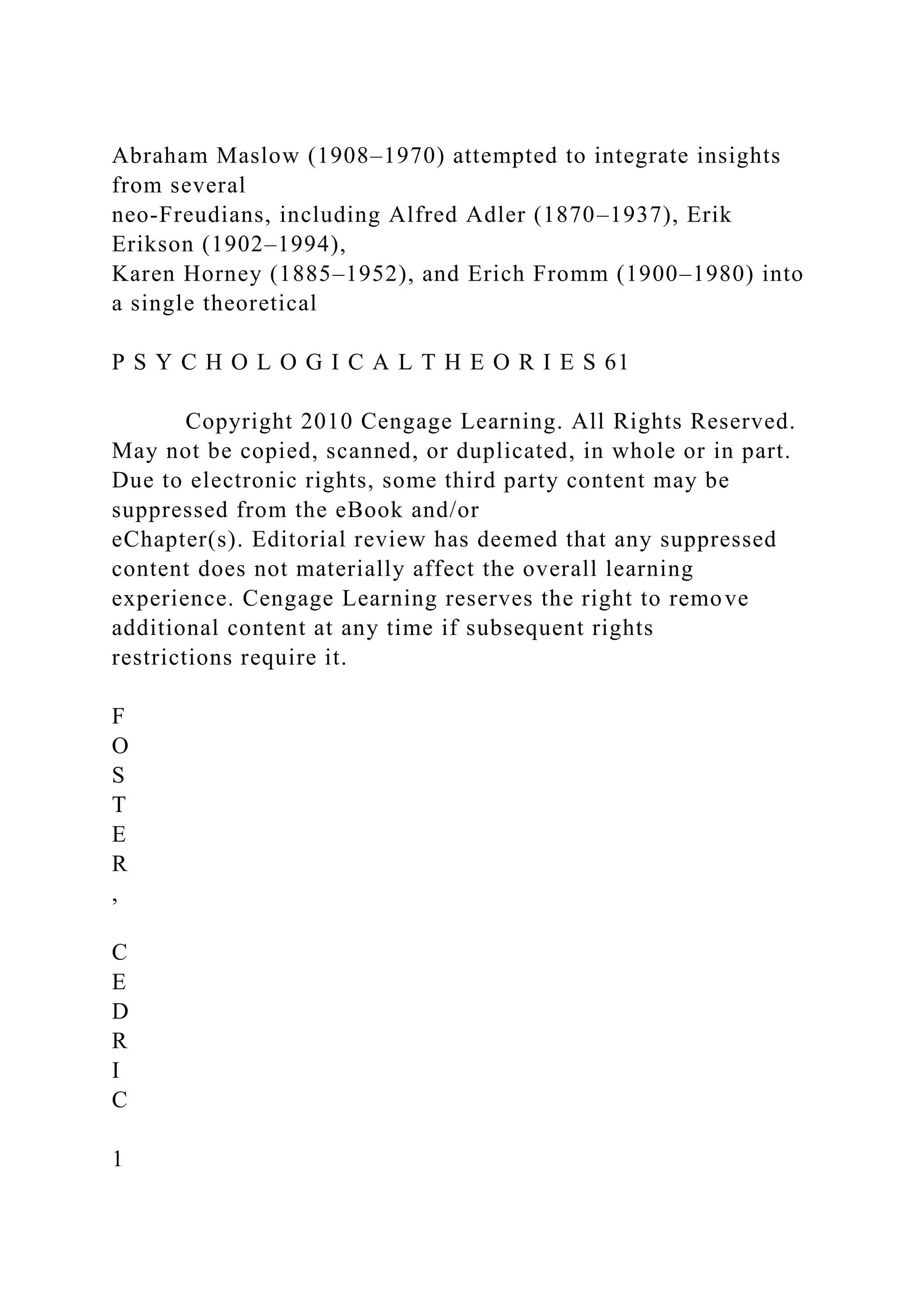
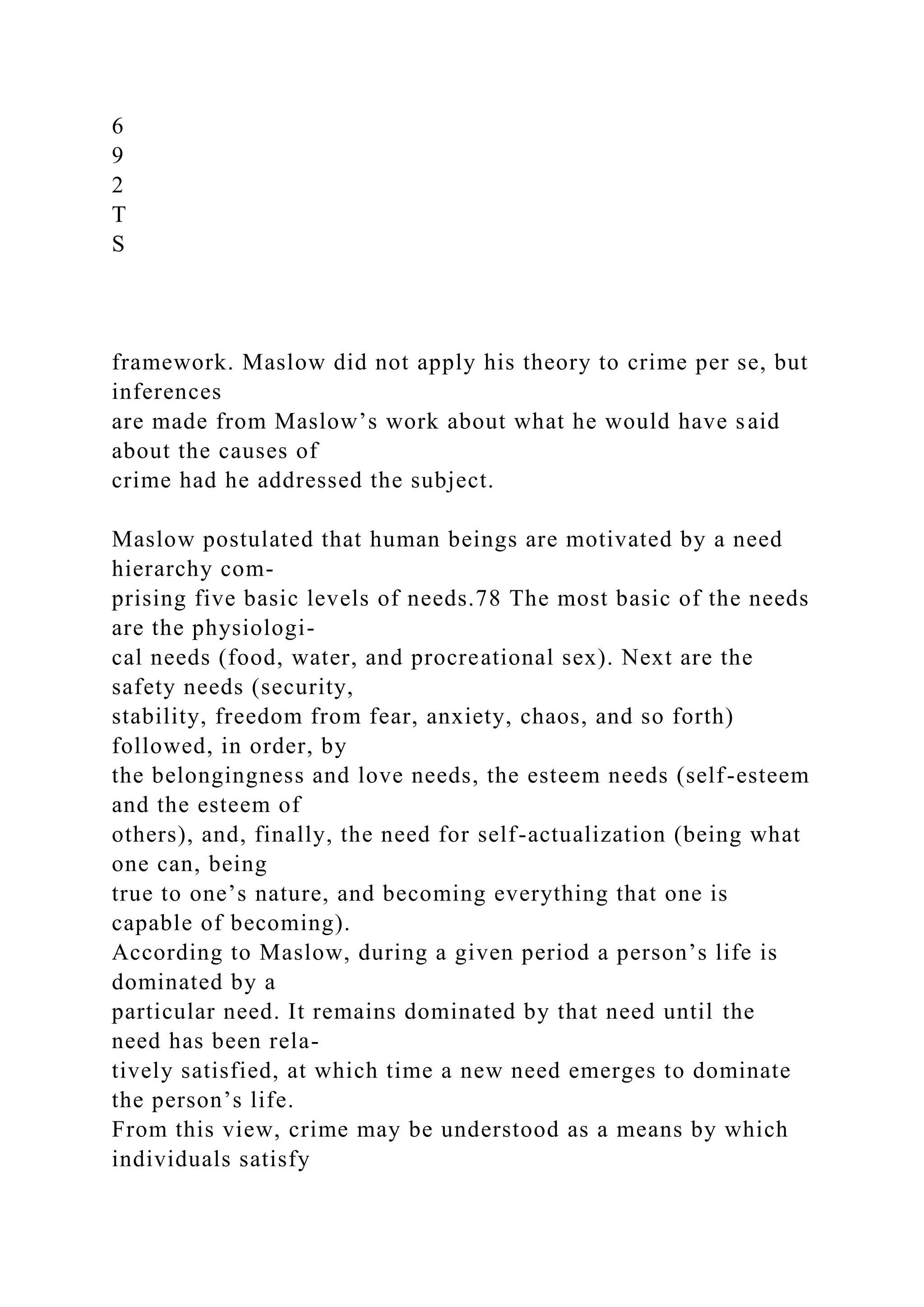
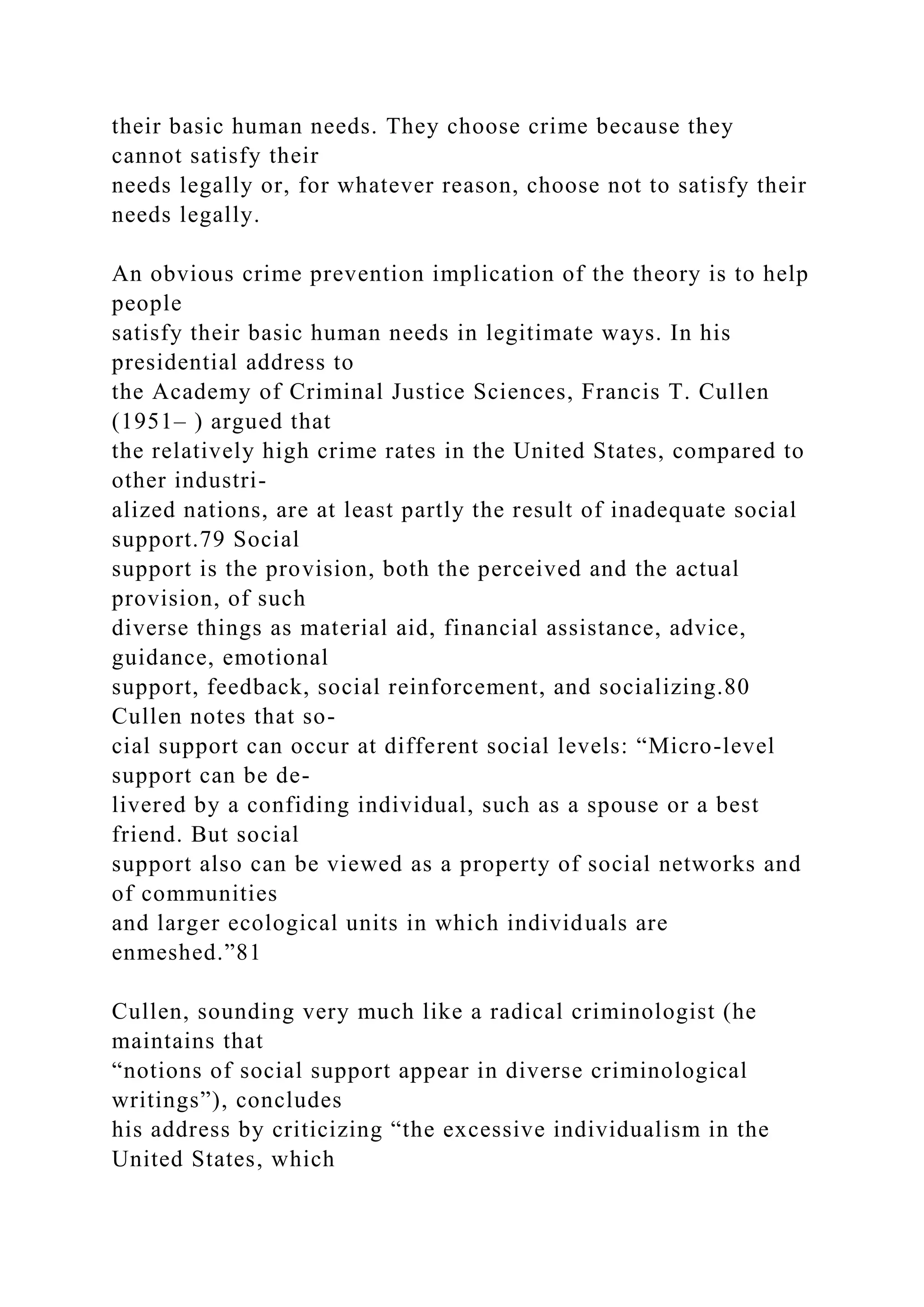
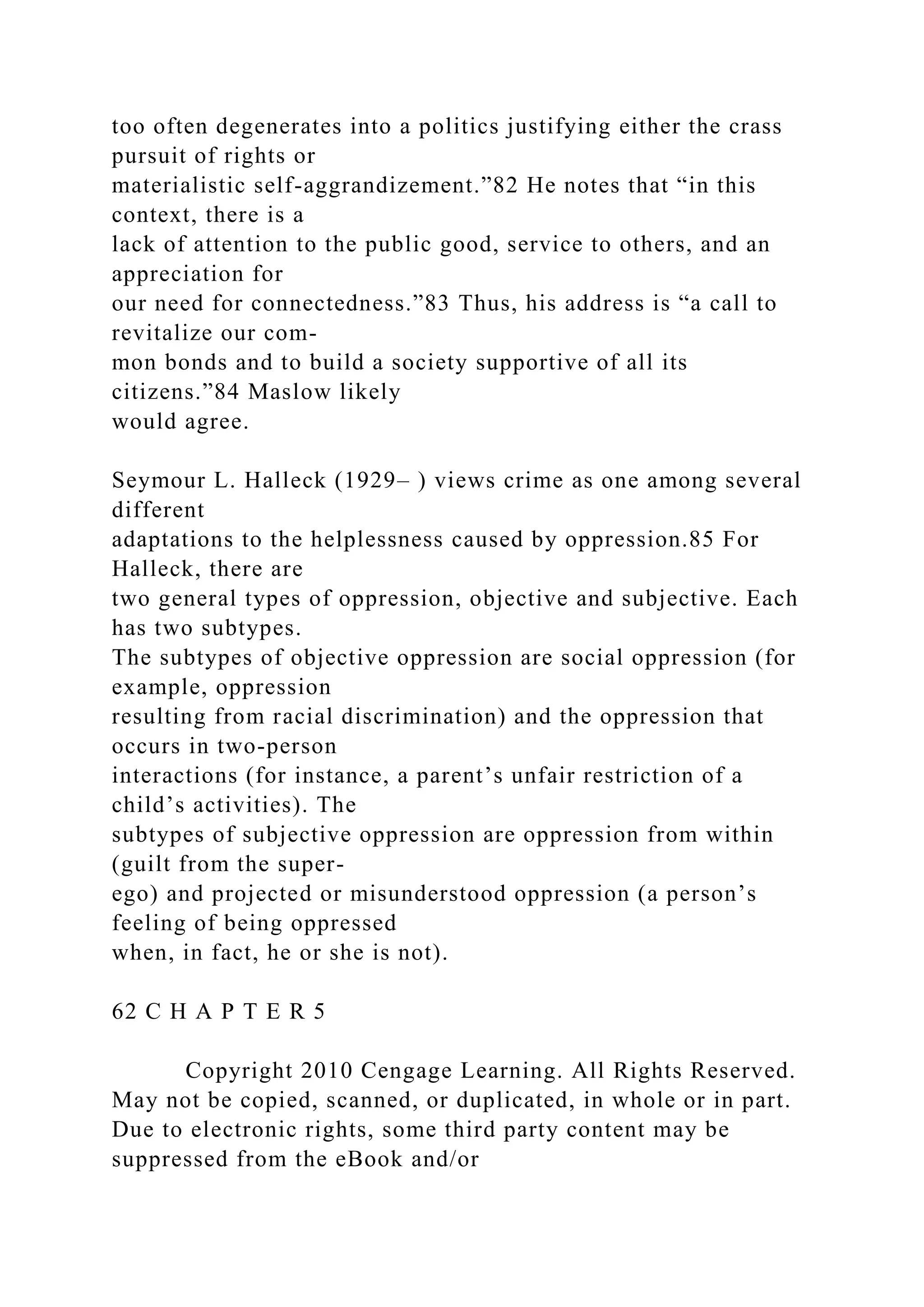


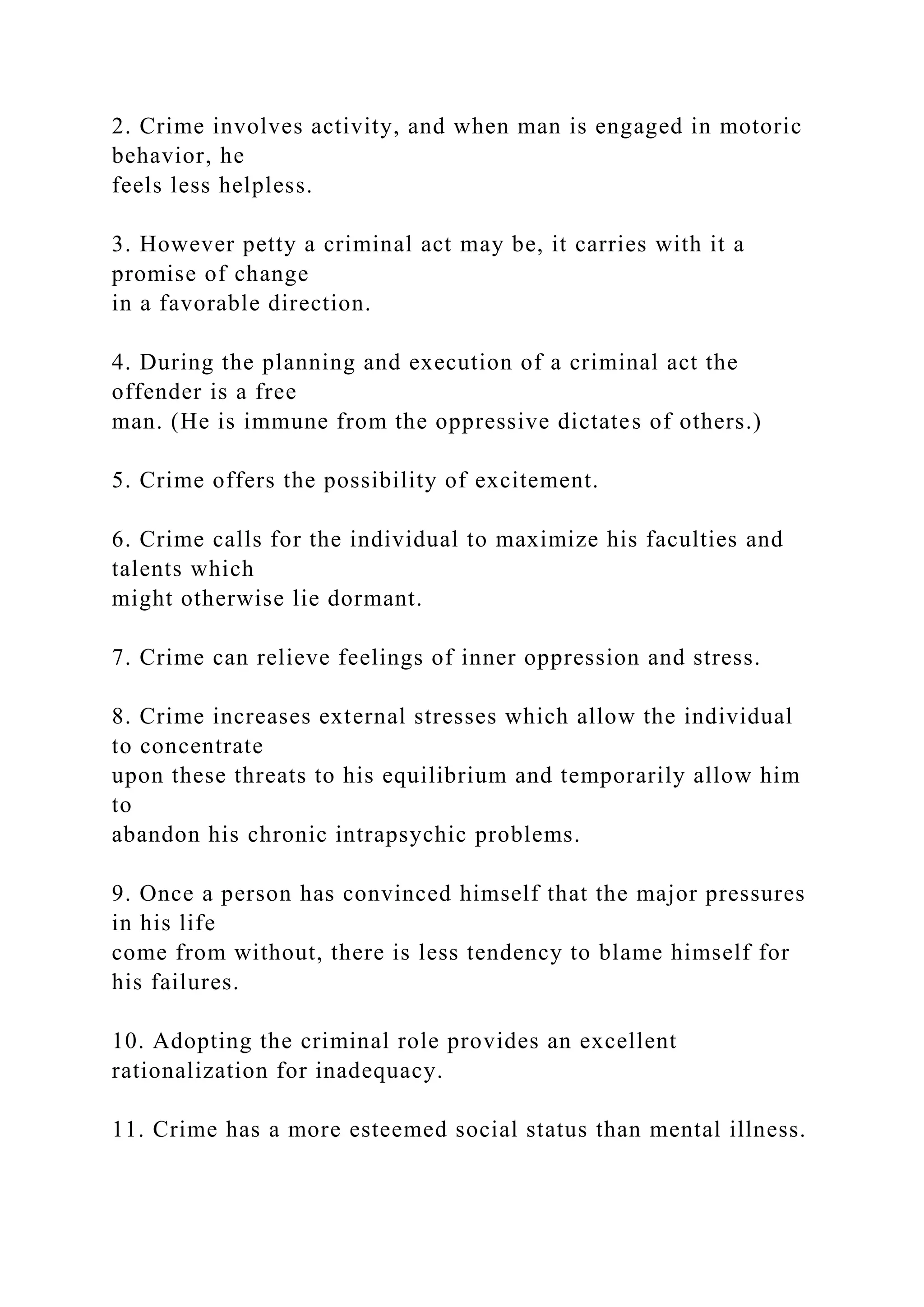
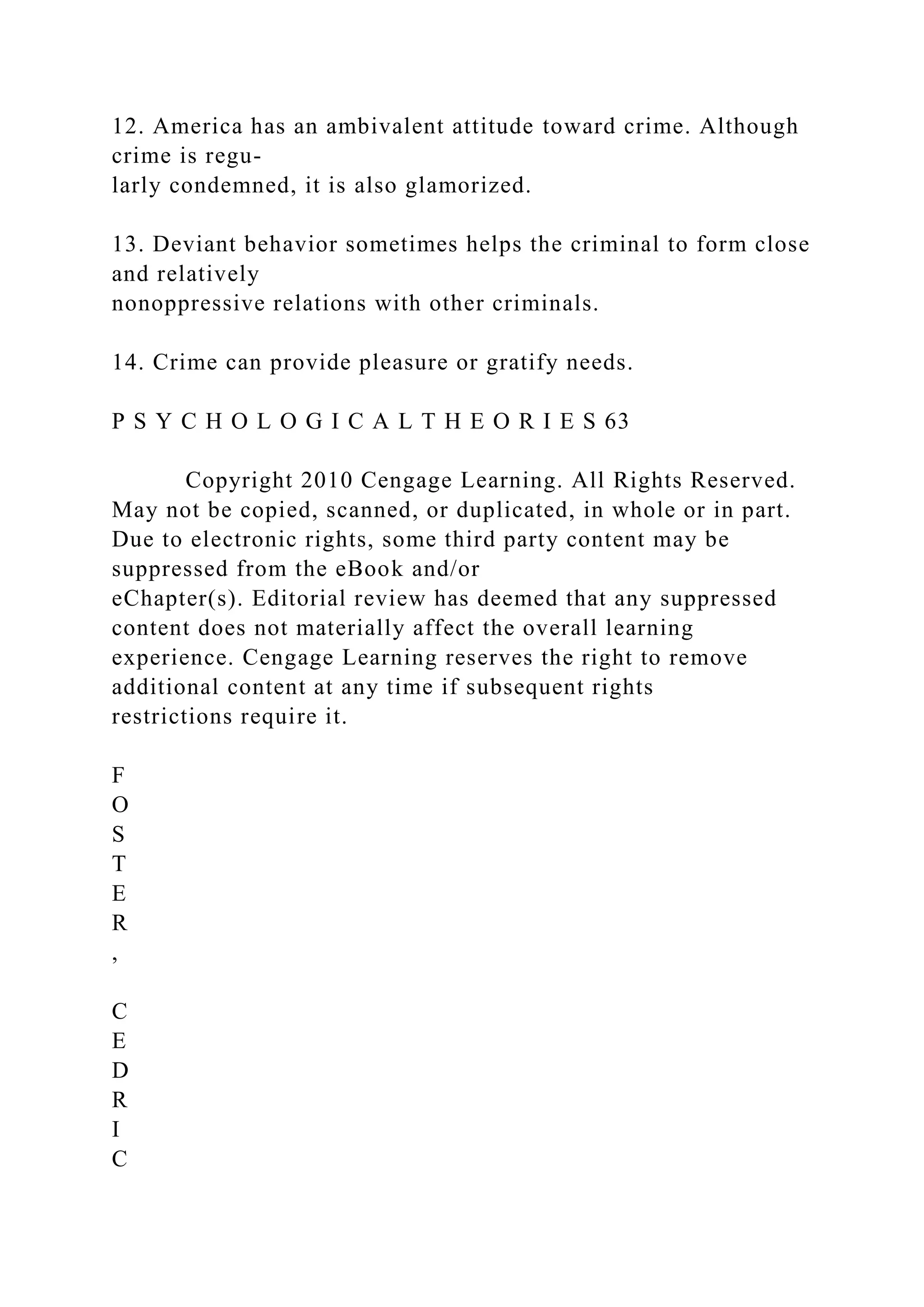
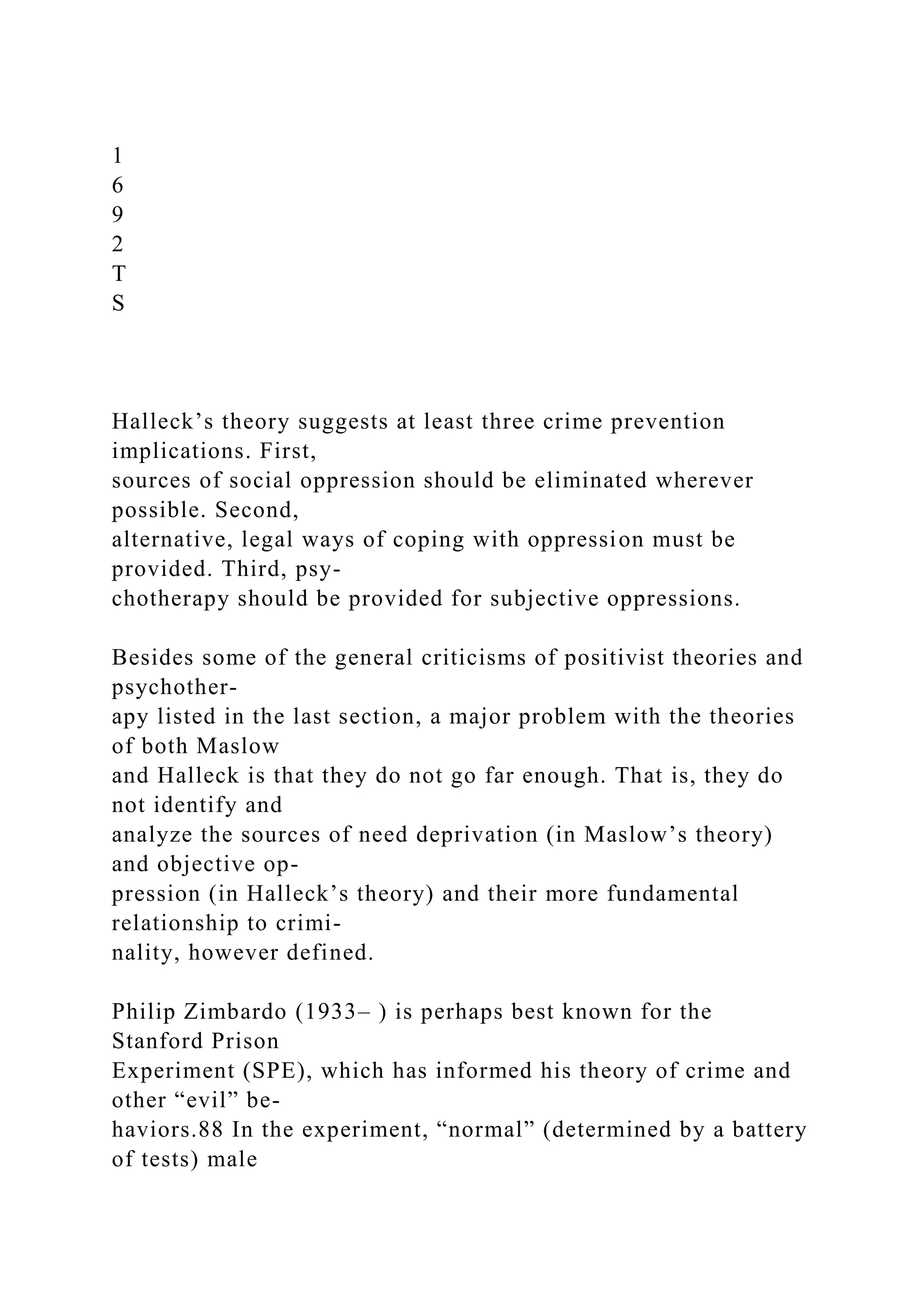
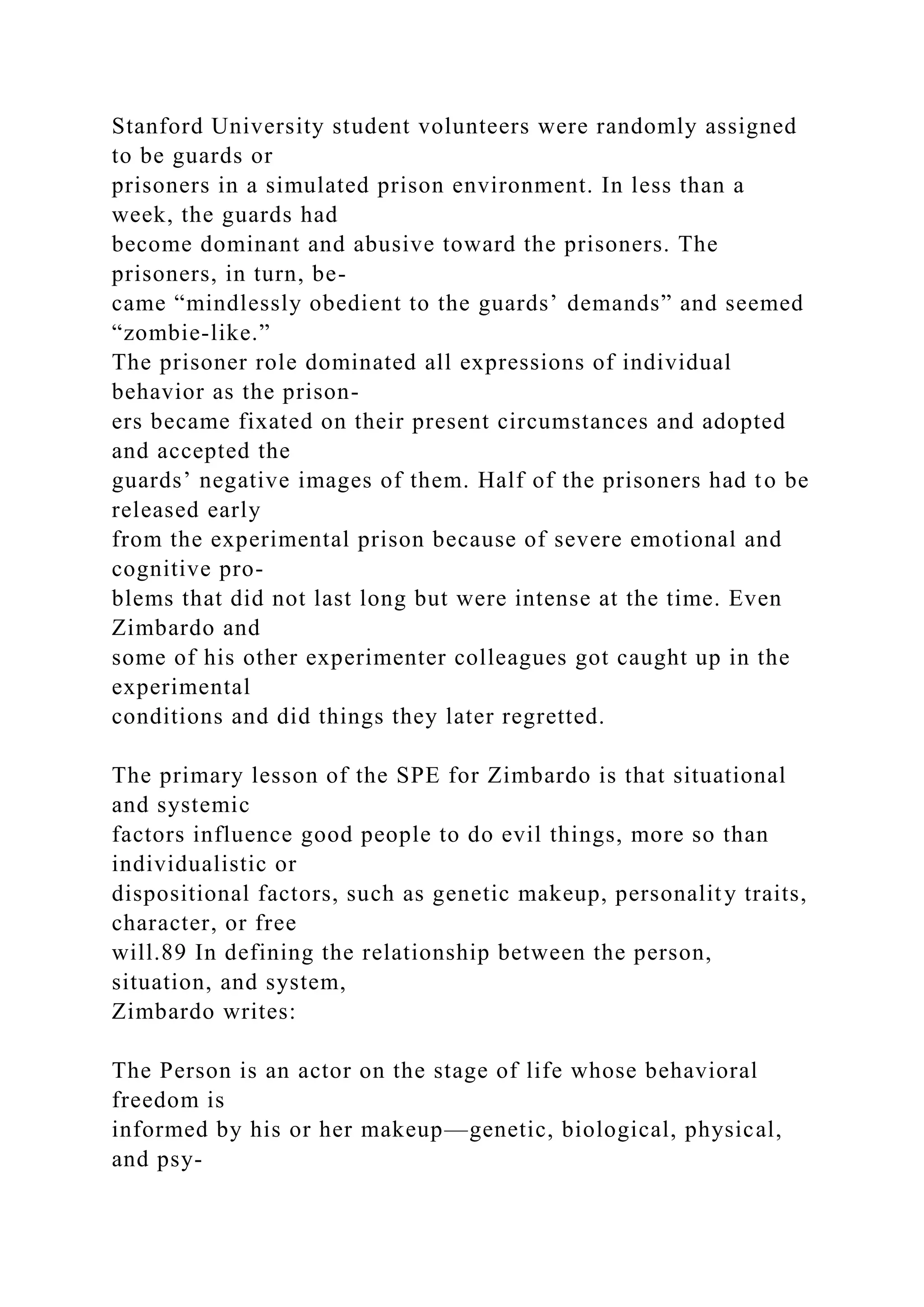

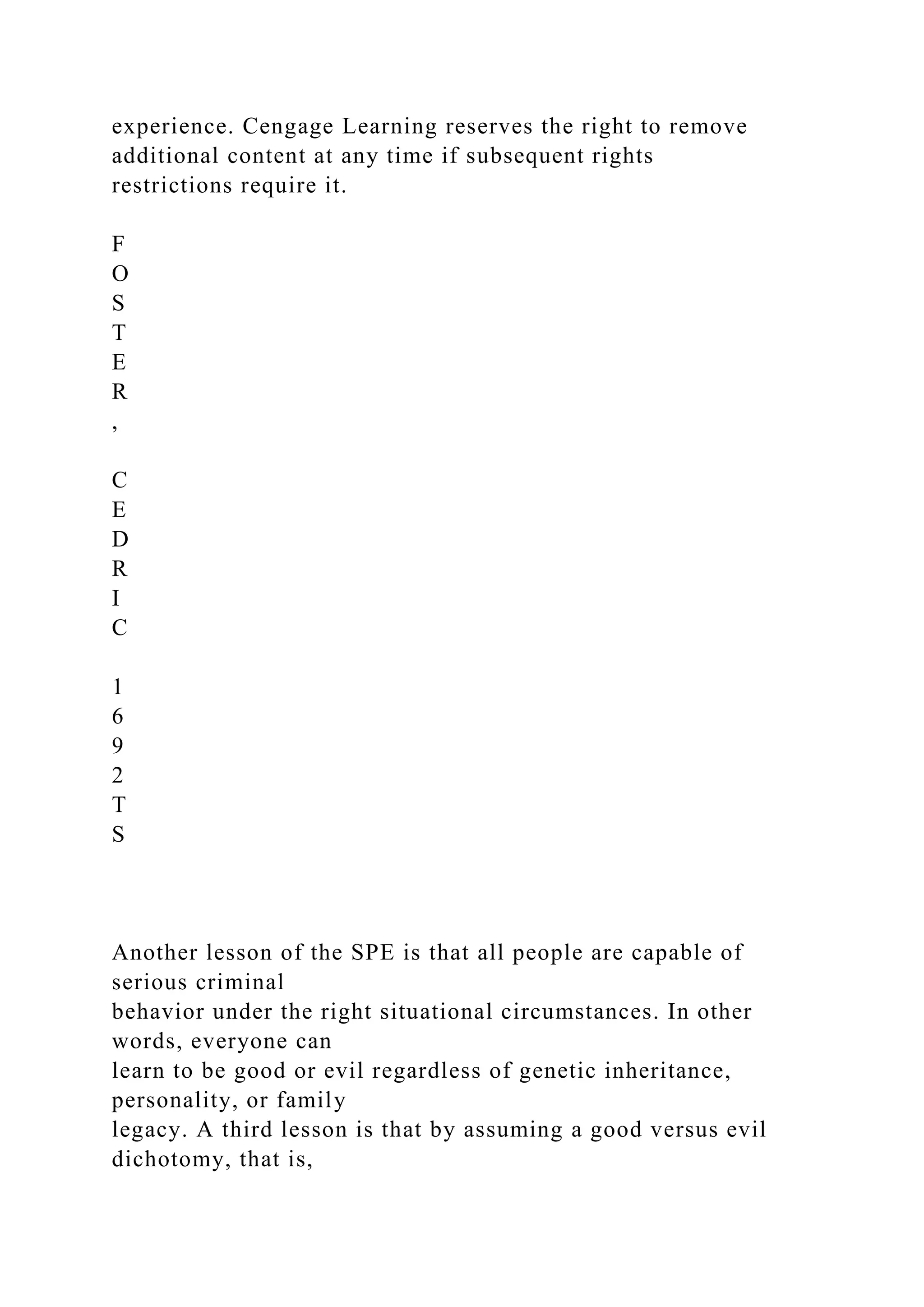
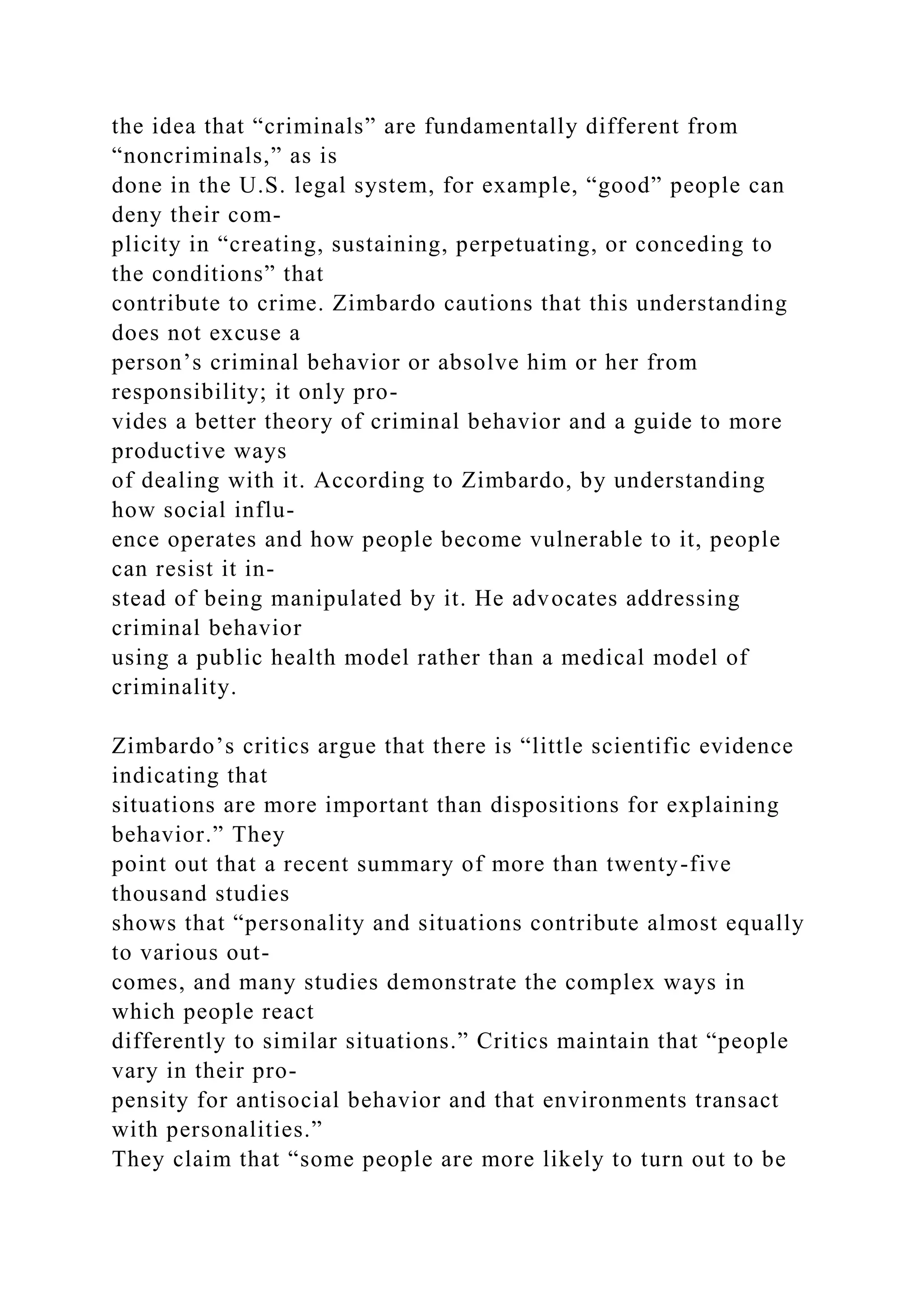

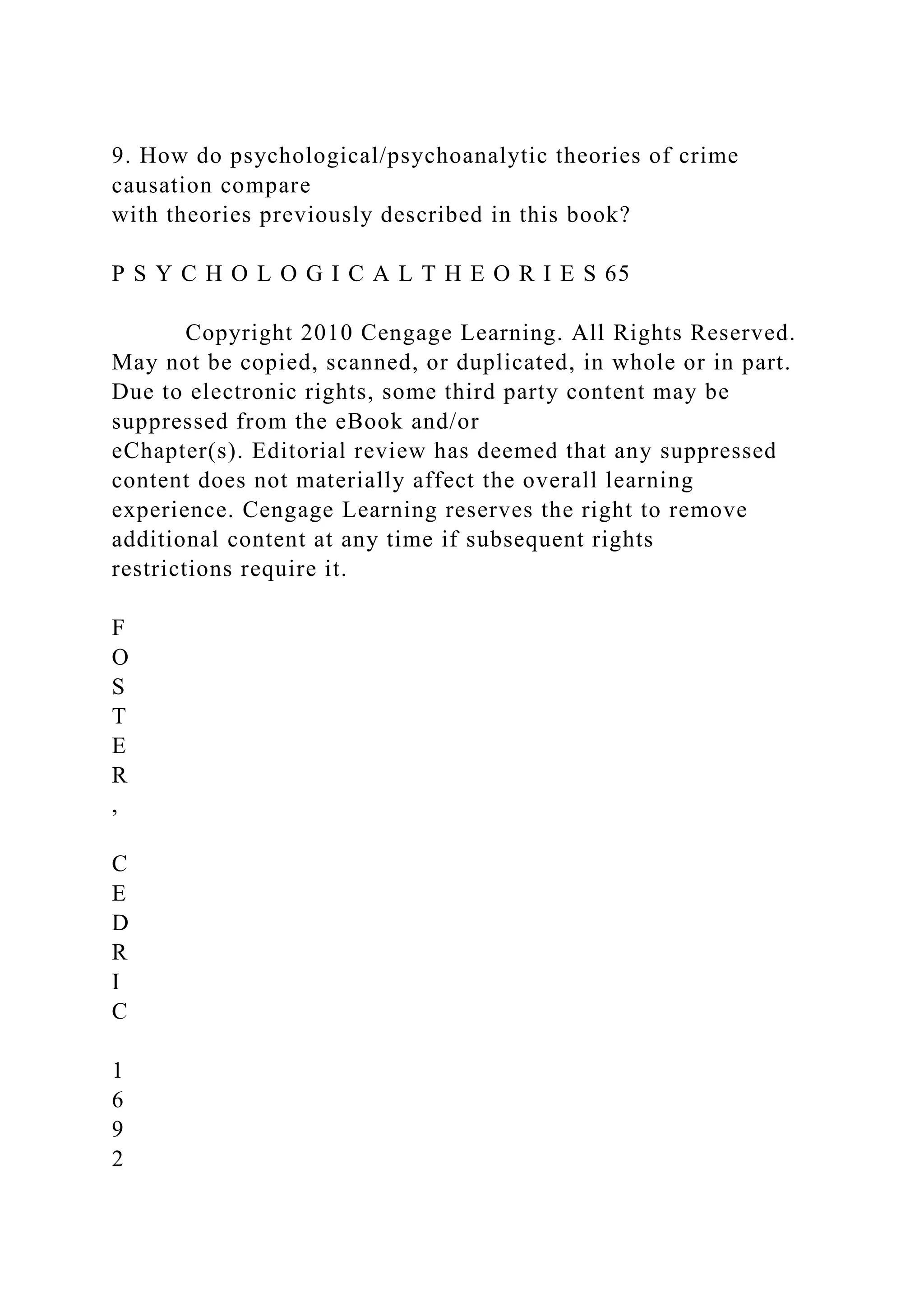
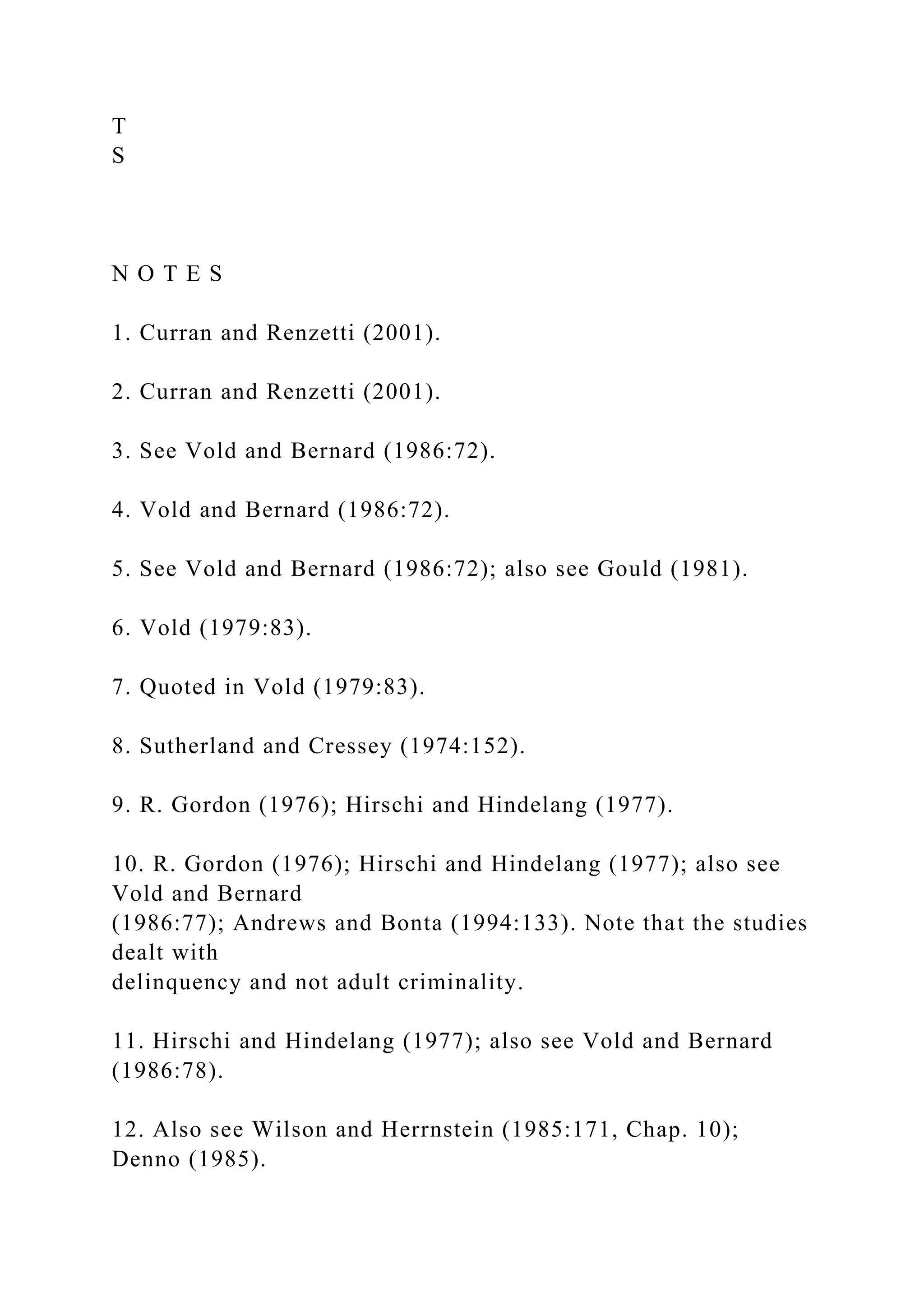
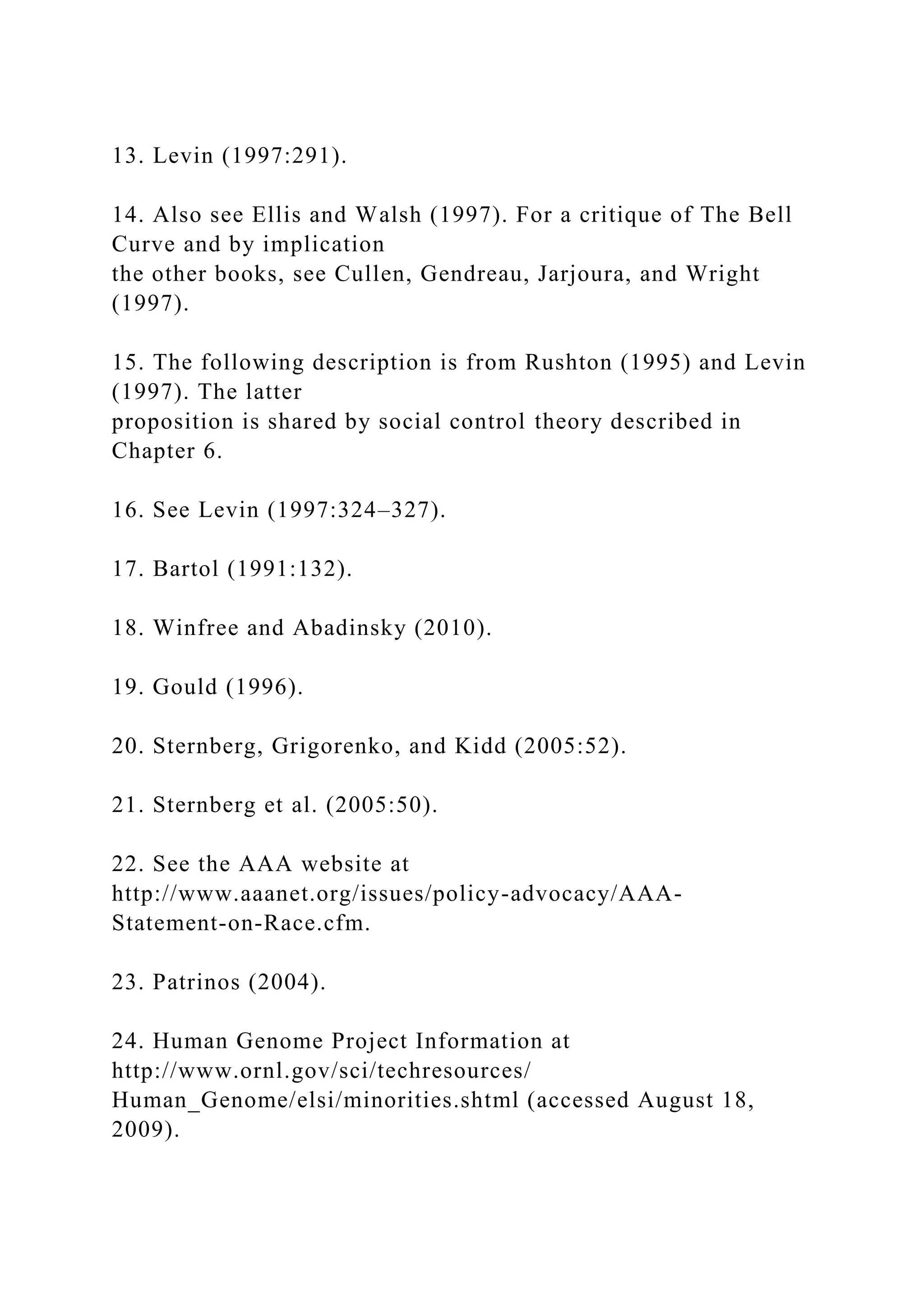


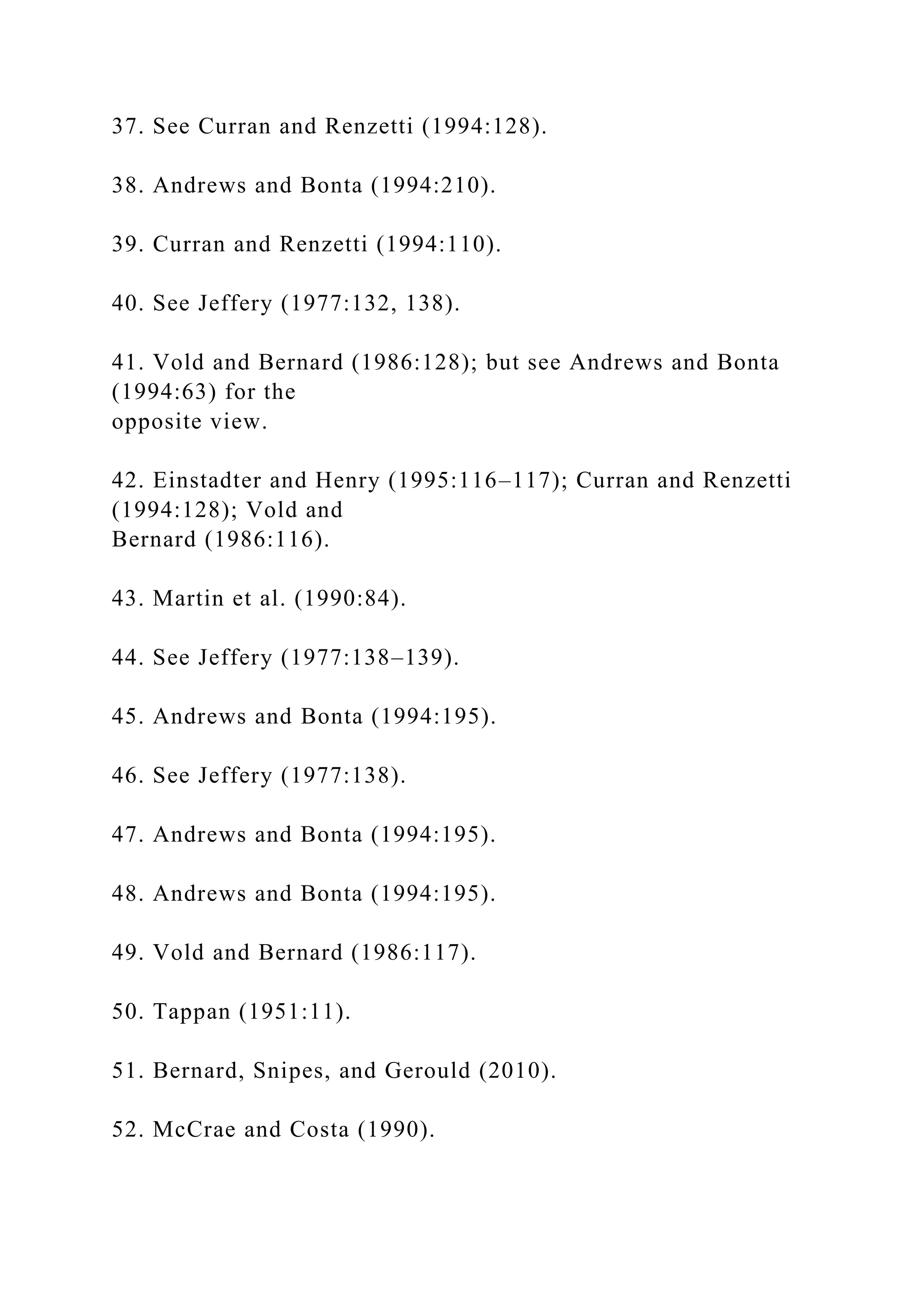
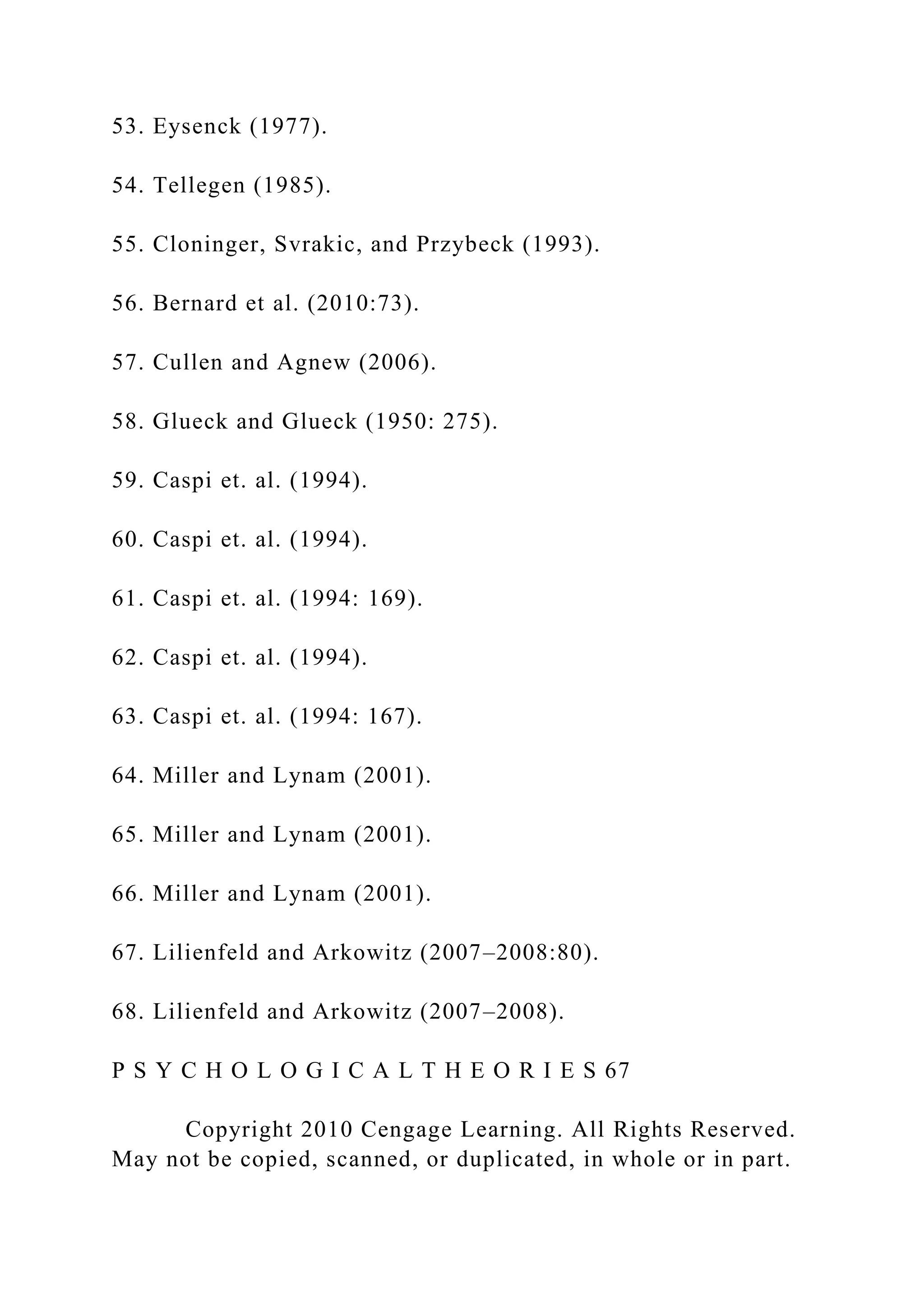
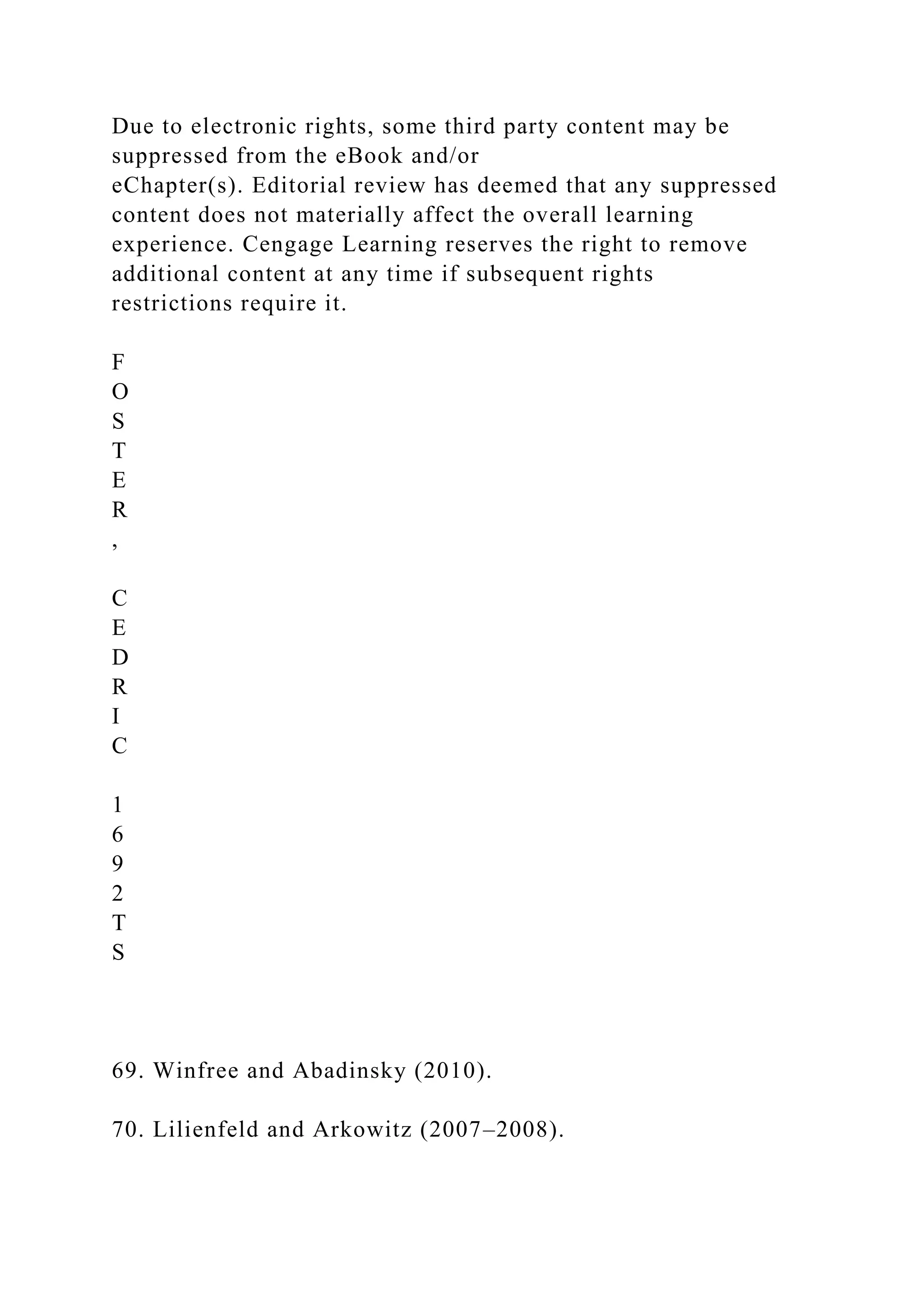
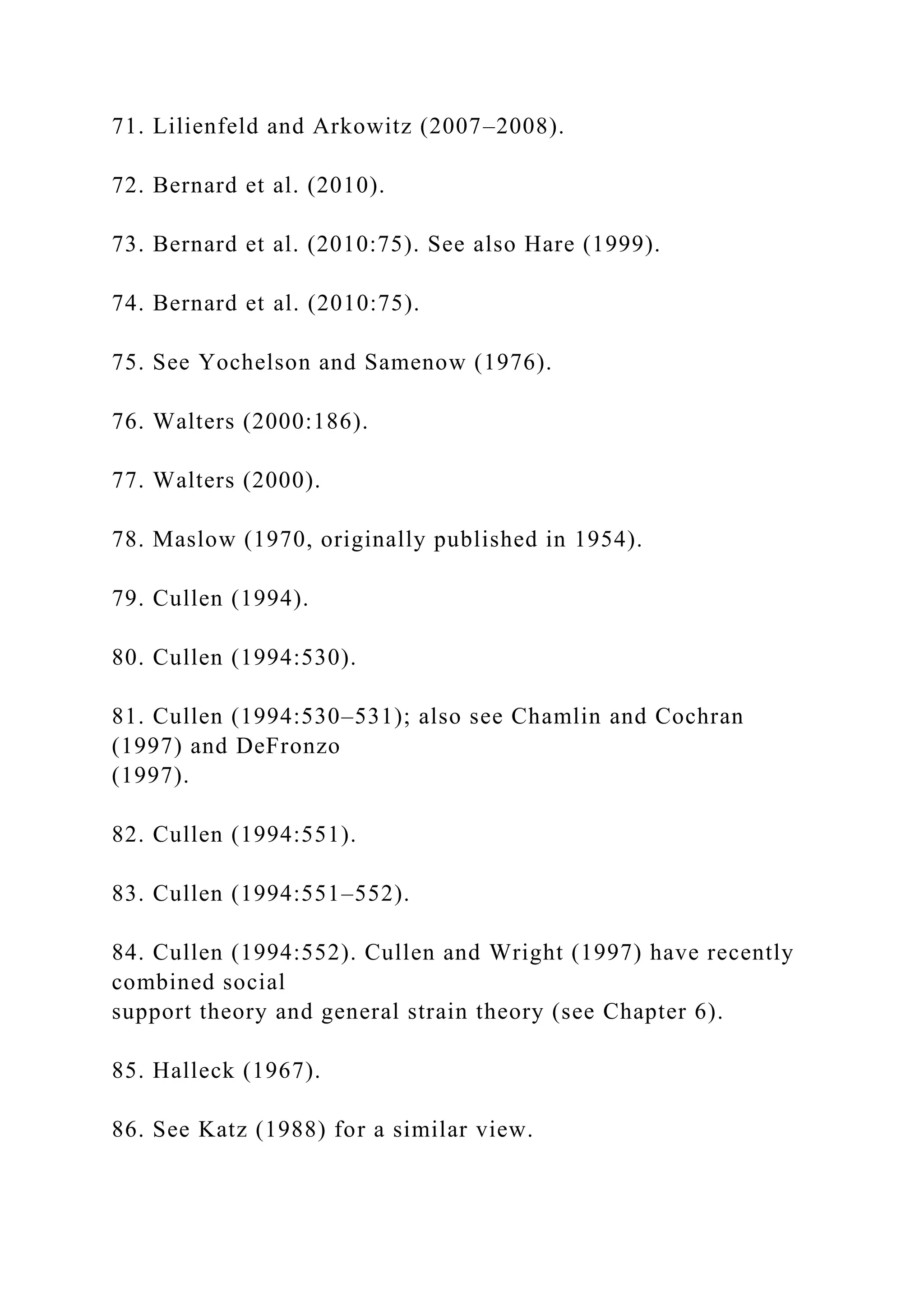
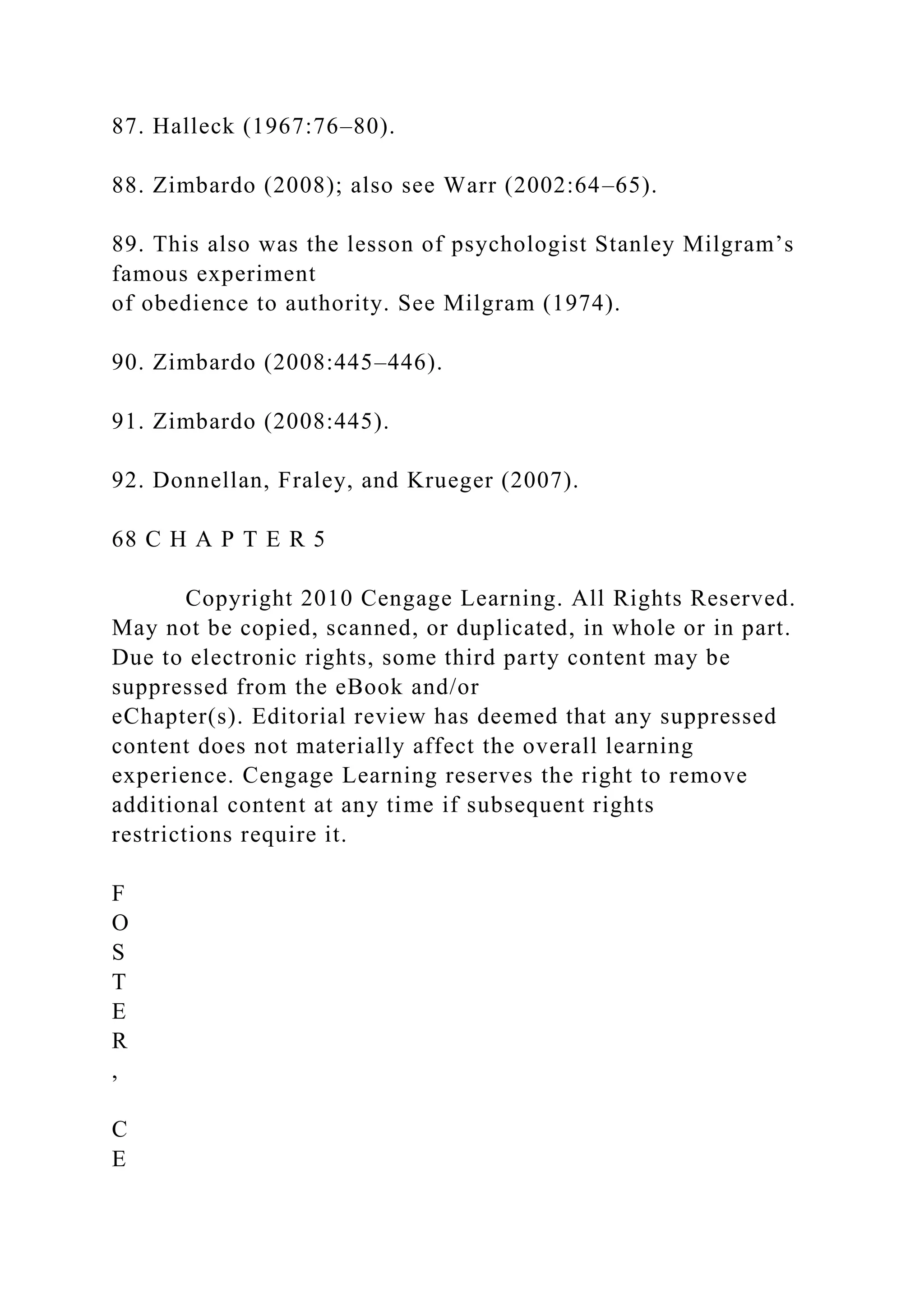
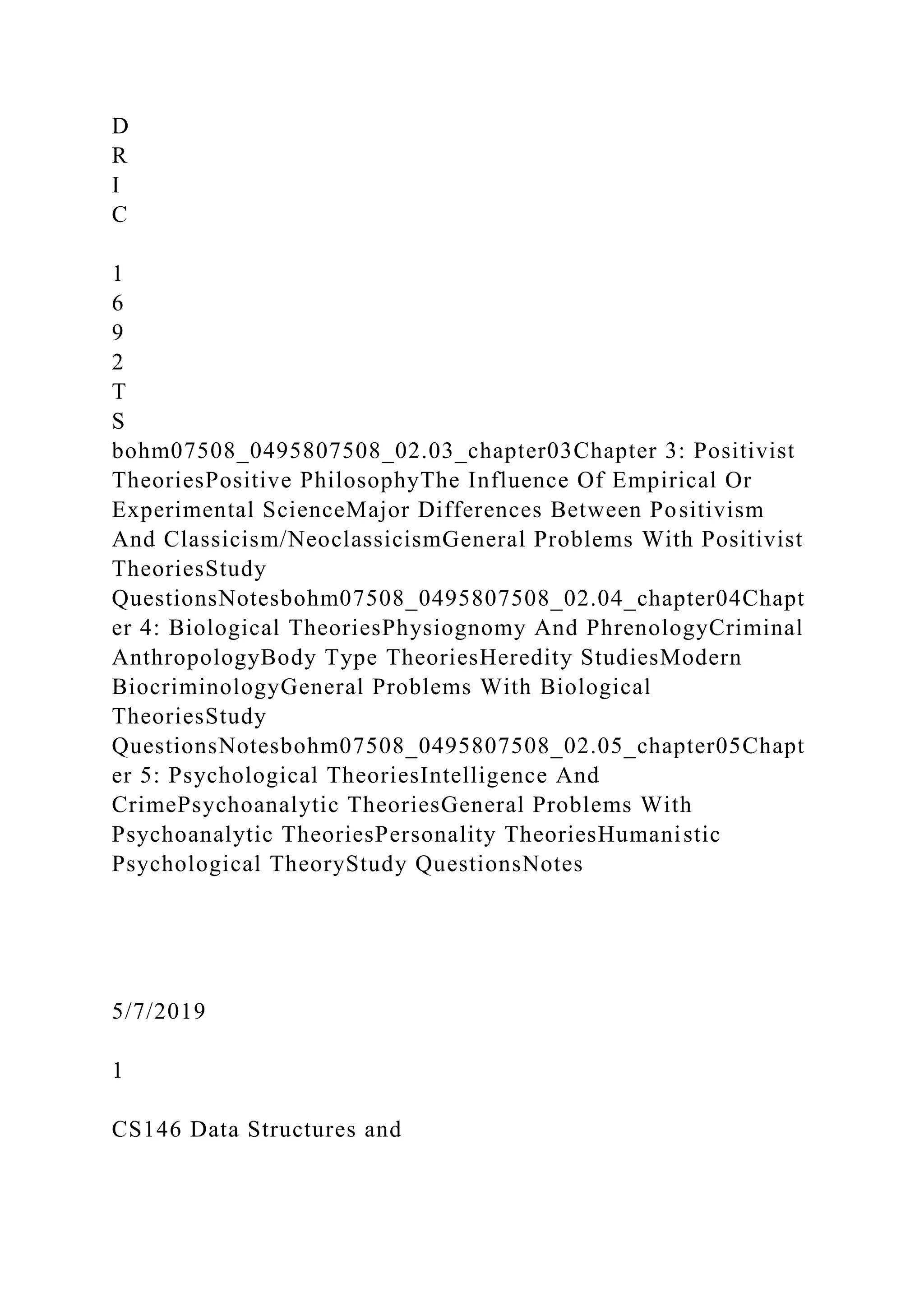
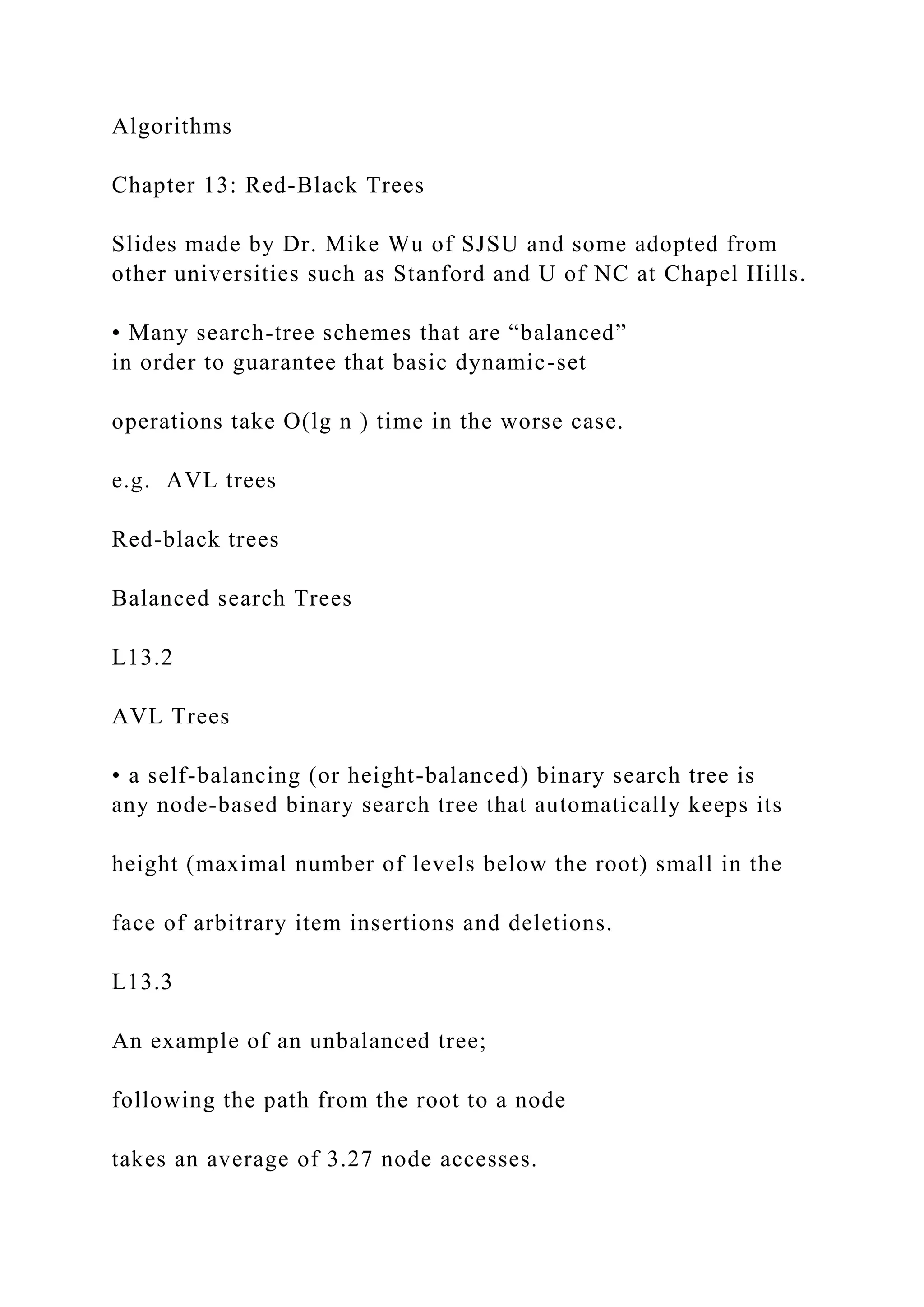







































































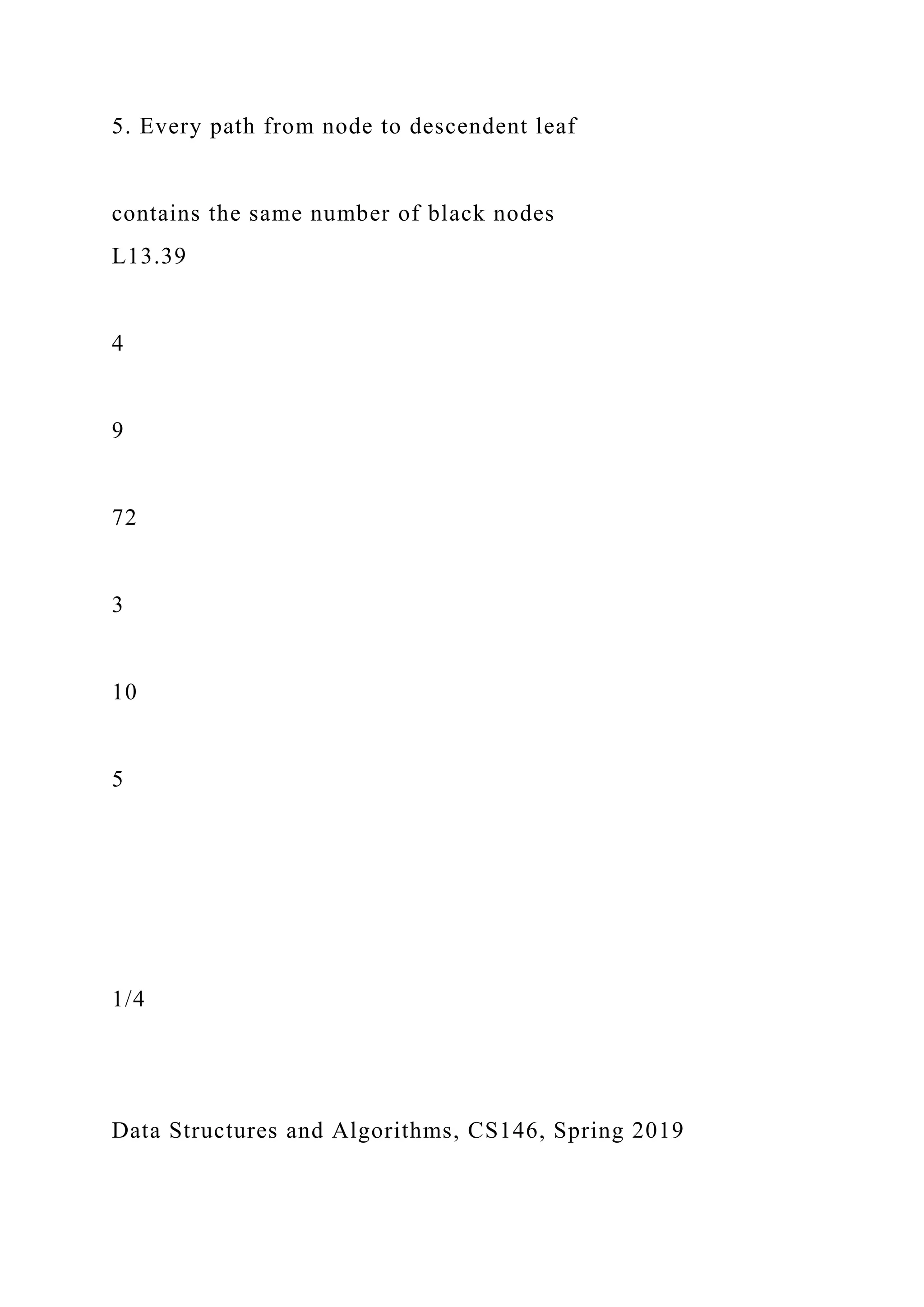









![accepted and 0 point will be
given. [No jar file or your code is not runnable (test it before
submission: java -jar
filename.jar): -20 points]
2. The deadline to submit/upload your zip file to Canvas is
before 11:59pm on Tuesday,
5/21/2019. After deadline, the submission link will be closed.
4/4
Warning: DO NOT wait until the last minute to upload your
files to Canvas. It has been
happening all the time that it took forever to upload files to
Canvas during the last
hour/minute. No excuse for late submission.
Grading Criteria](https://image.slidesharecdn.com/5220191cs146datastructuresandalgorithmsc-221201210134-446698d9/75/5220191CS146-Data-Structures-and-AlgorithmsC-docx-281-2048.jpg)
